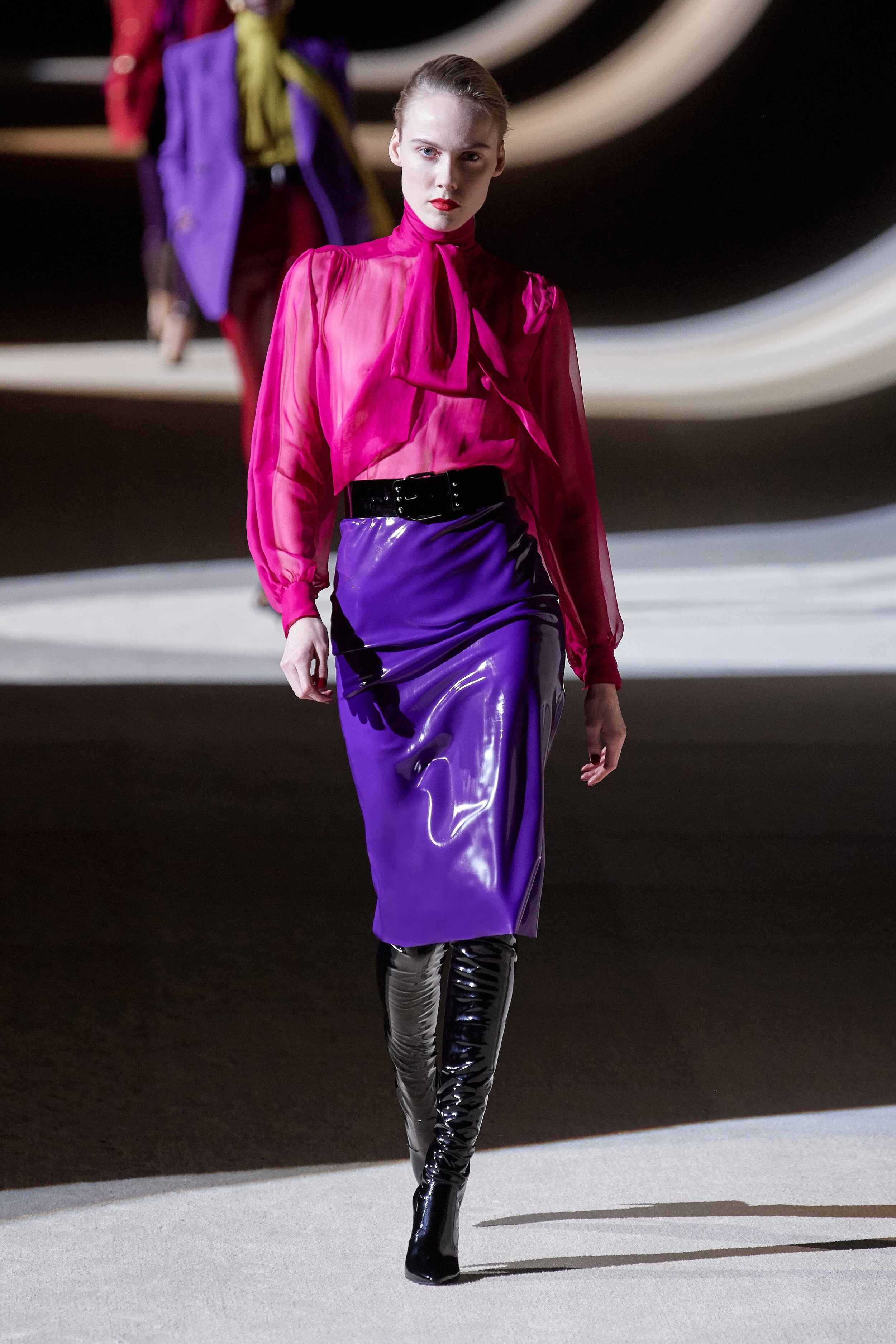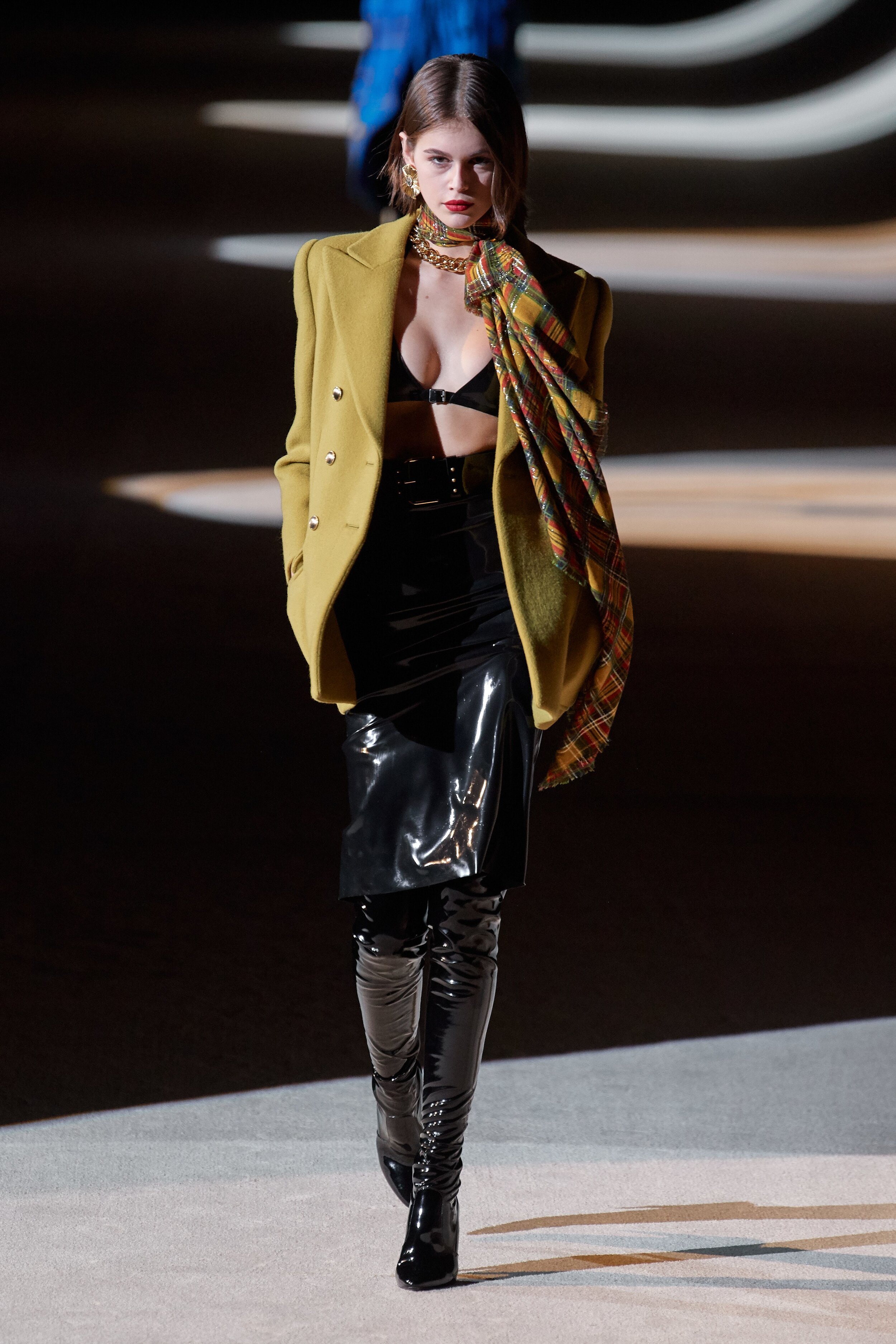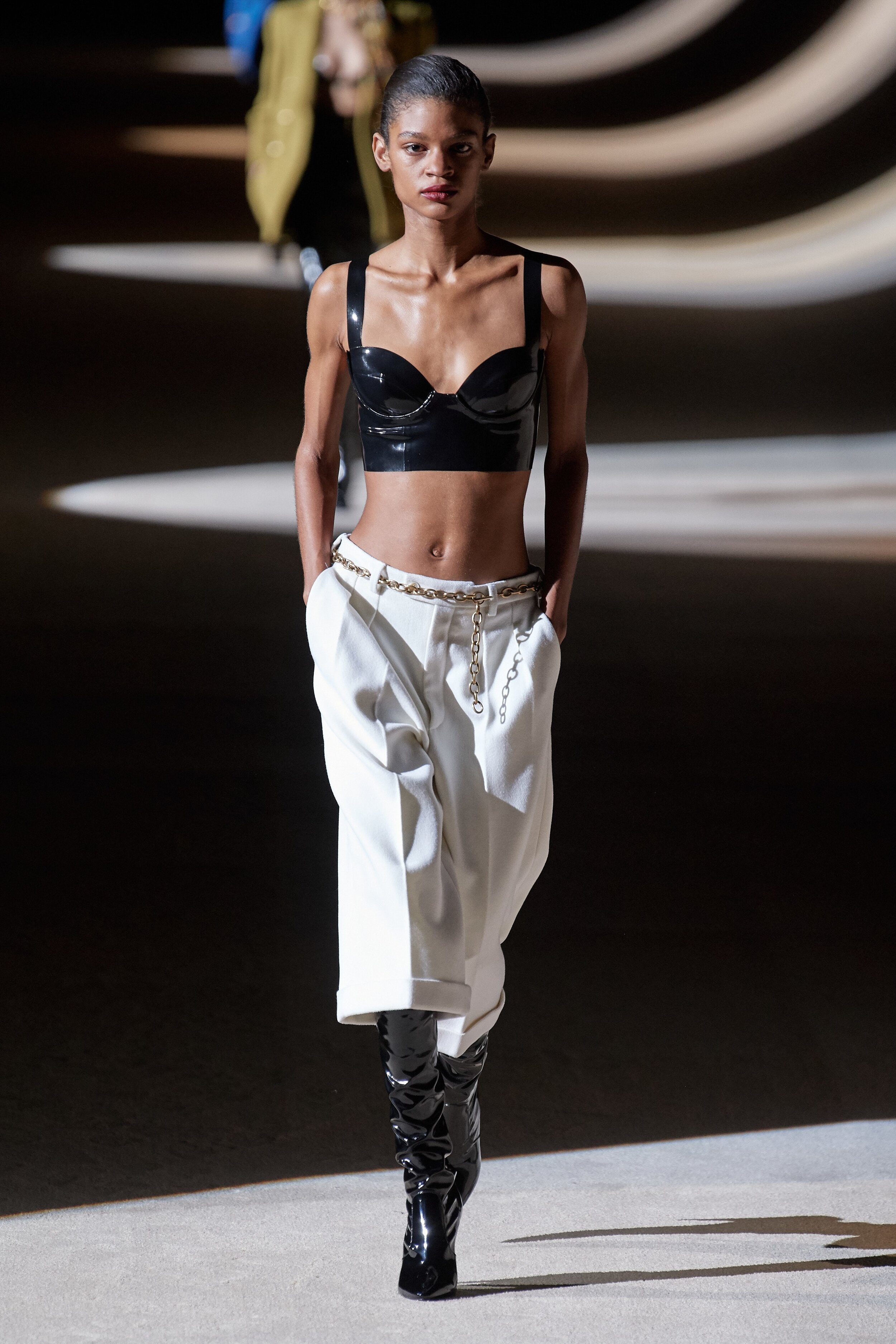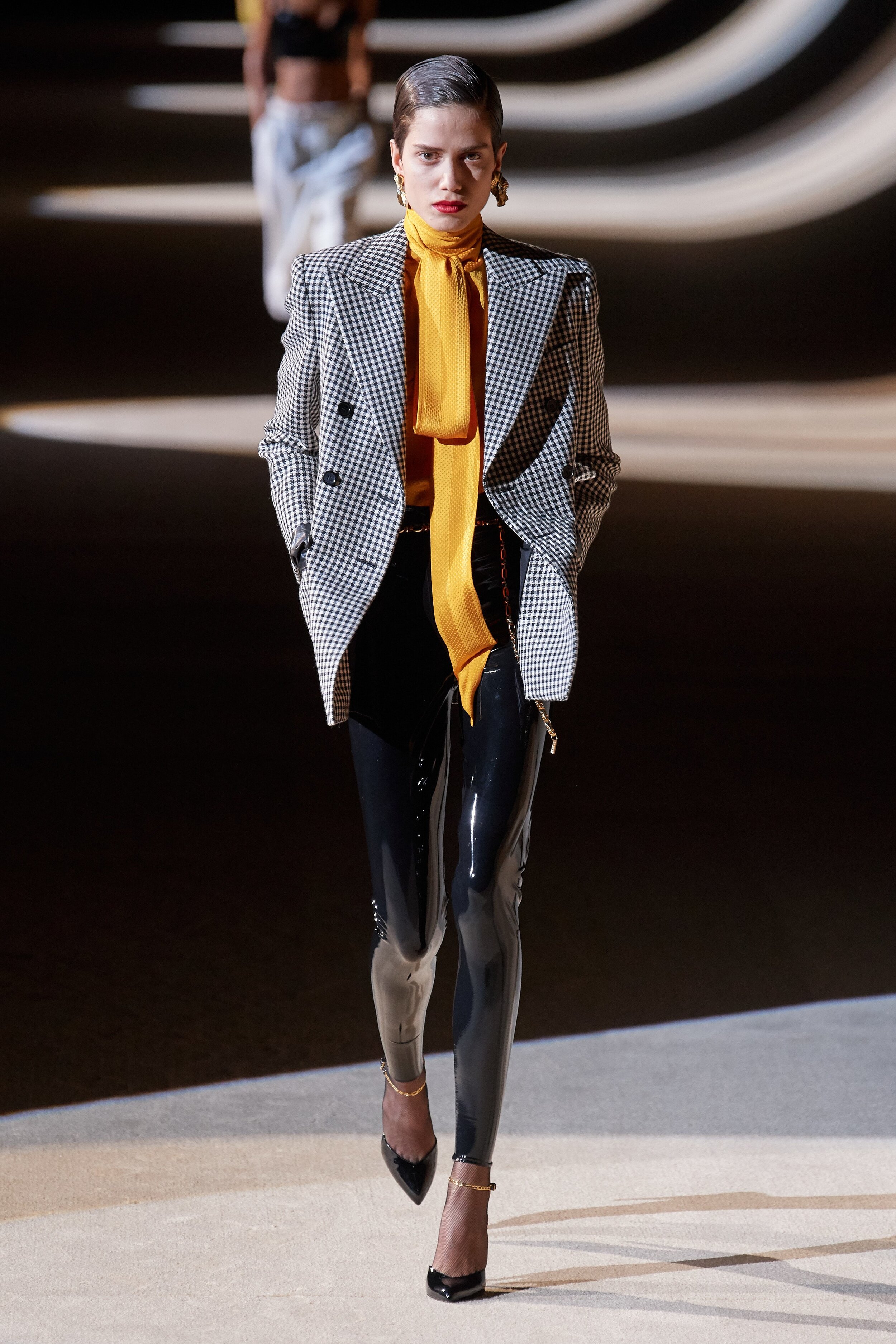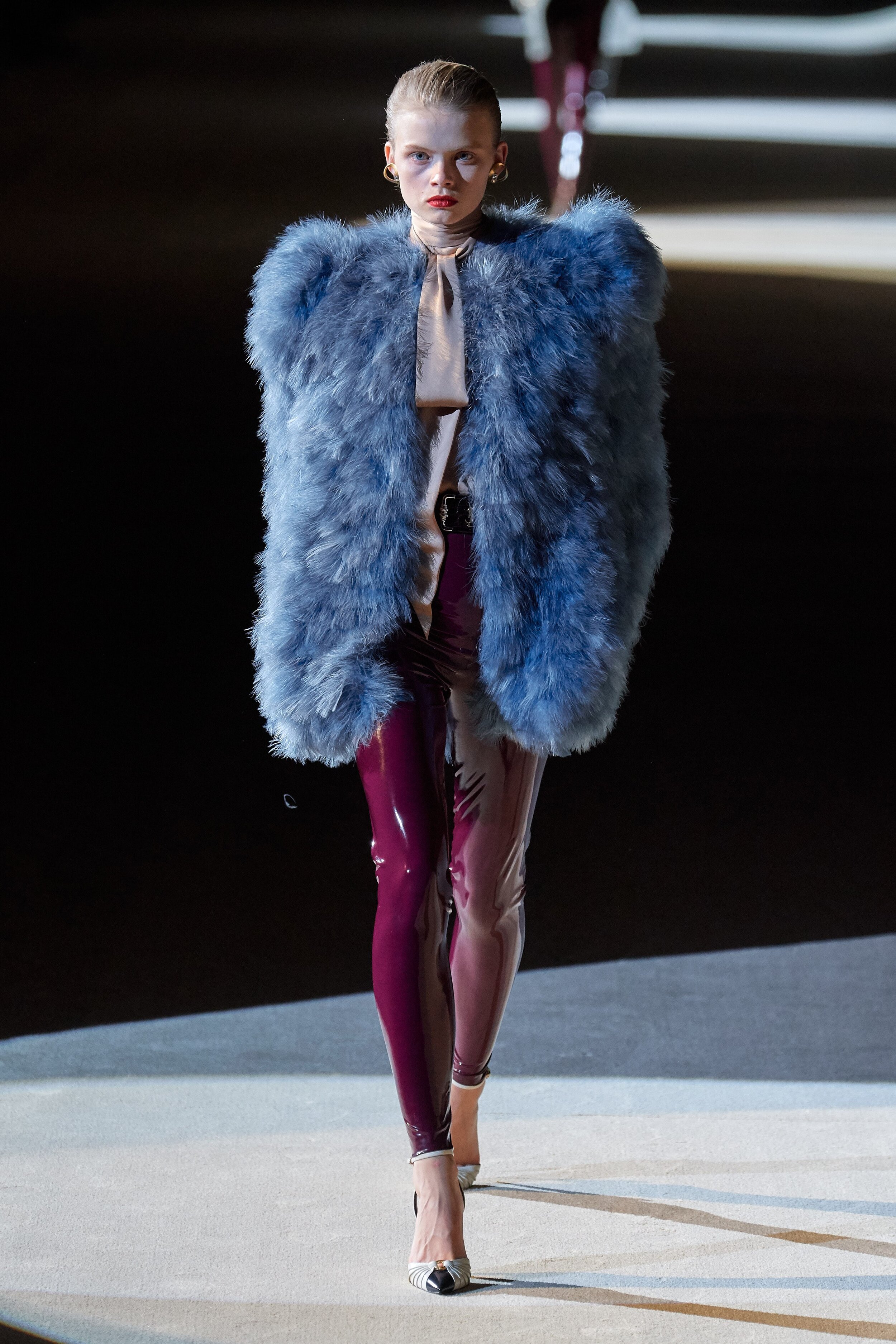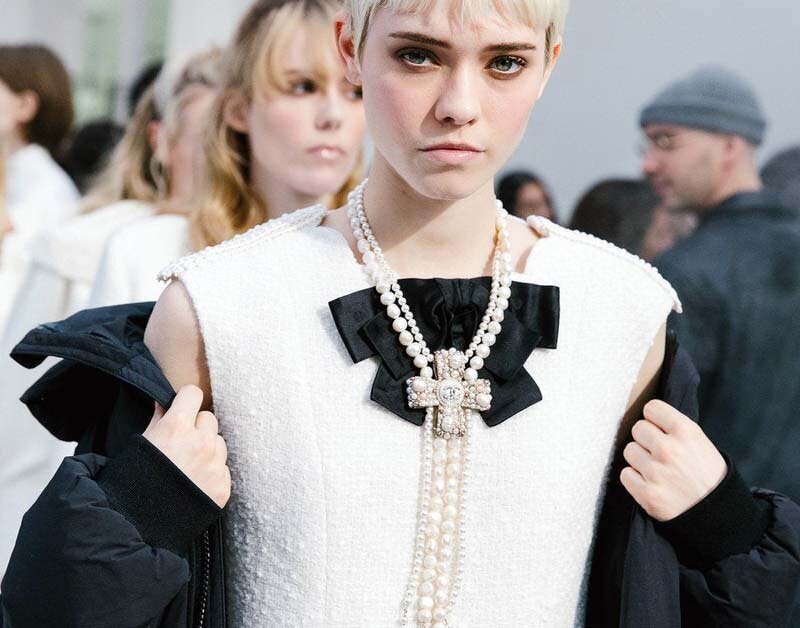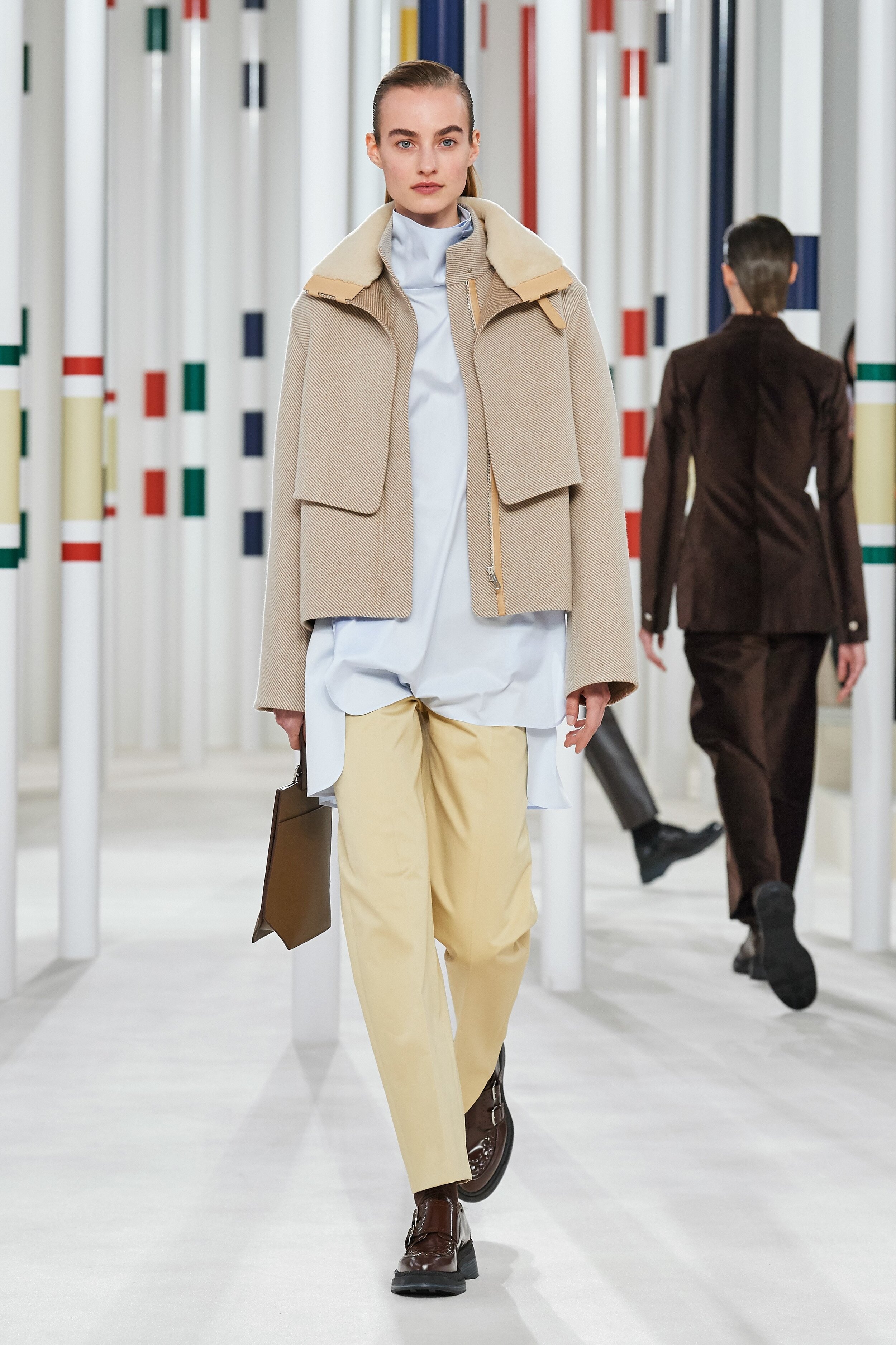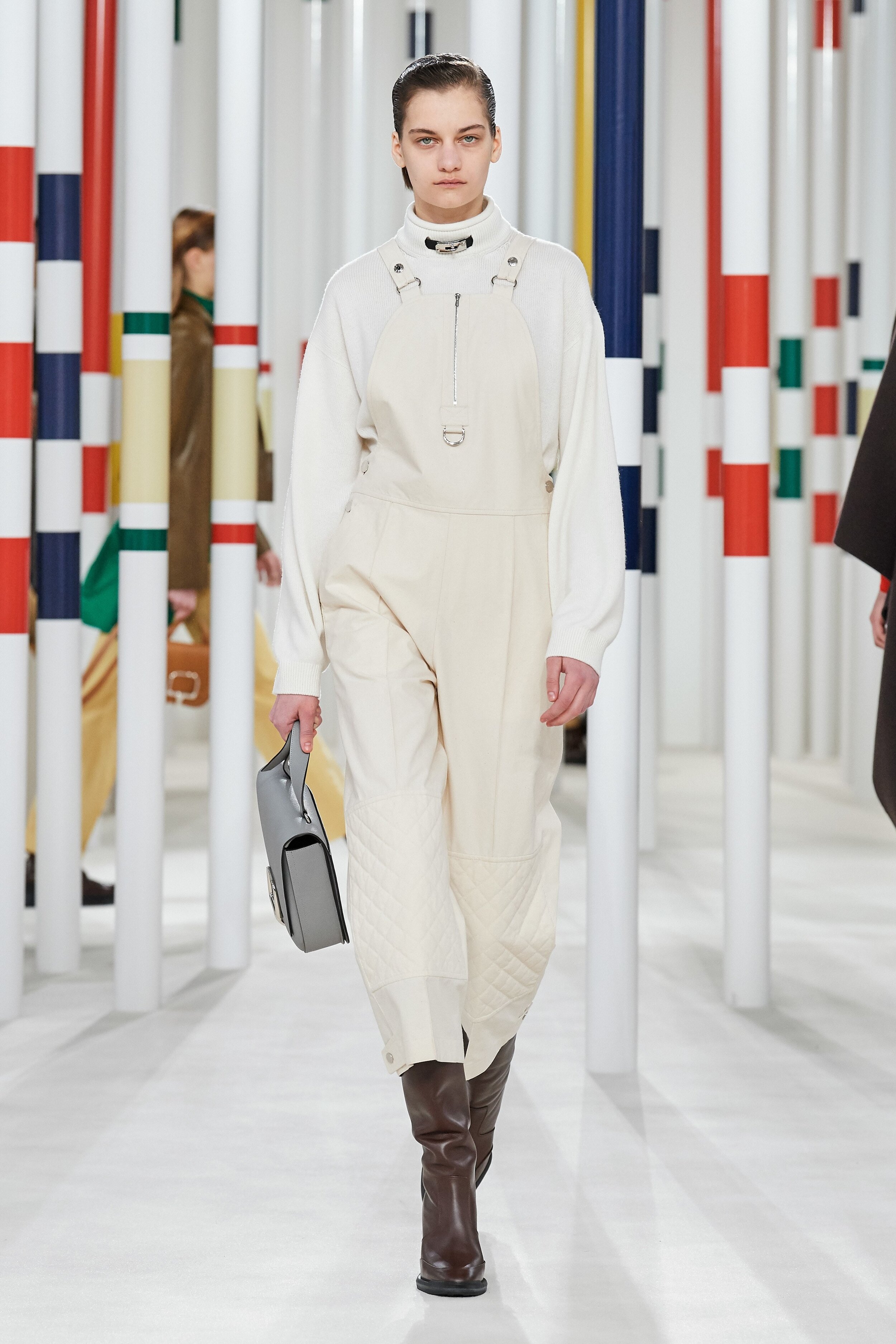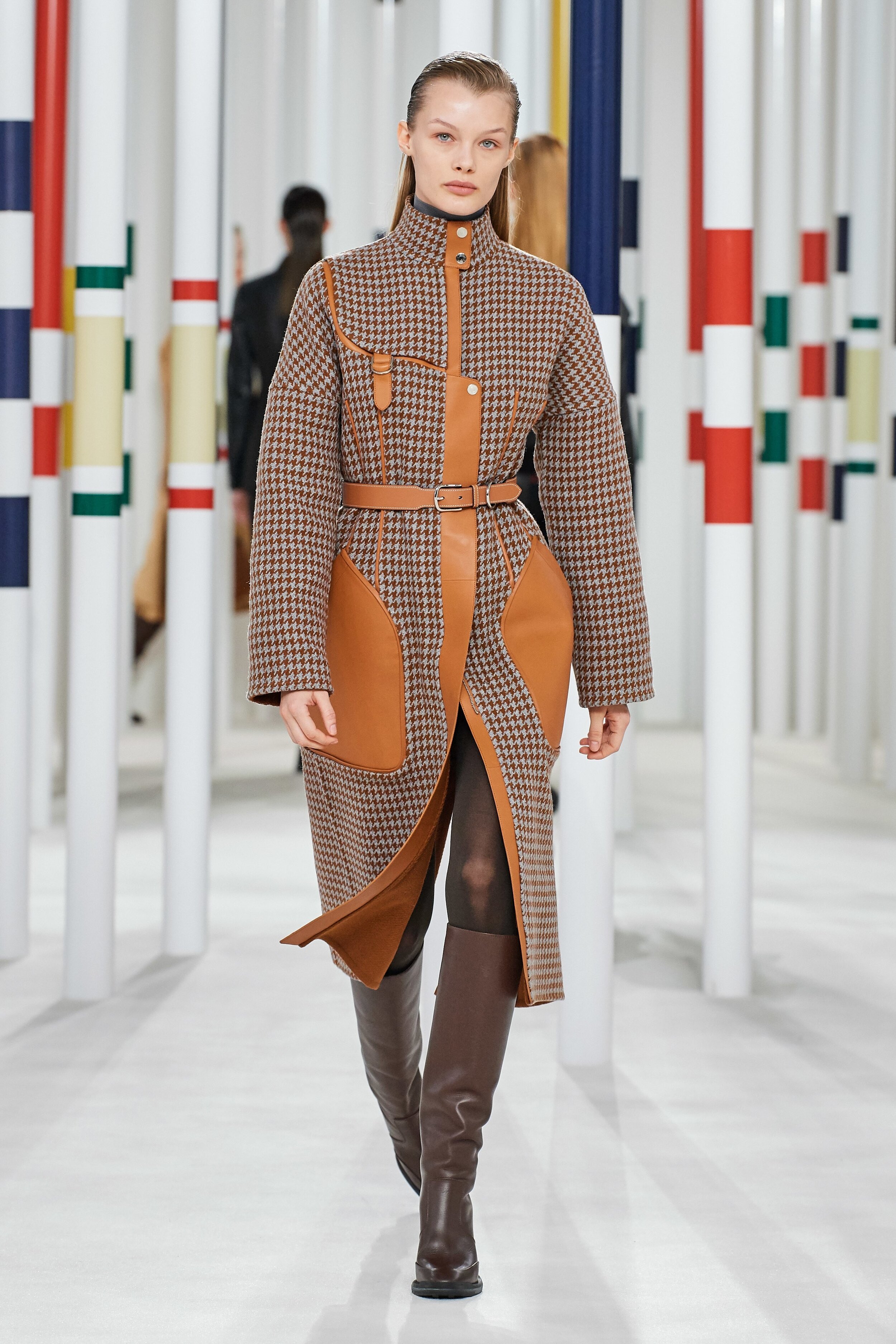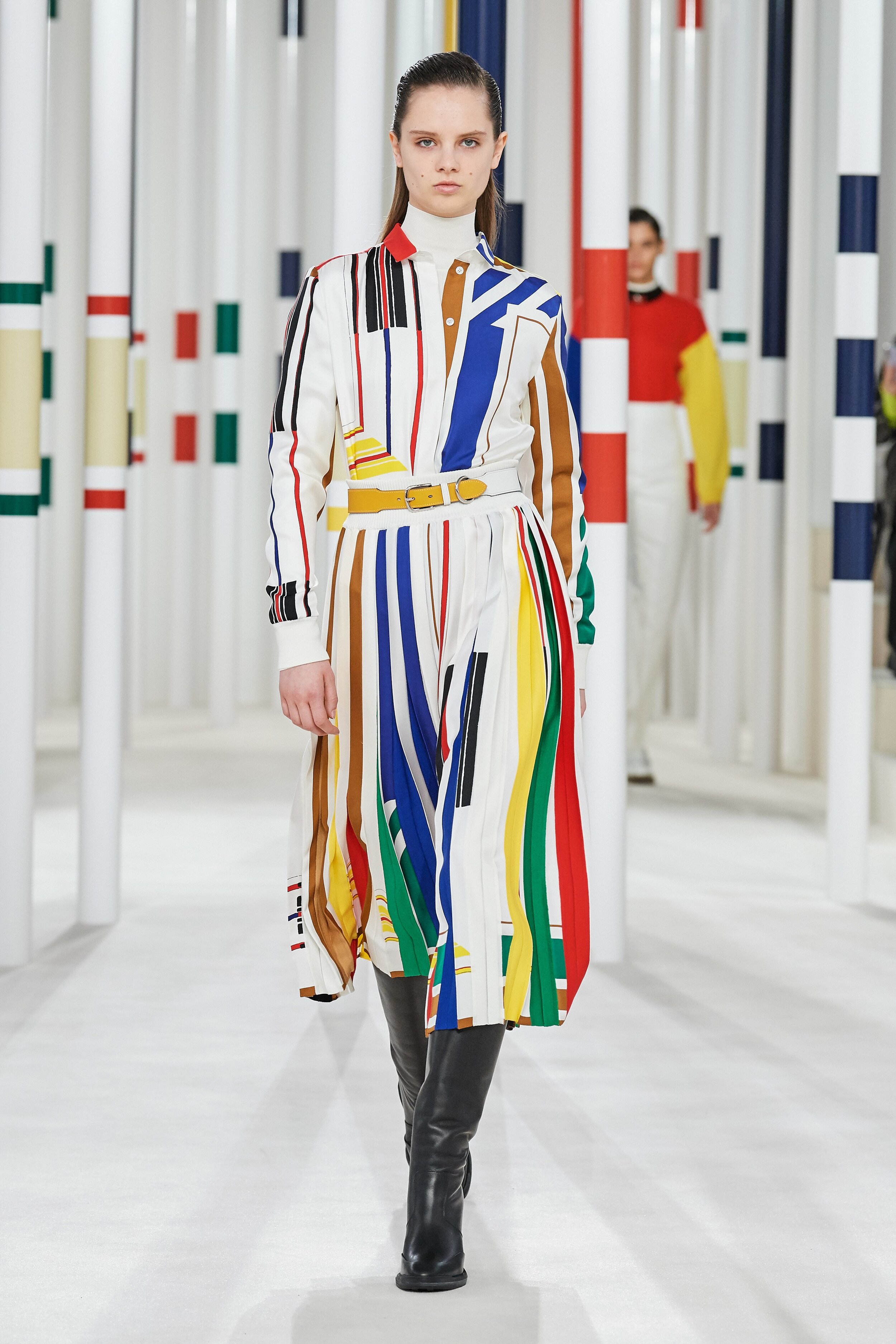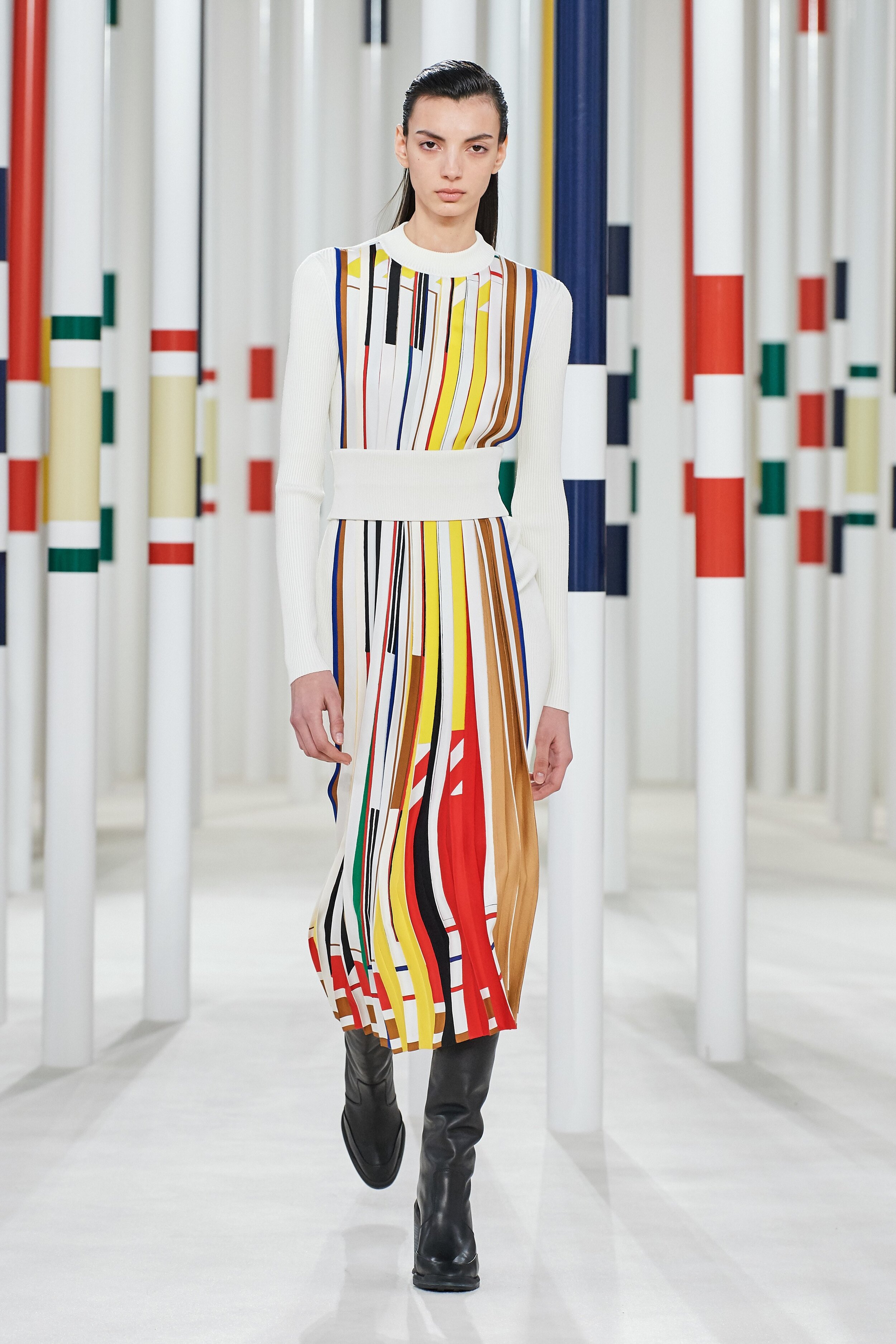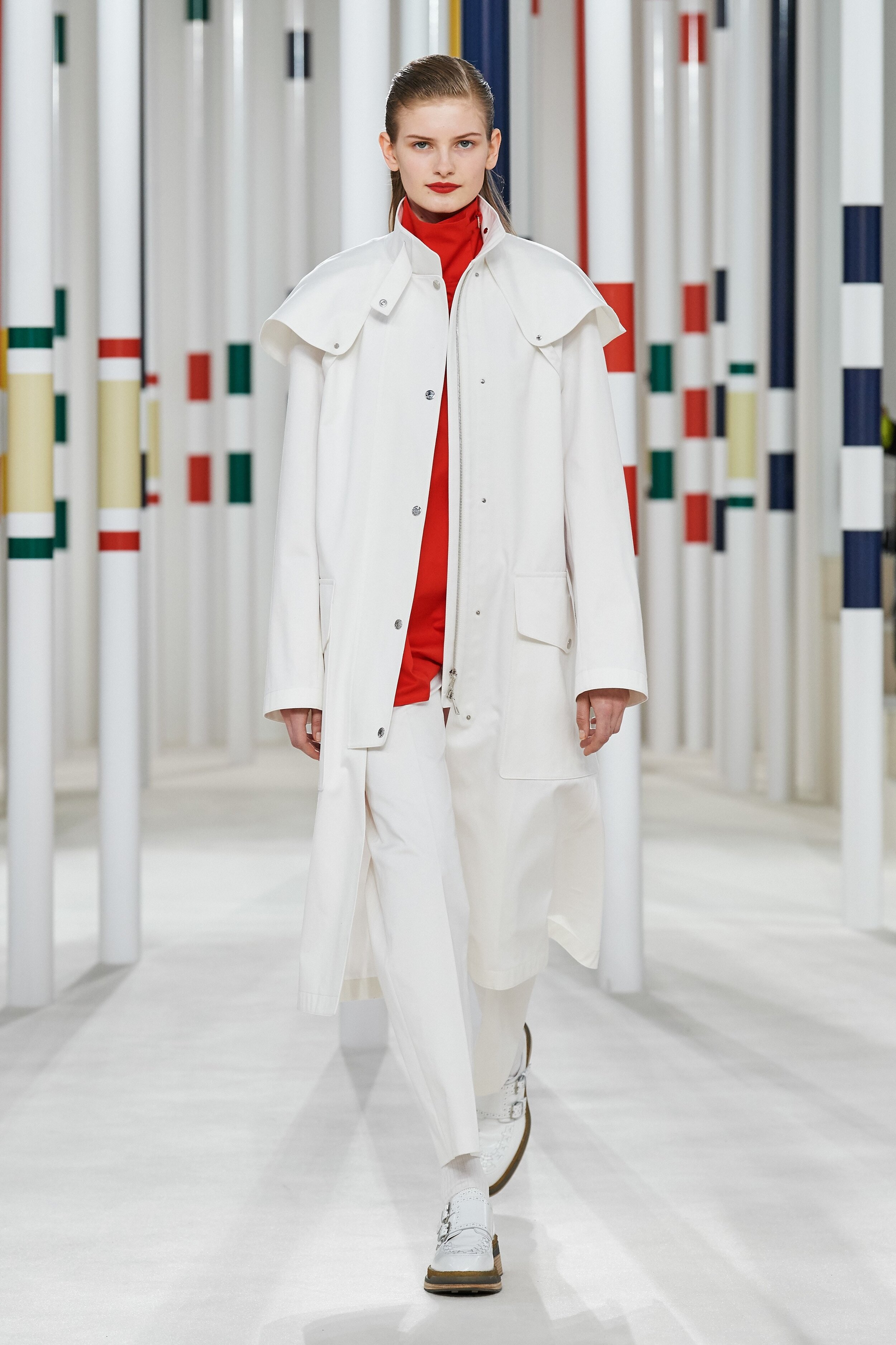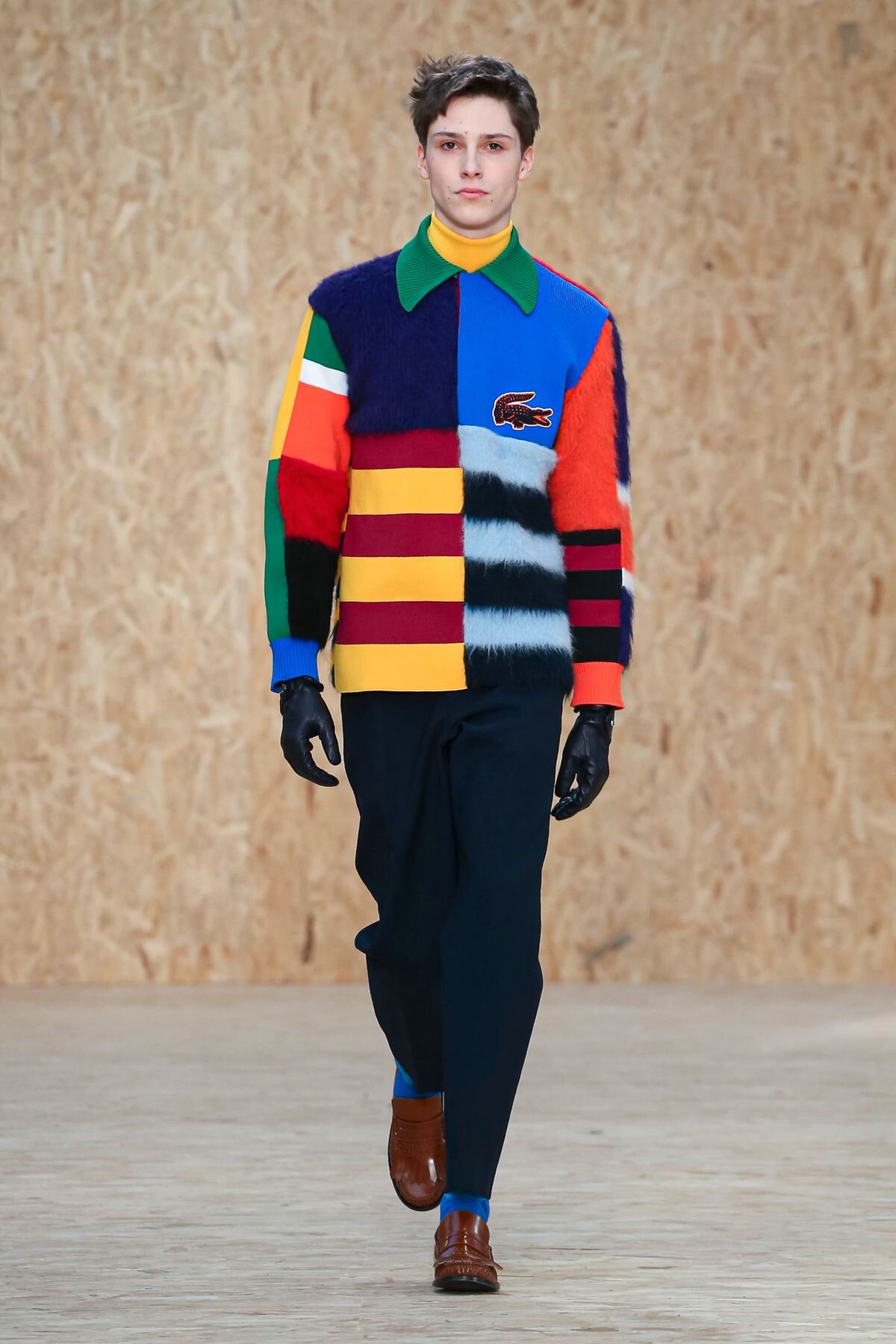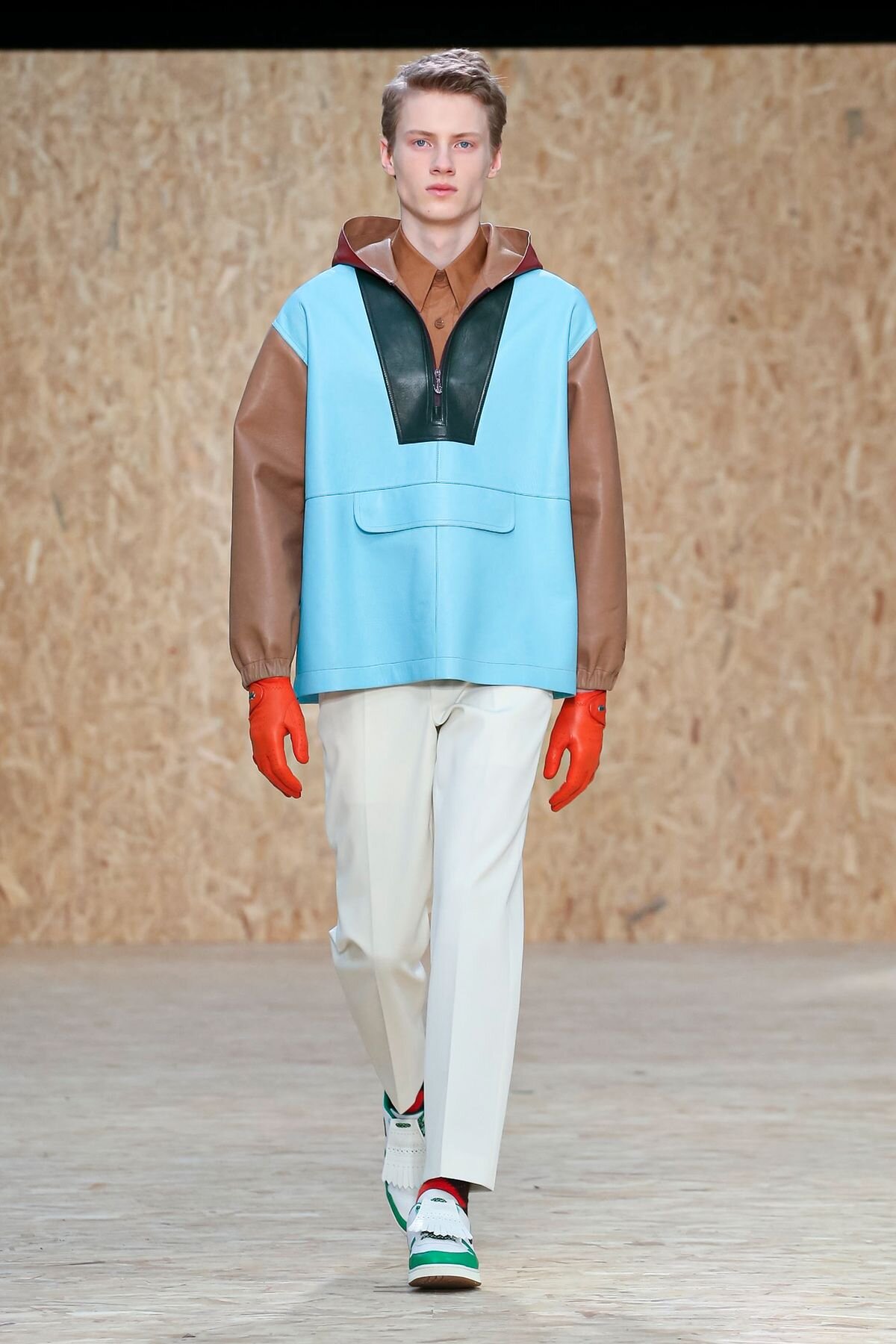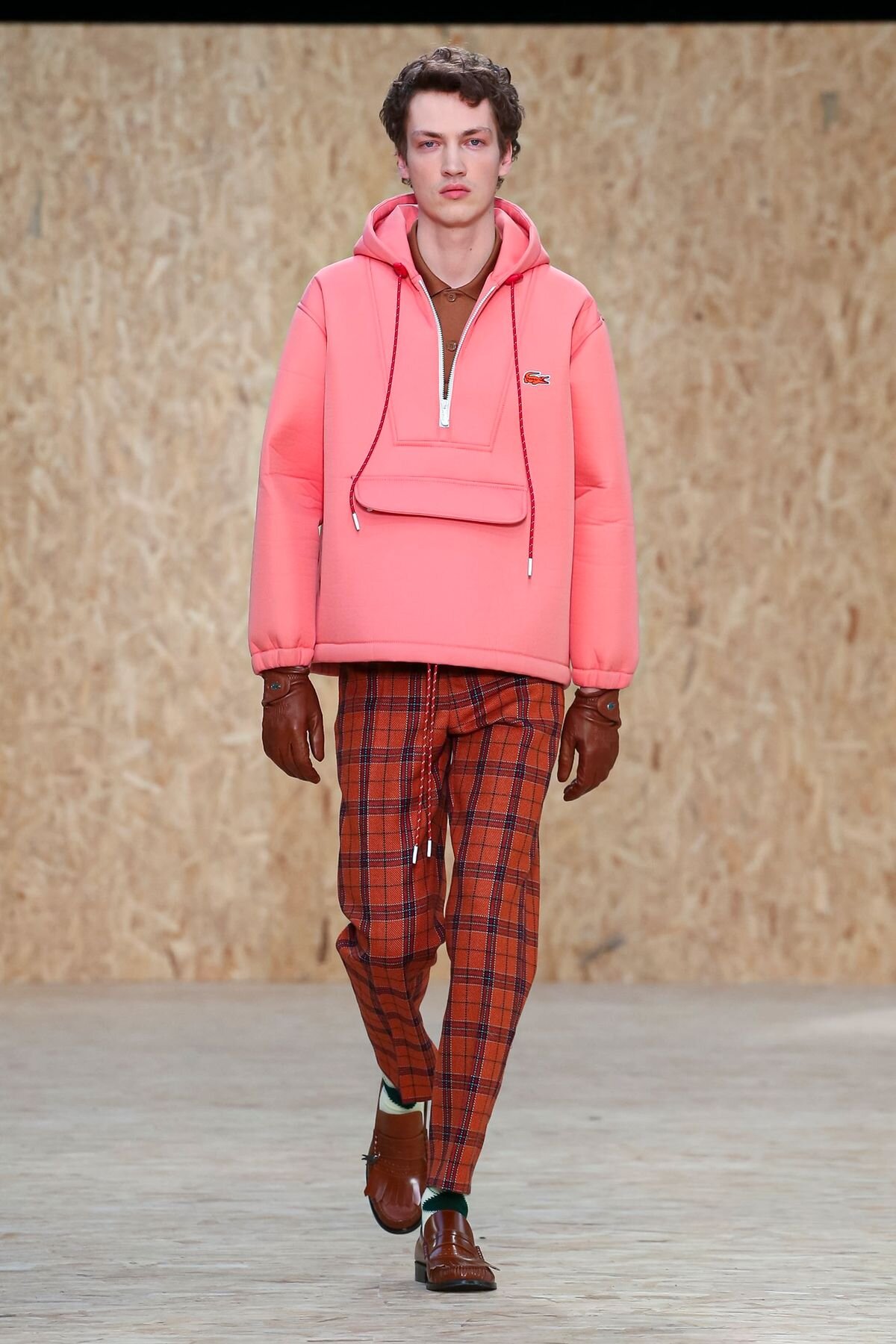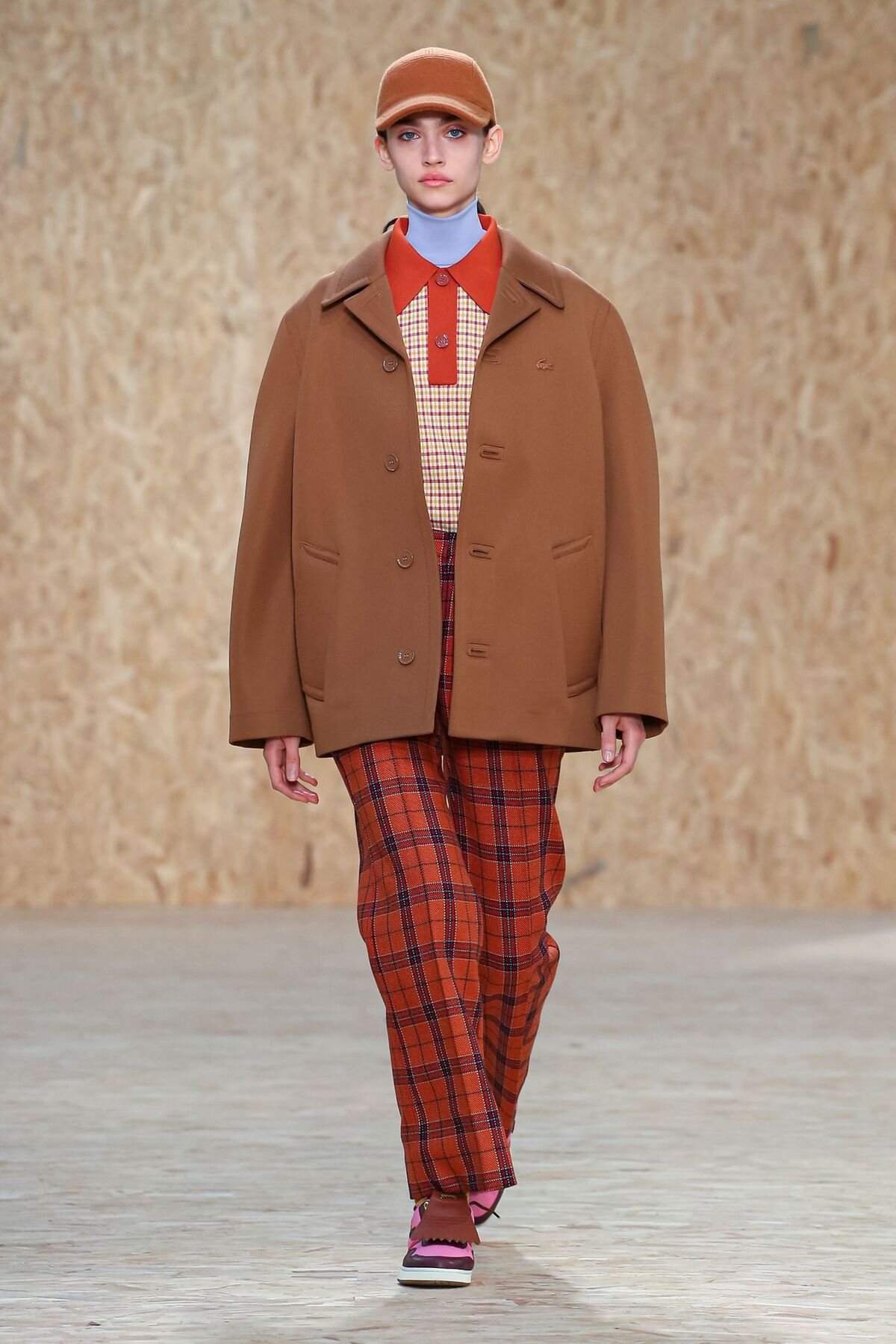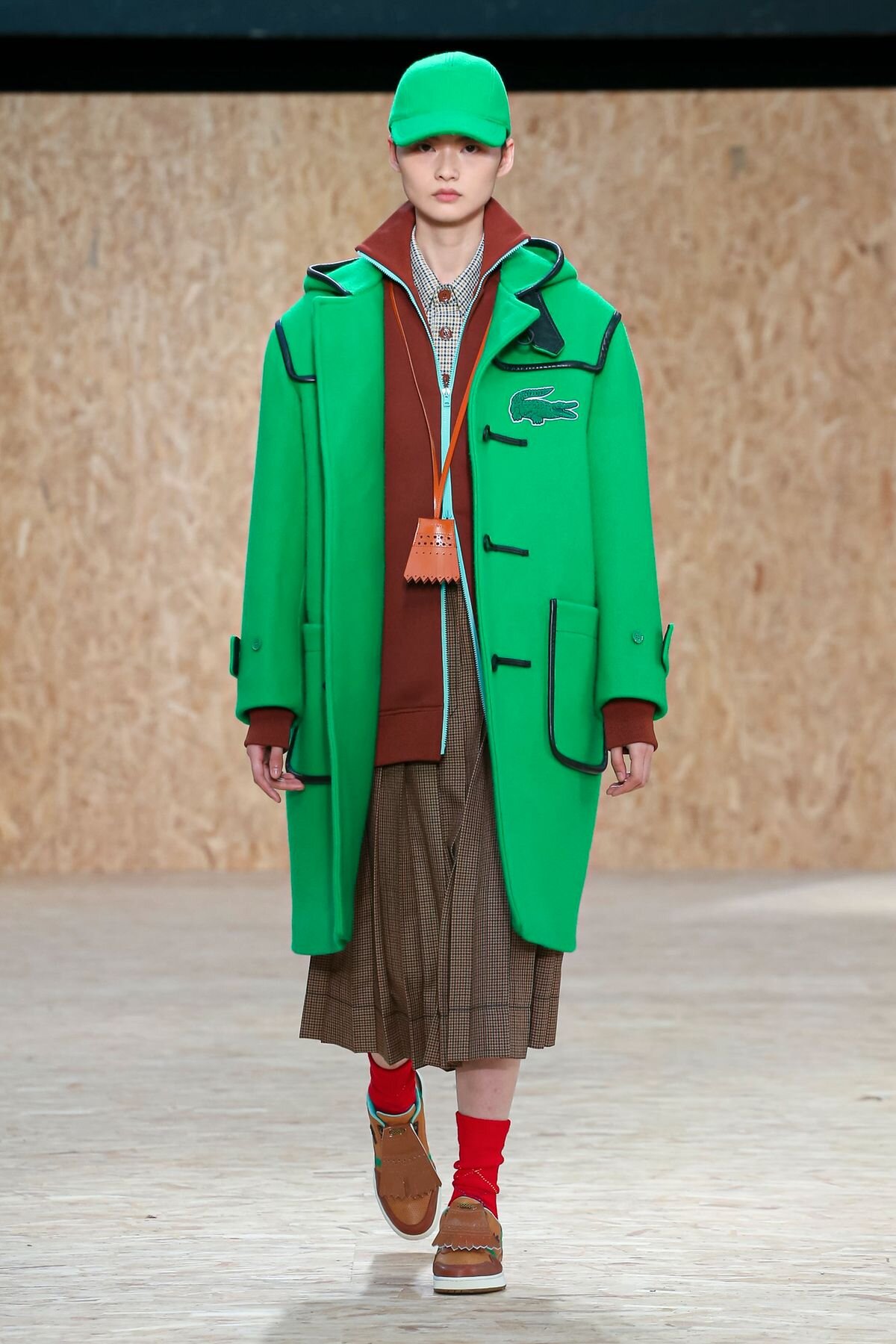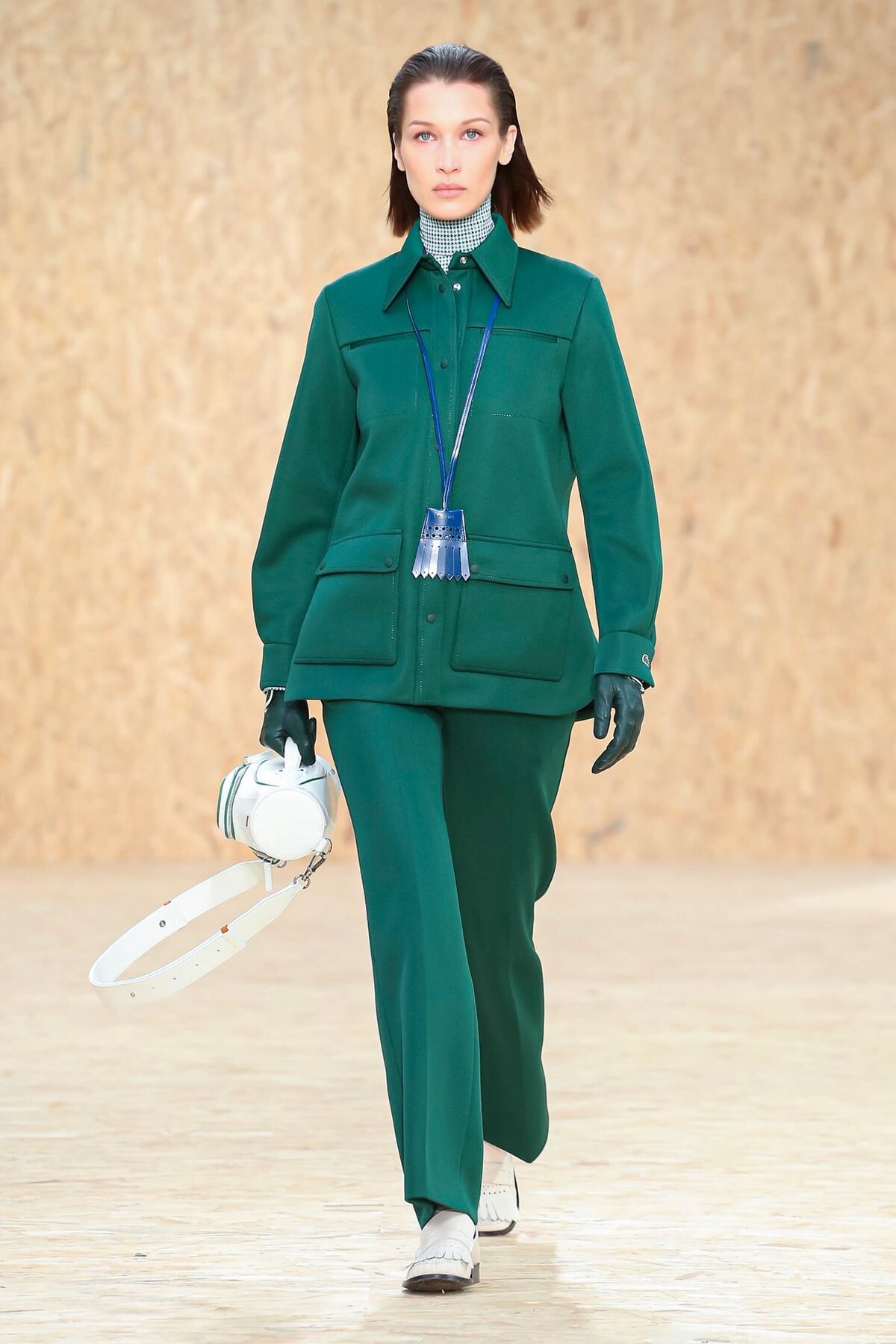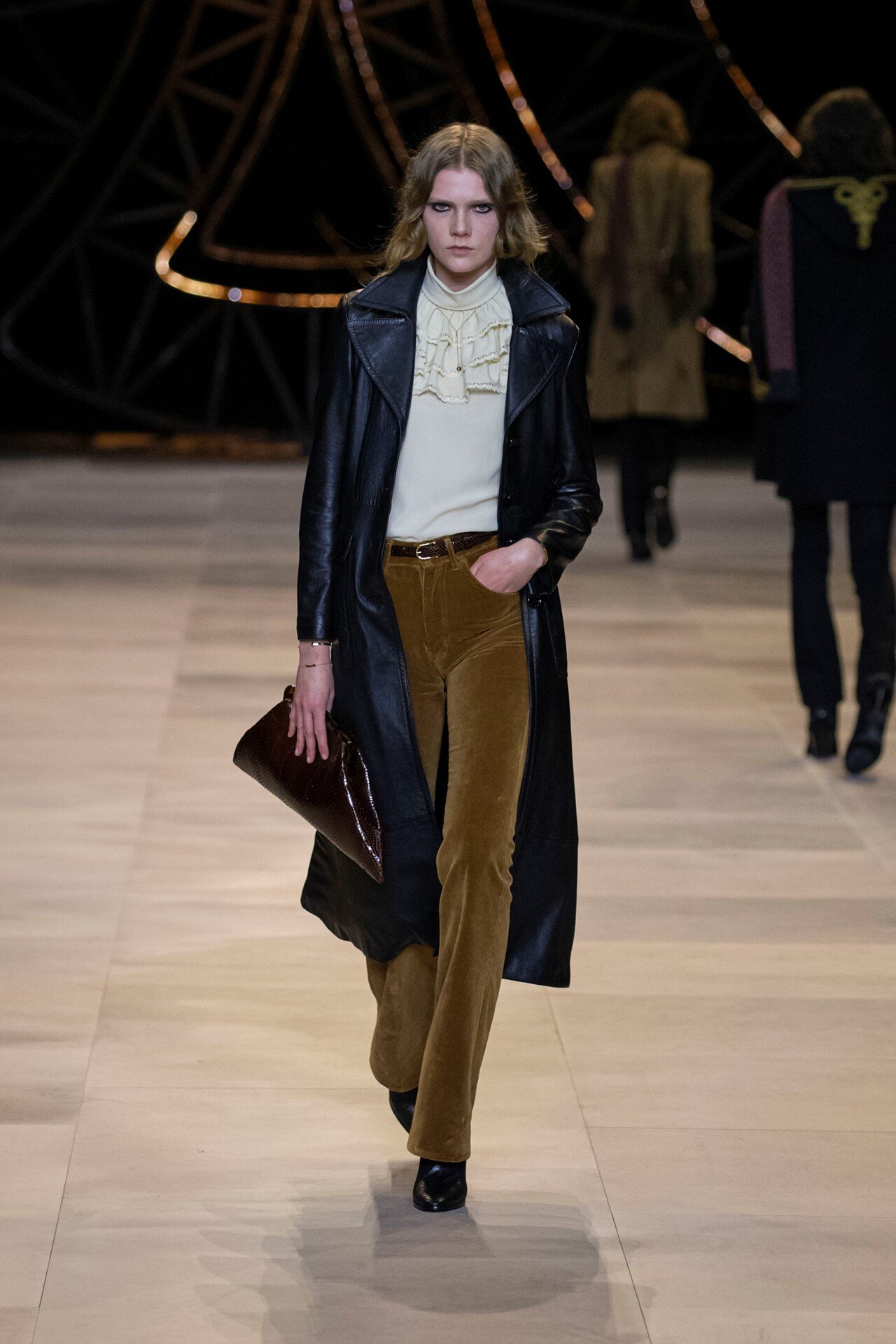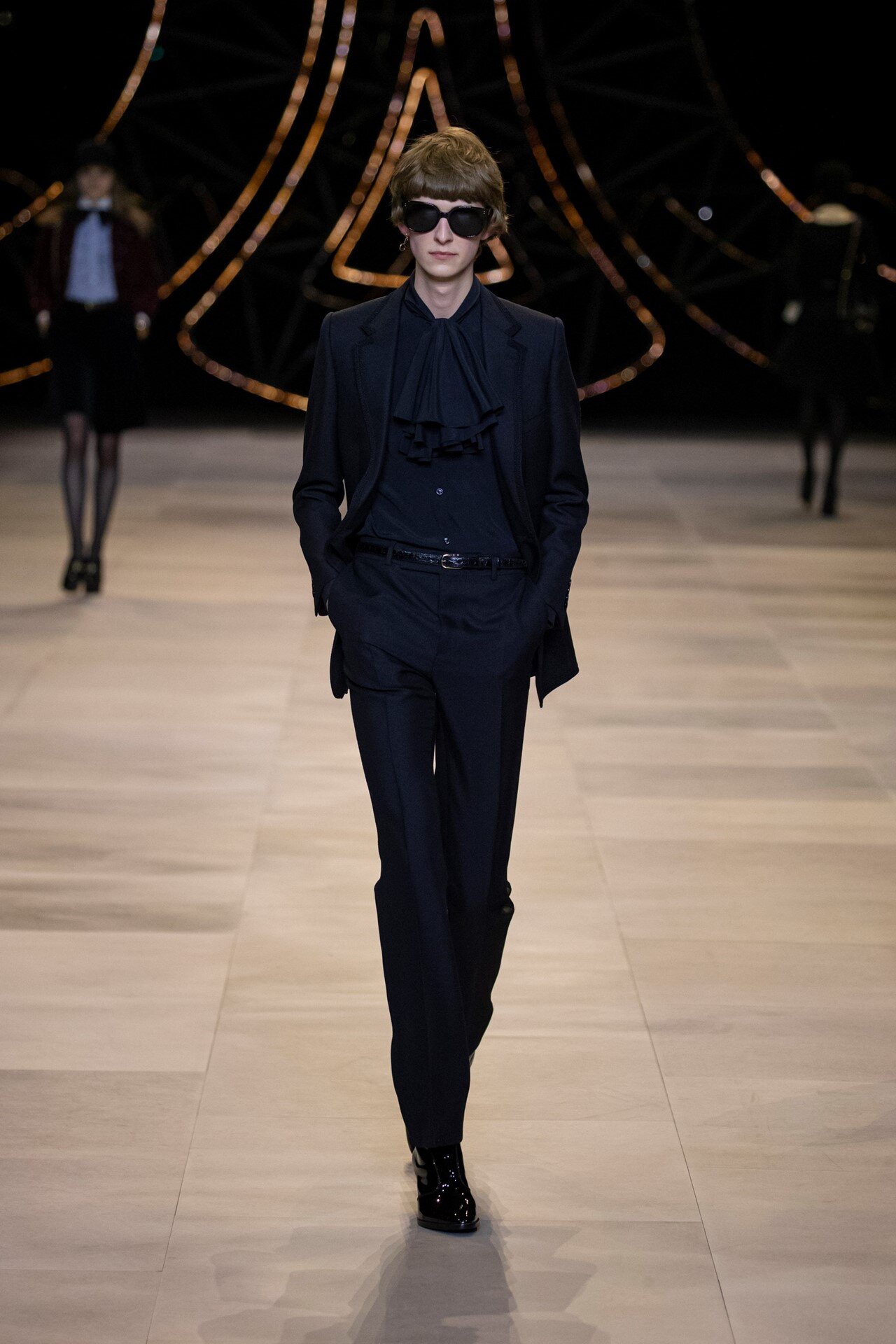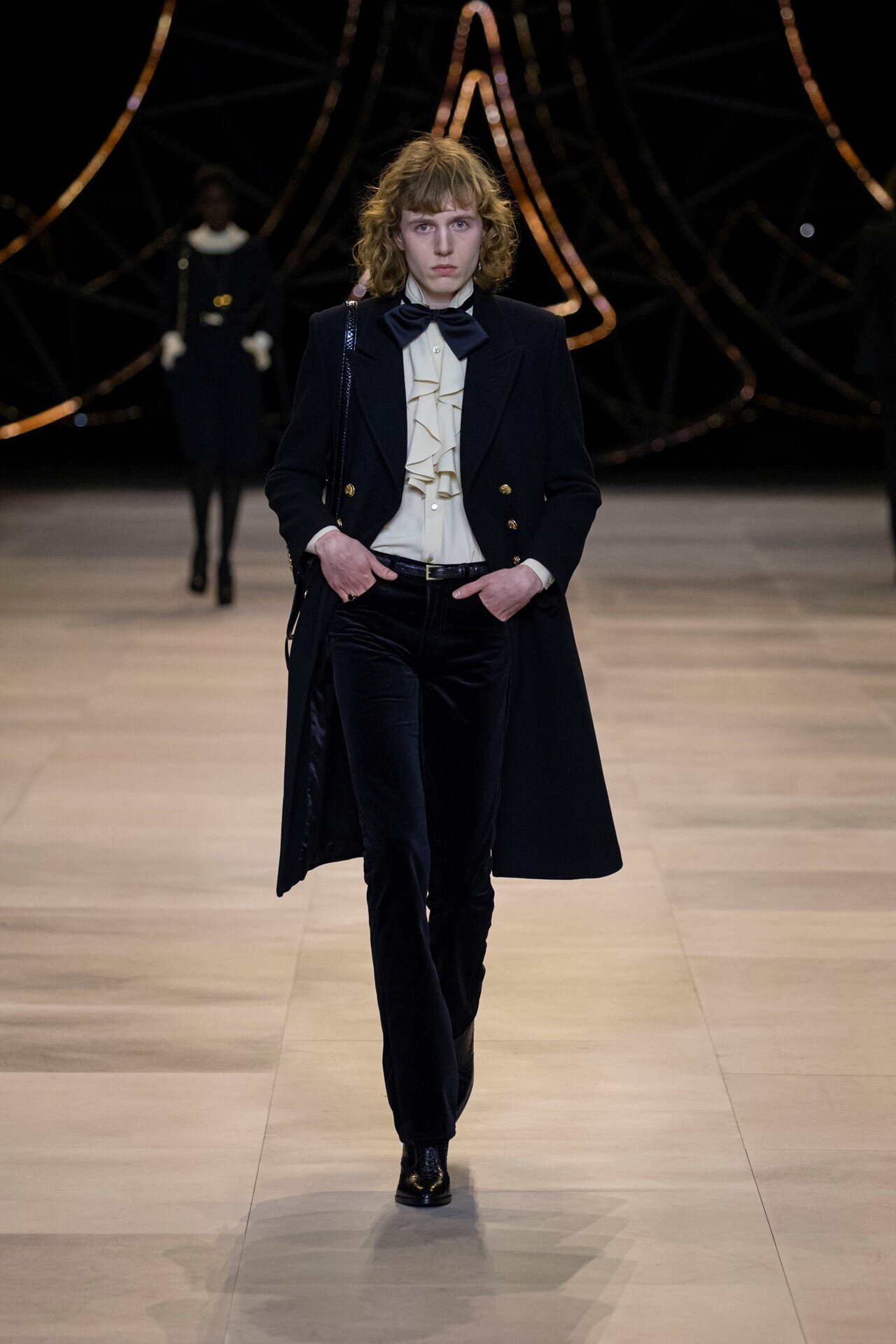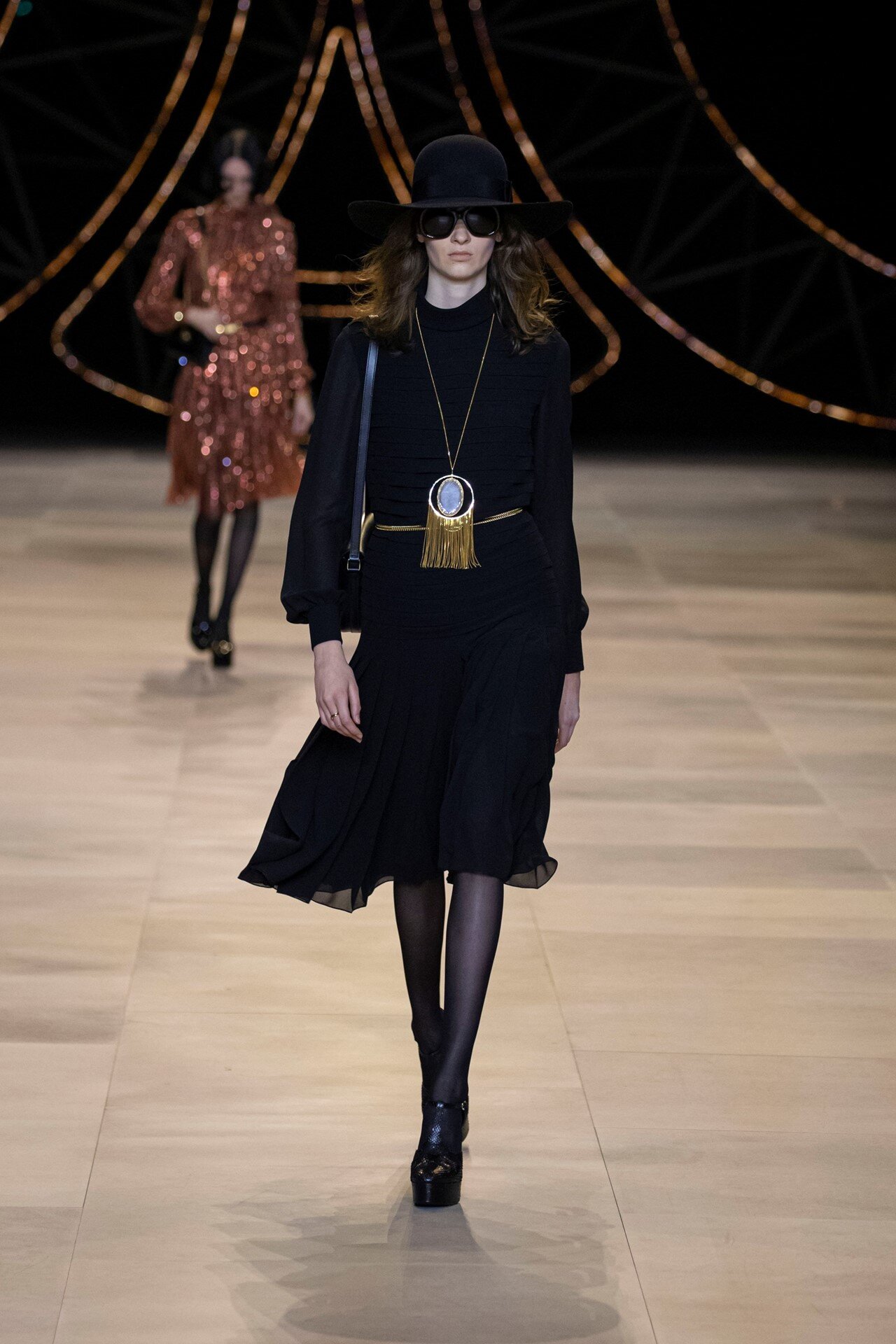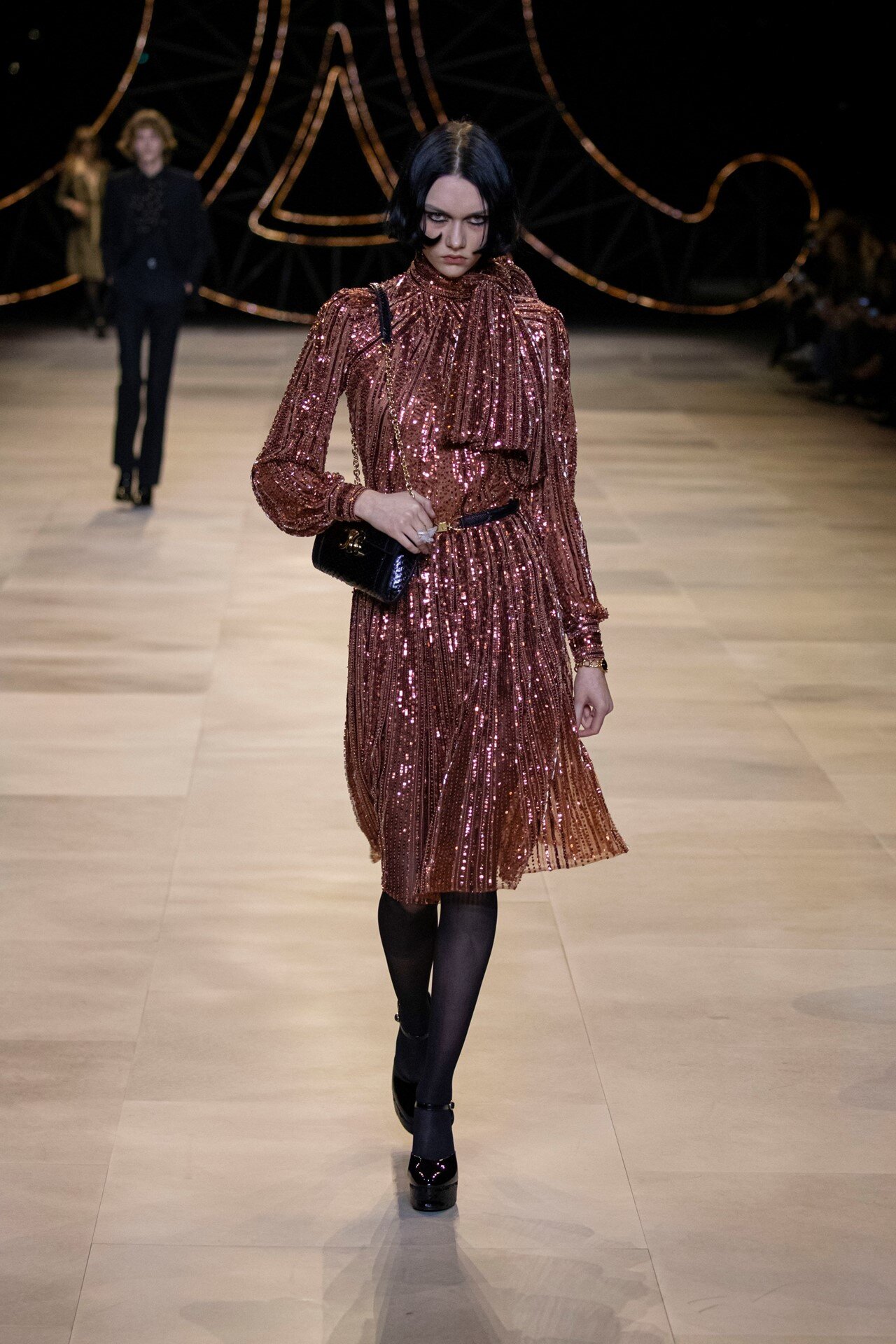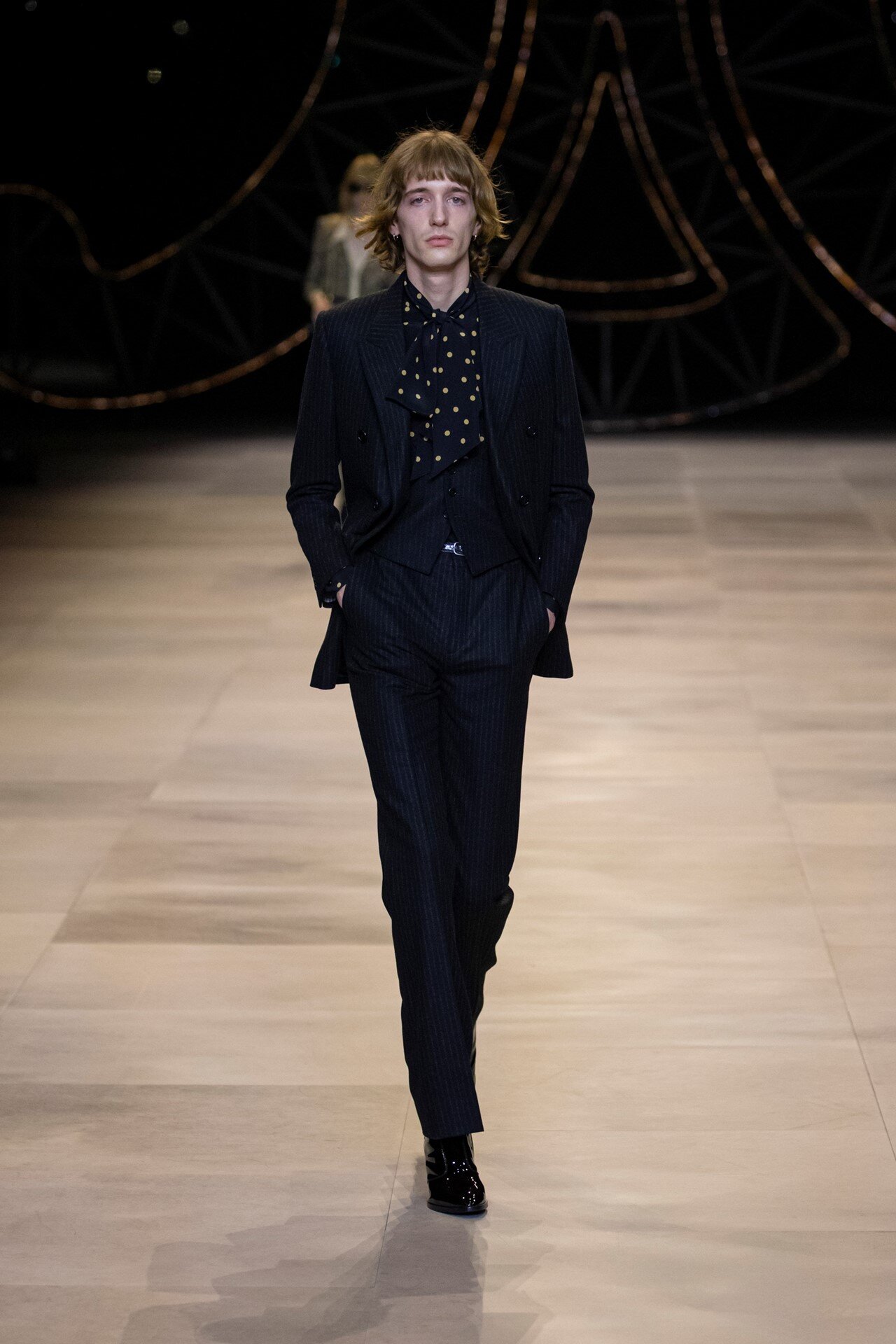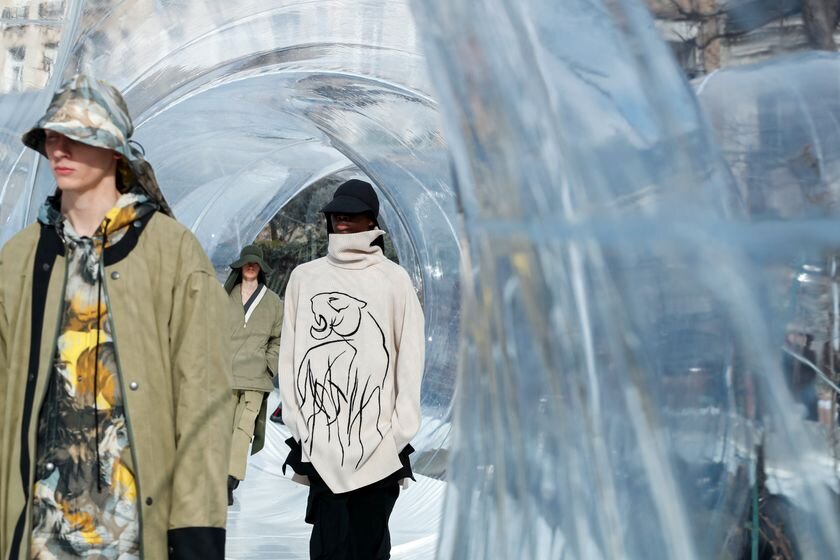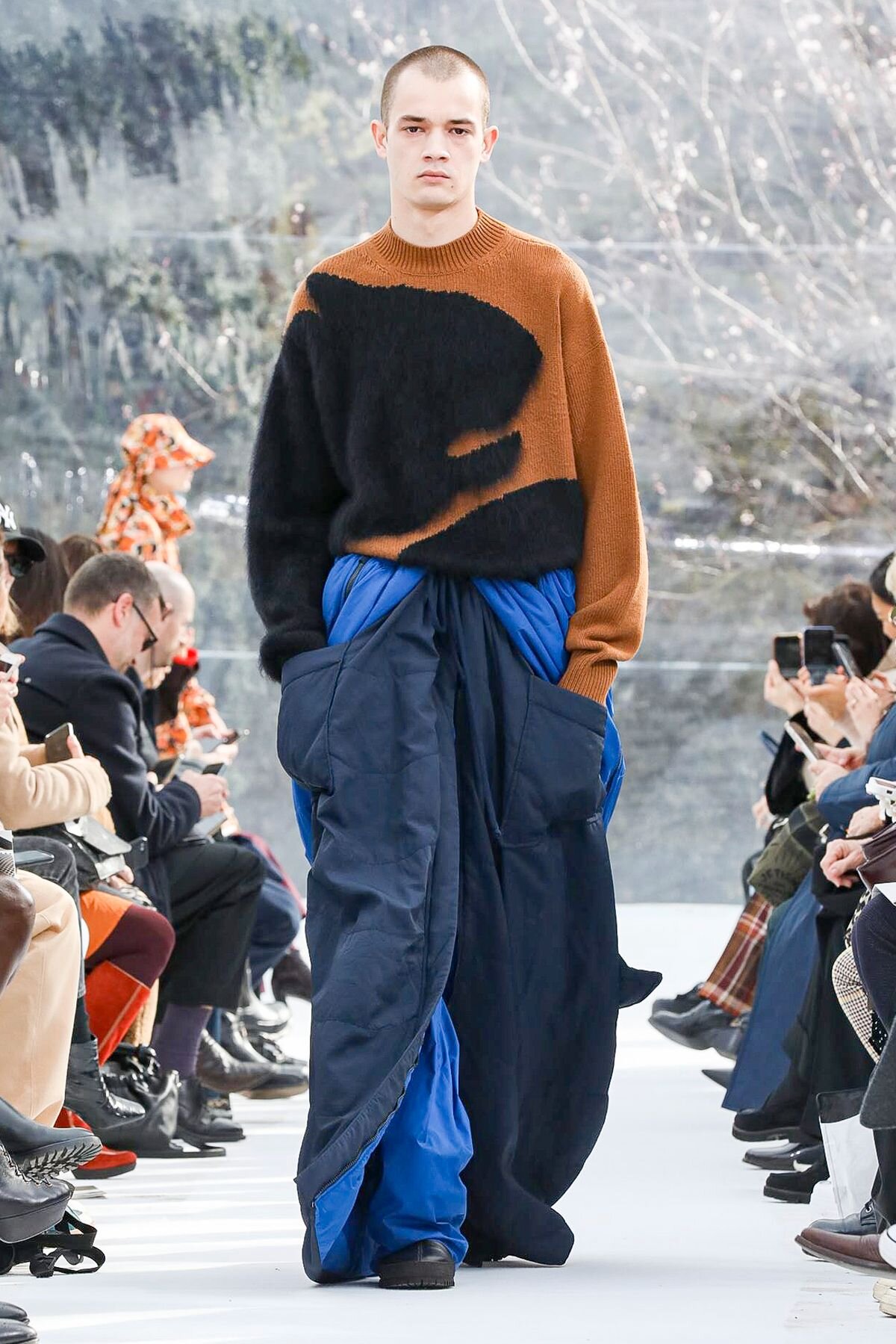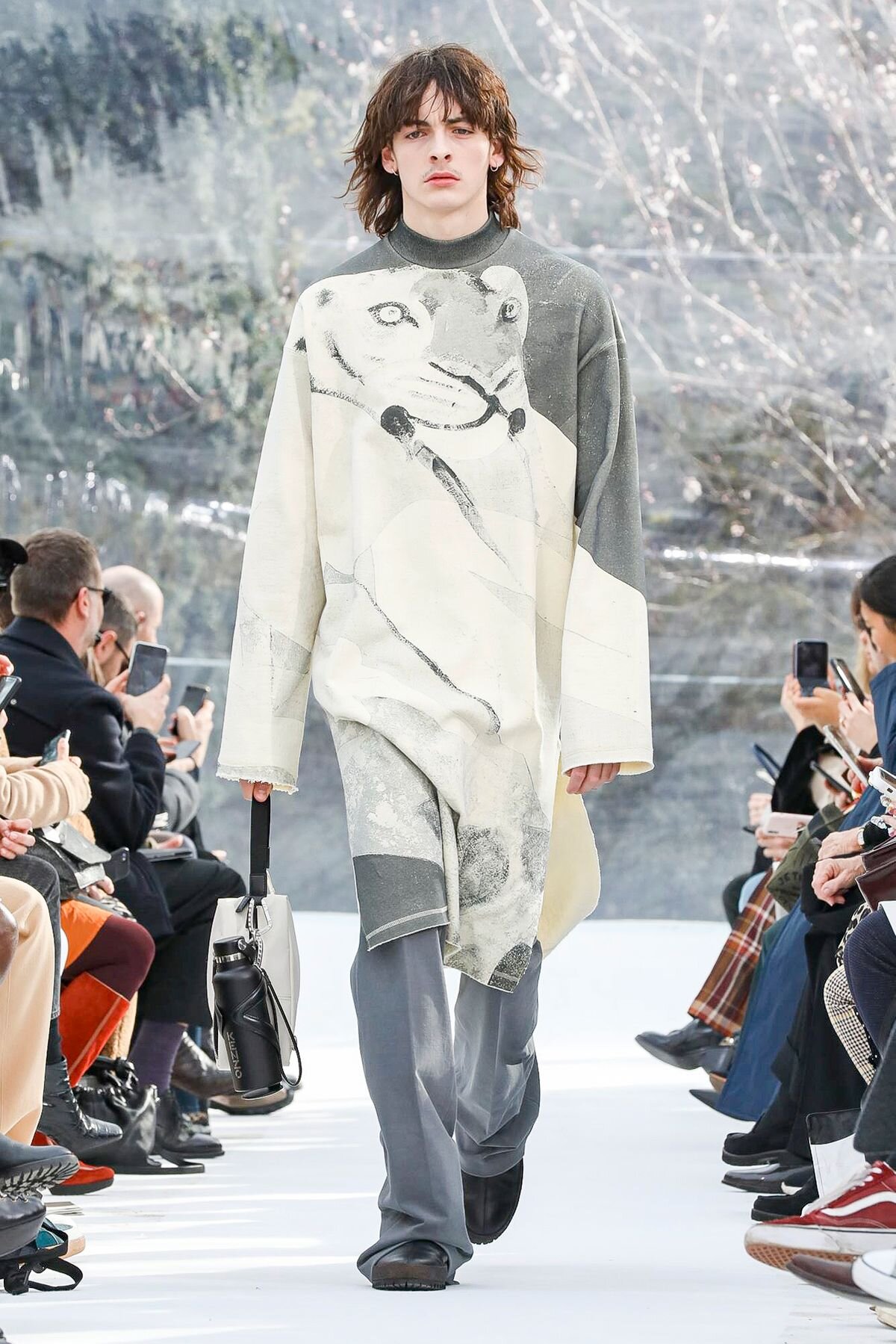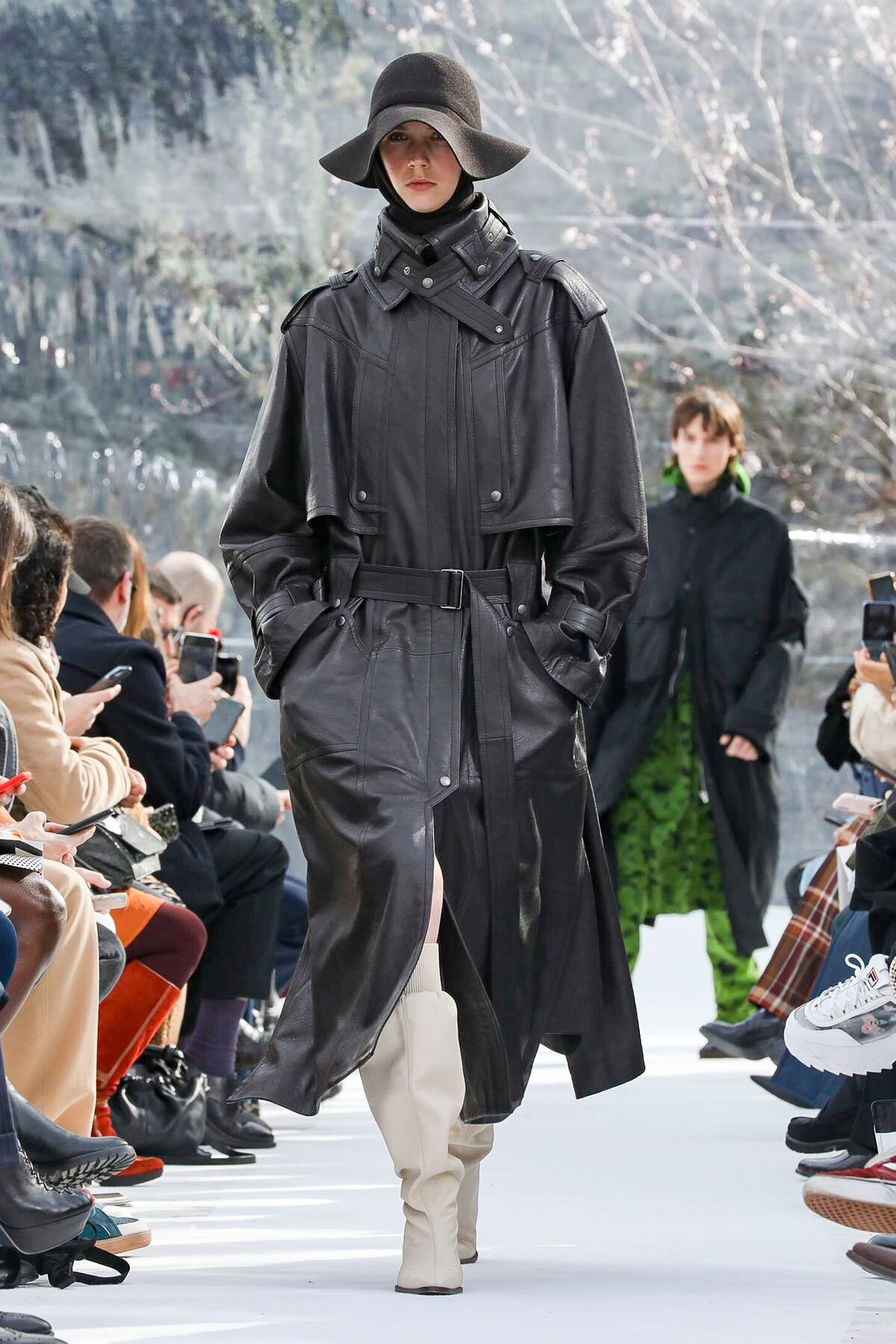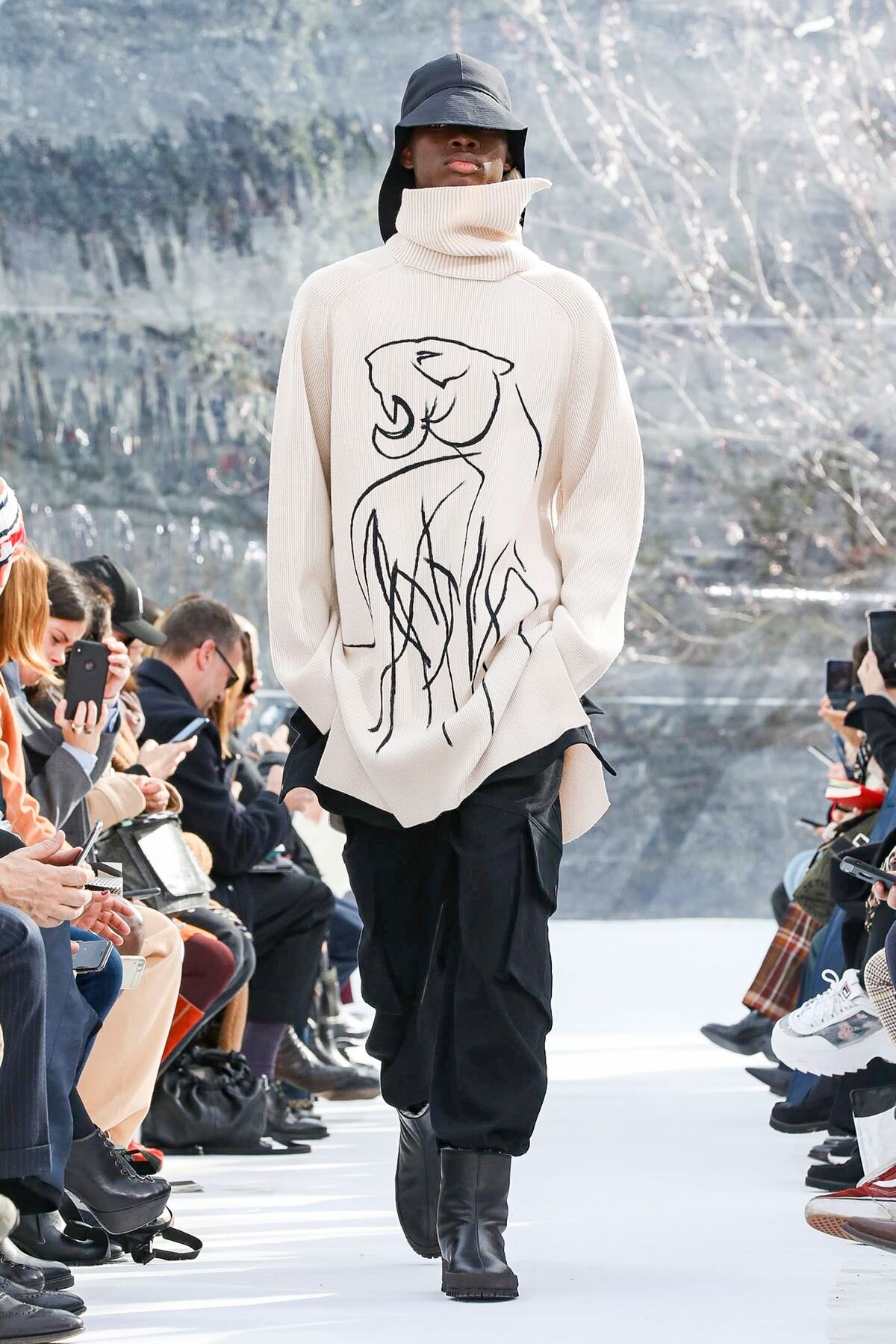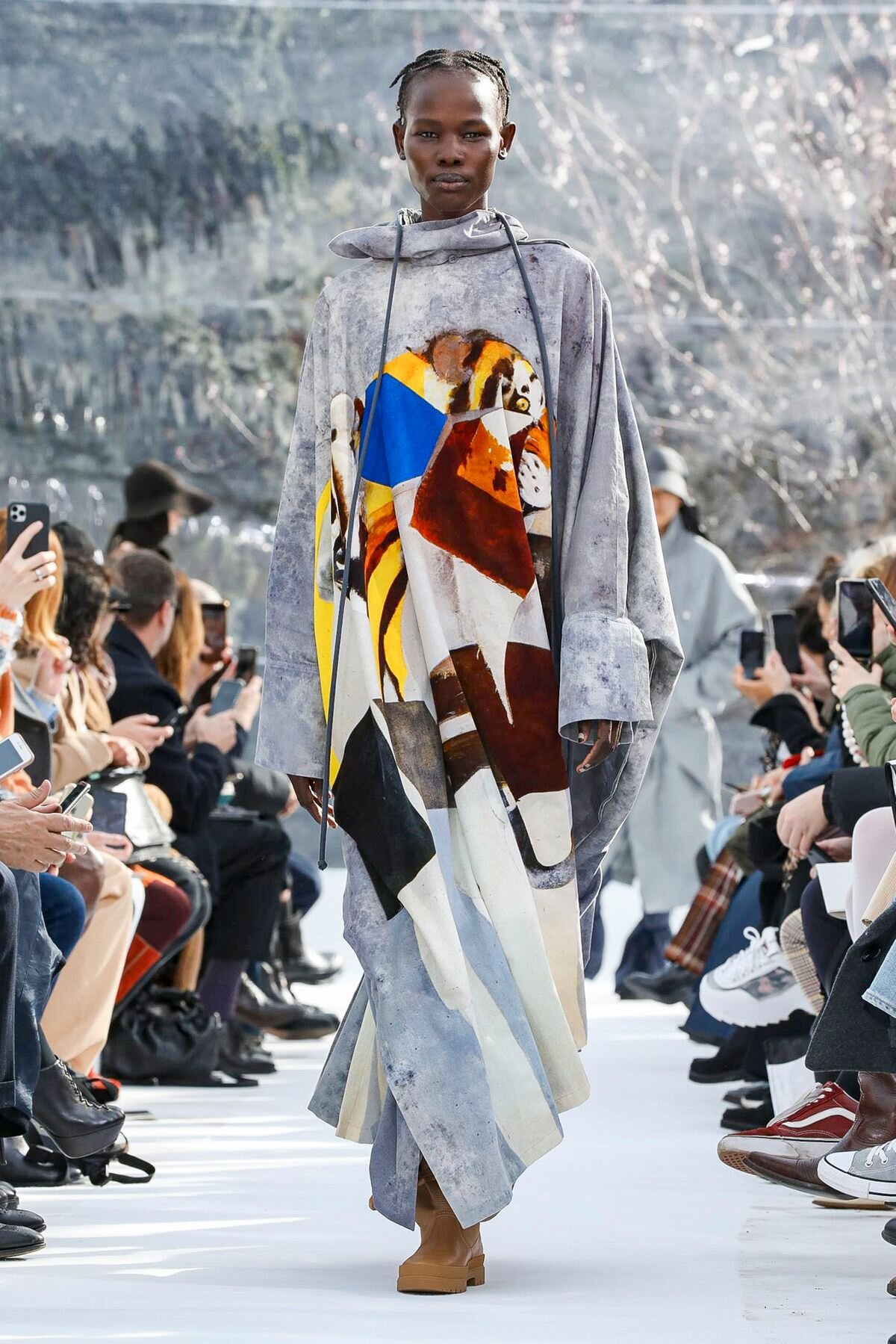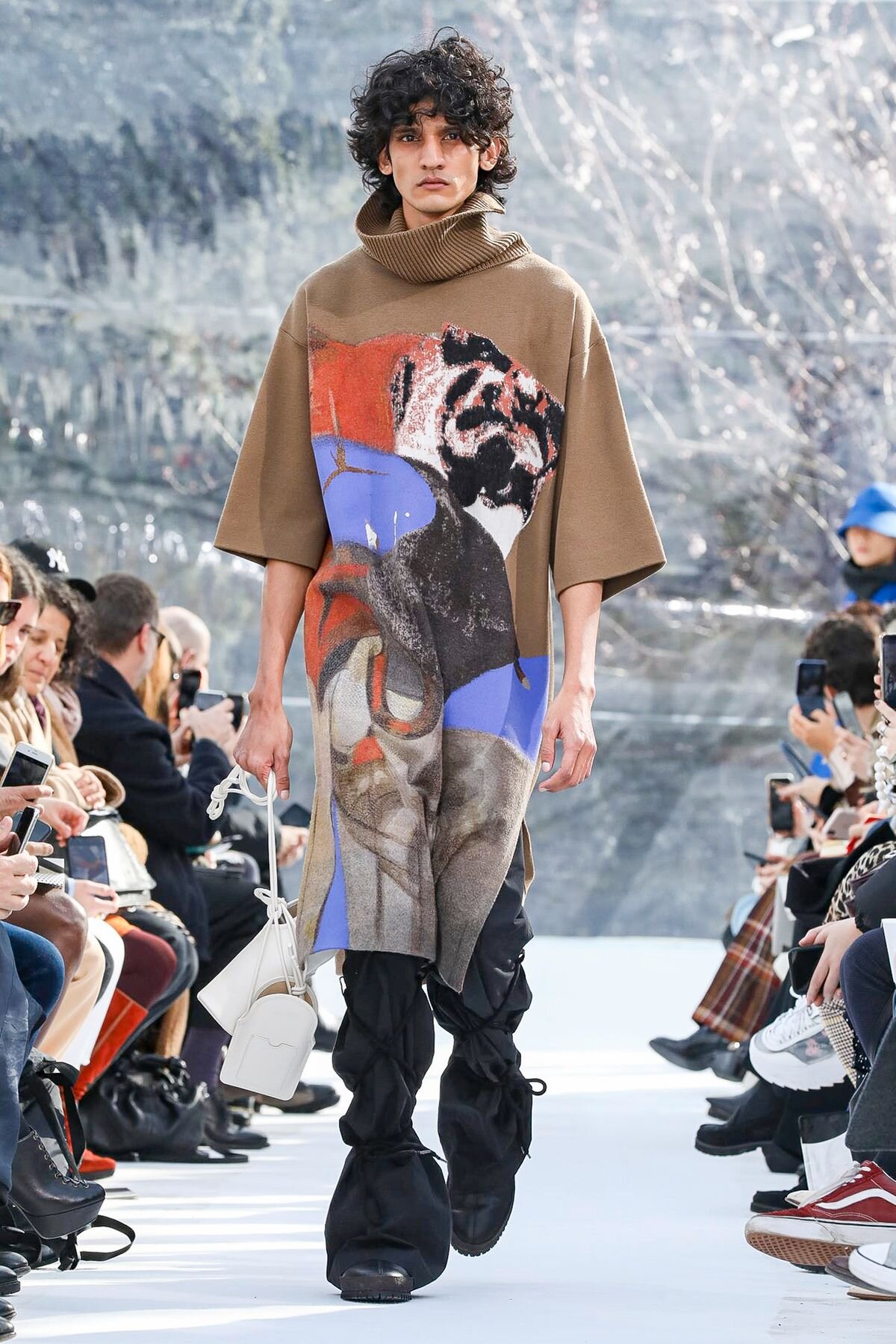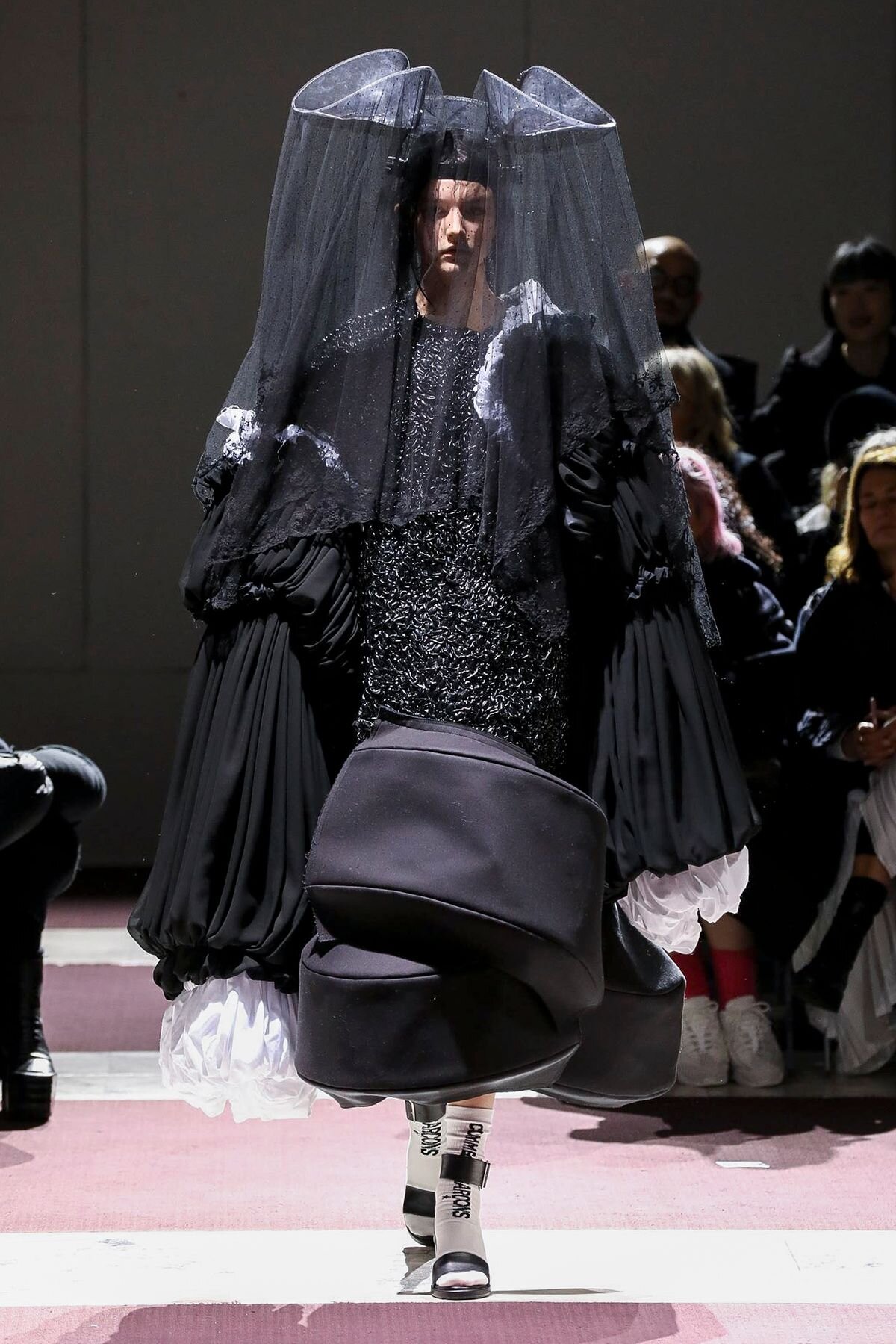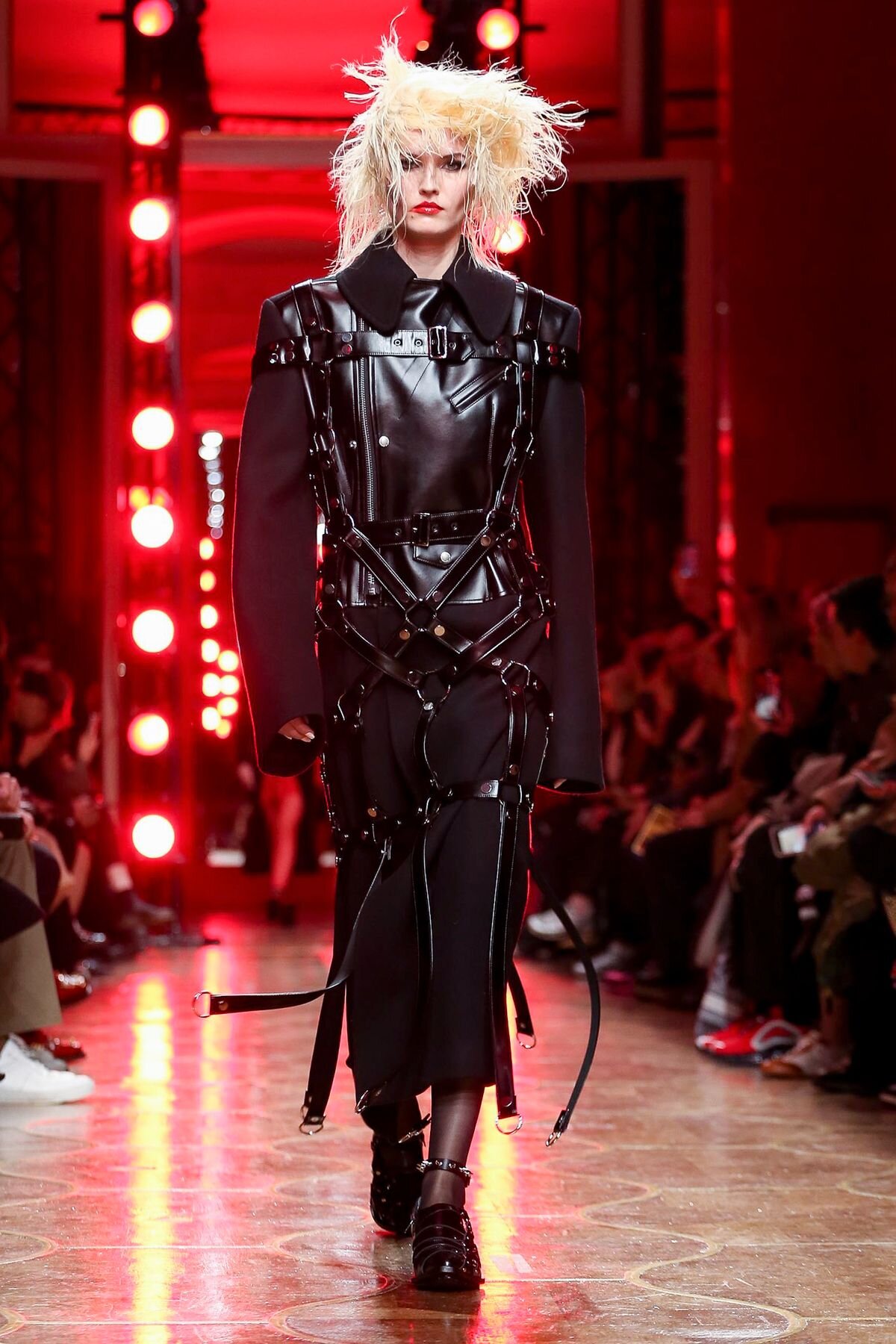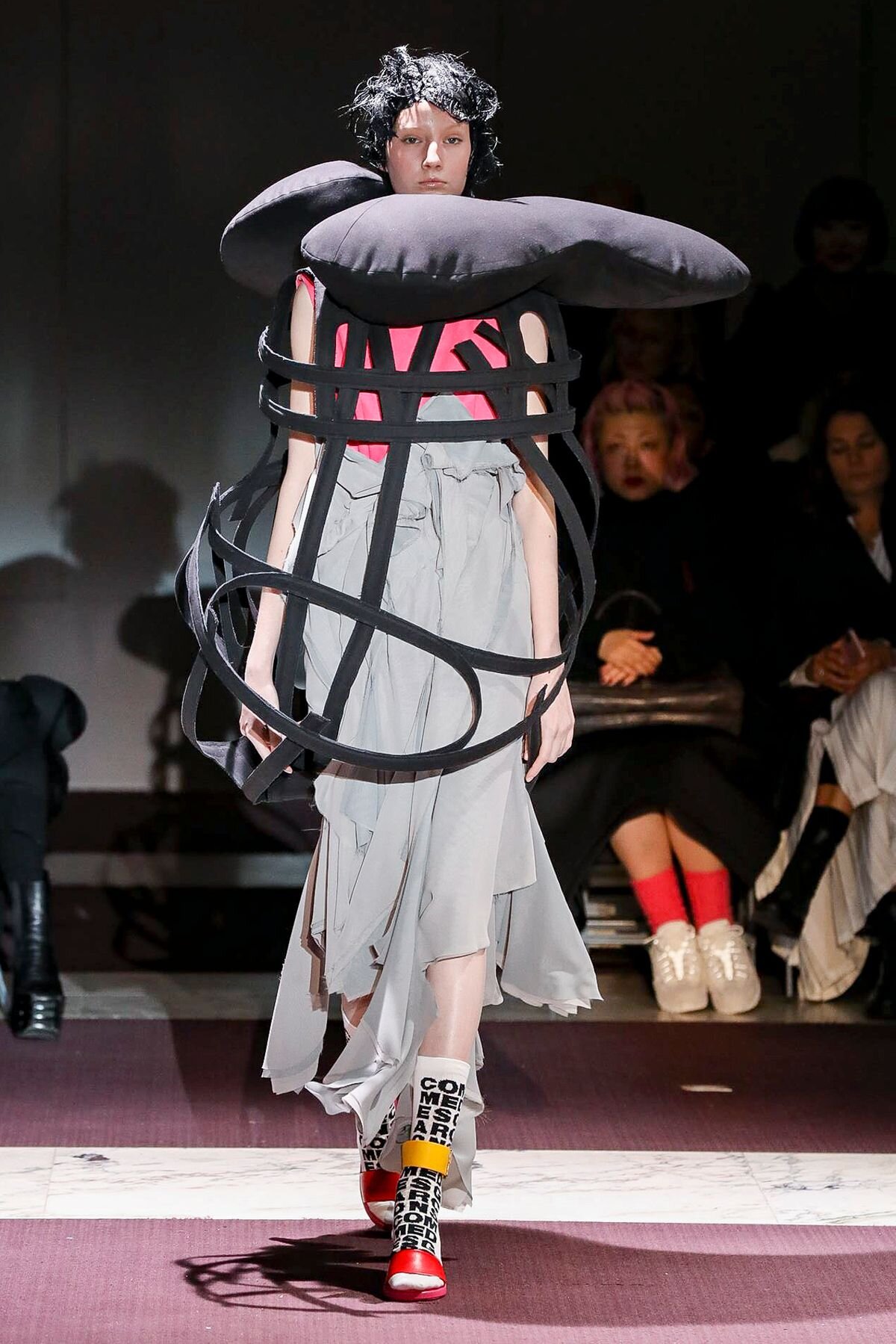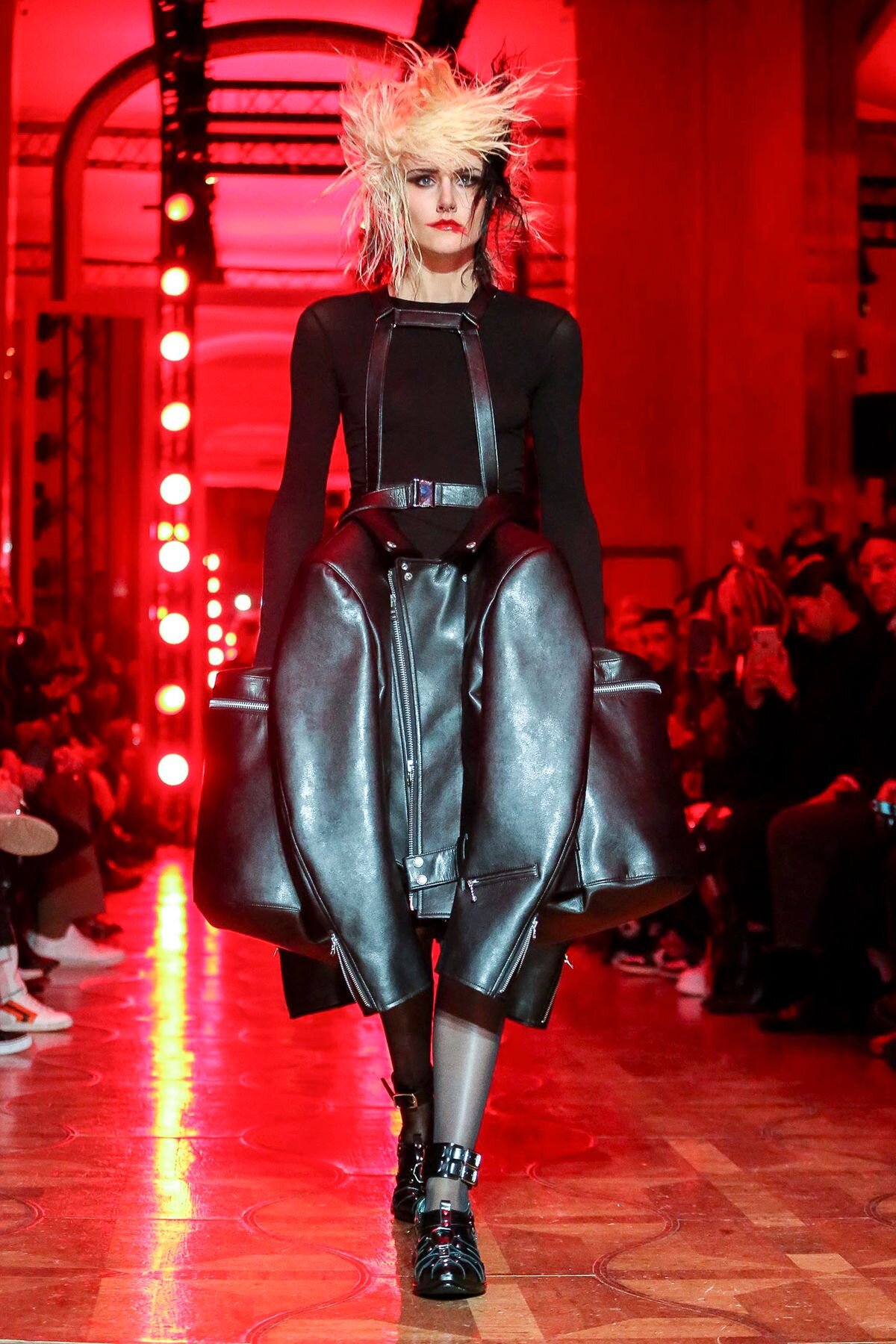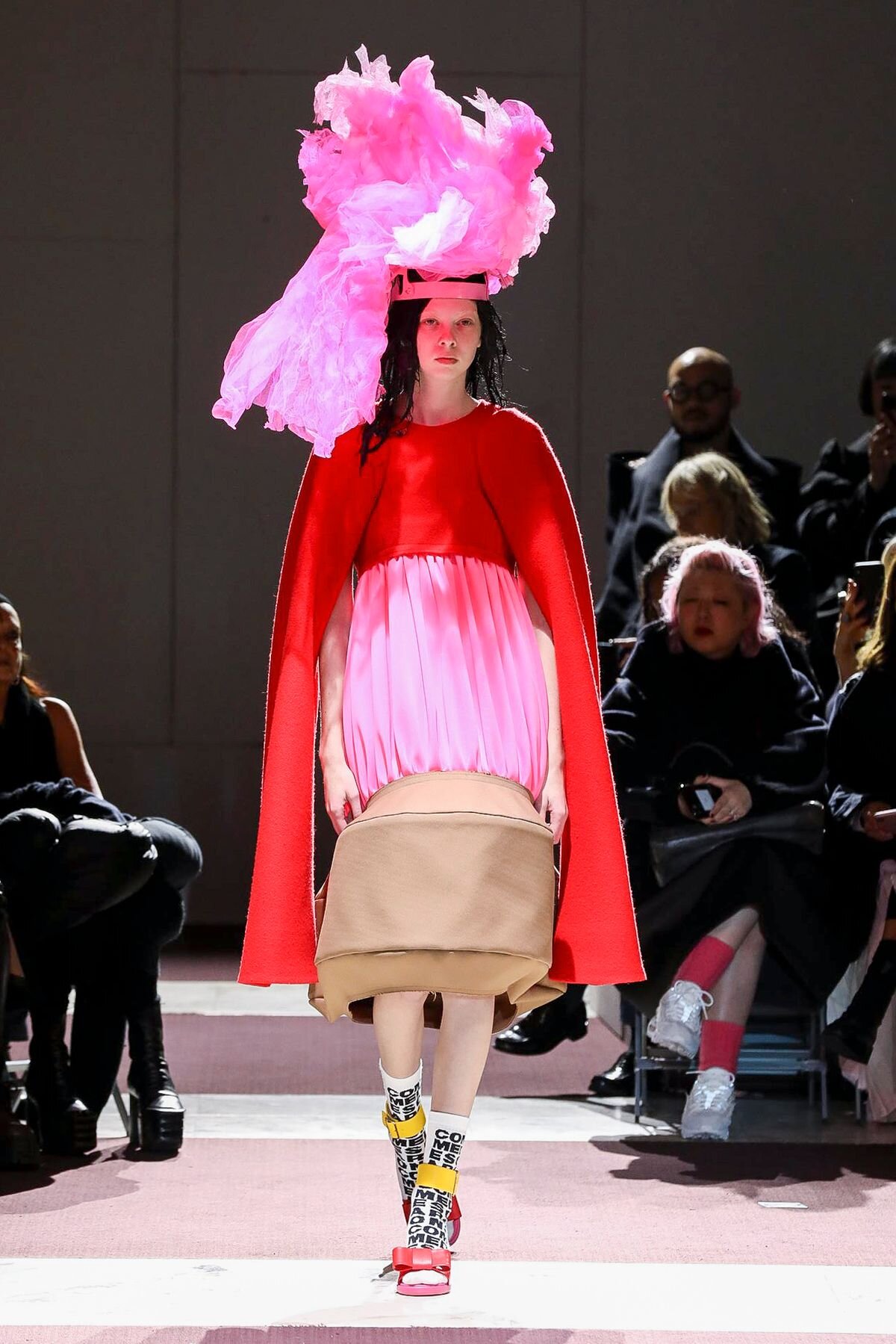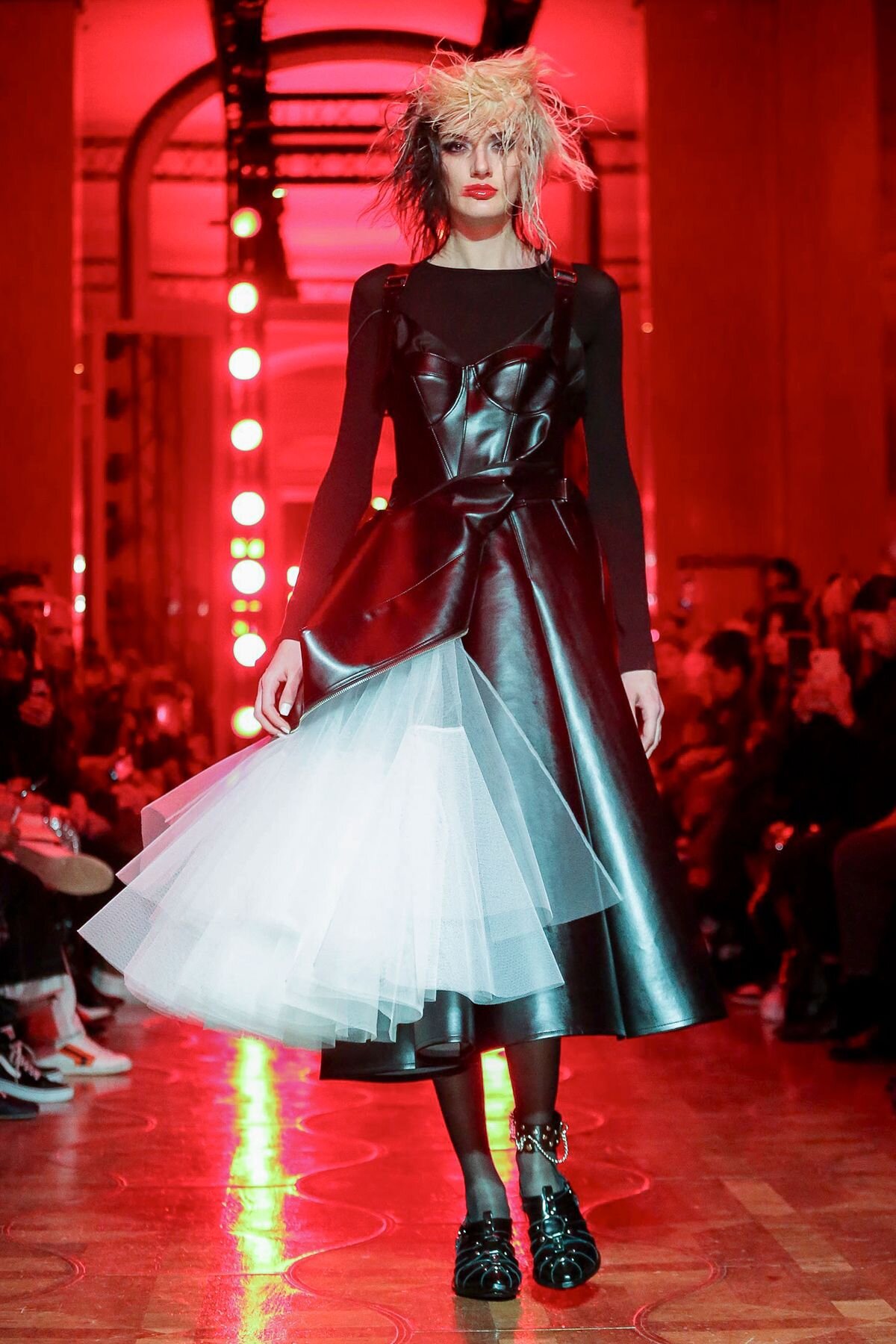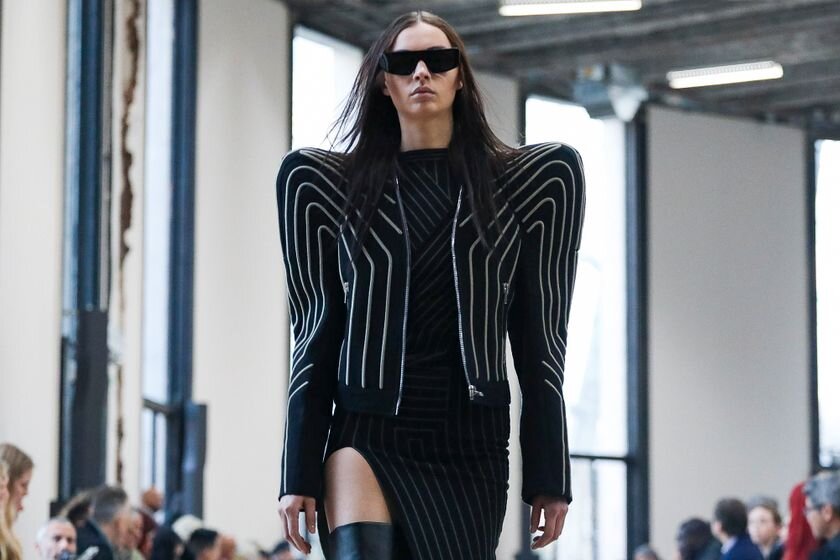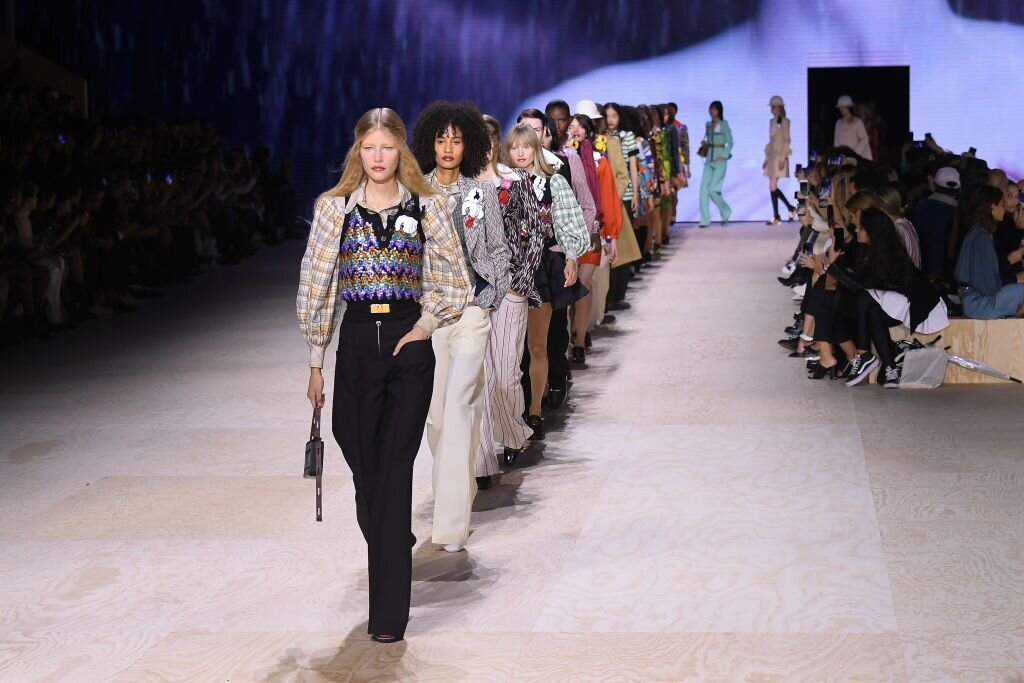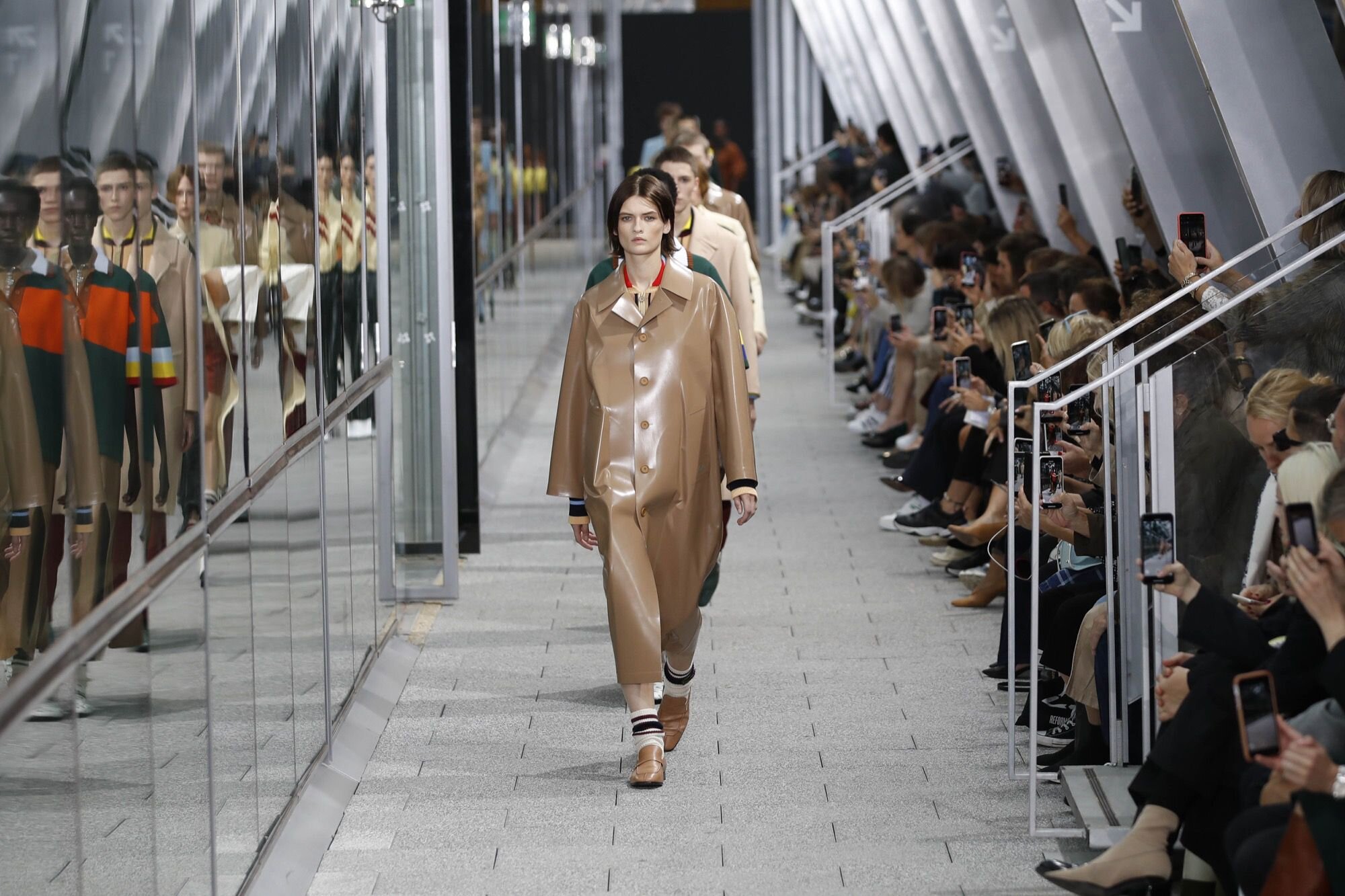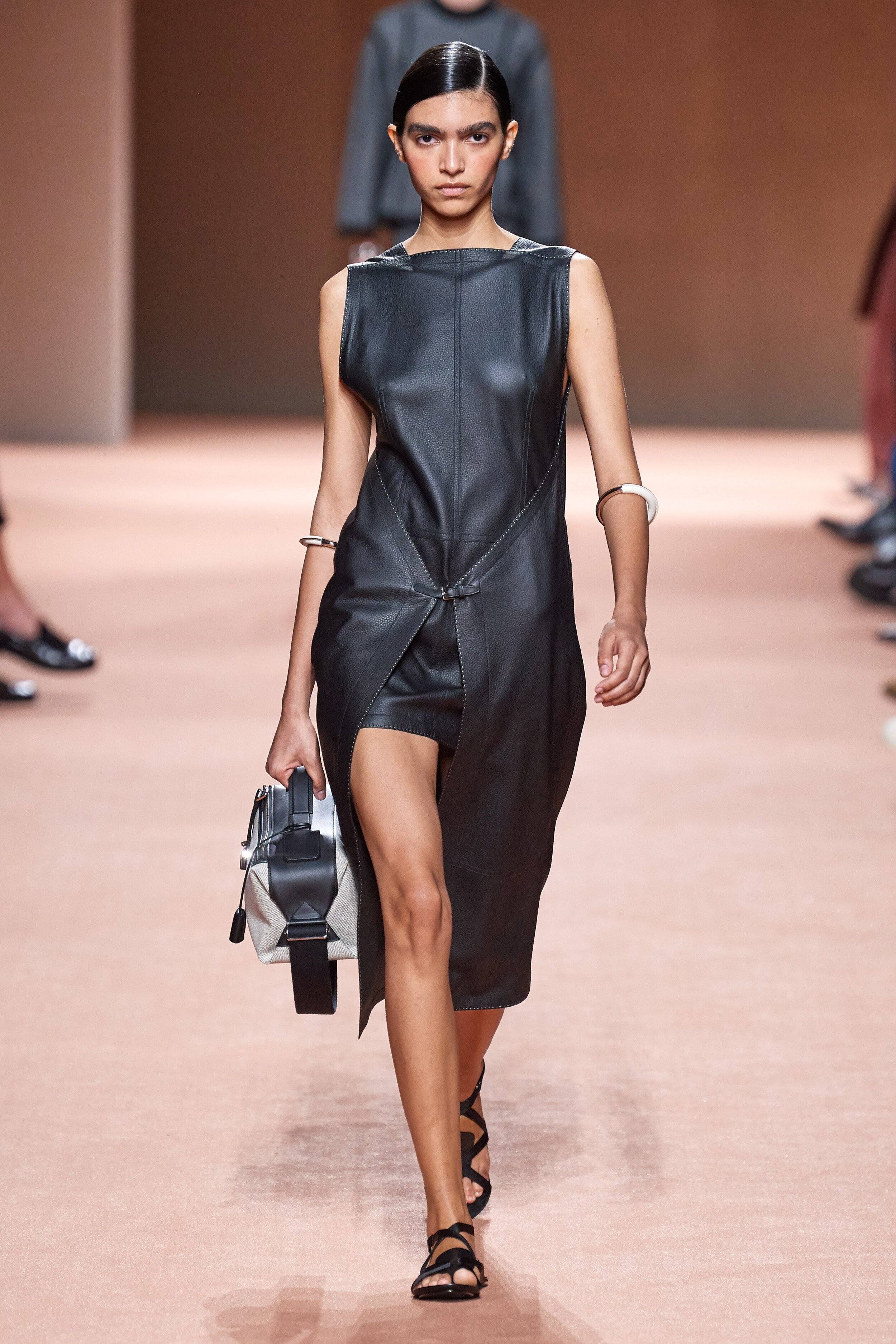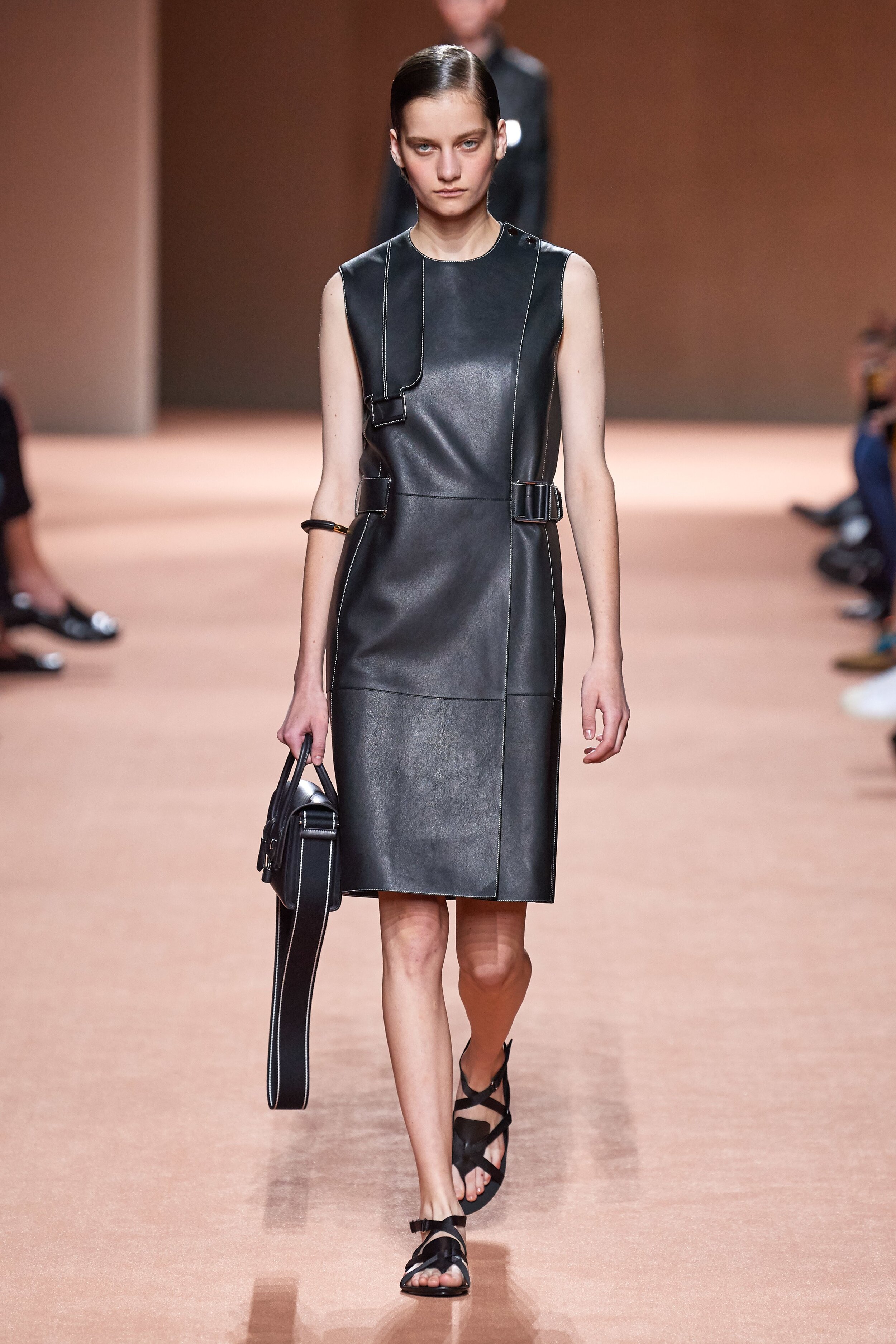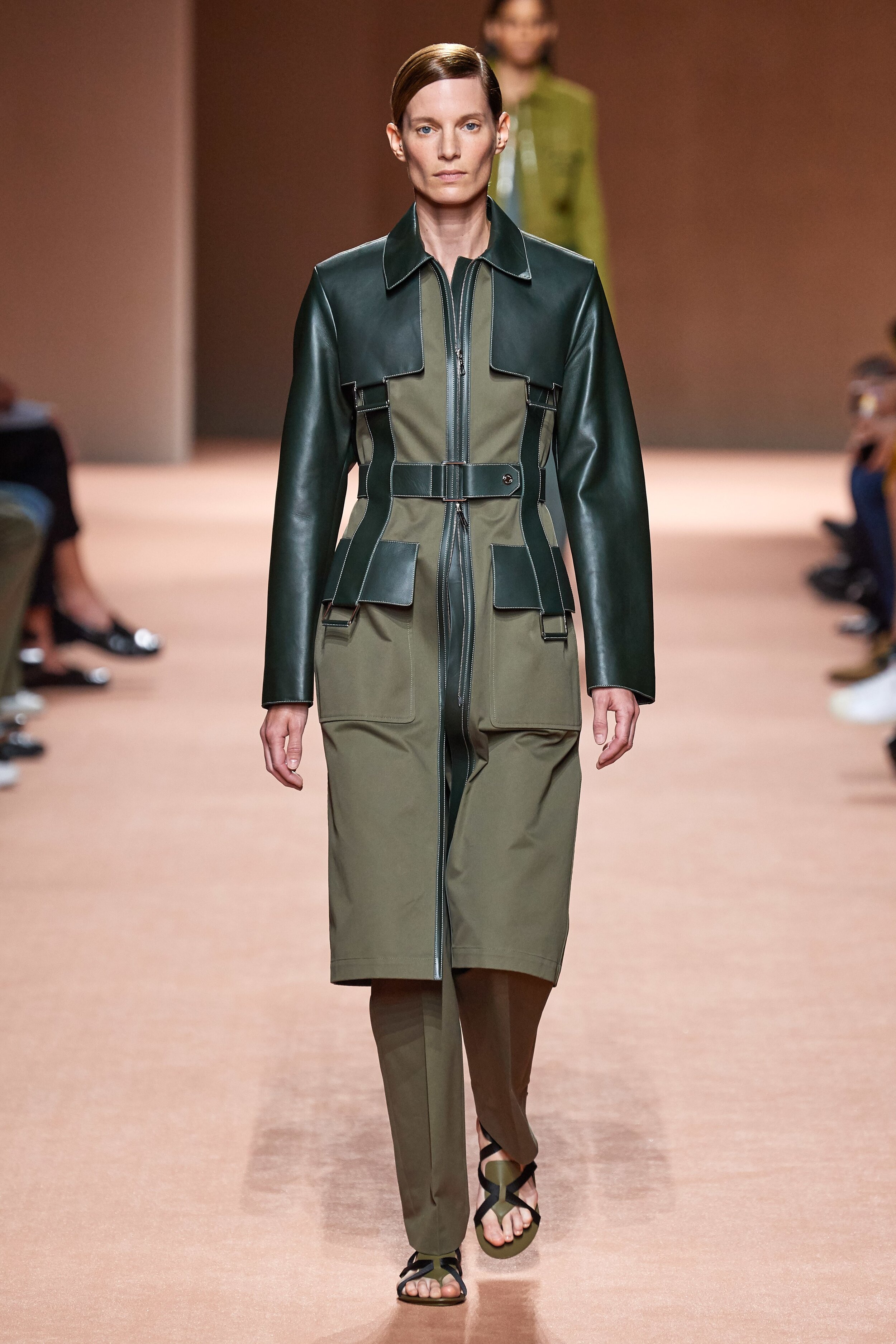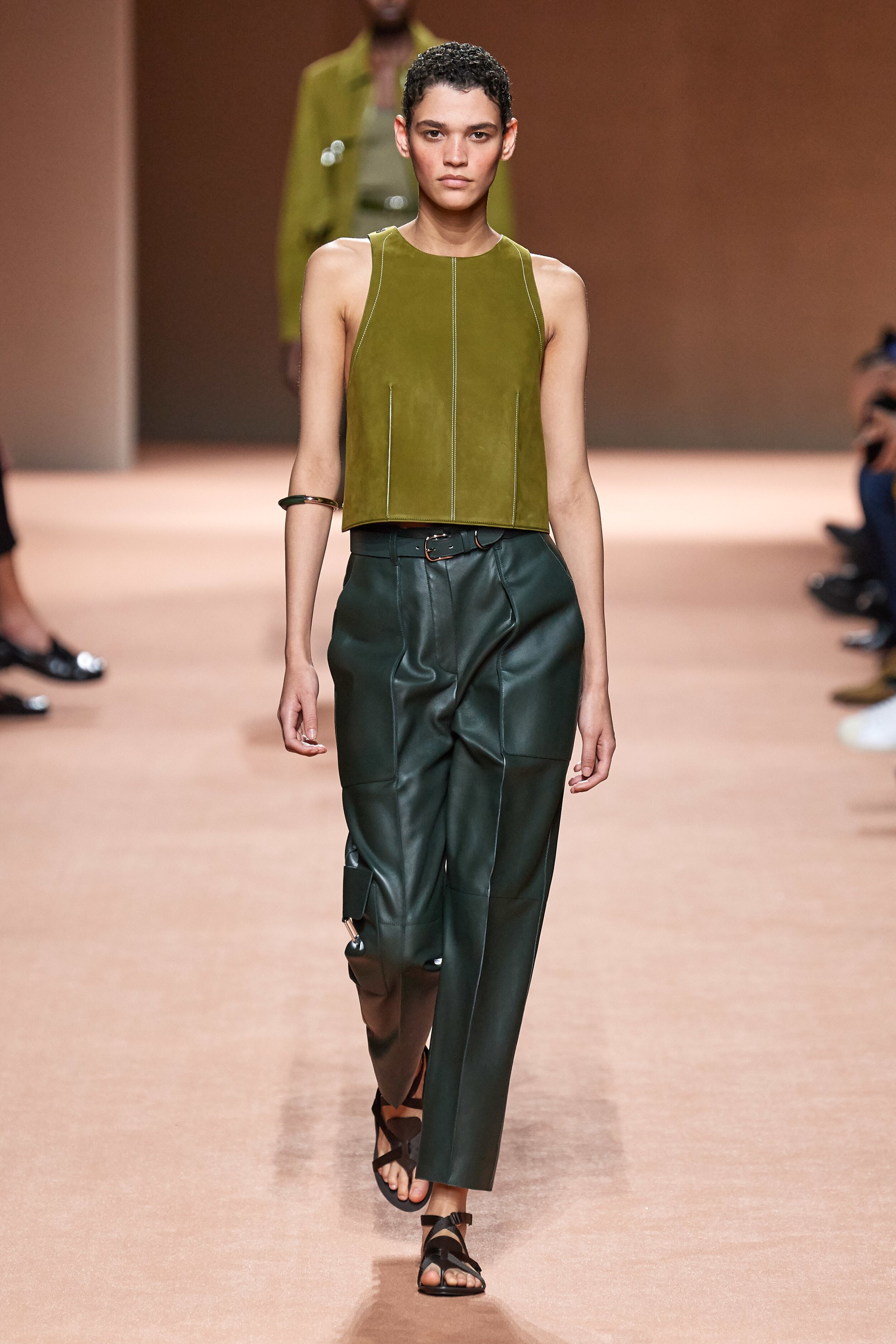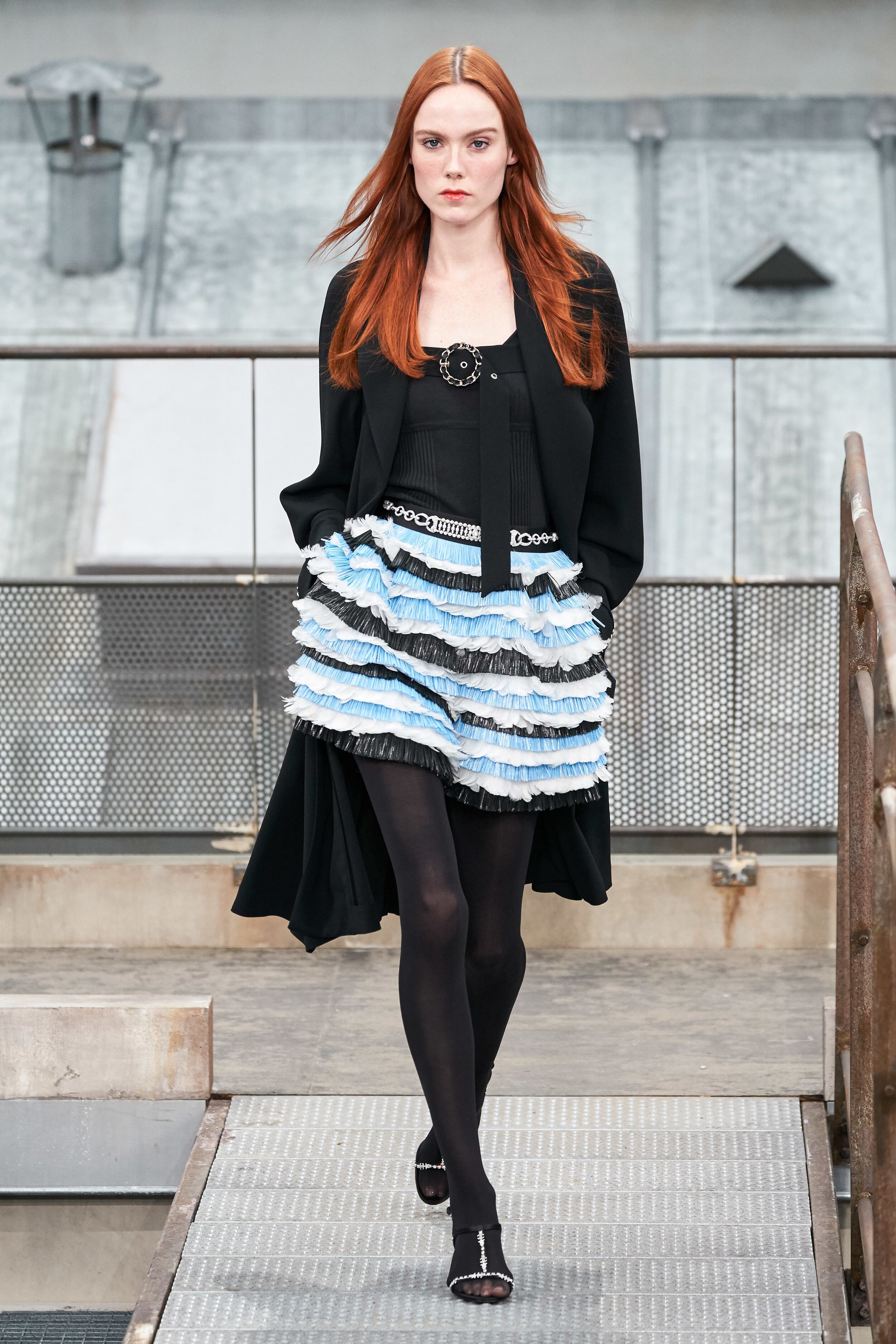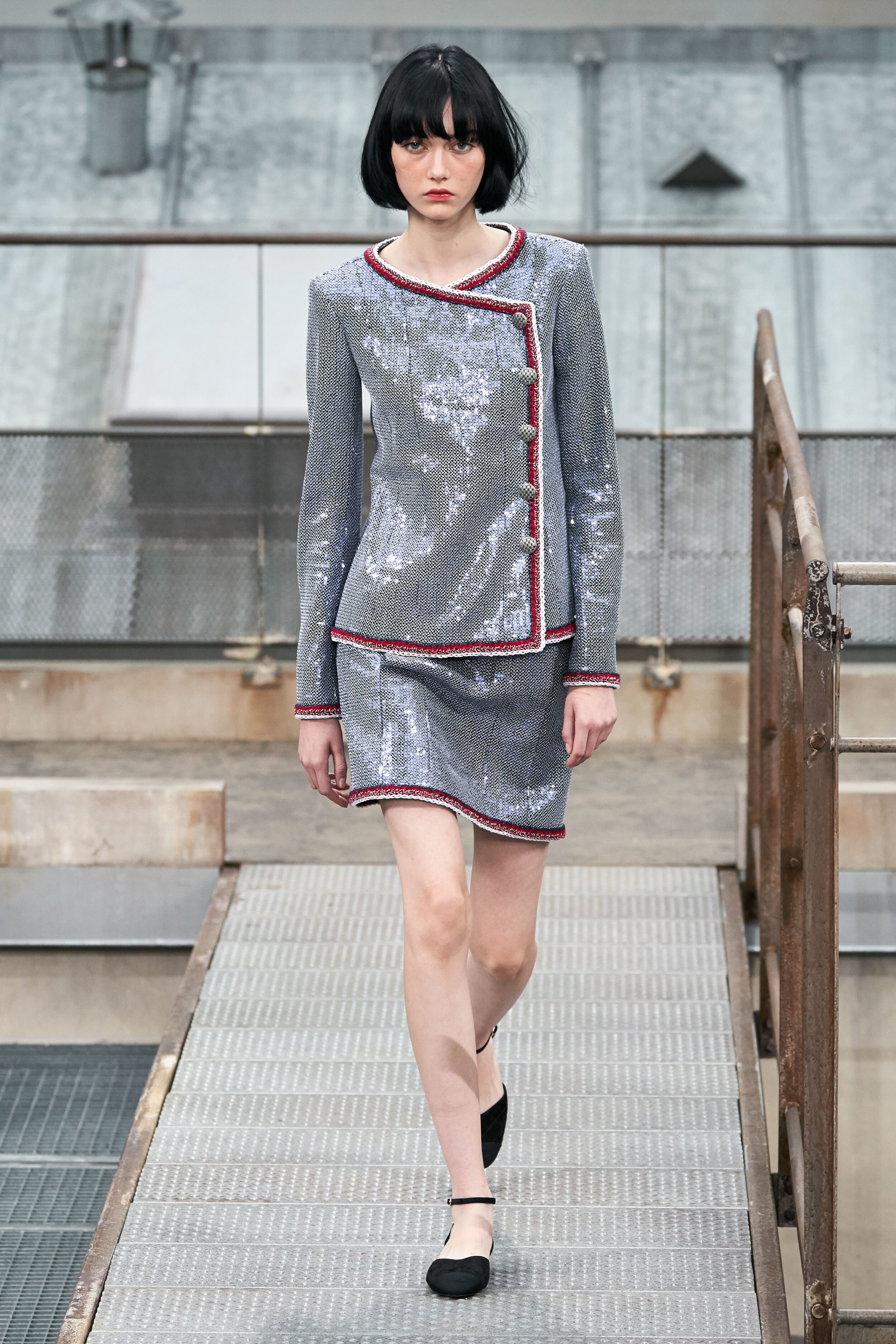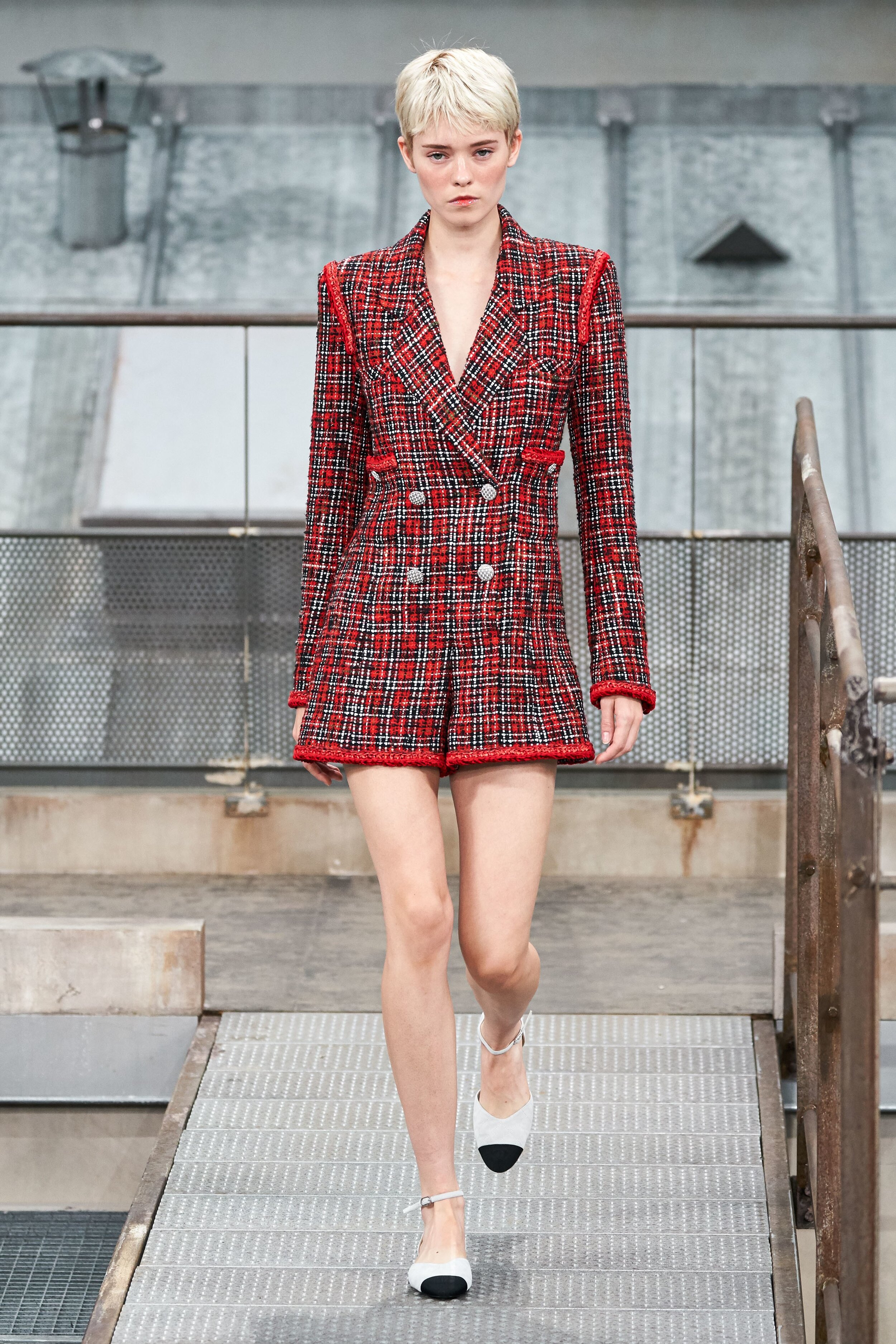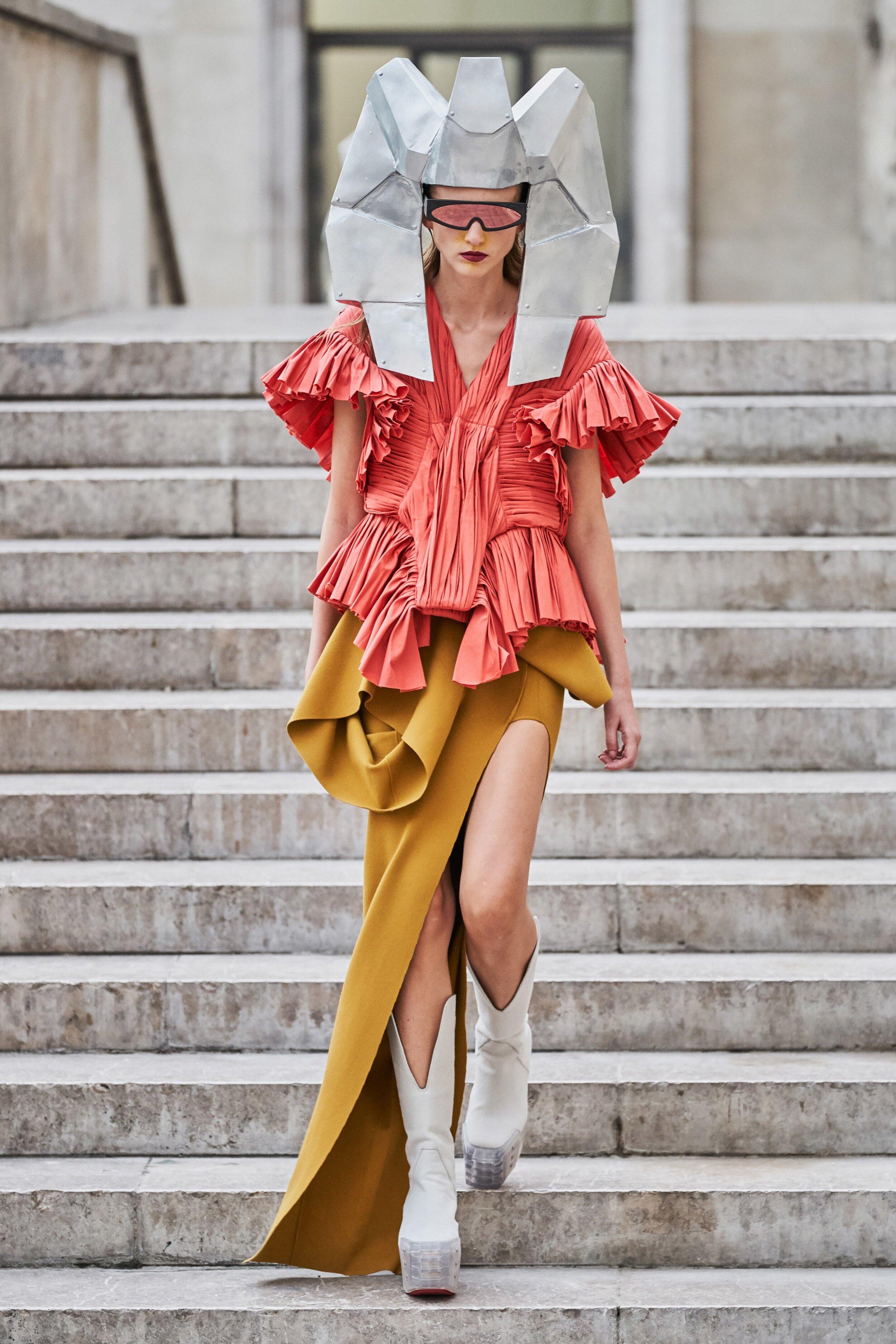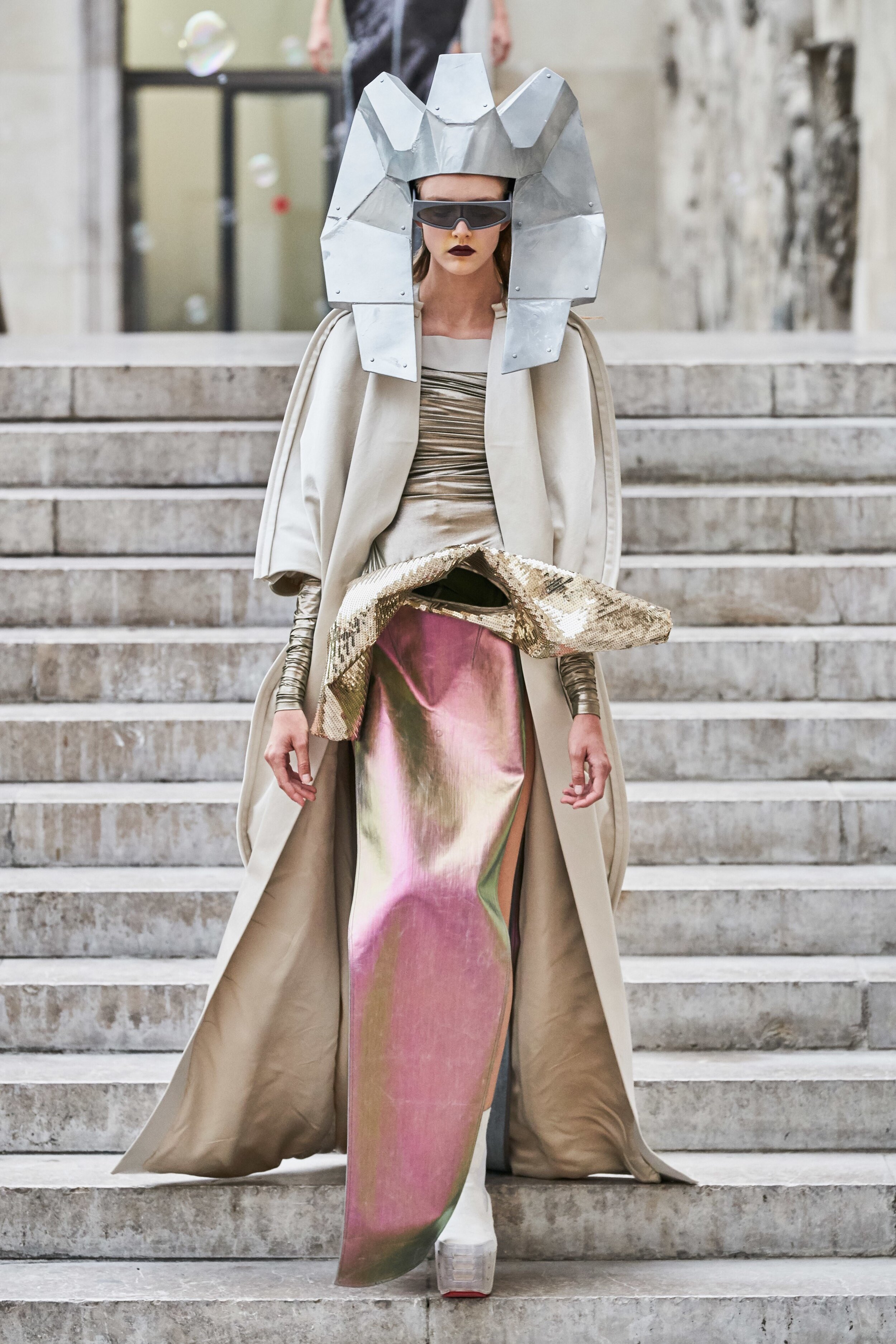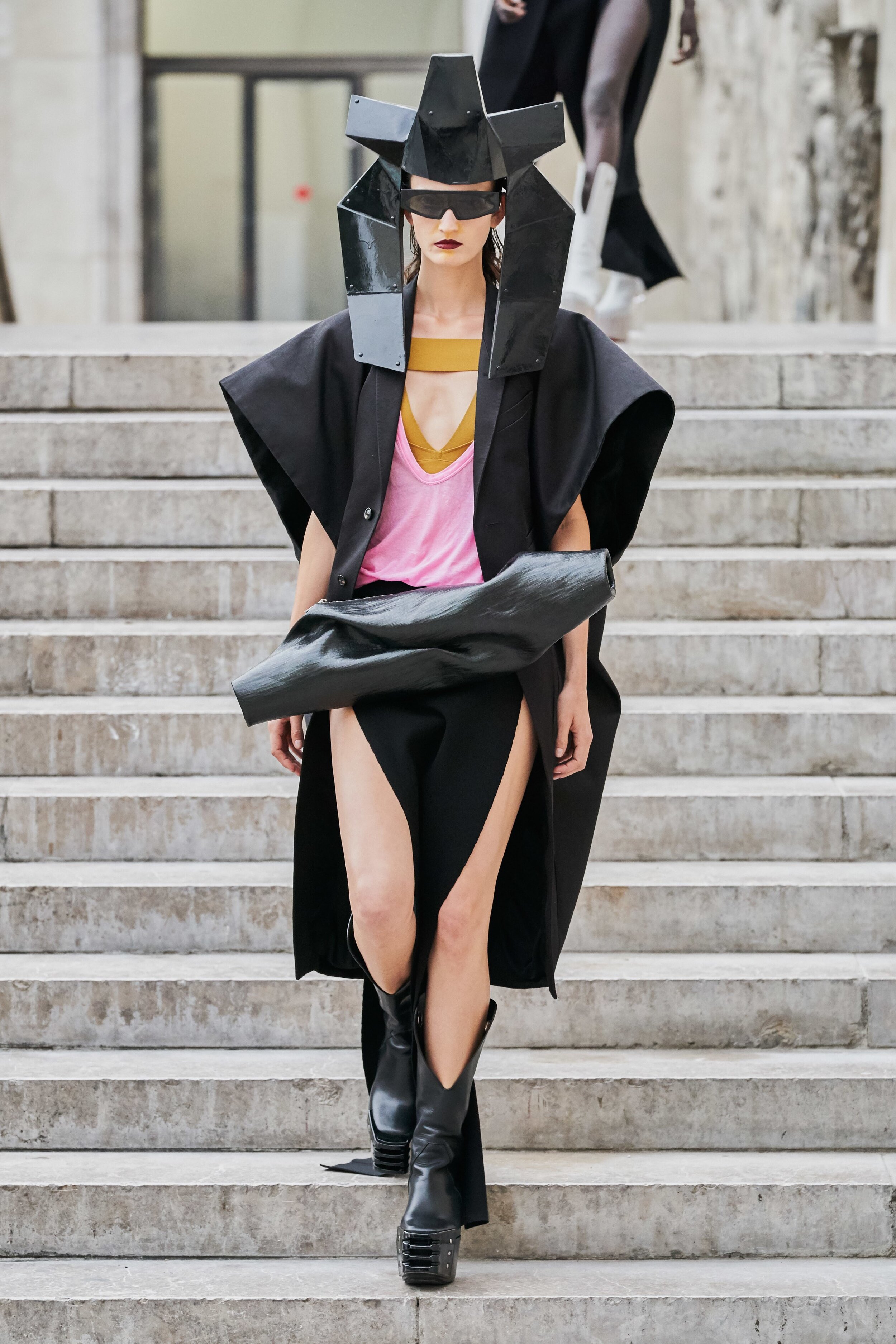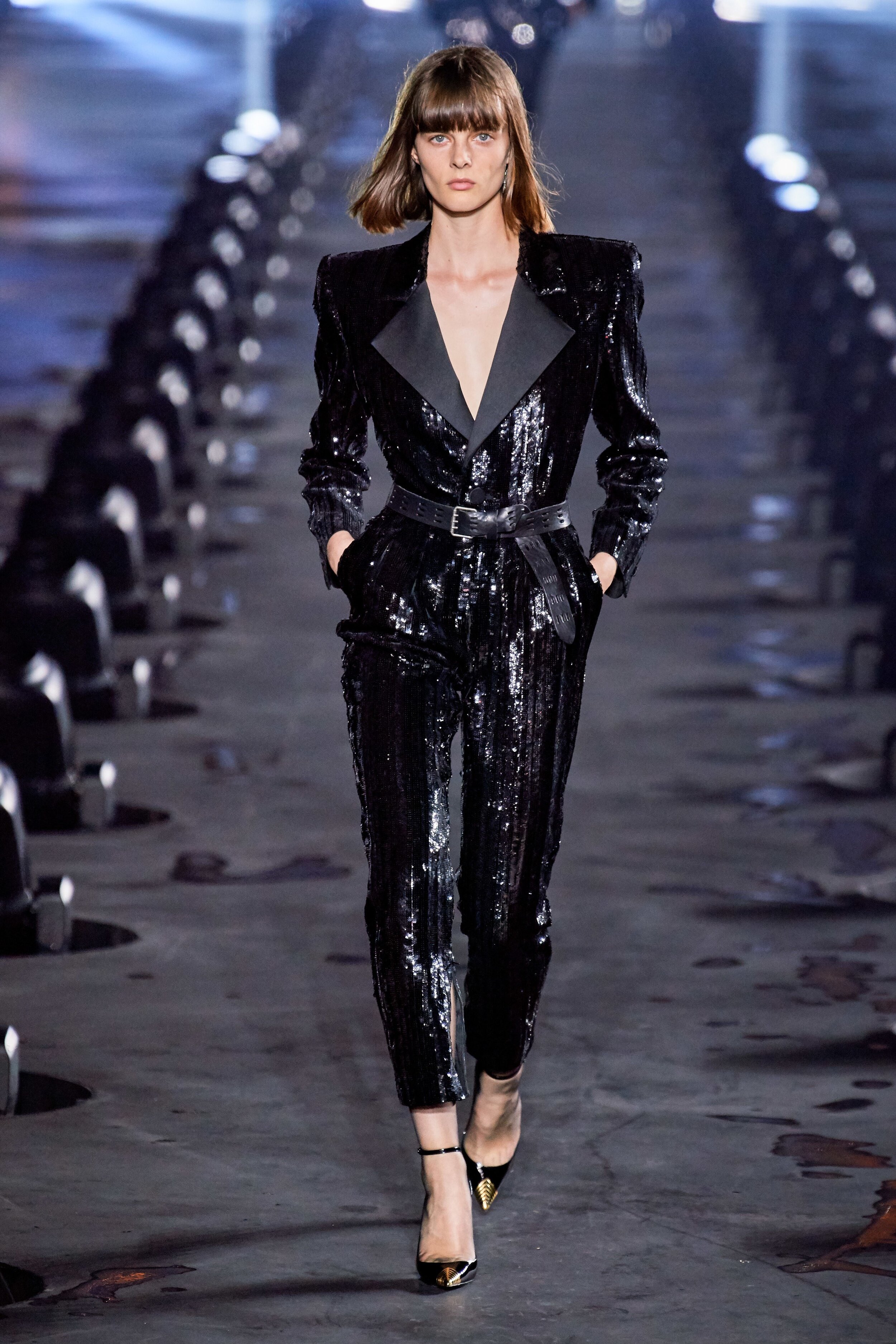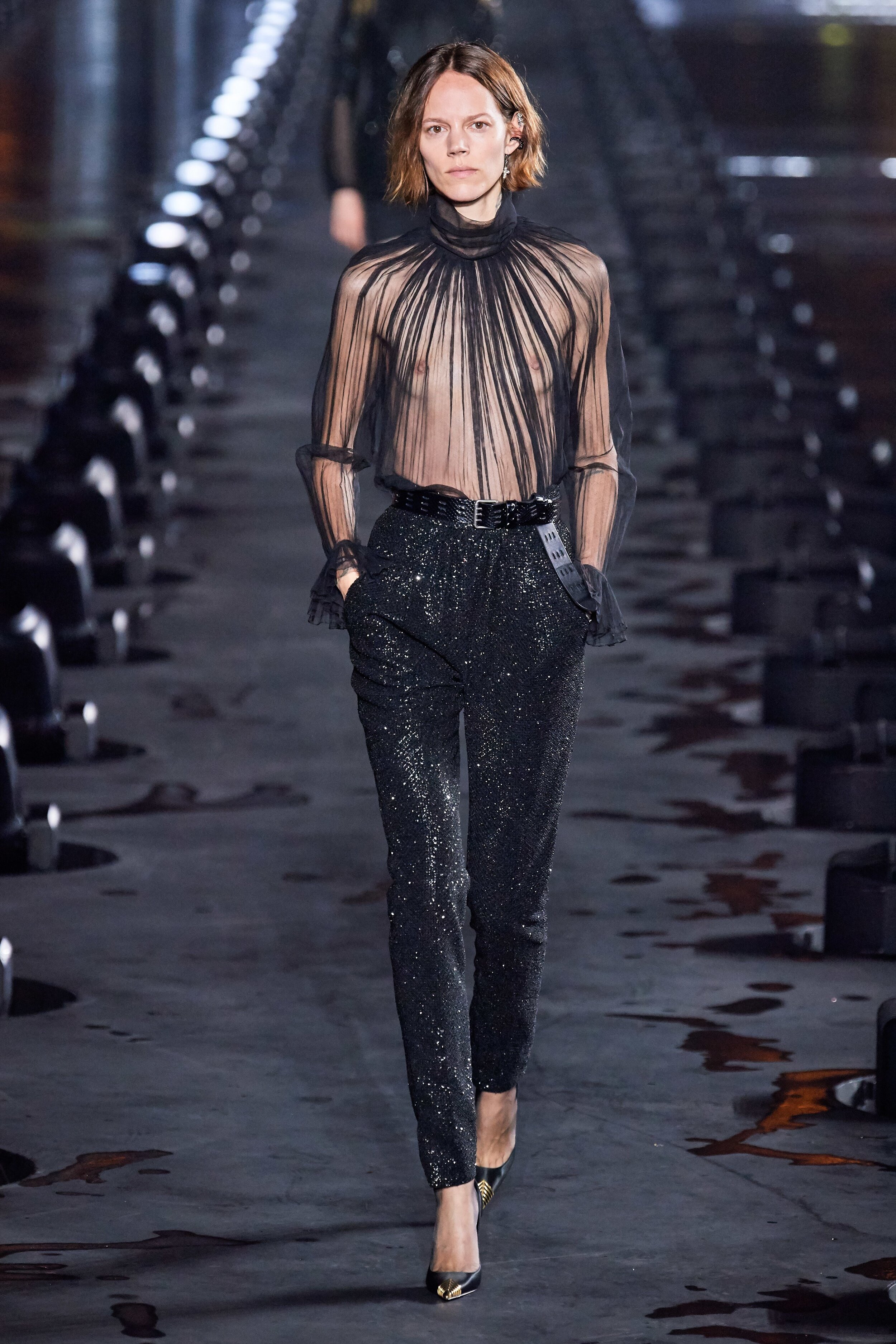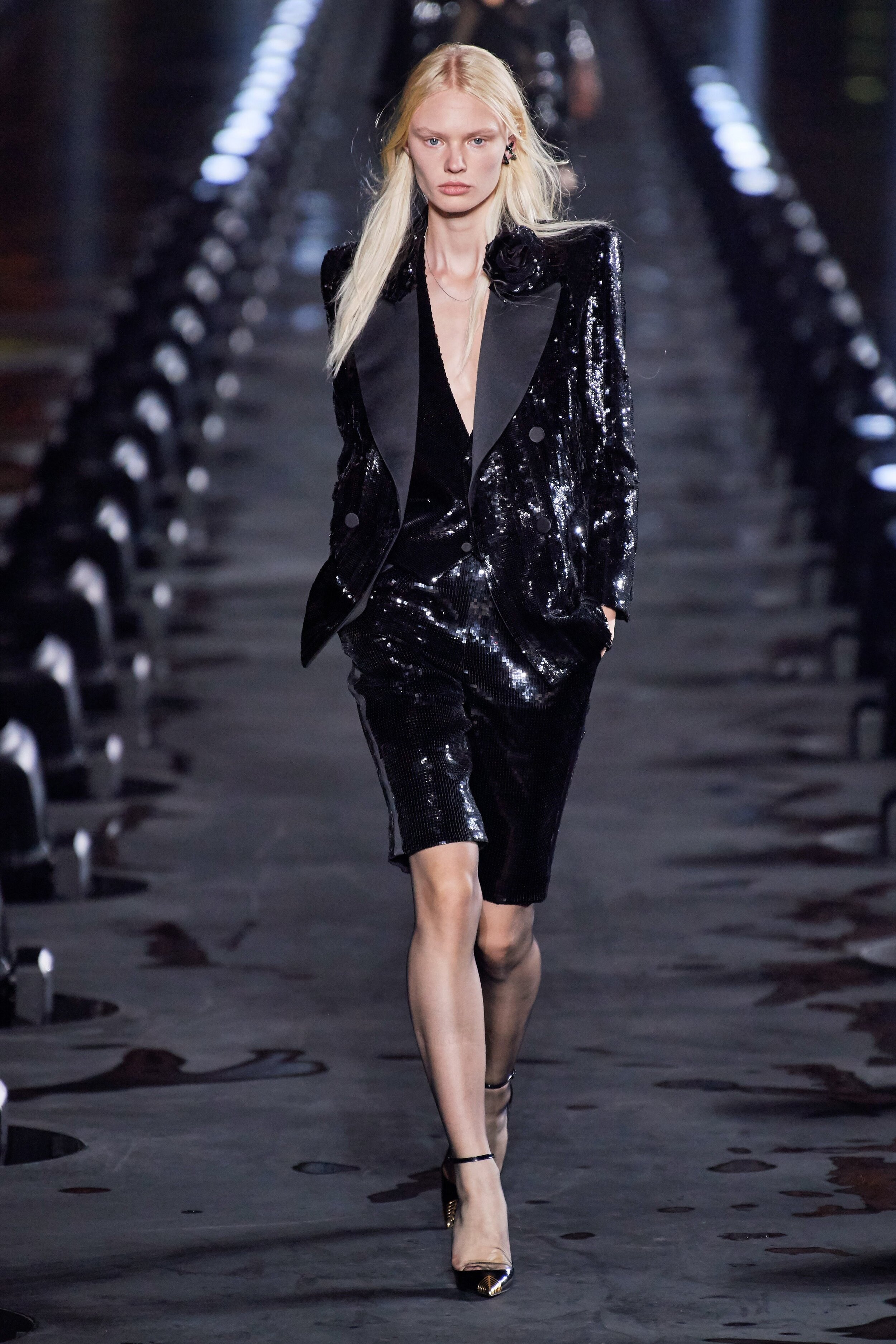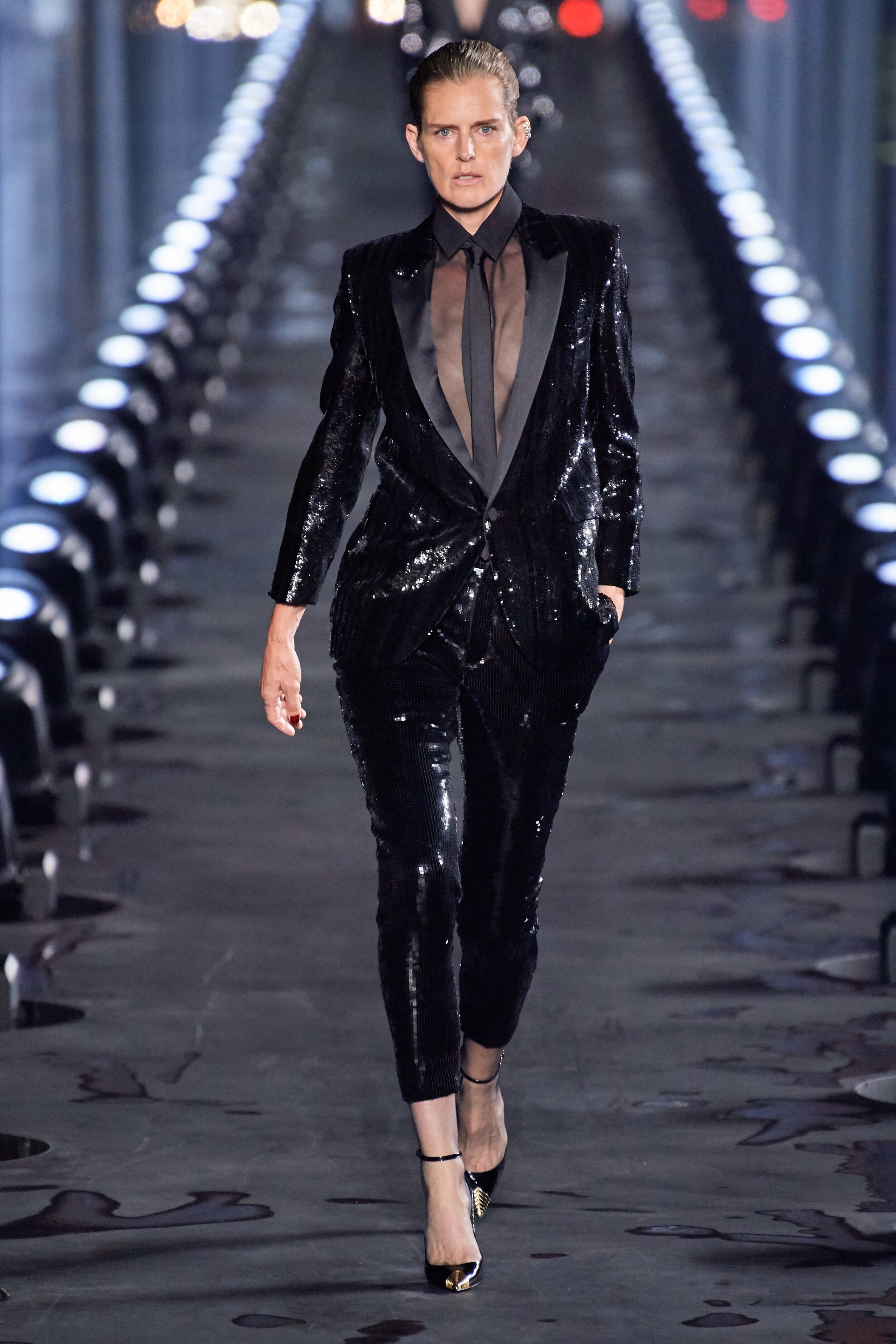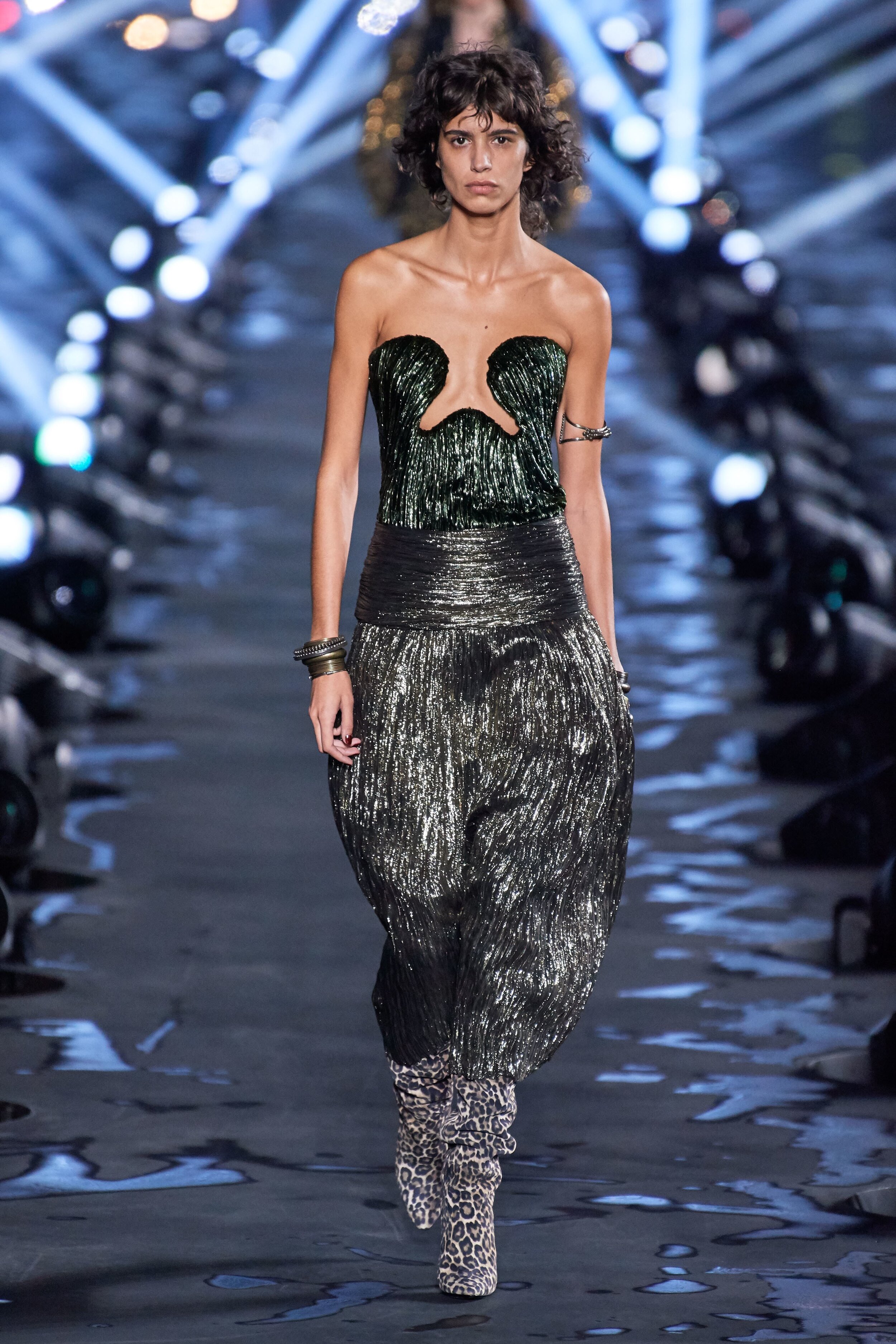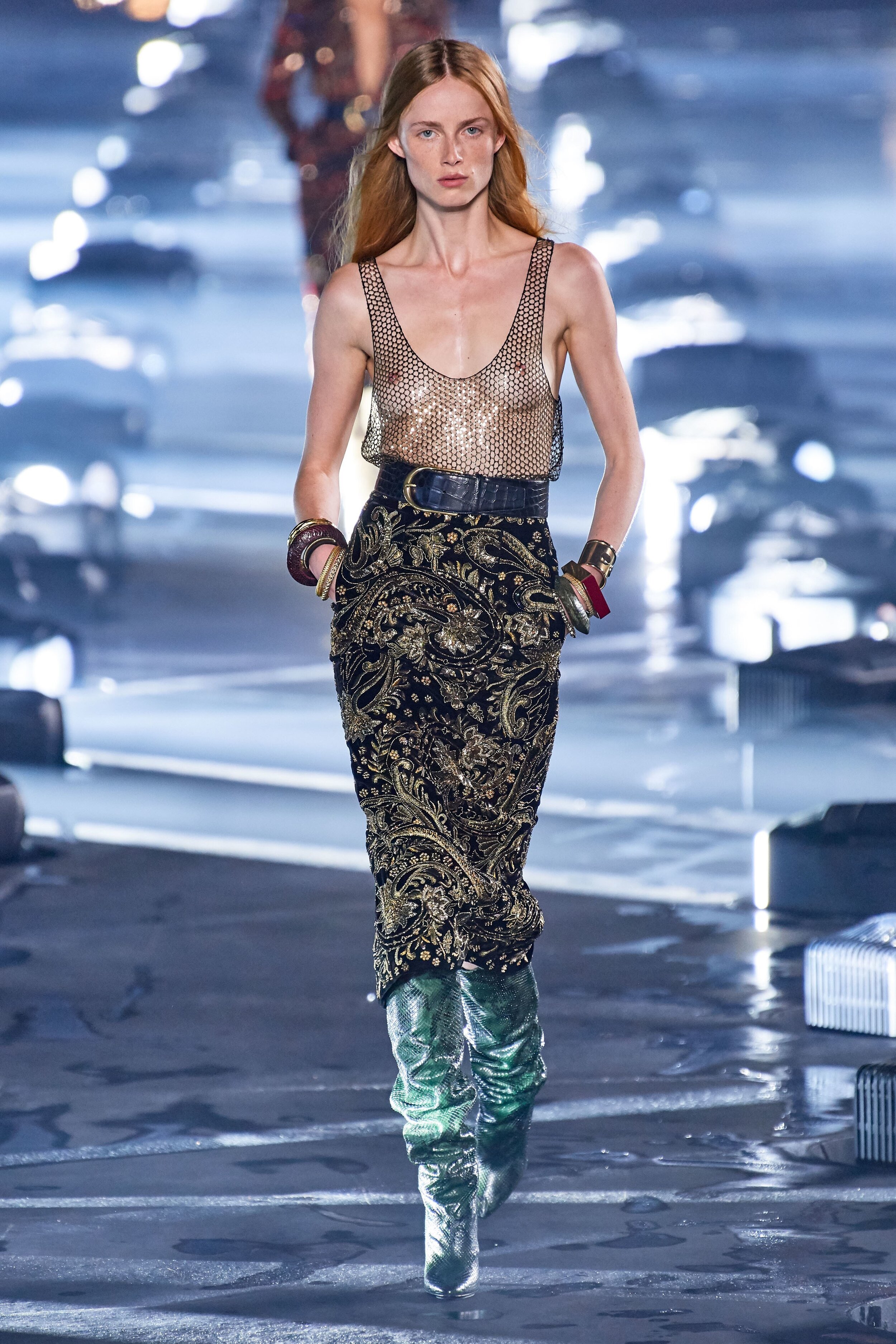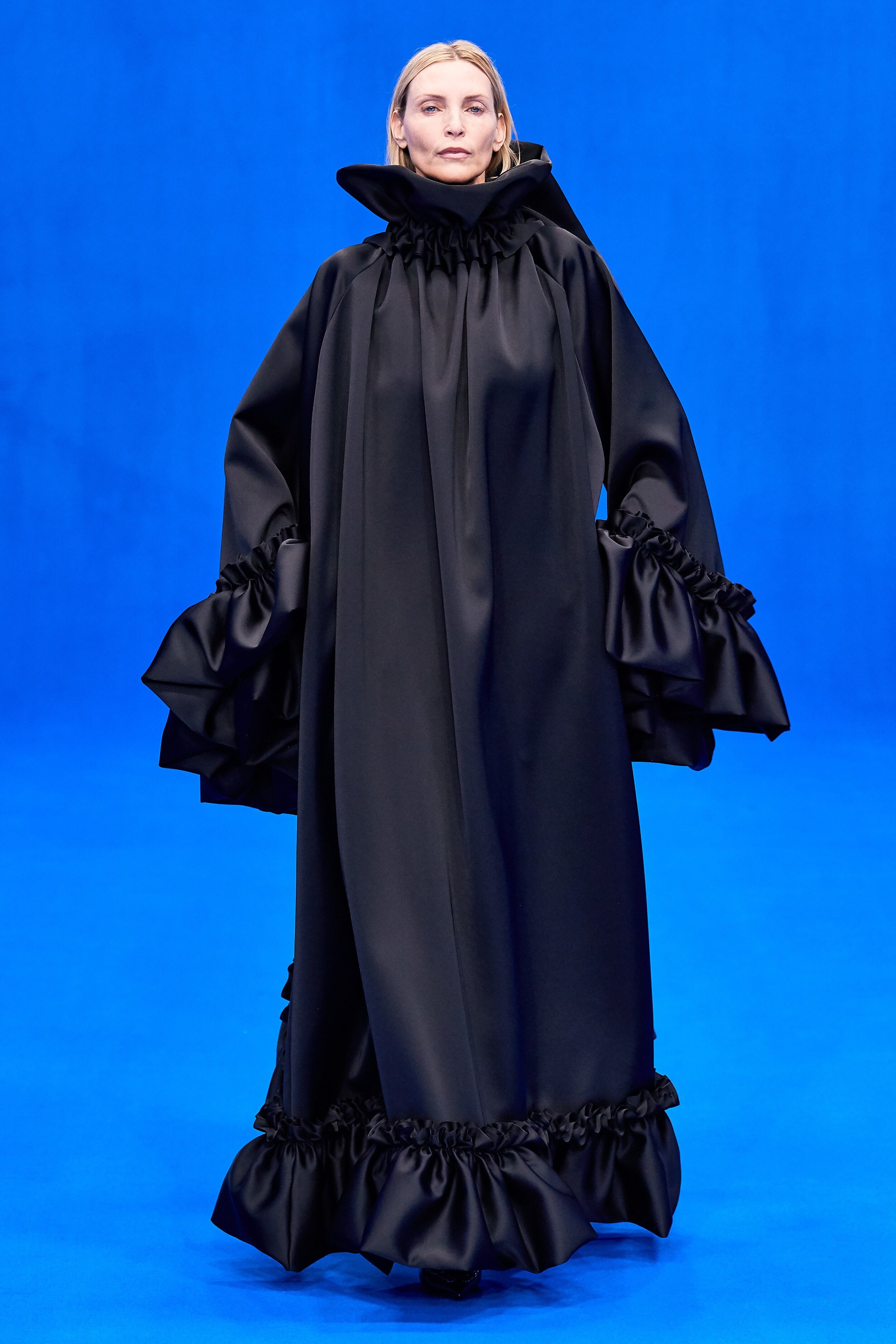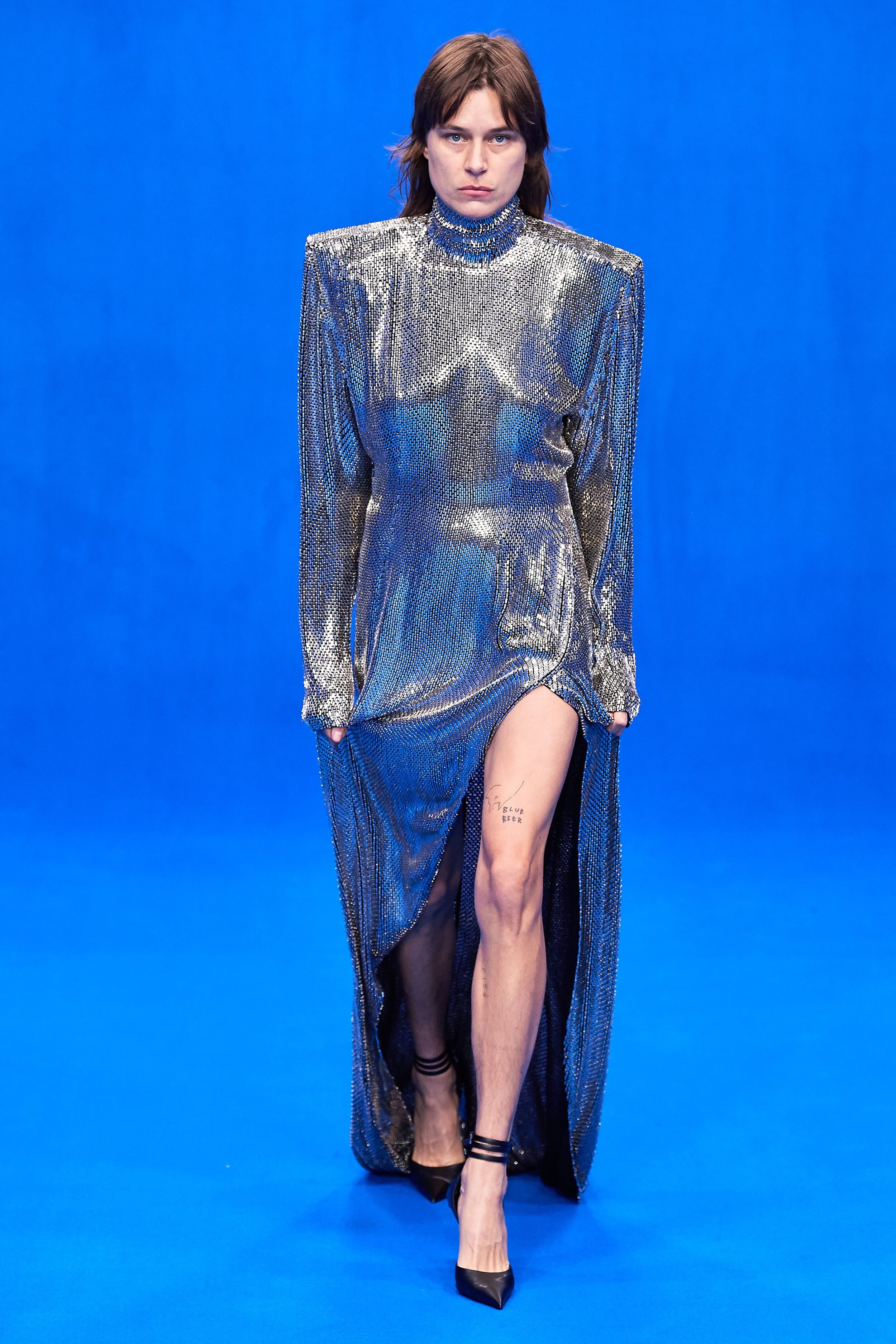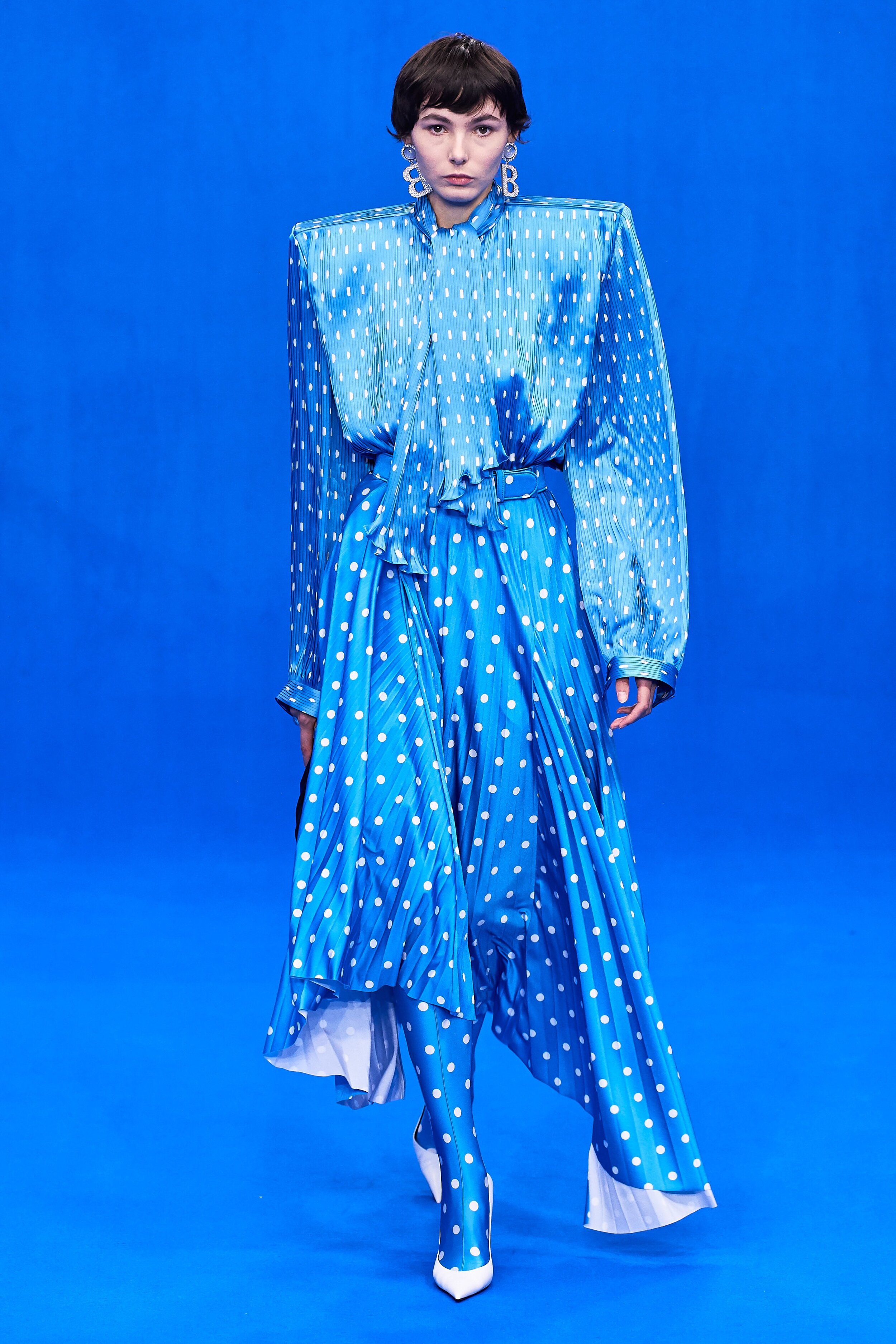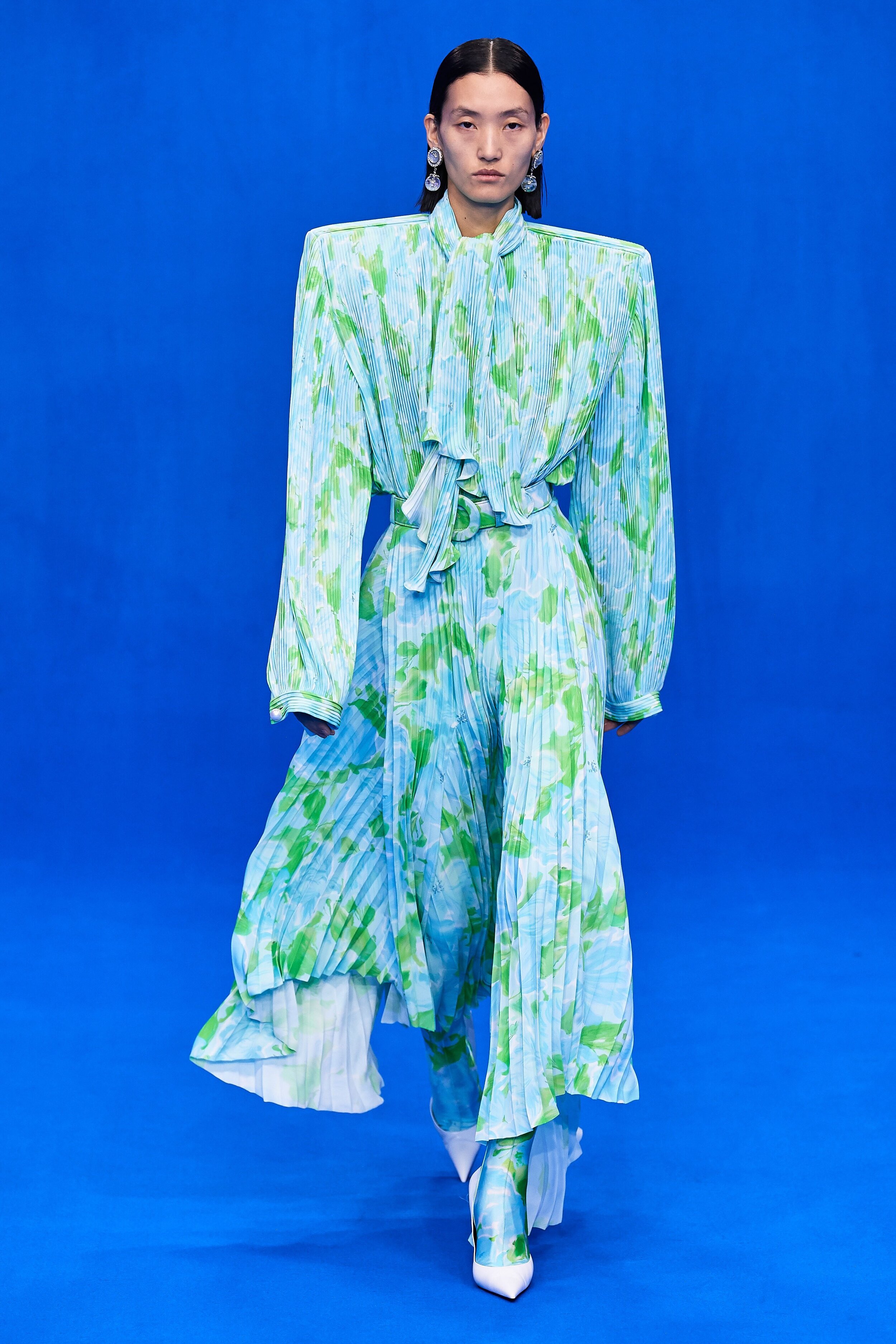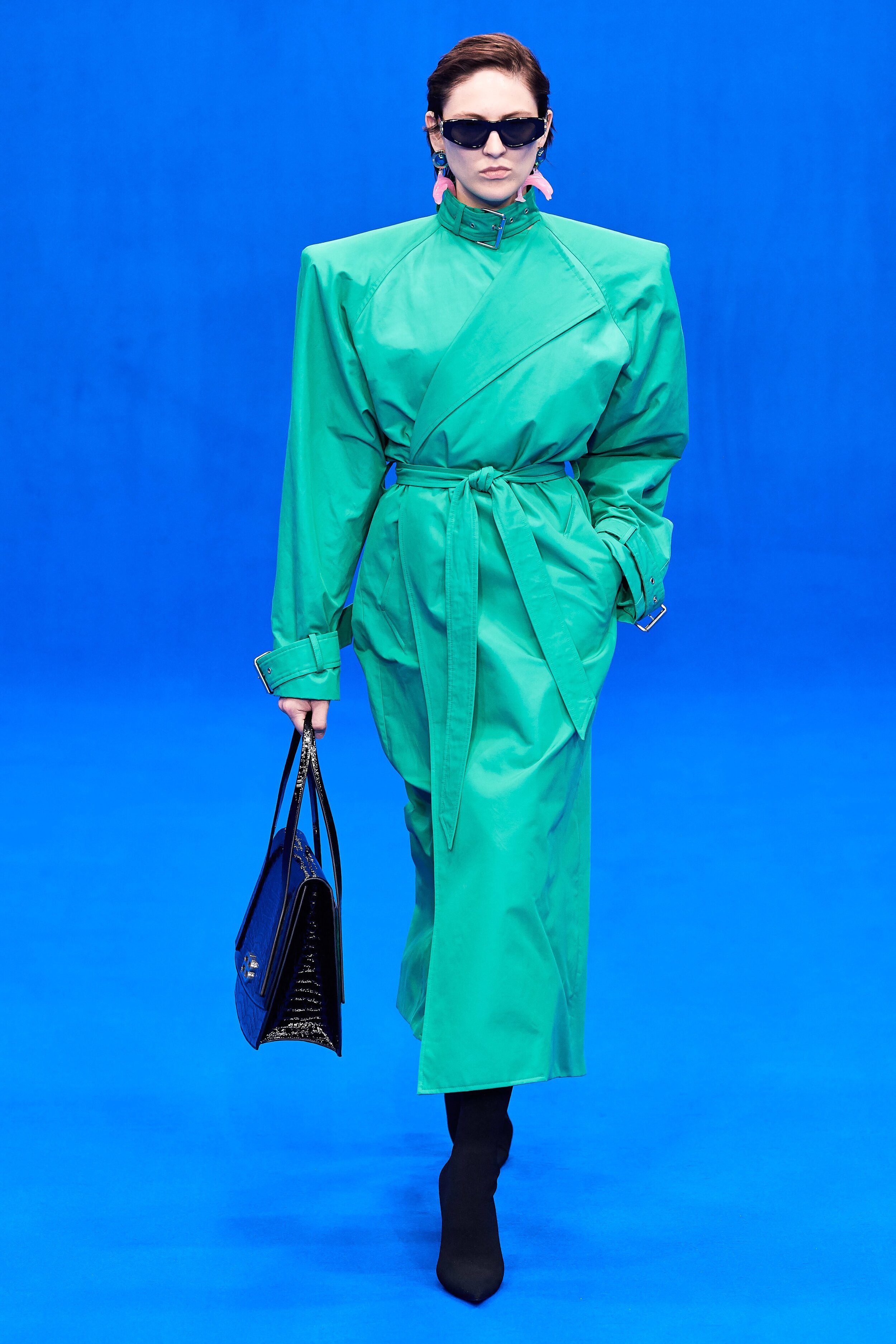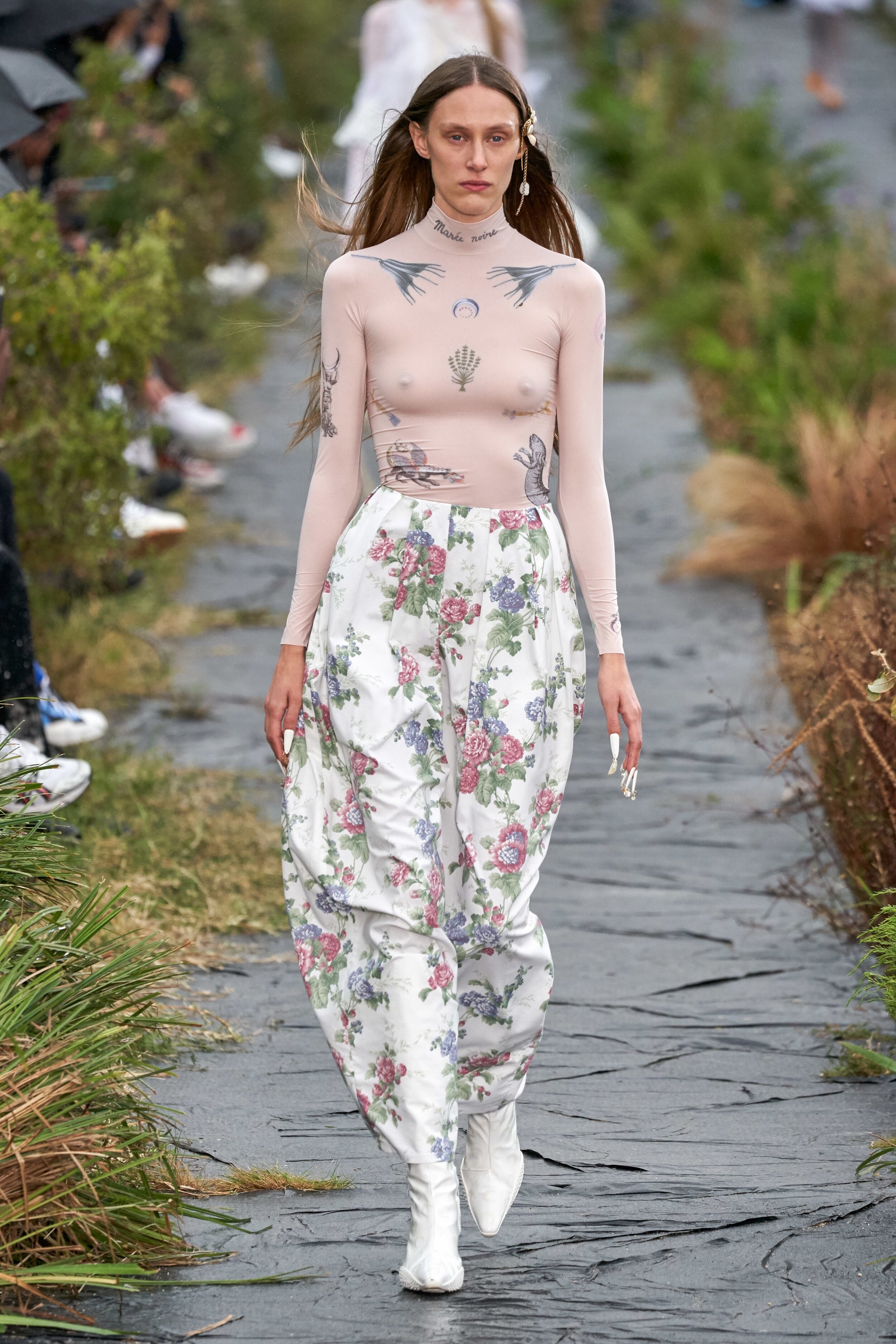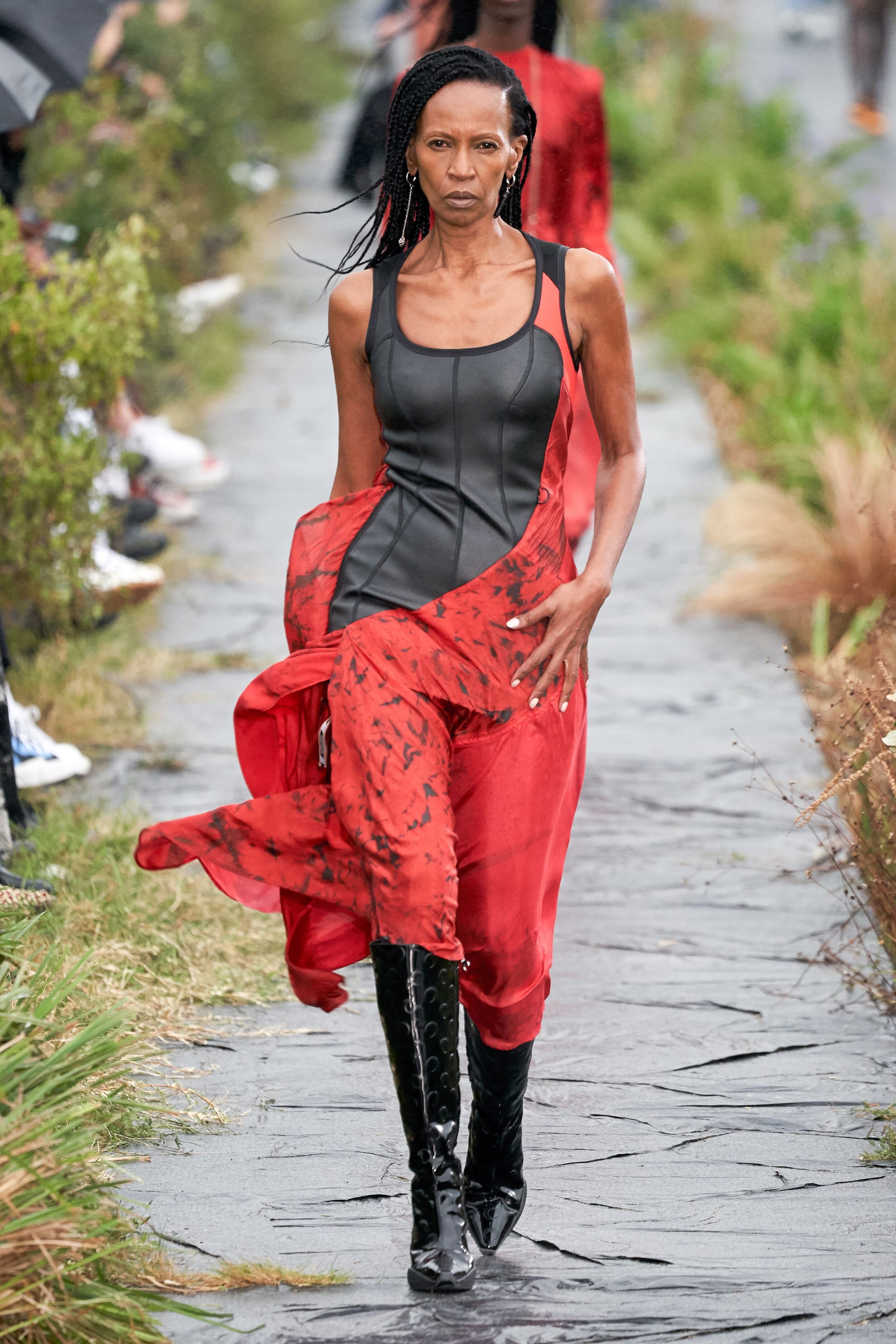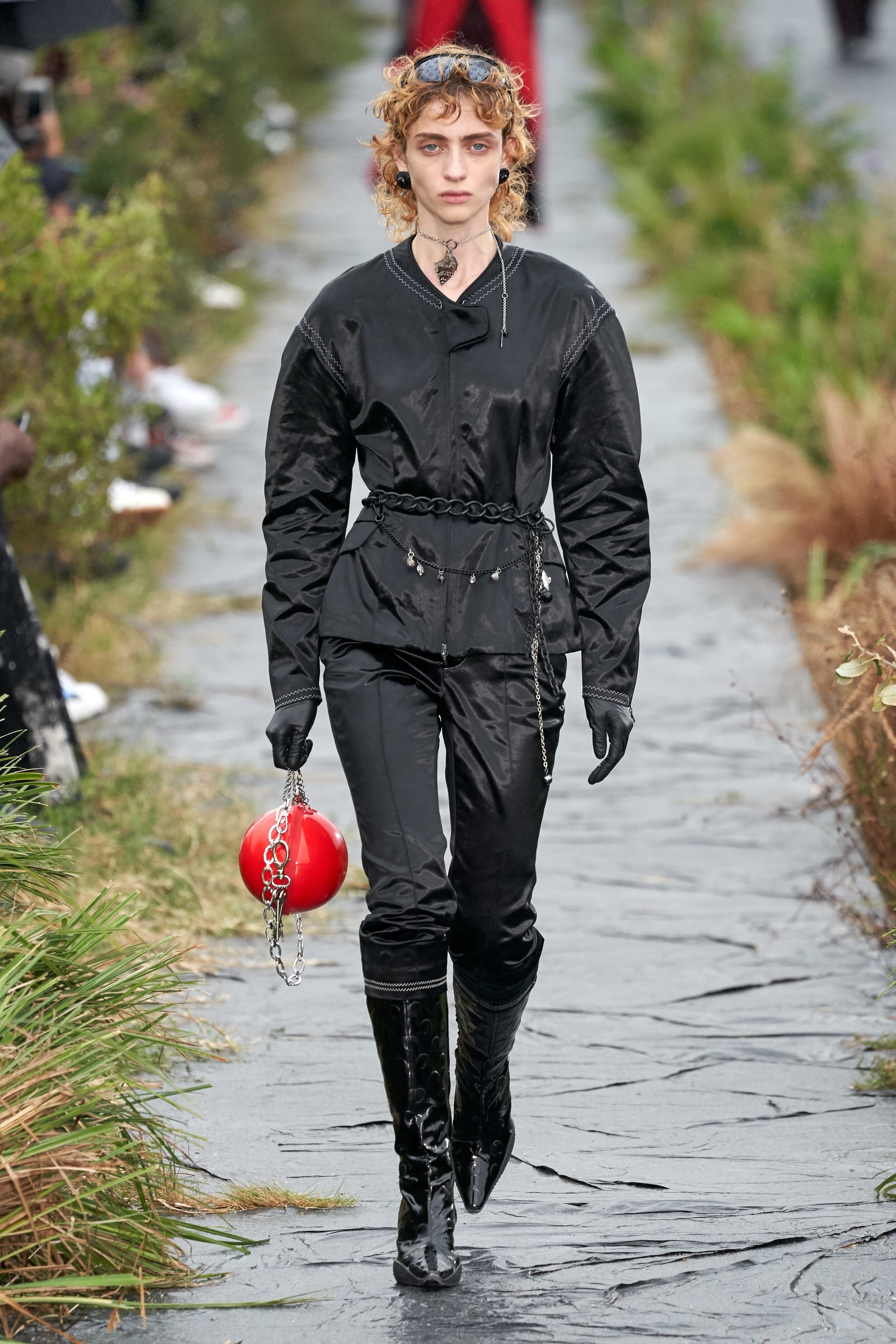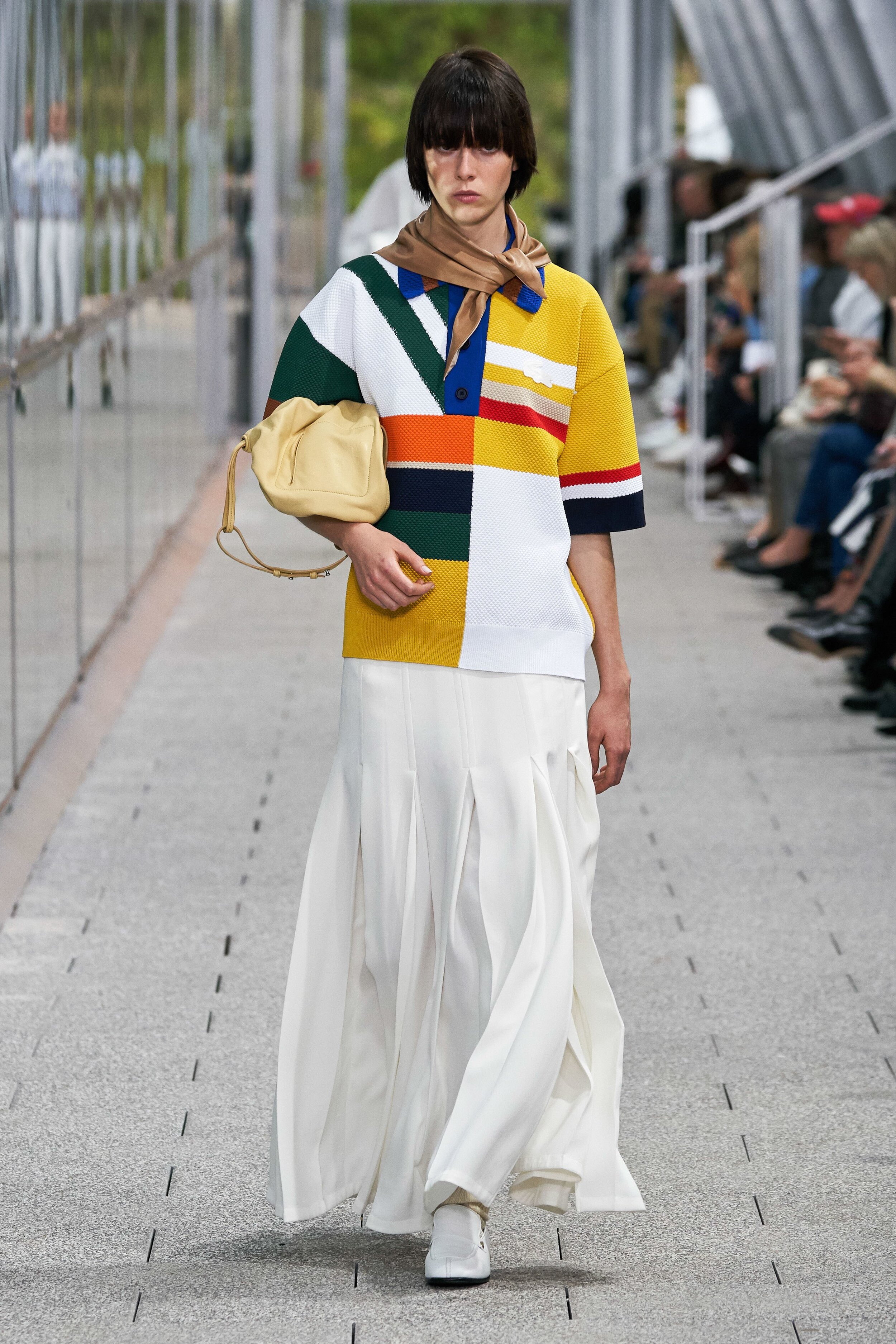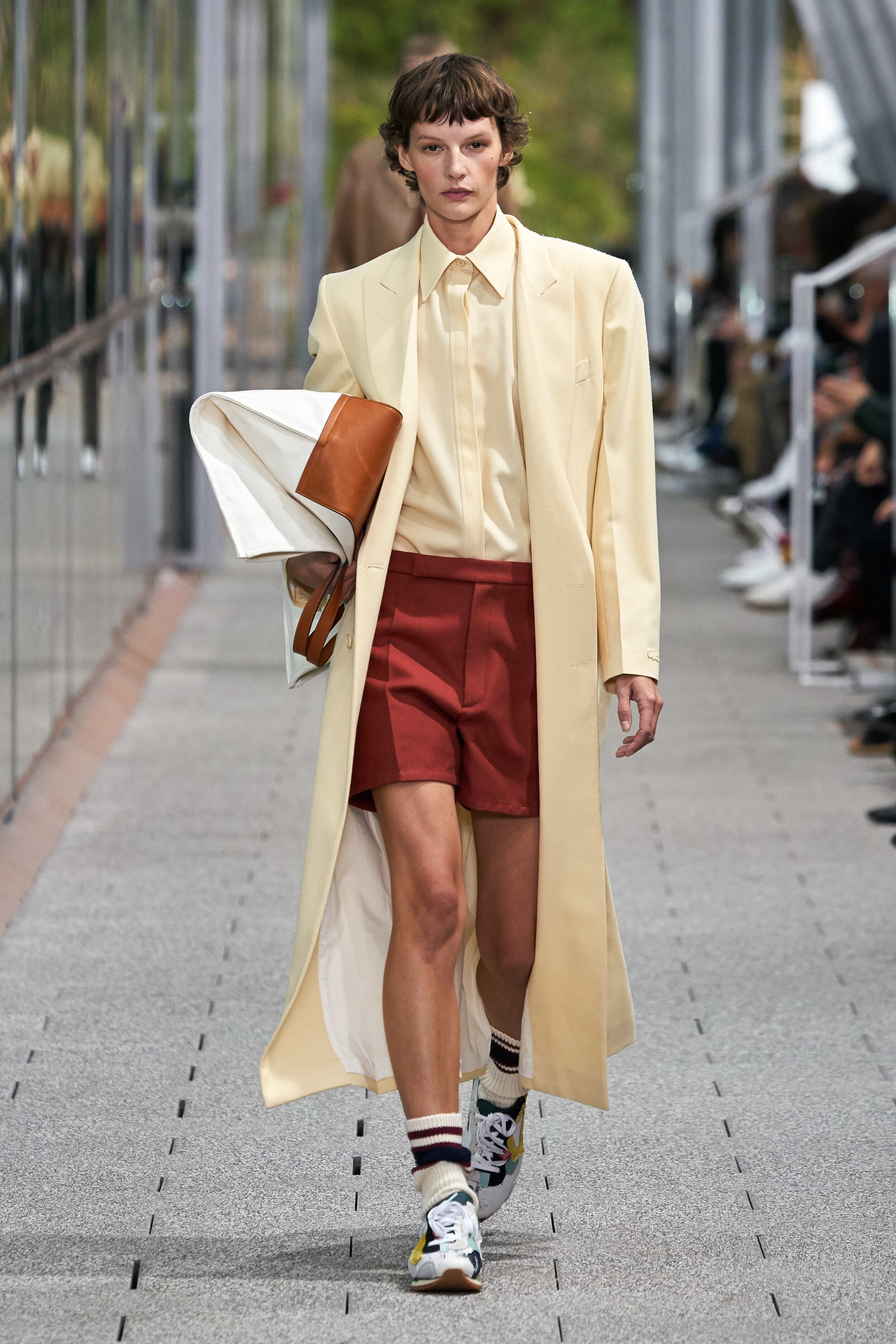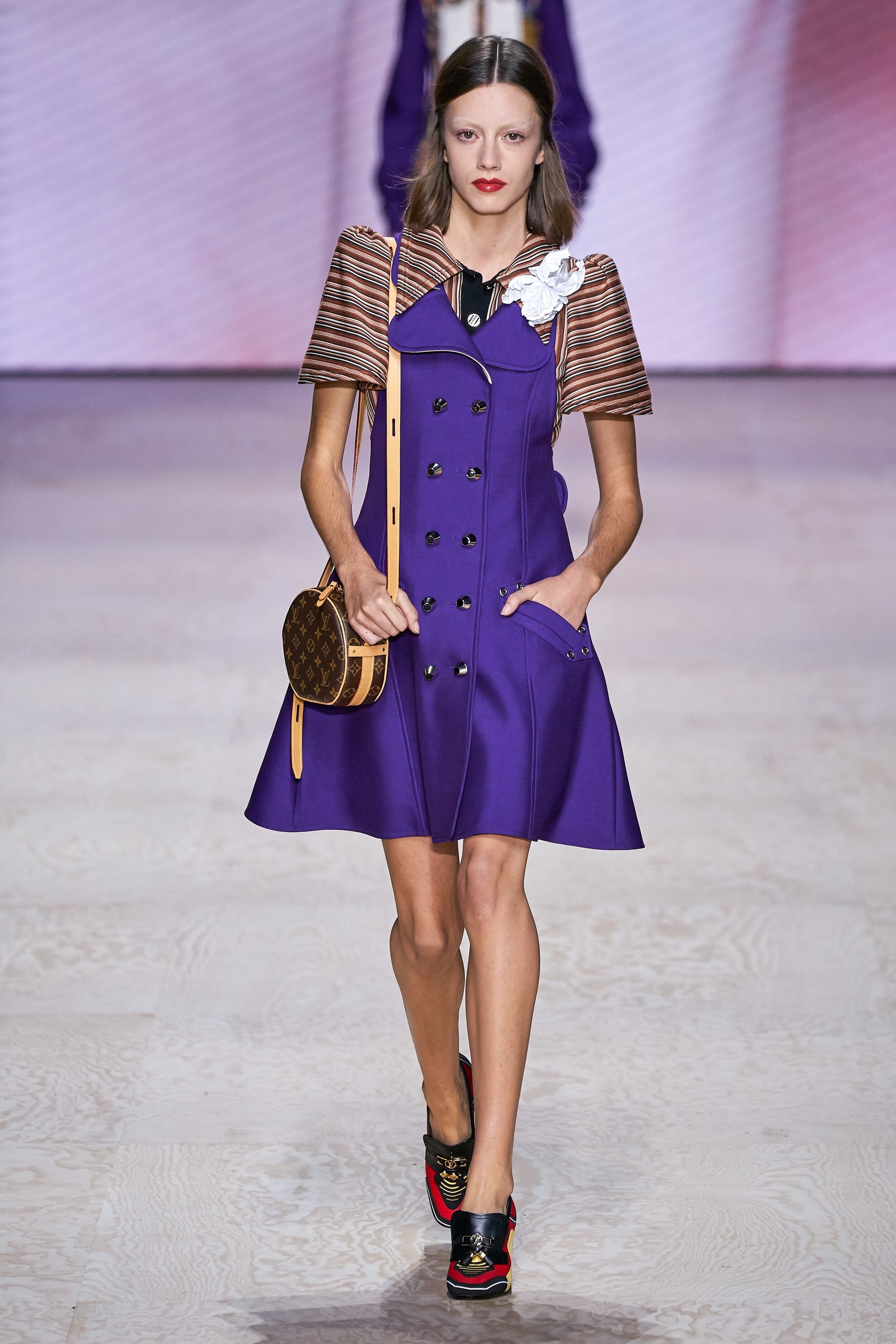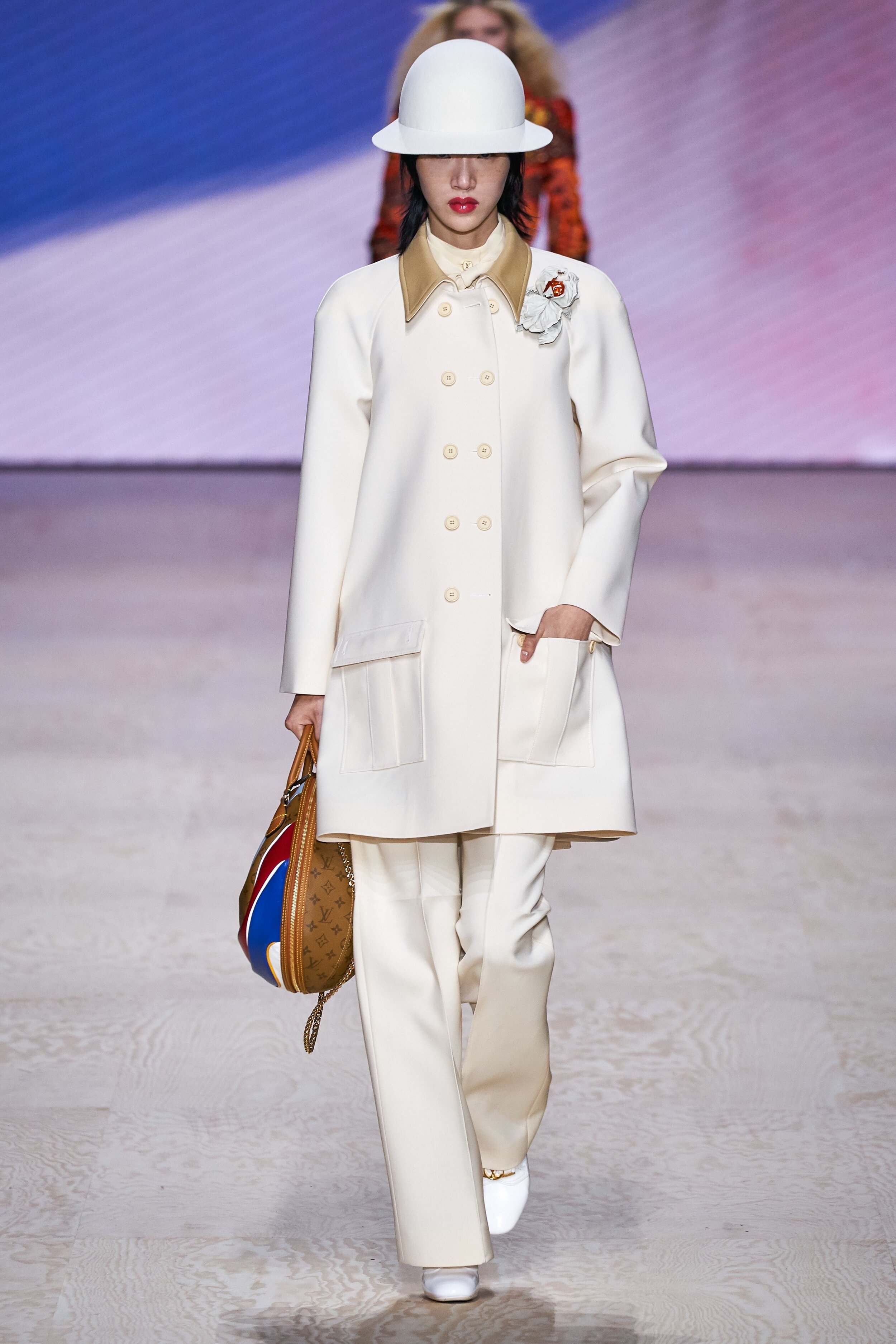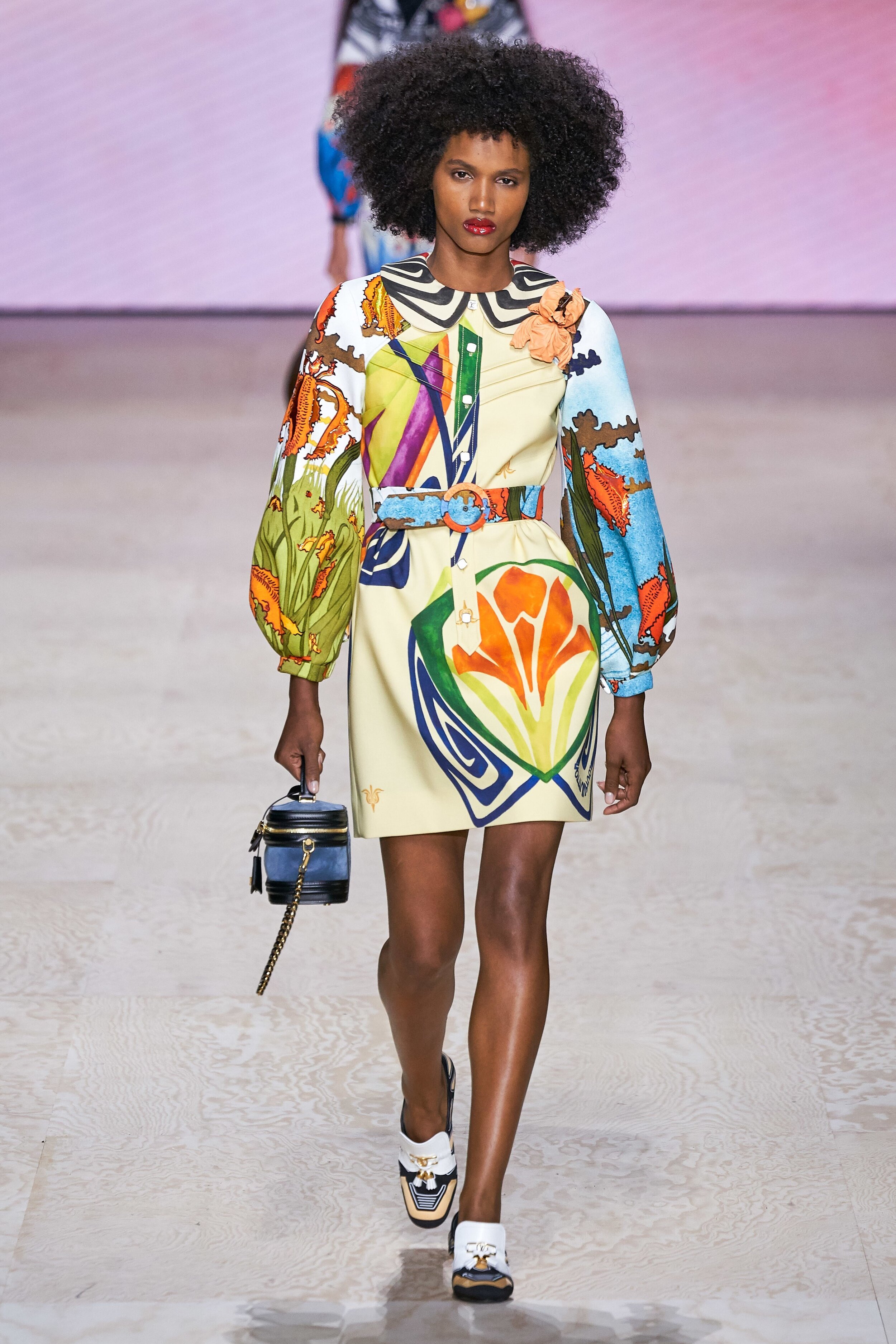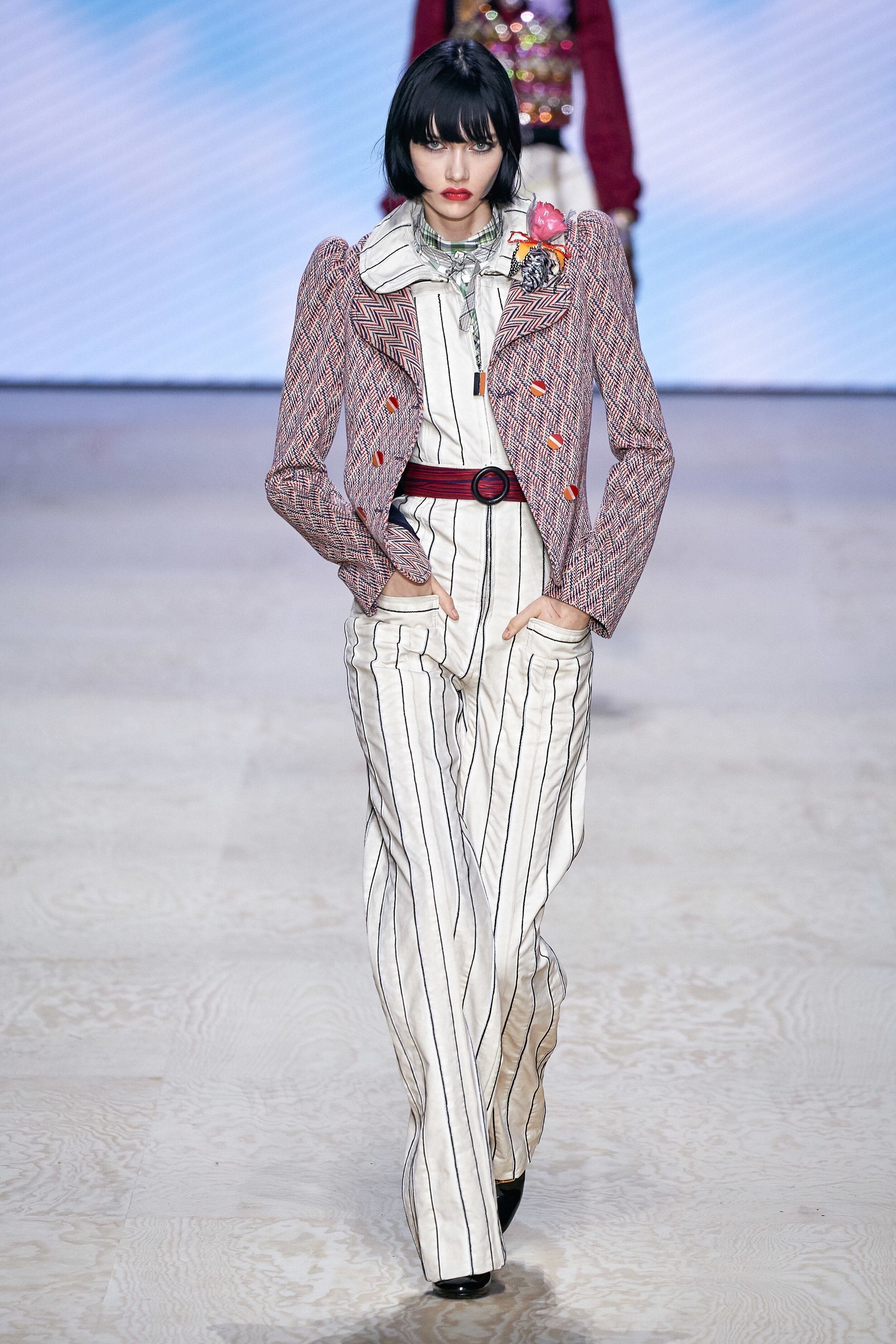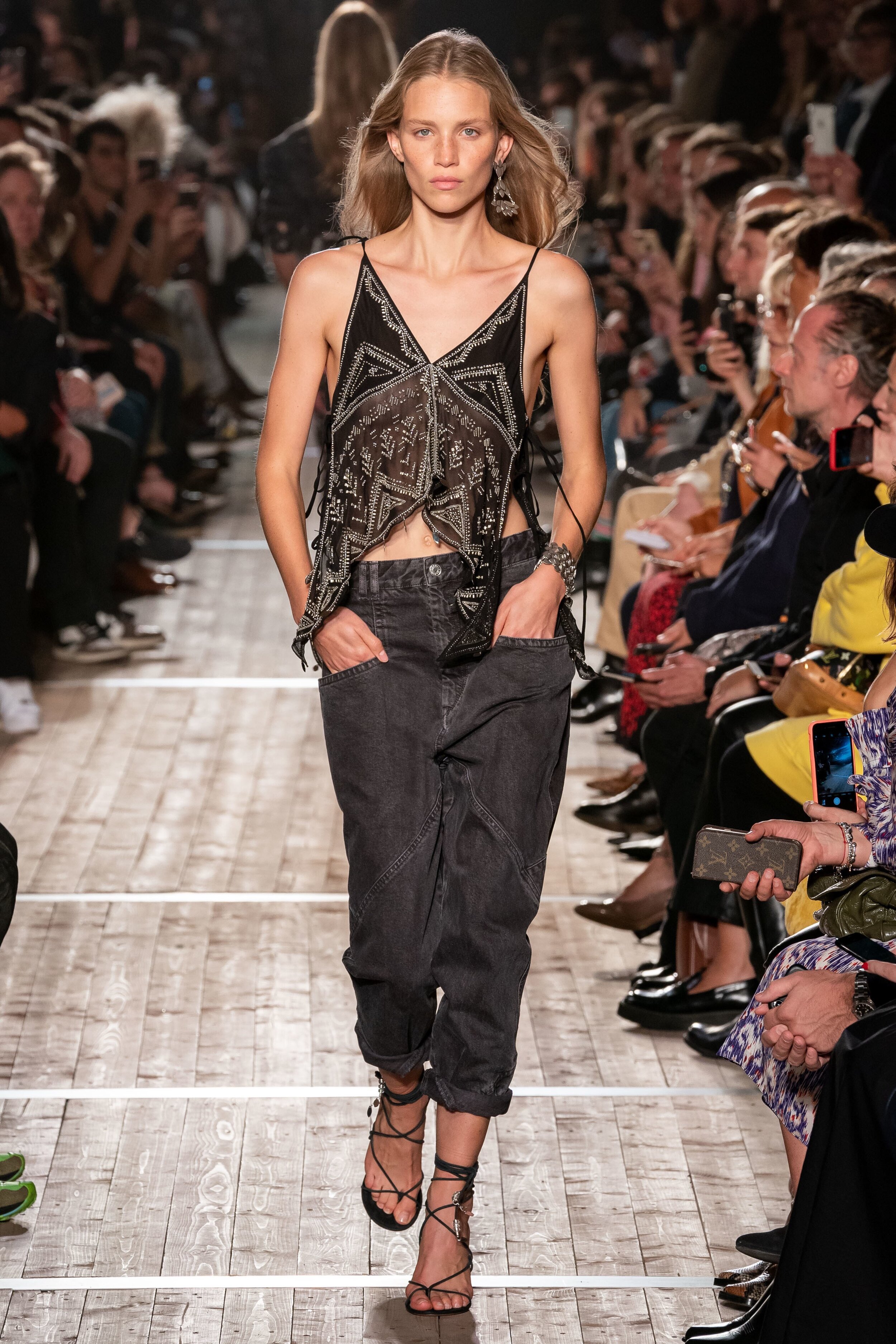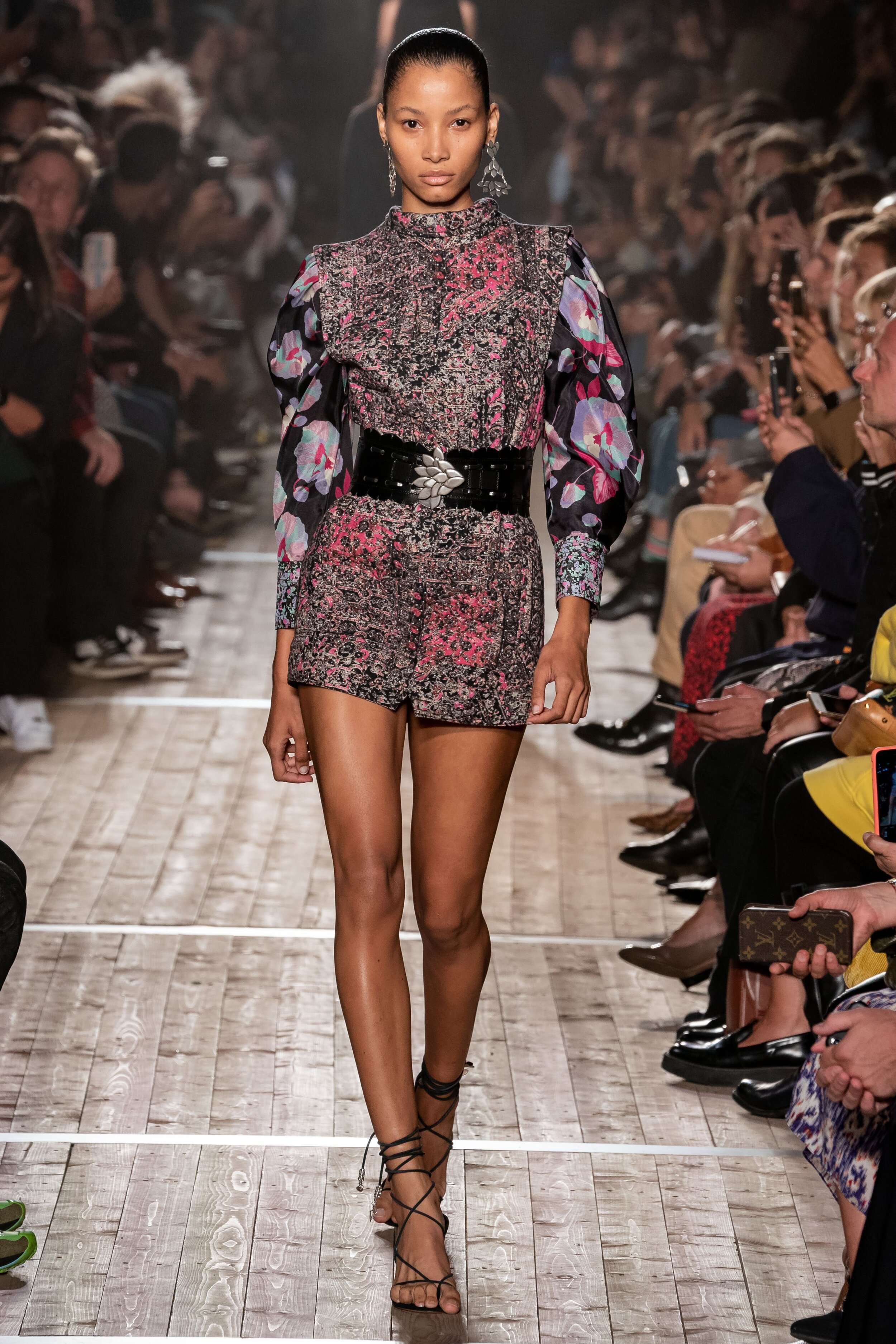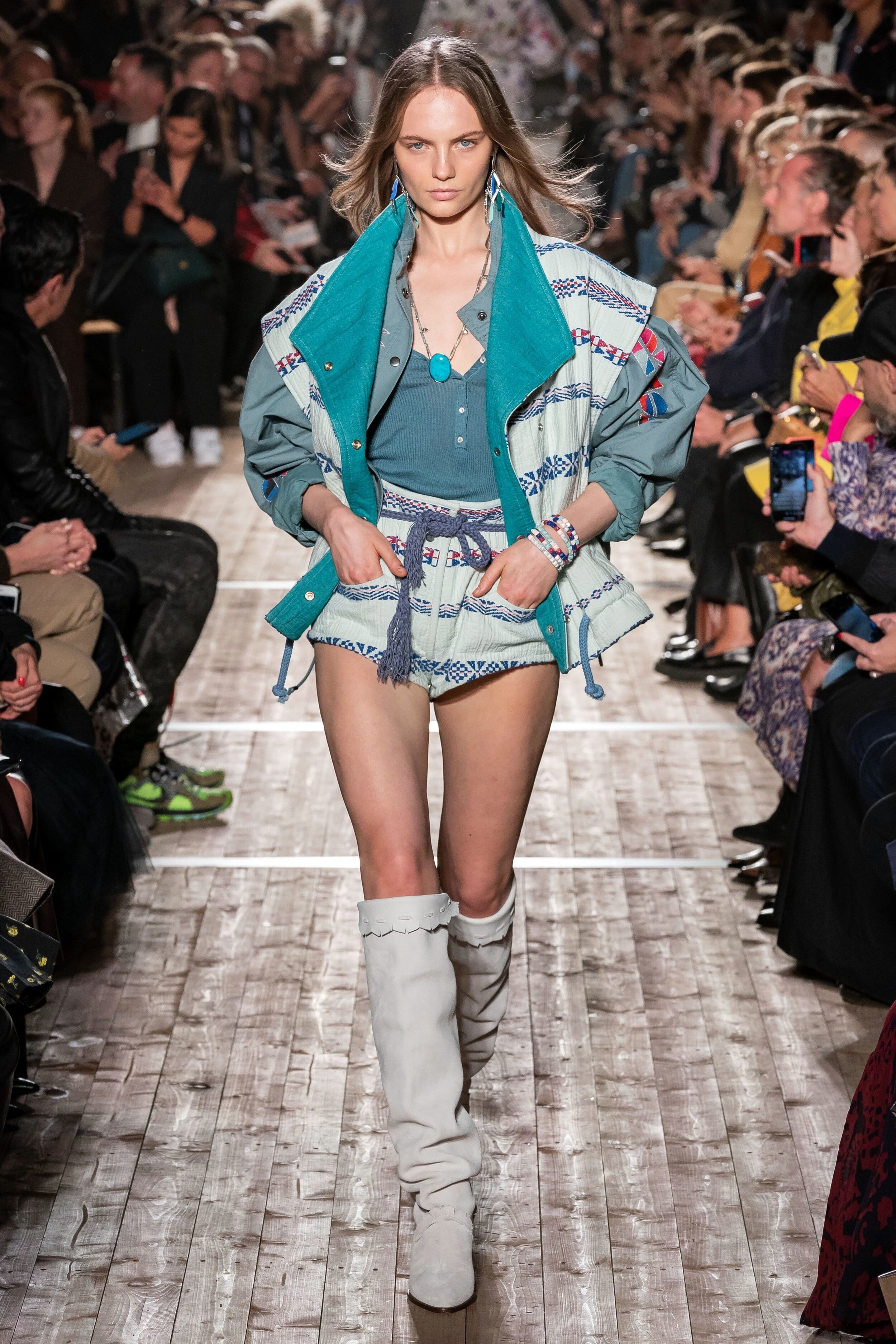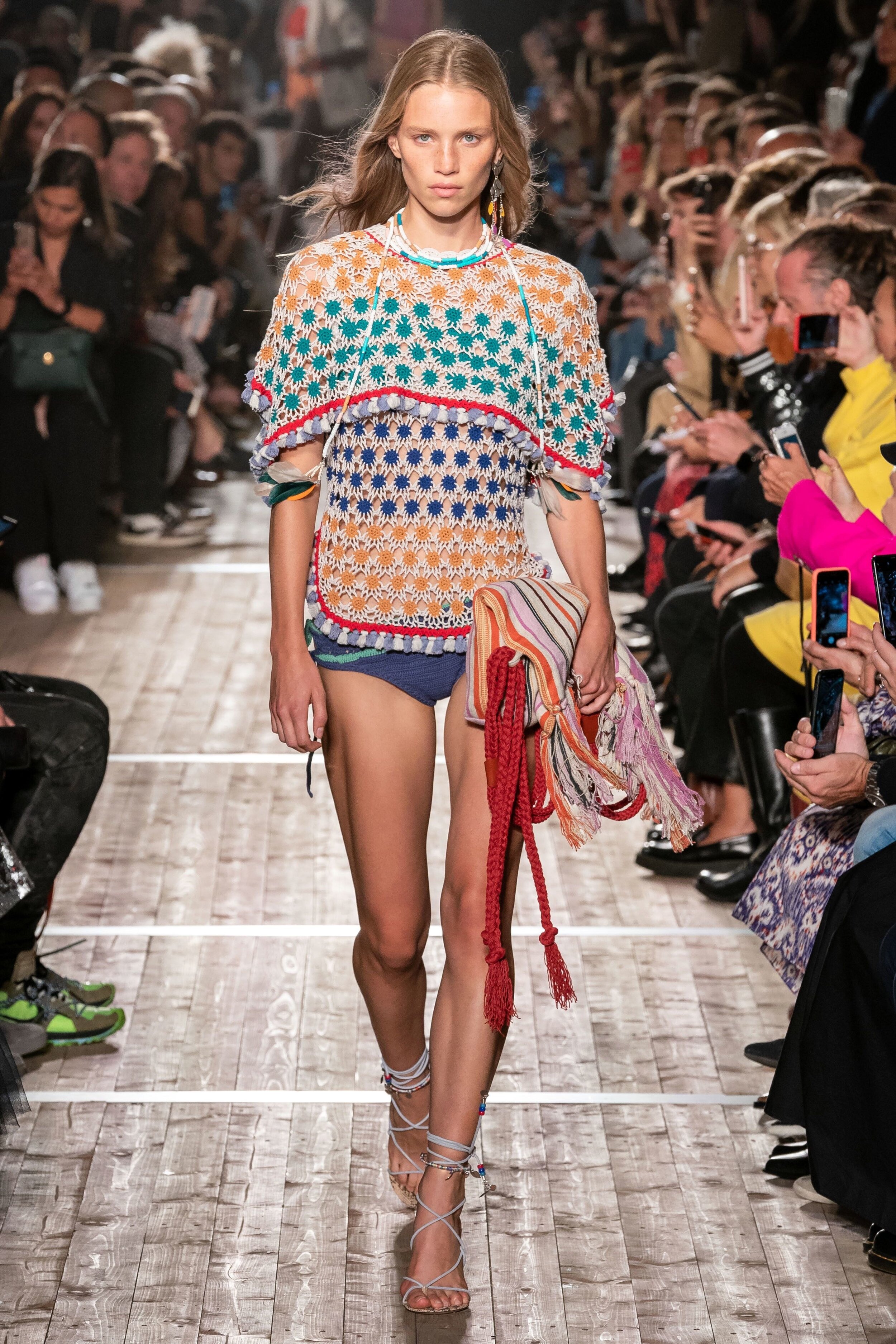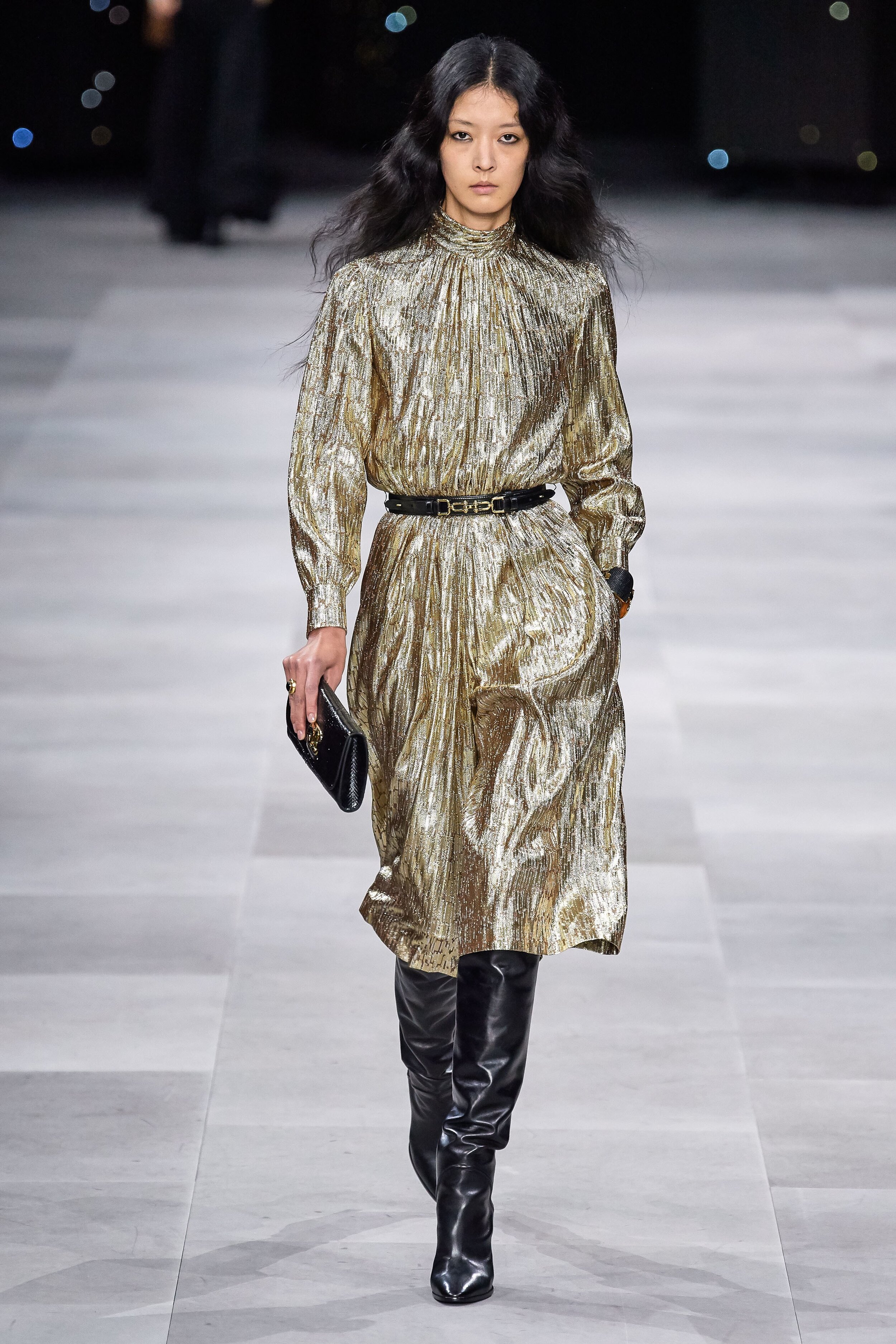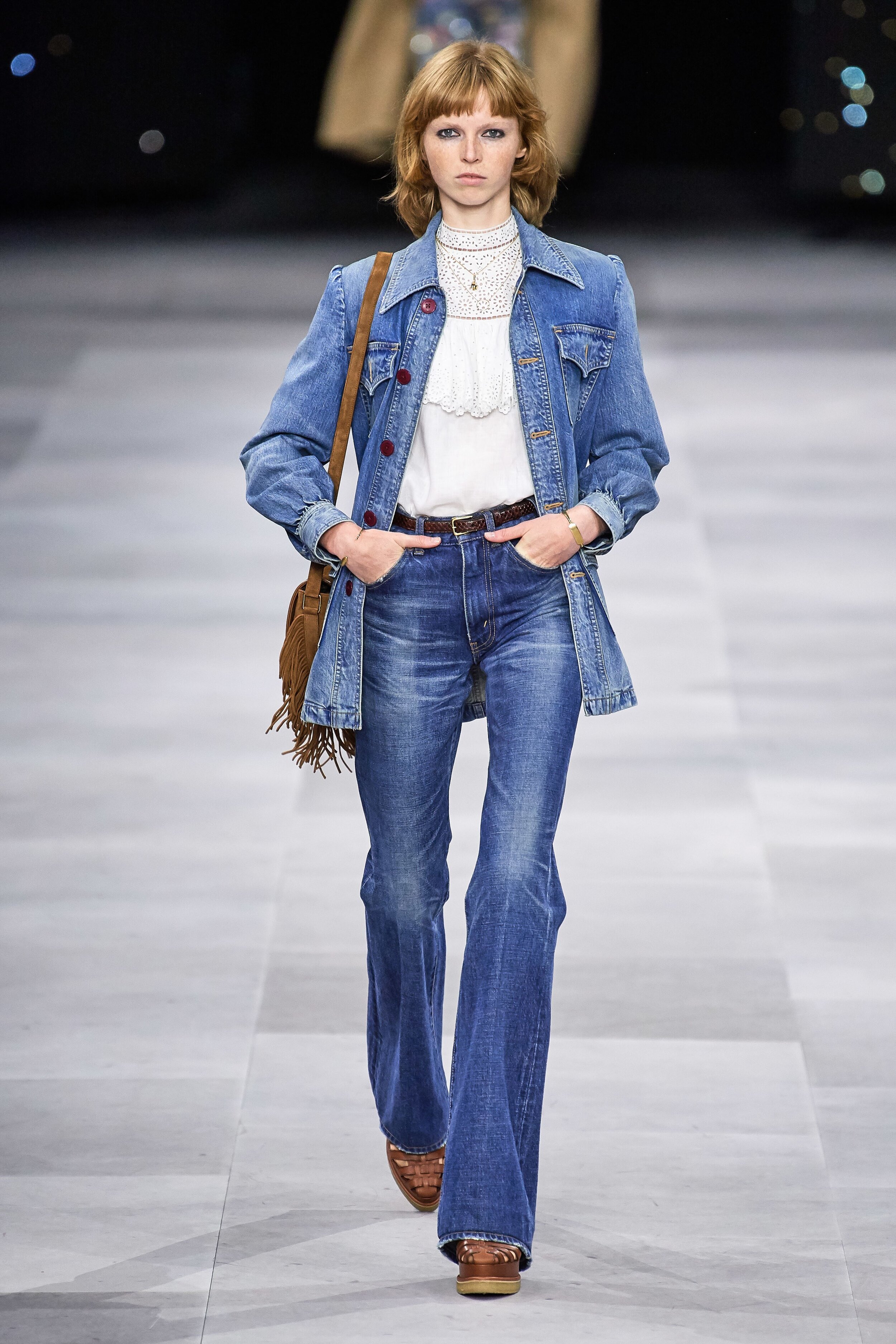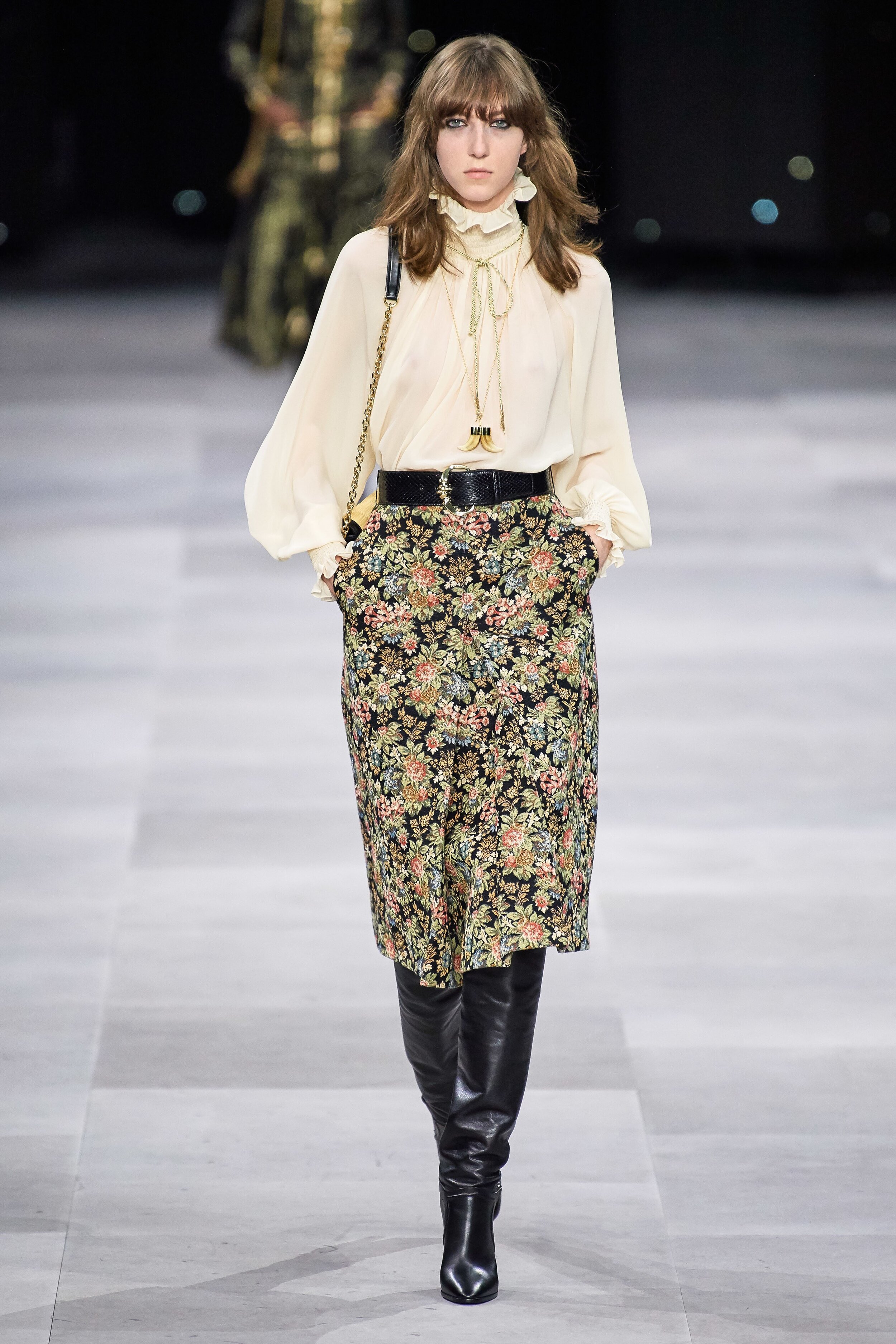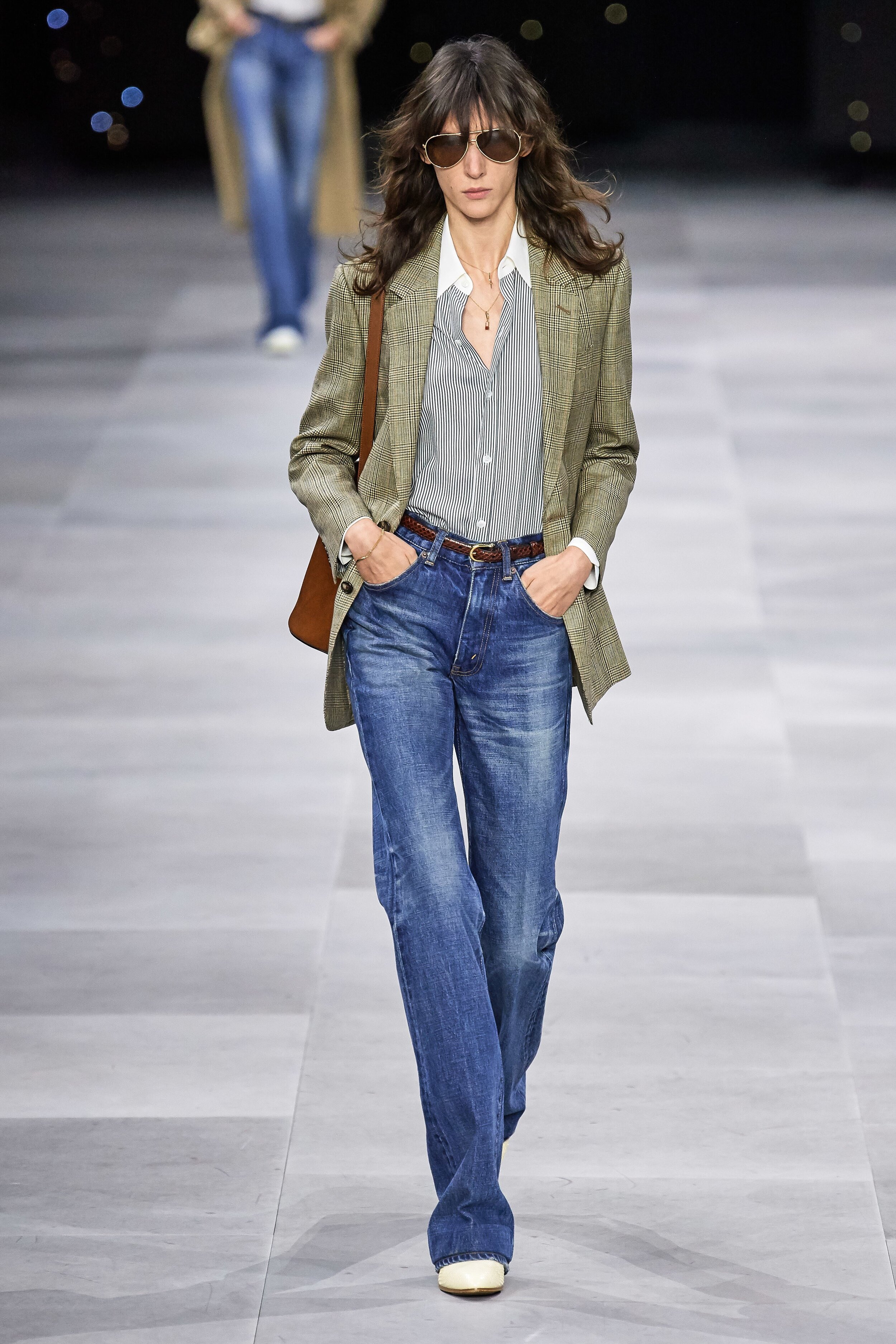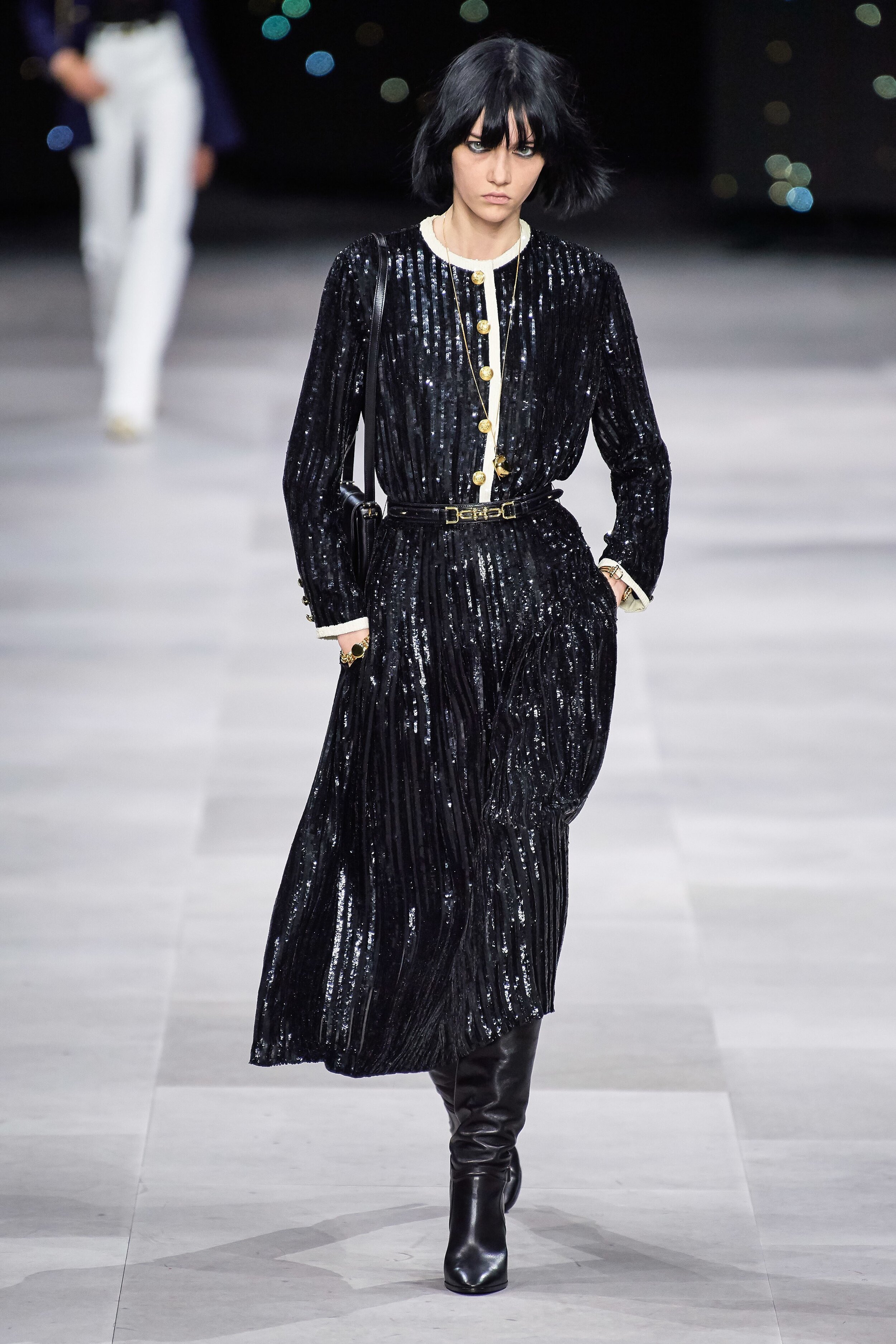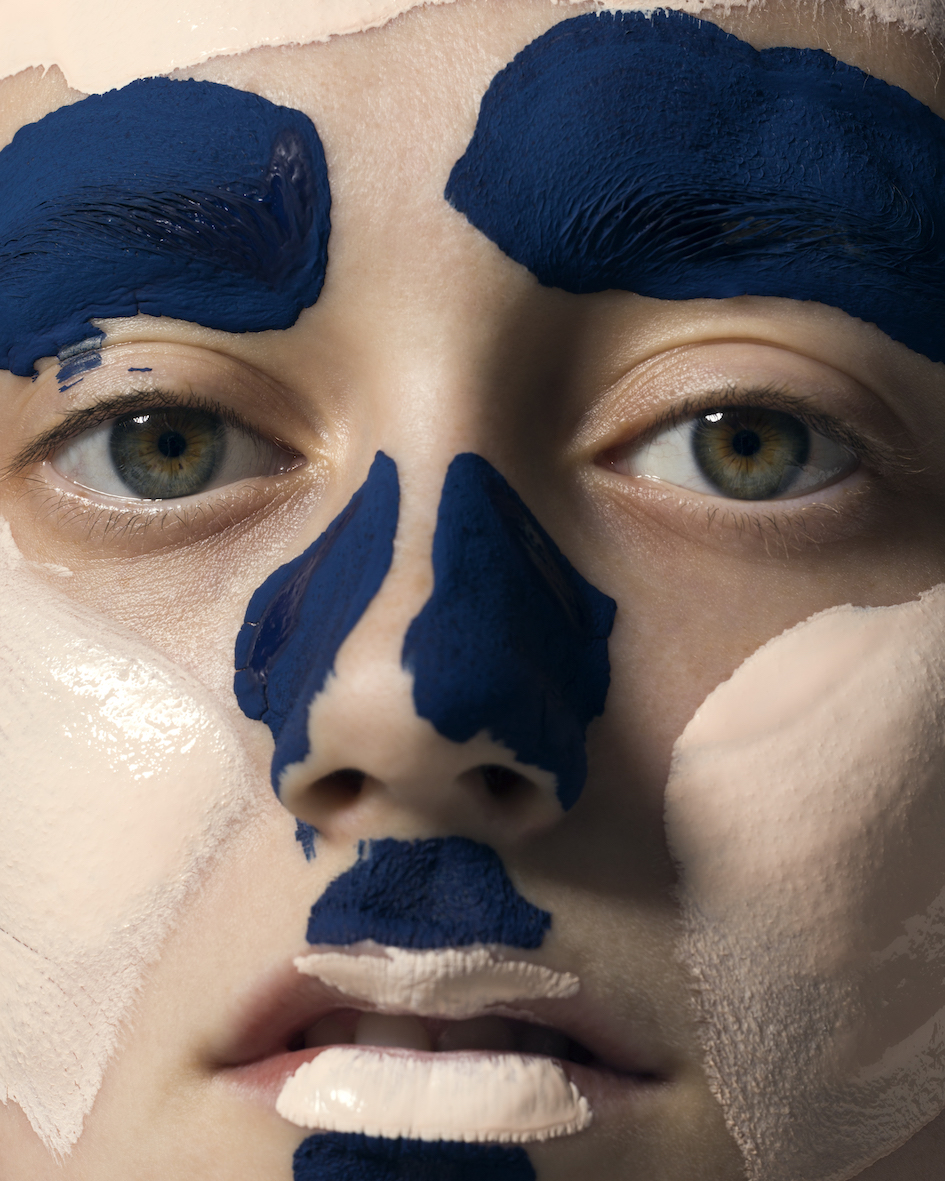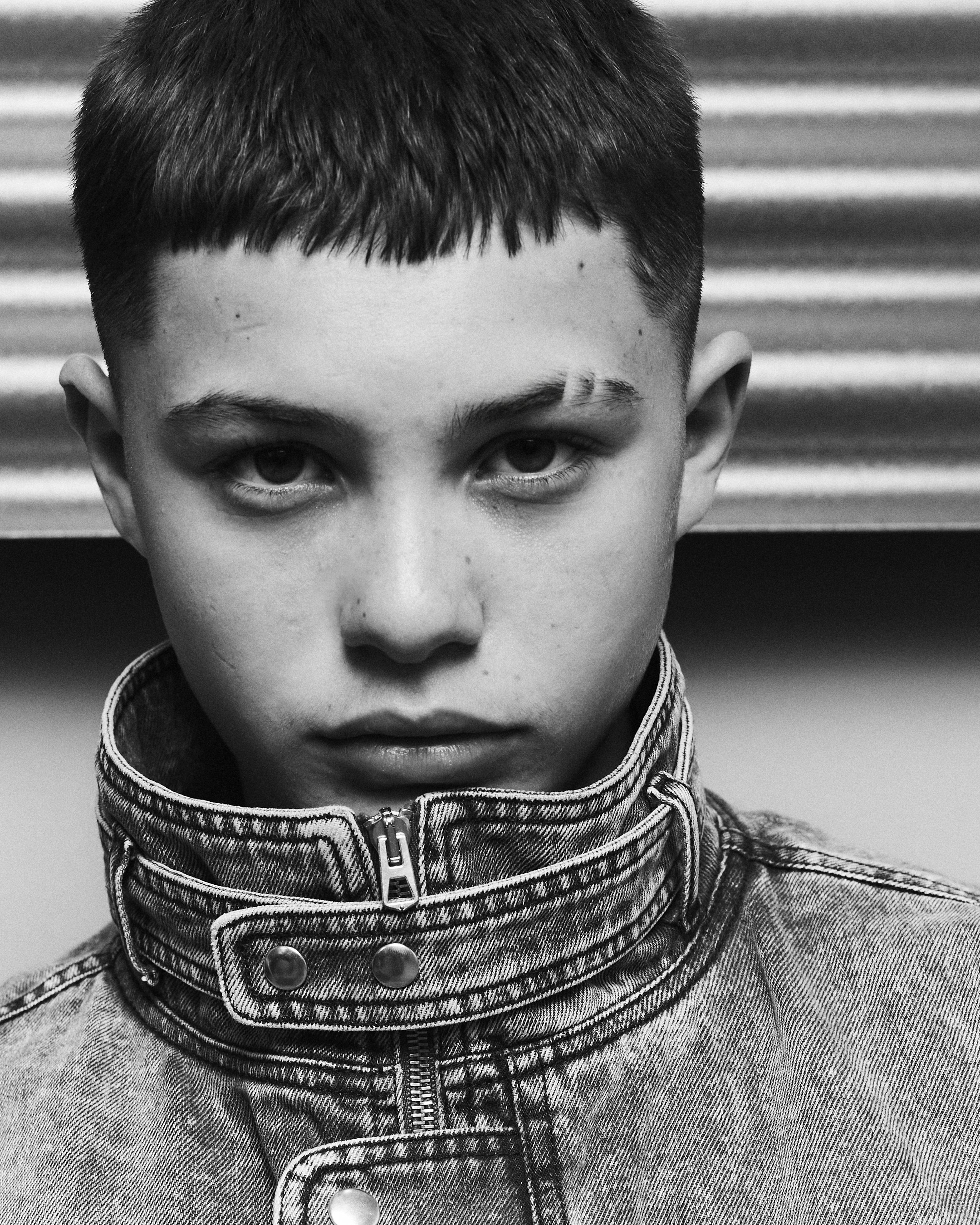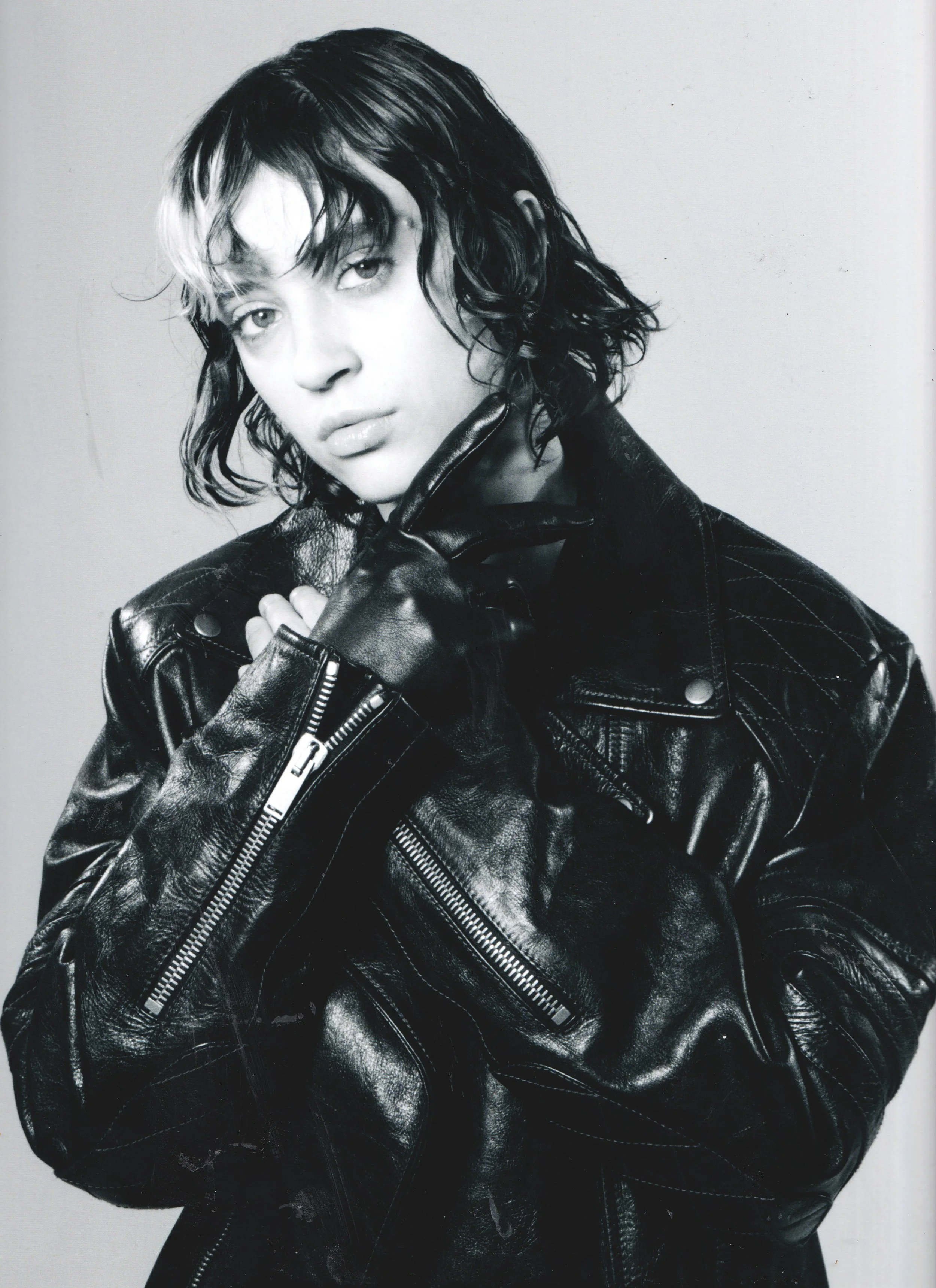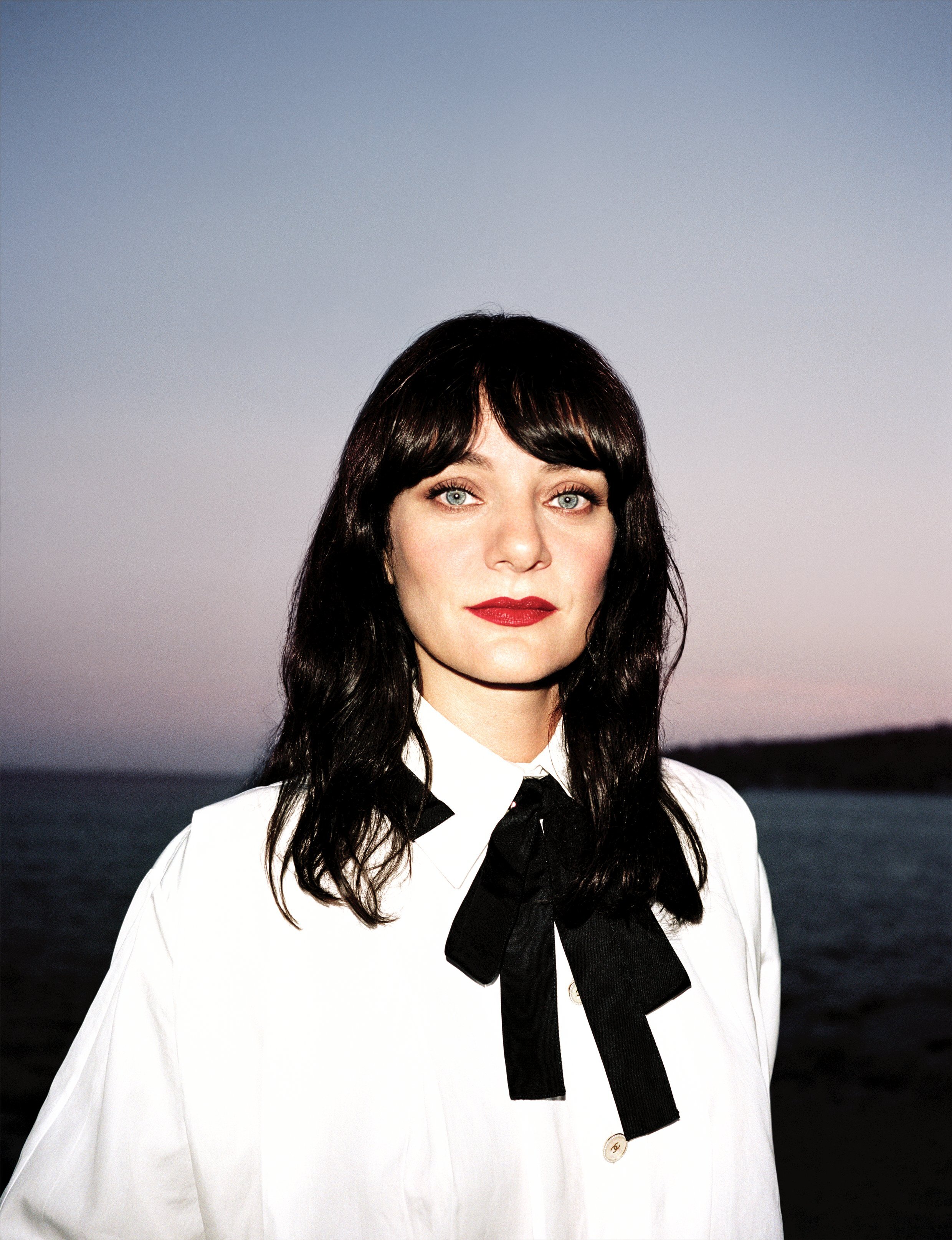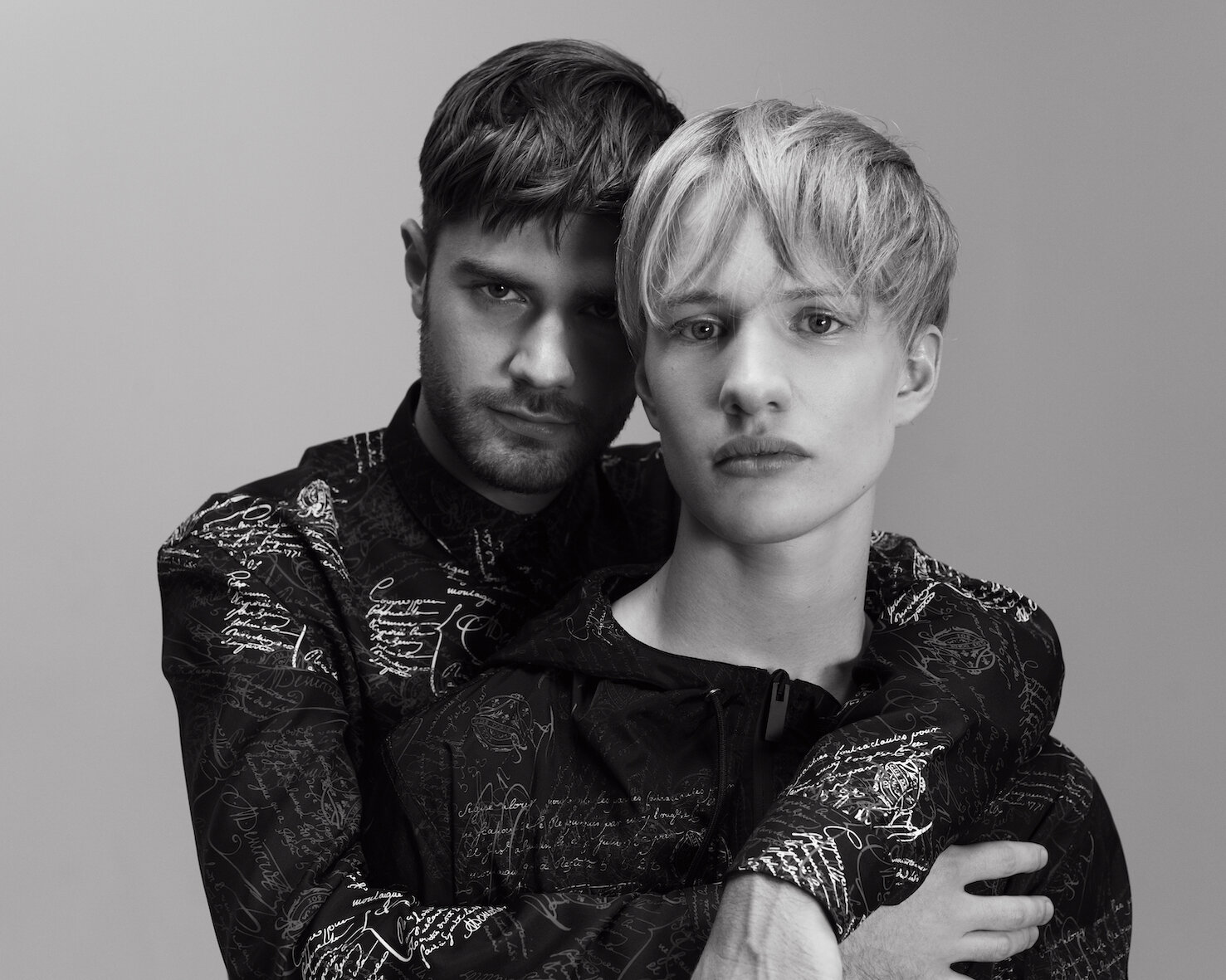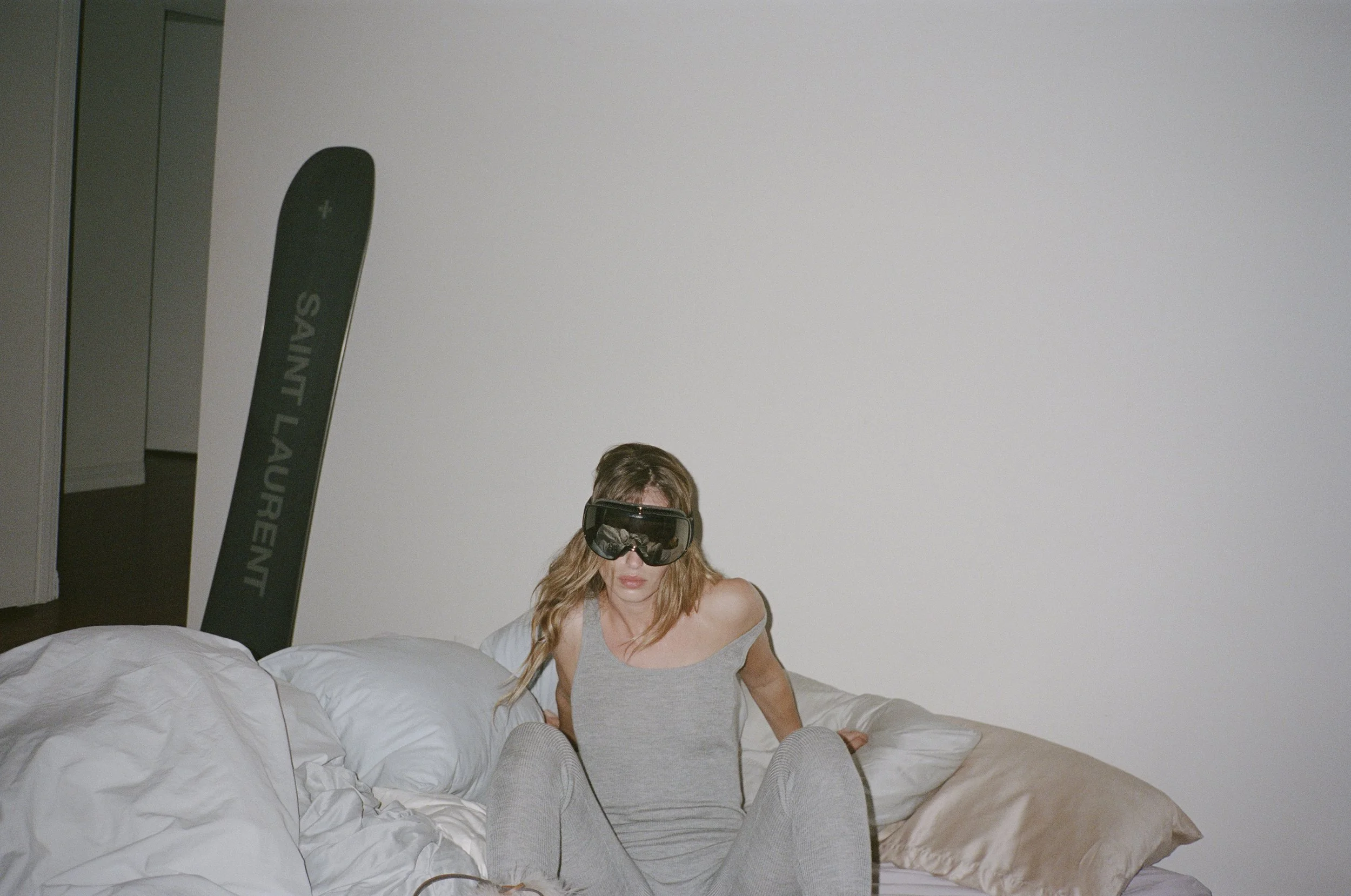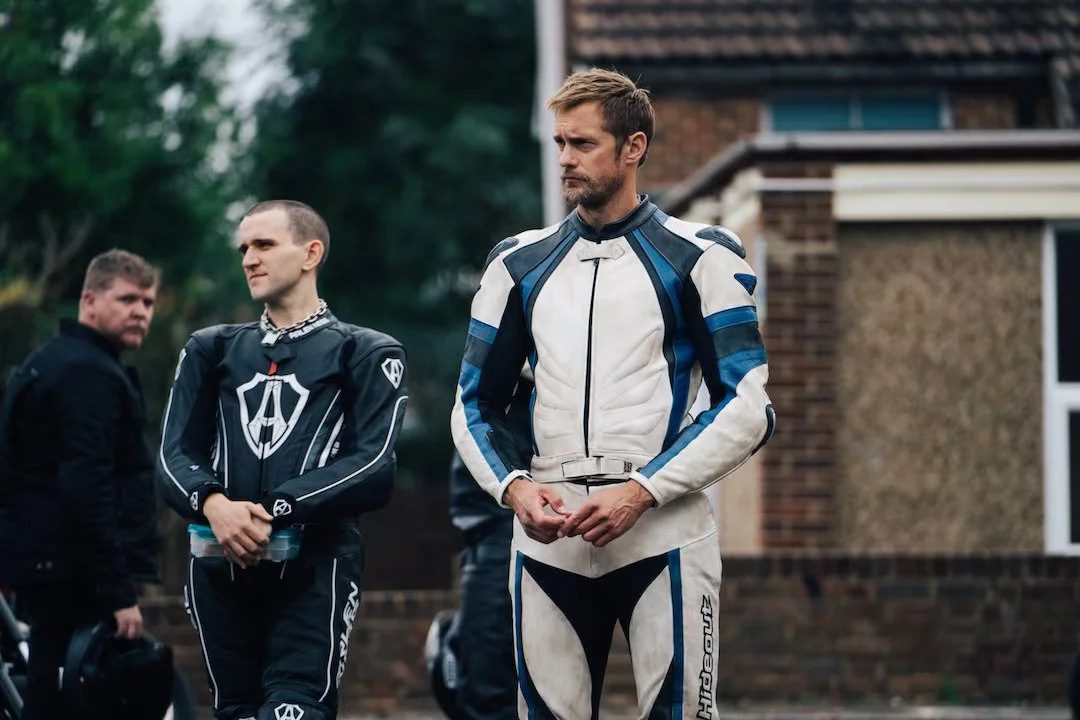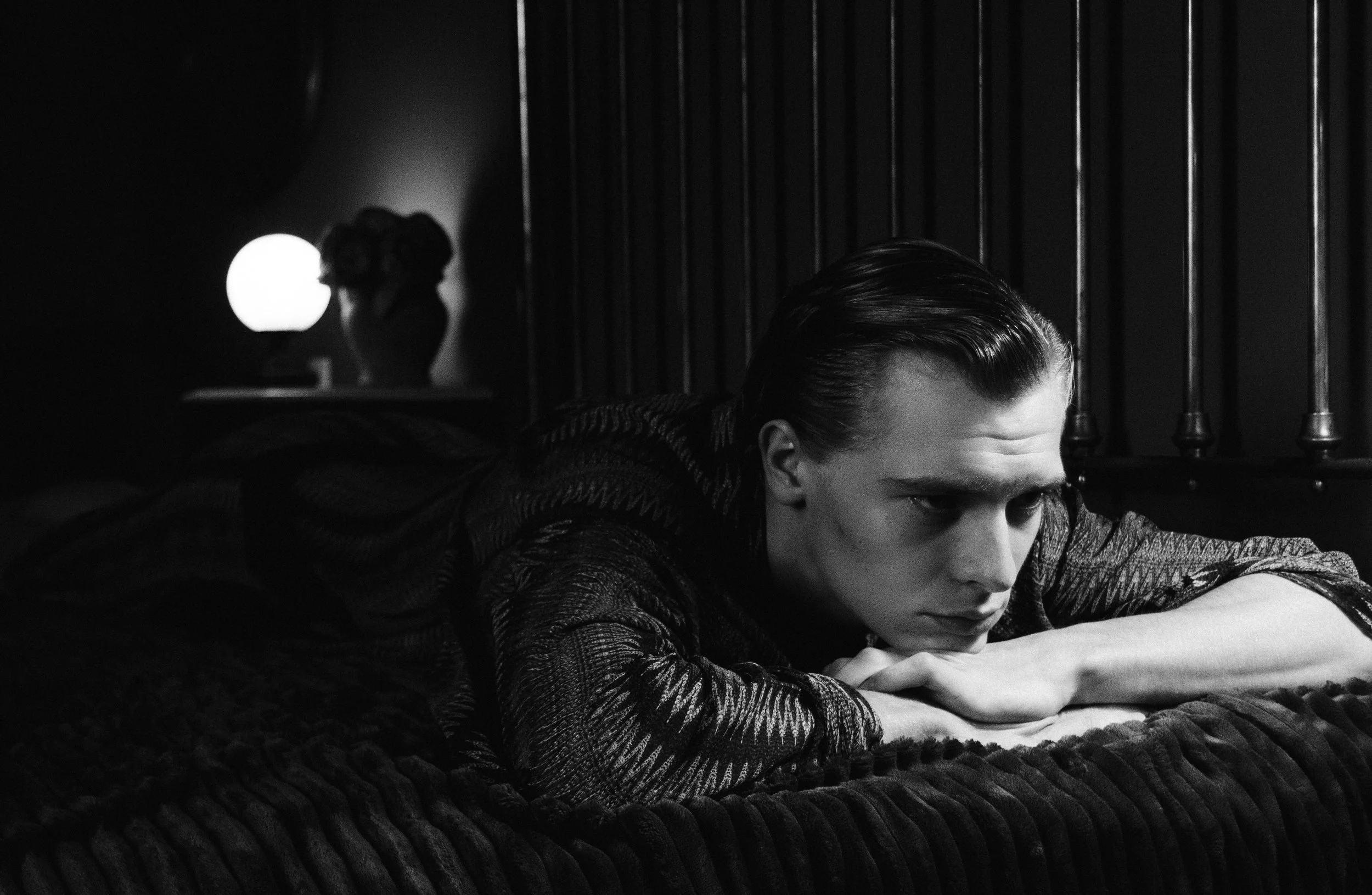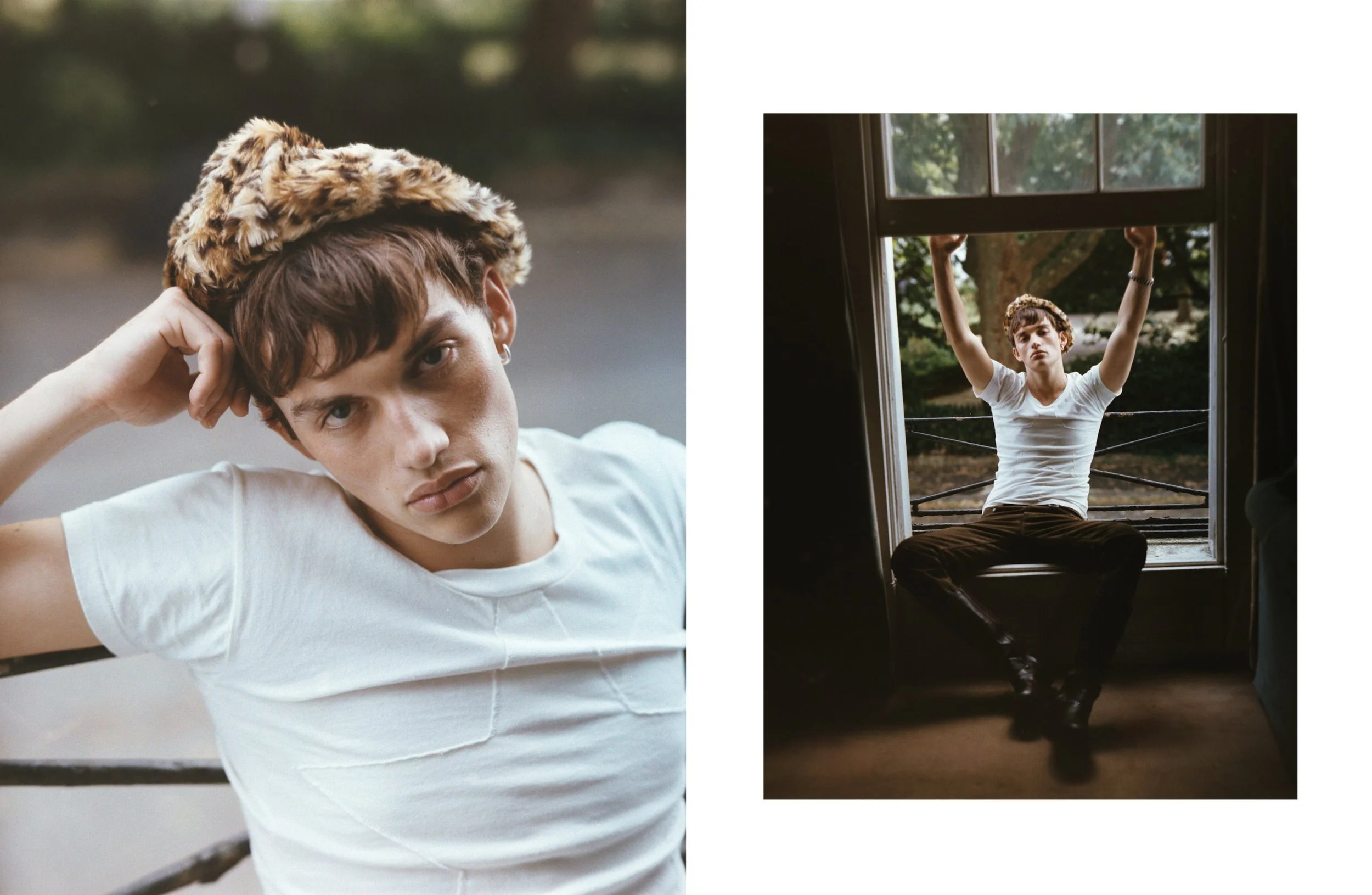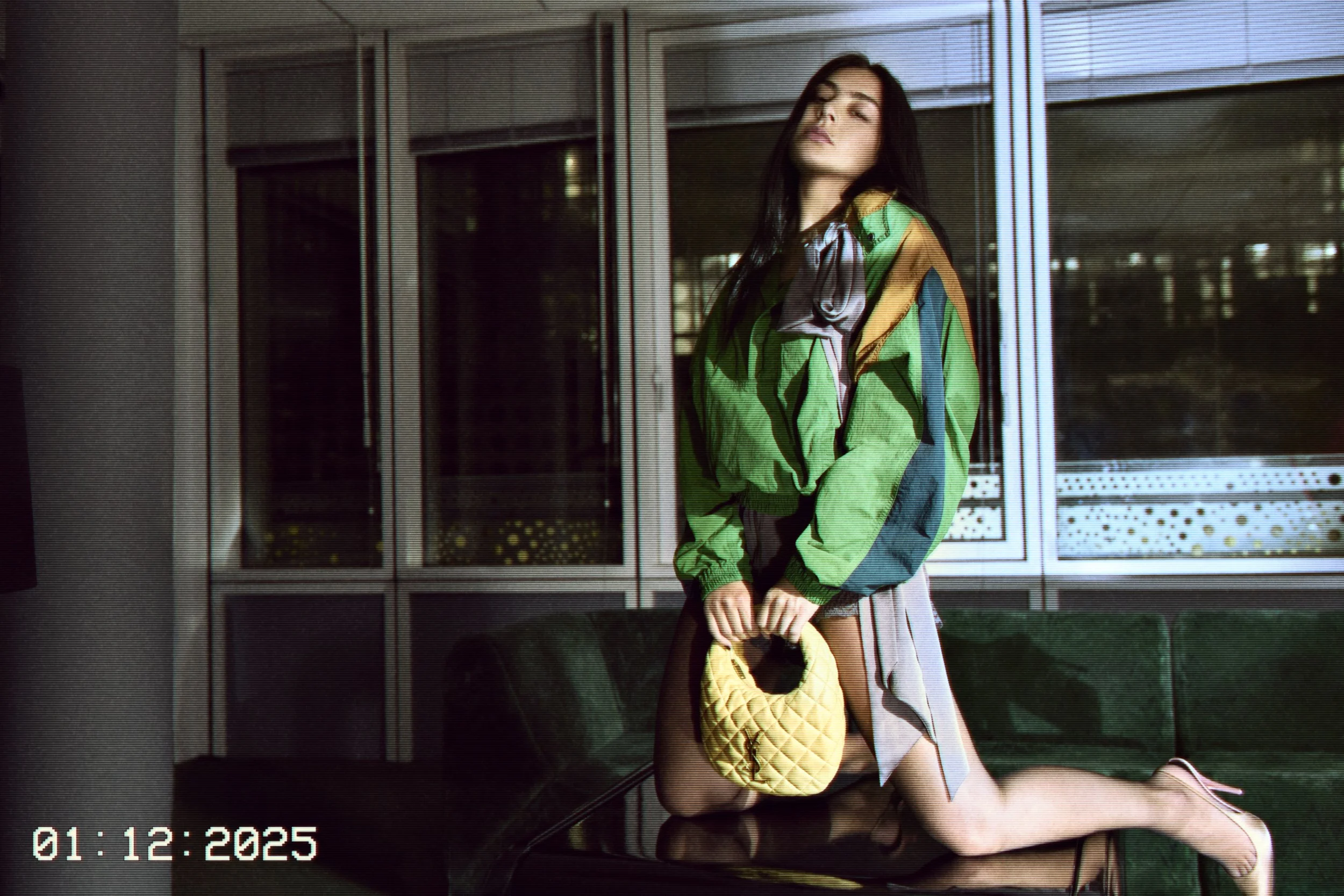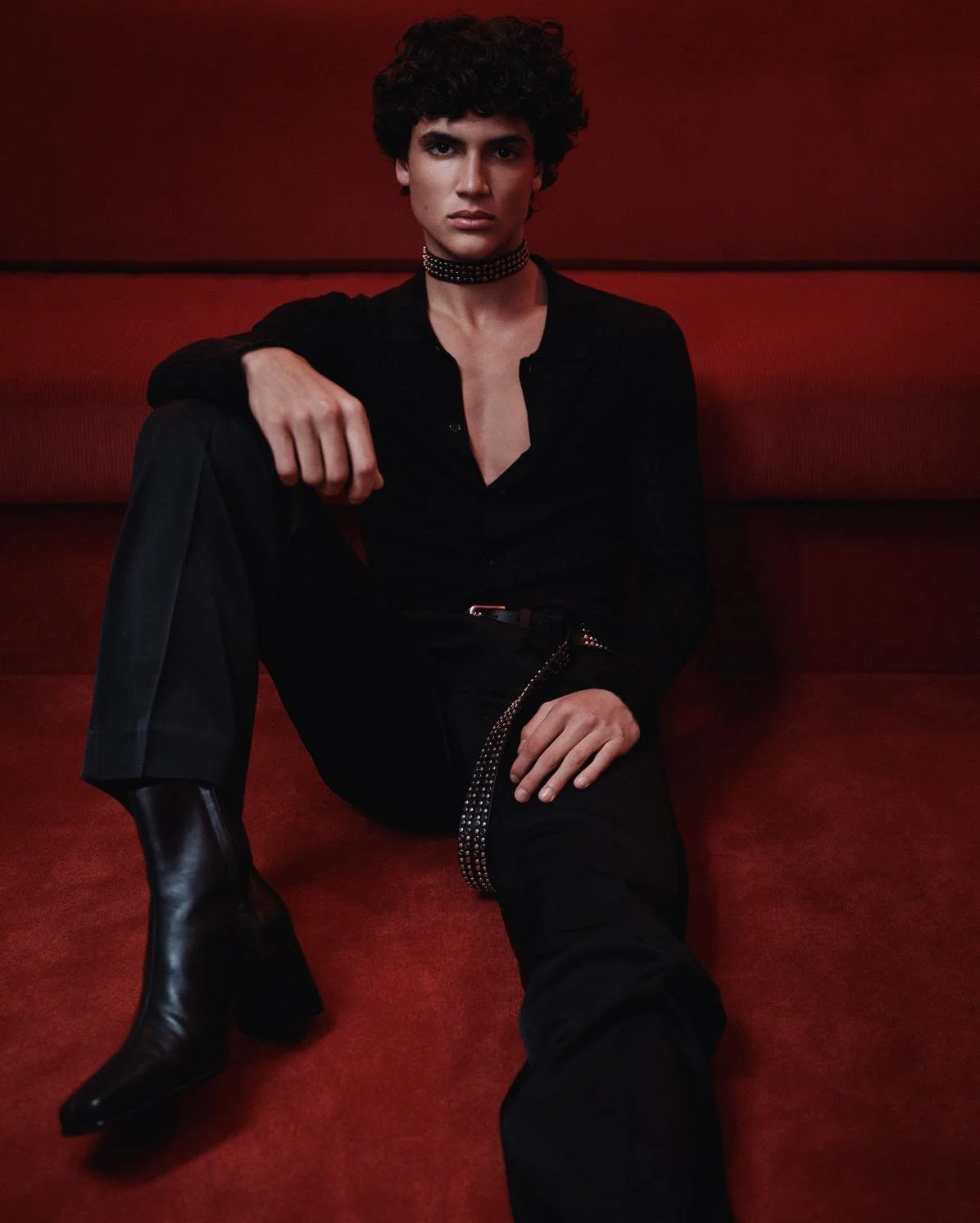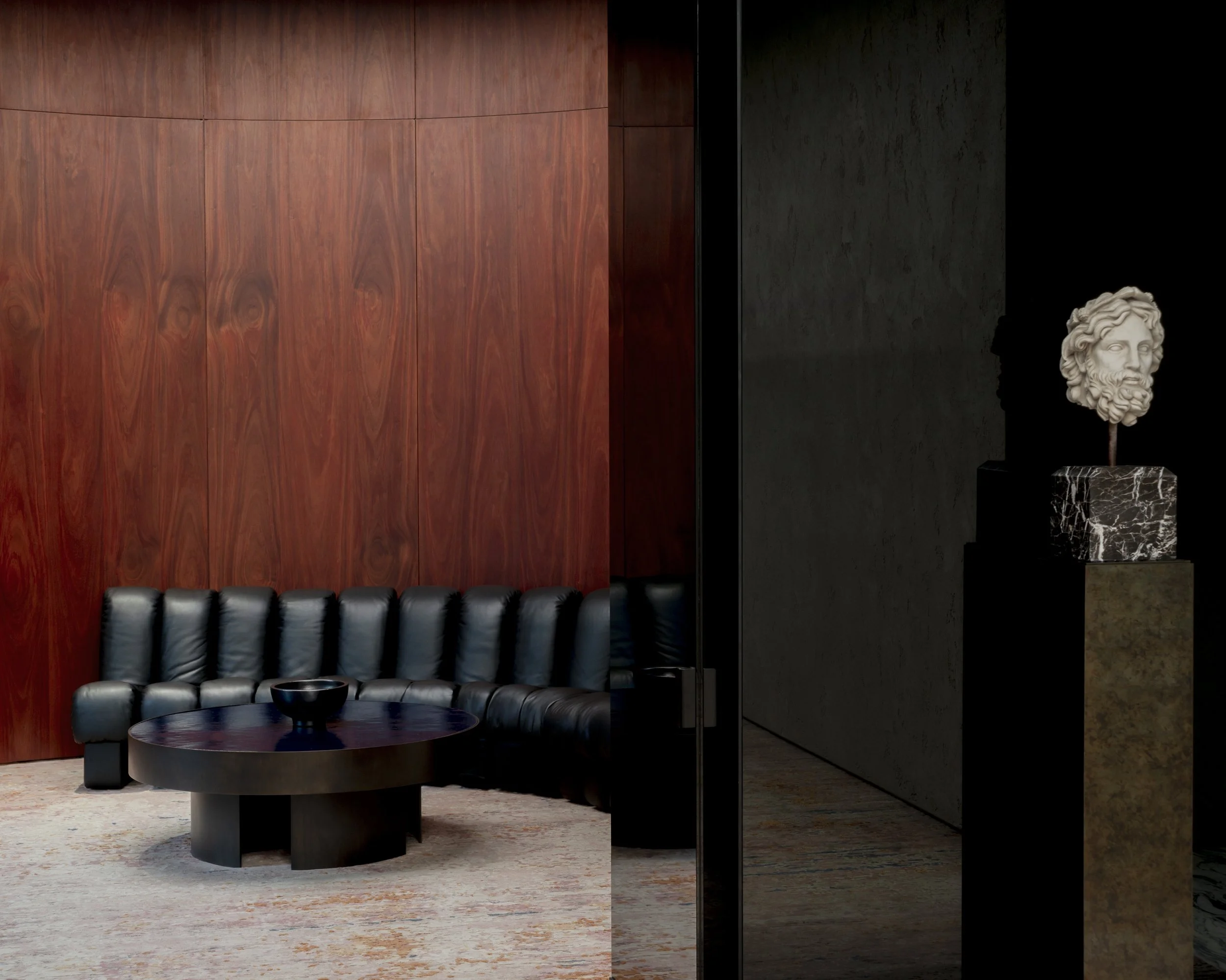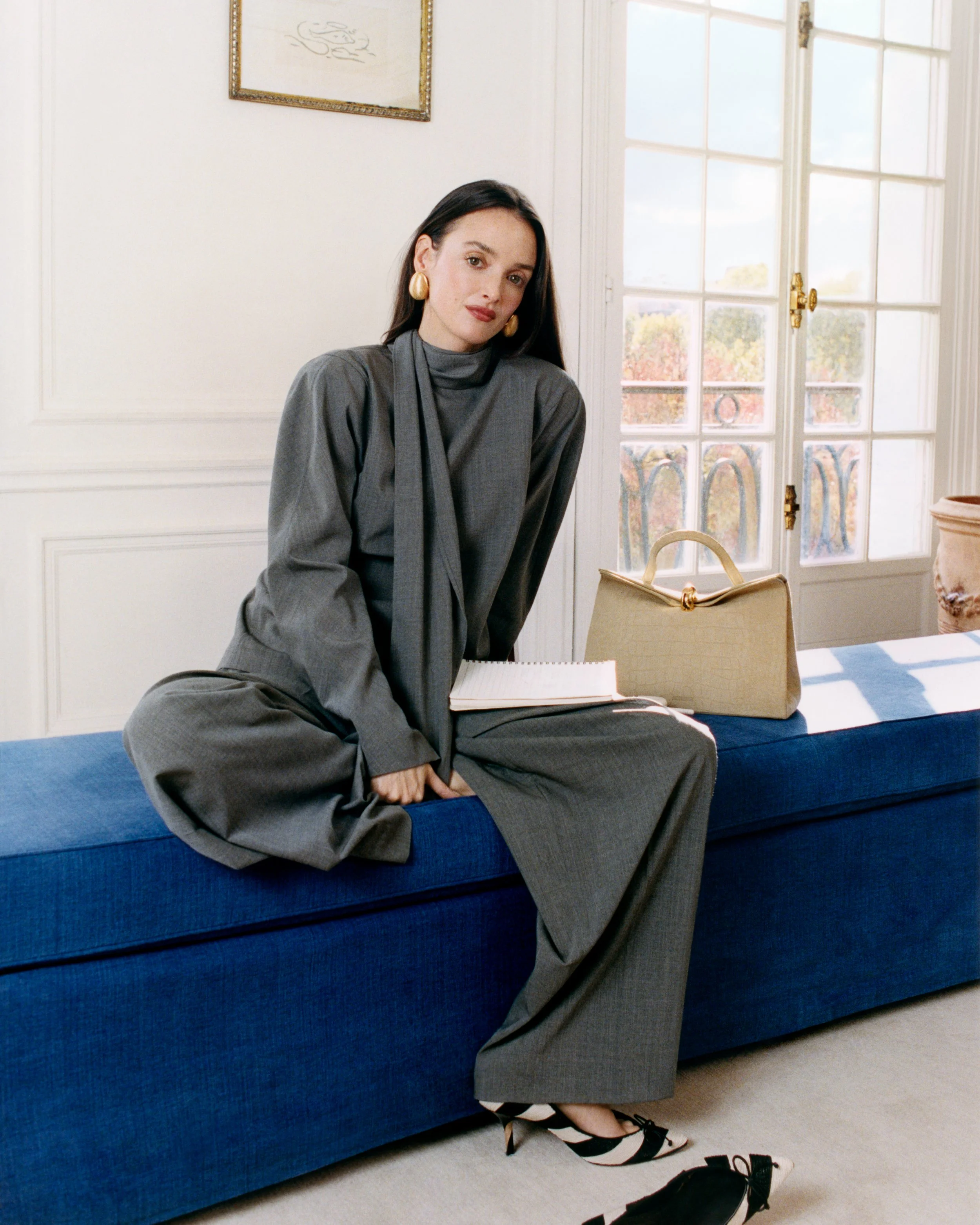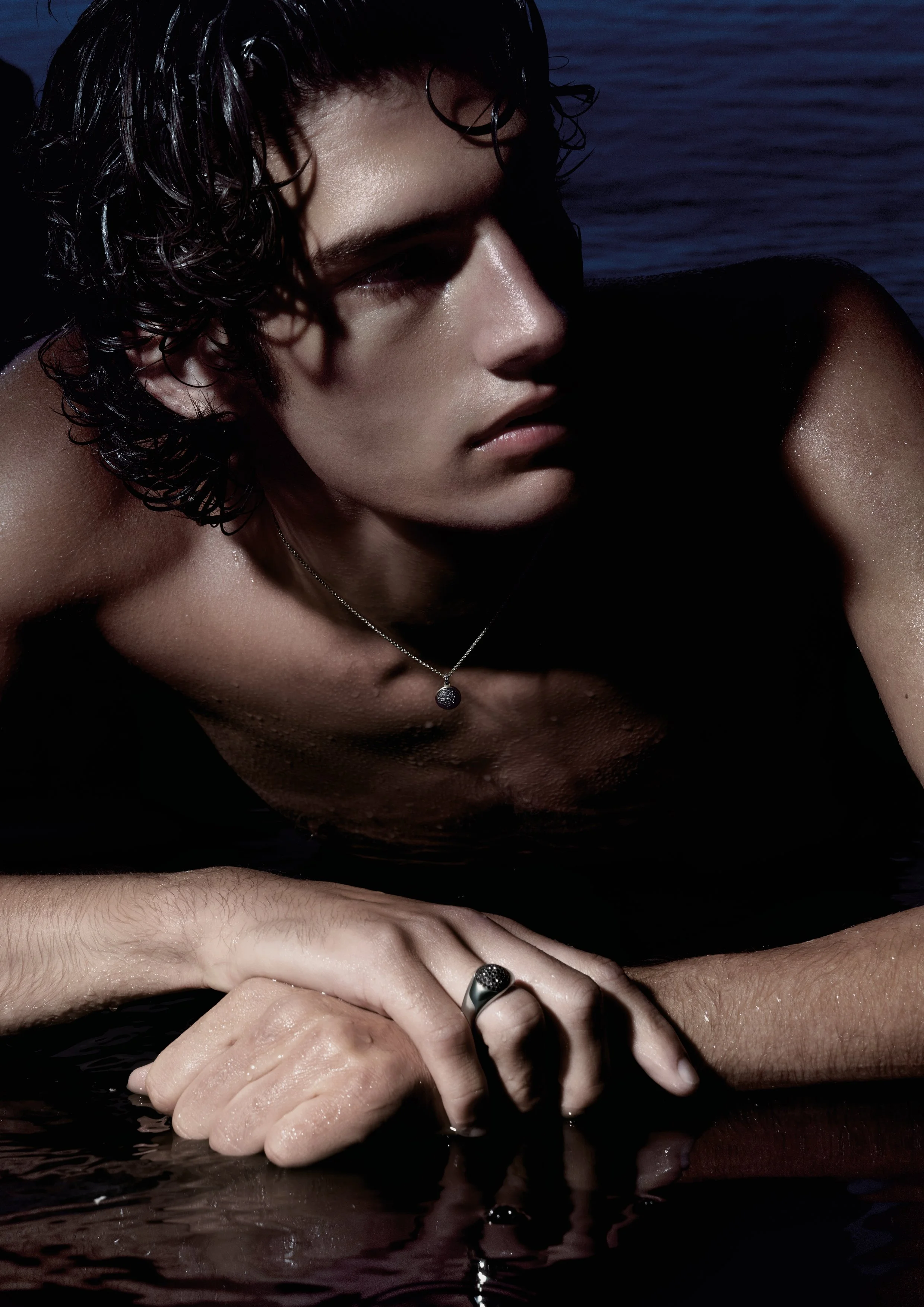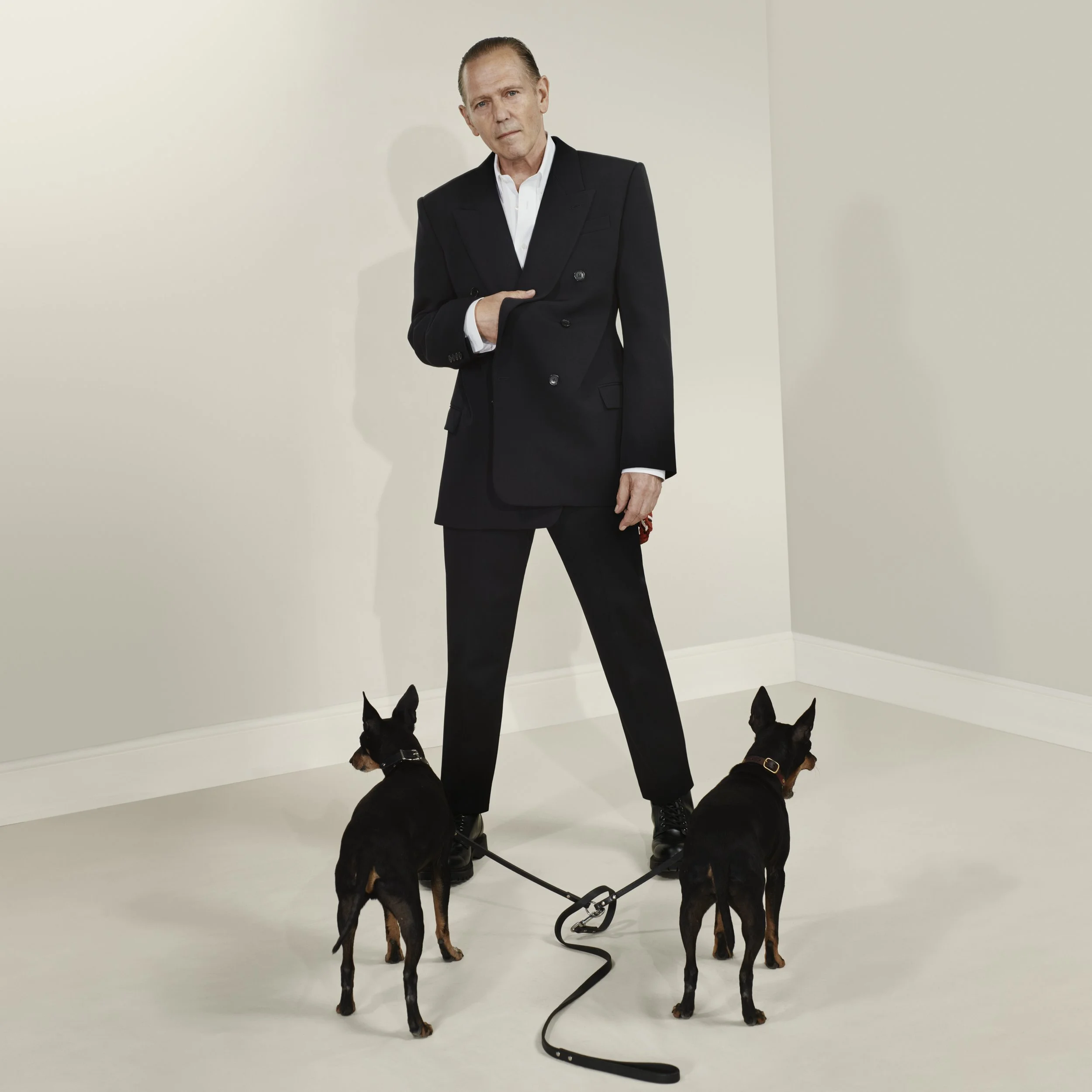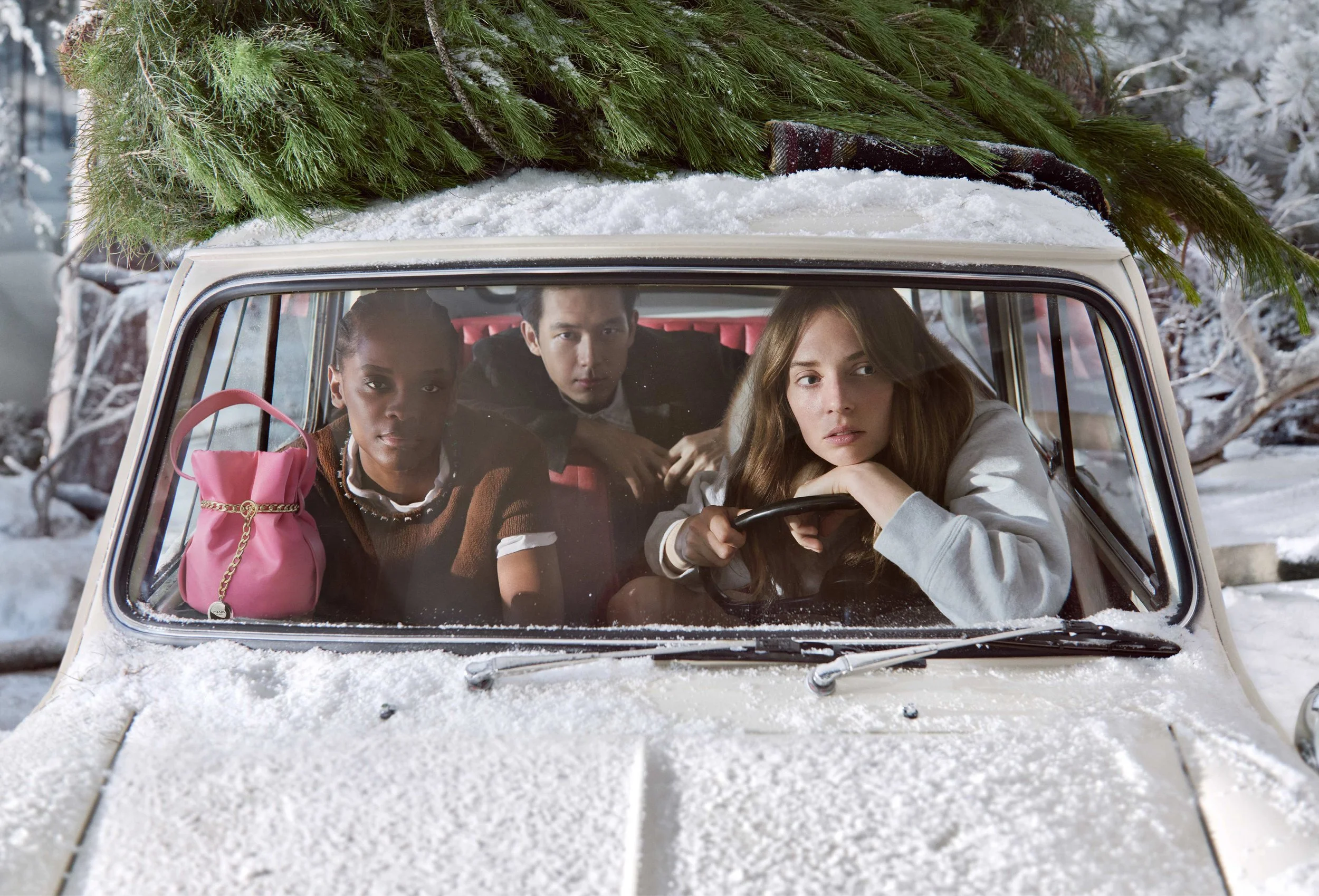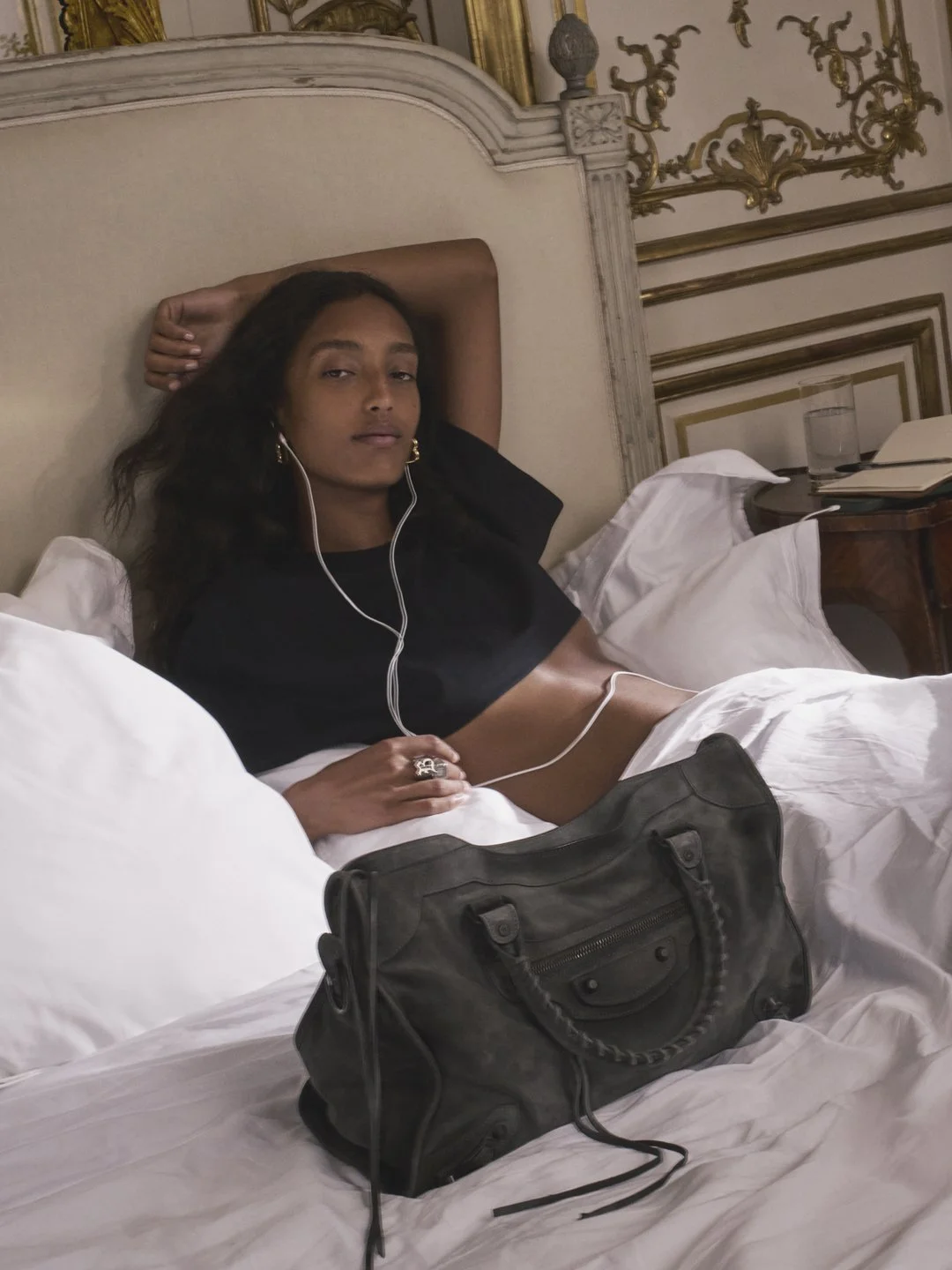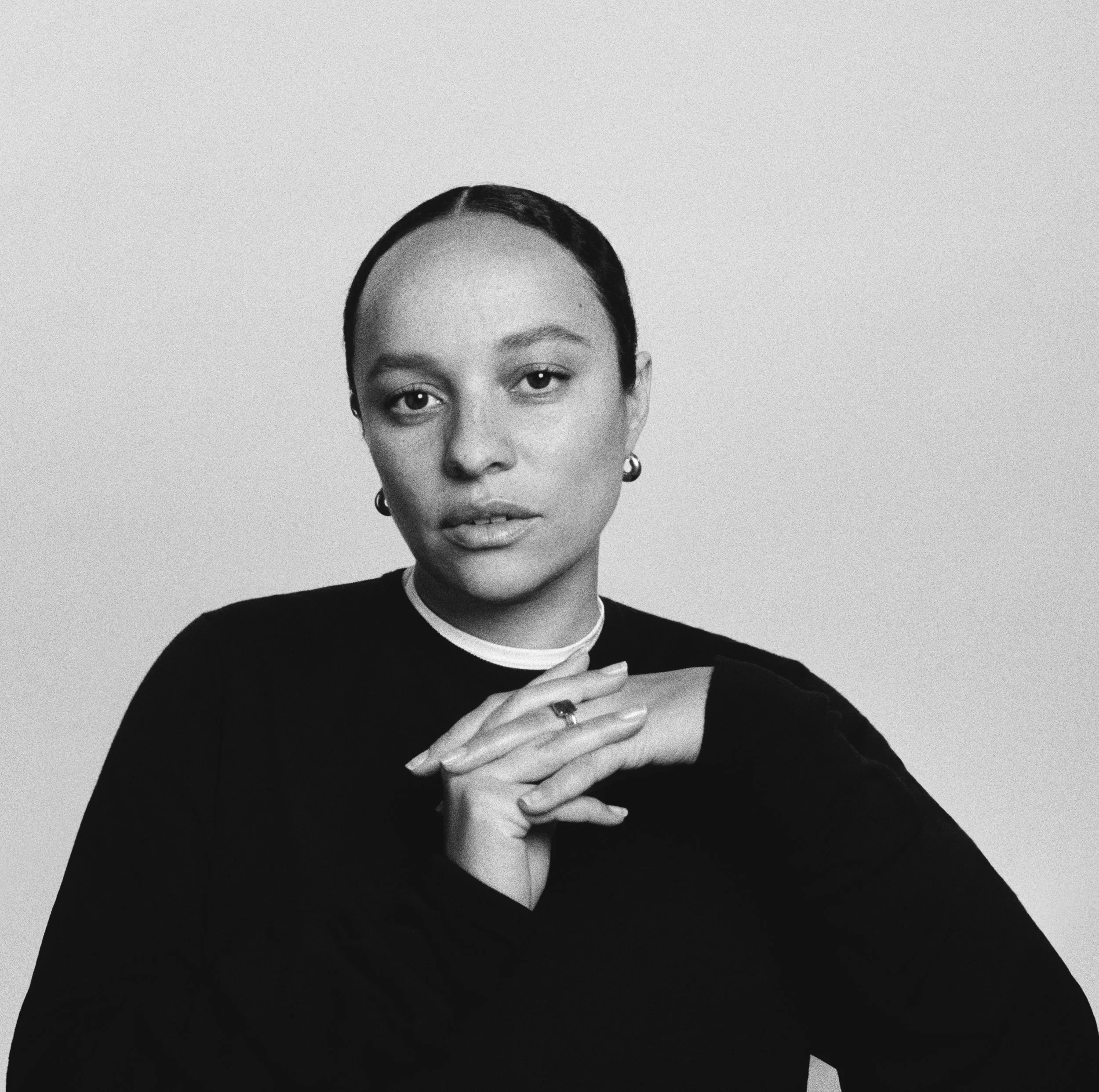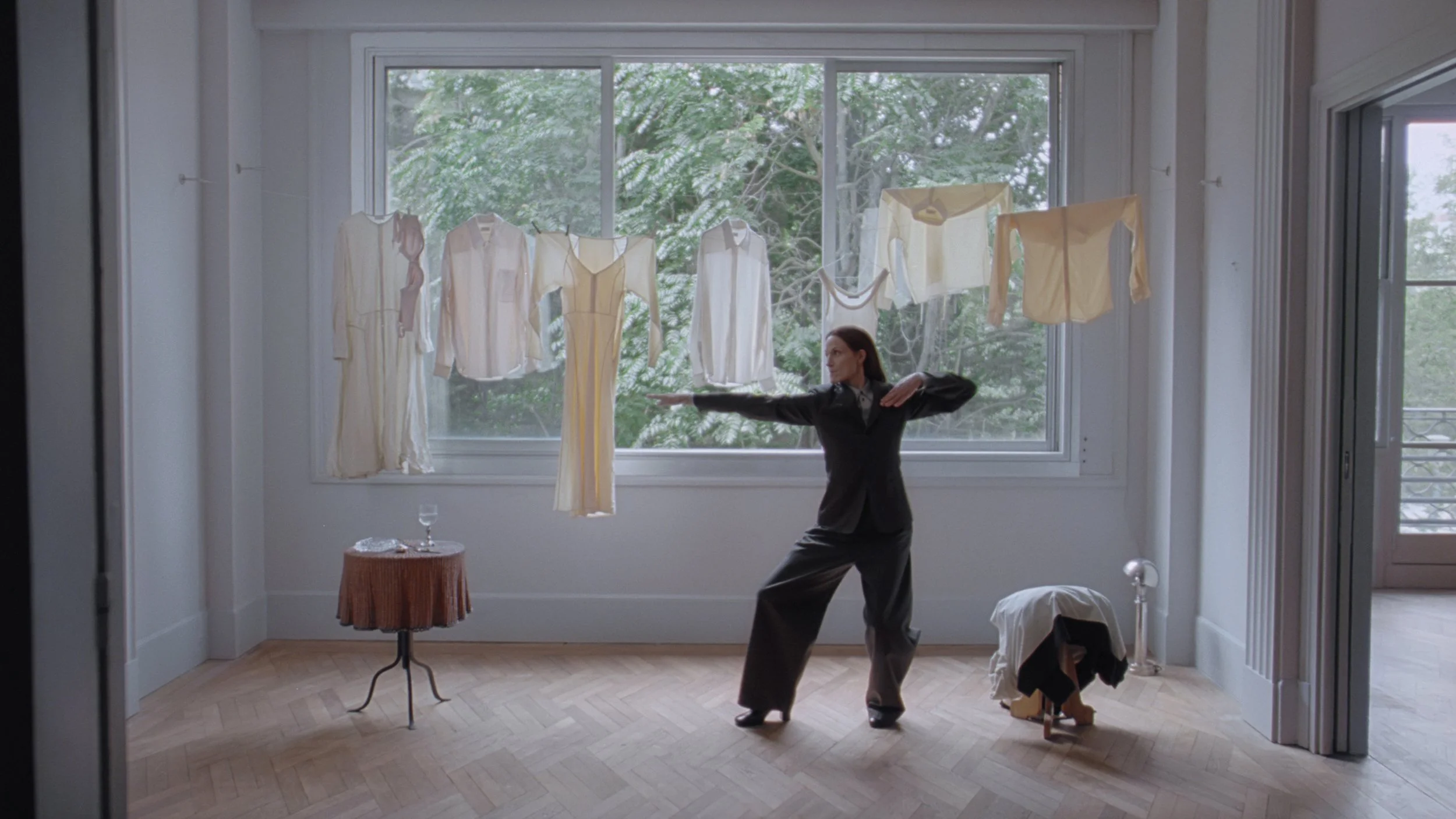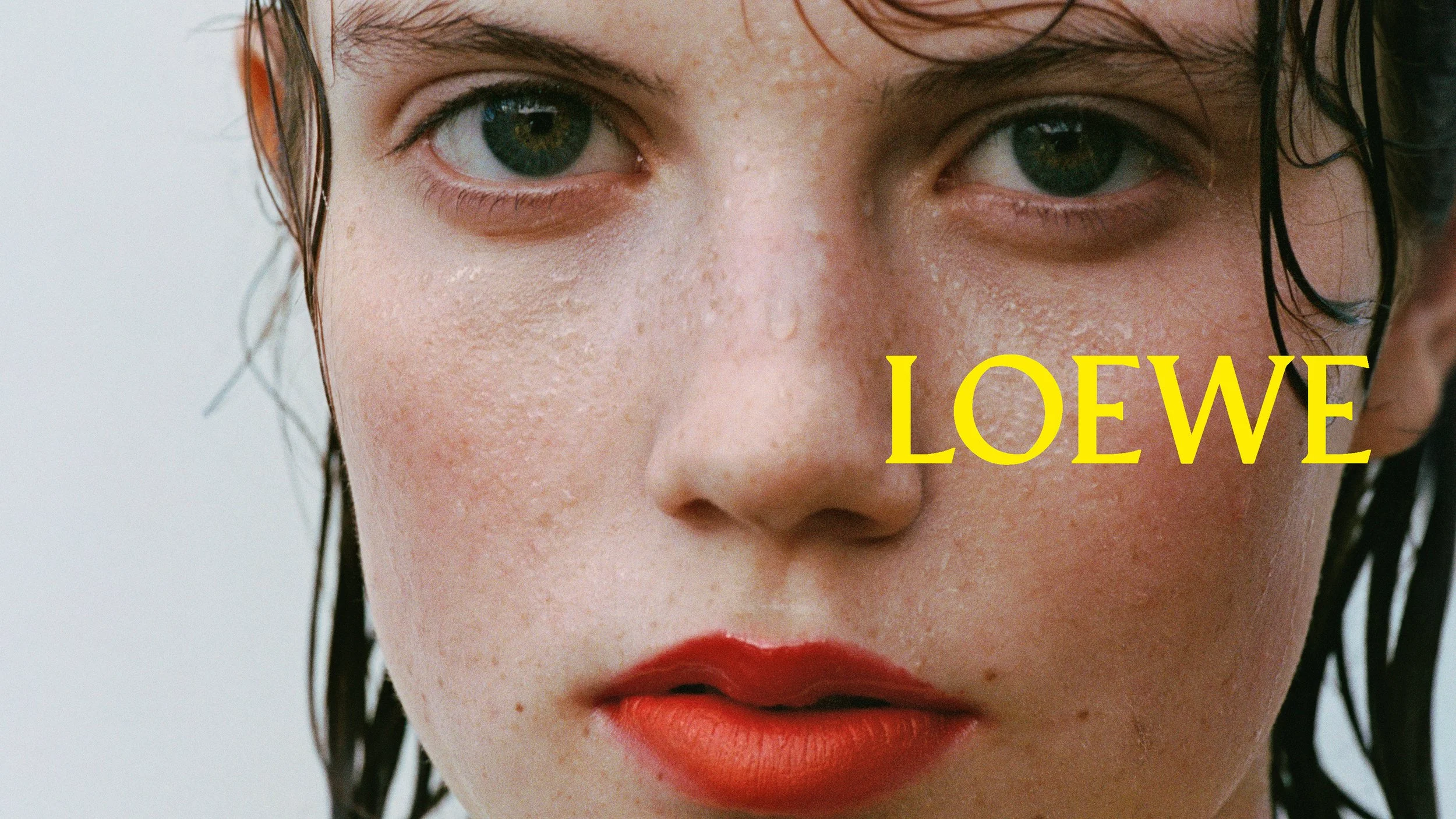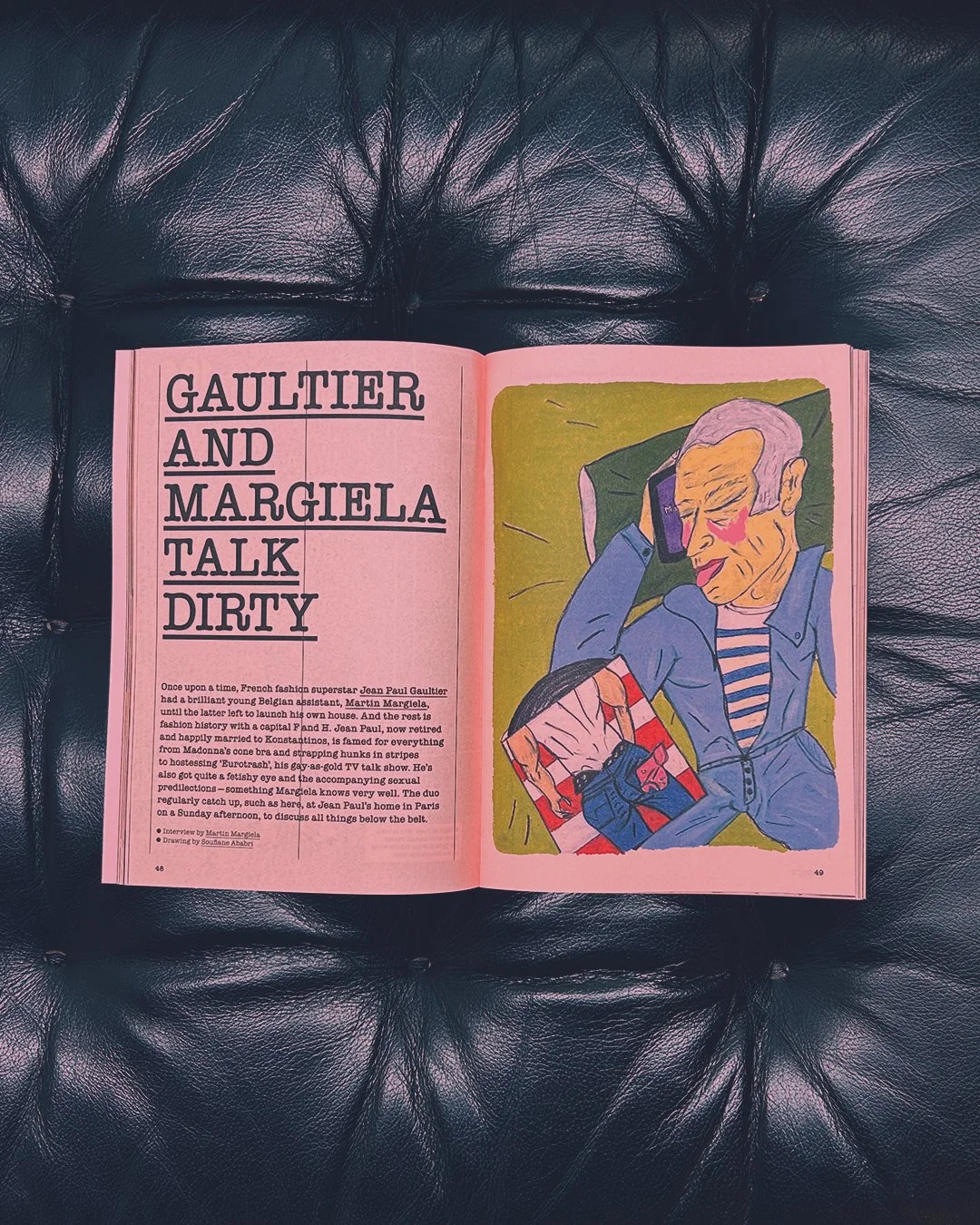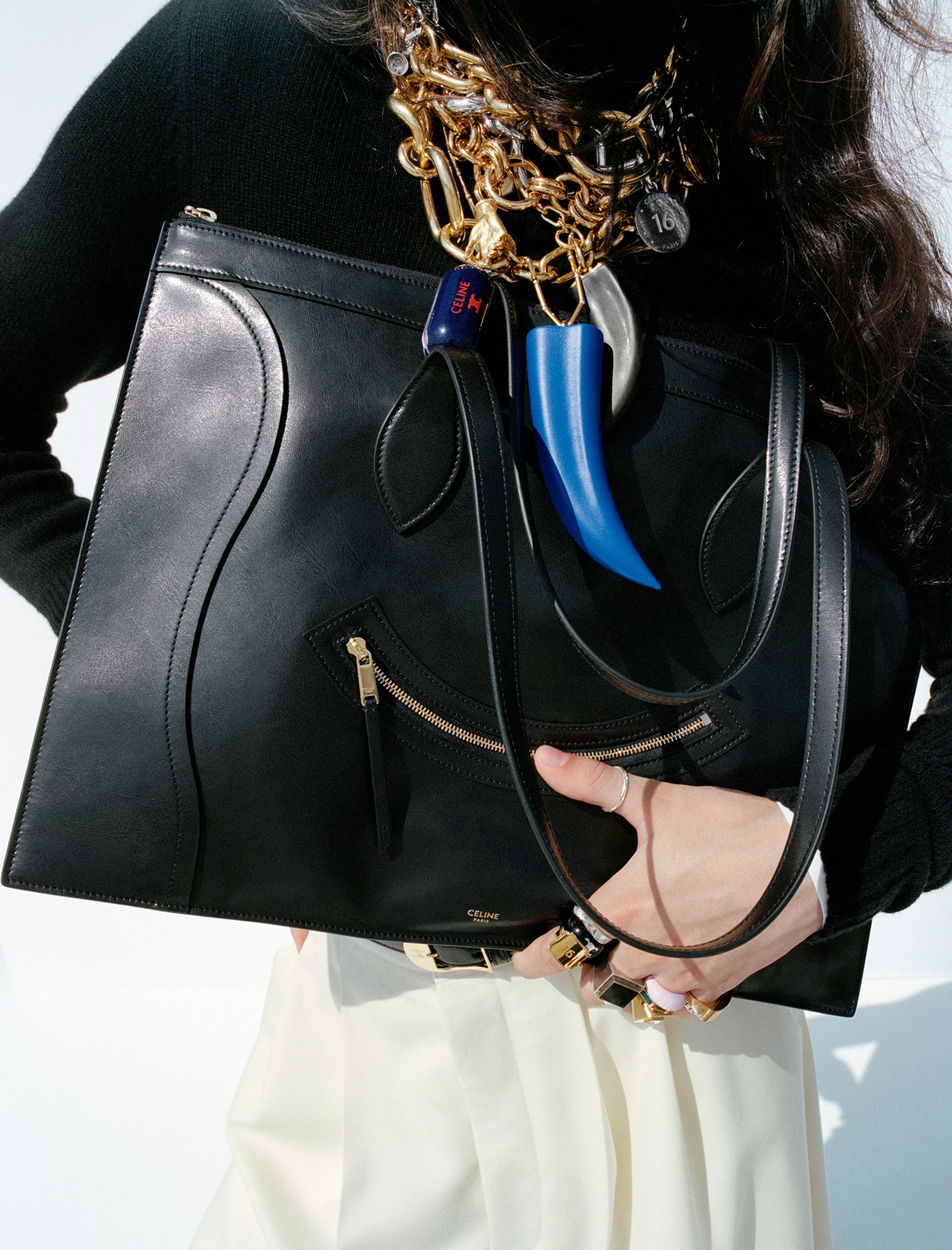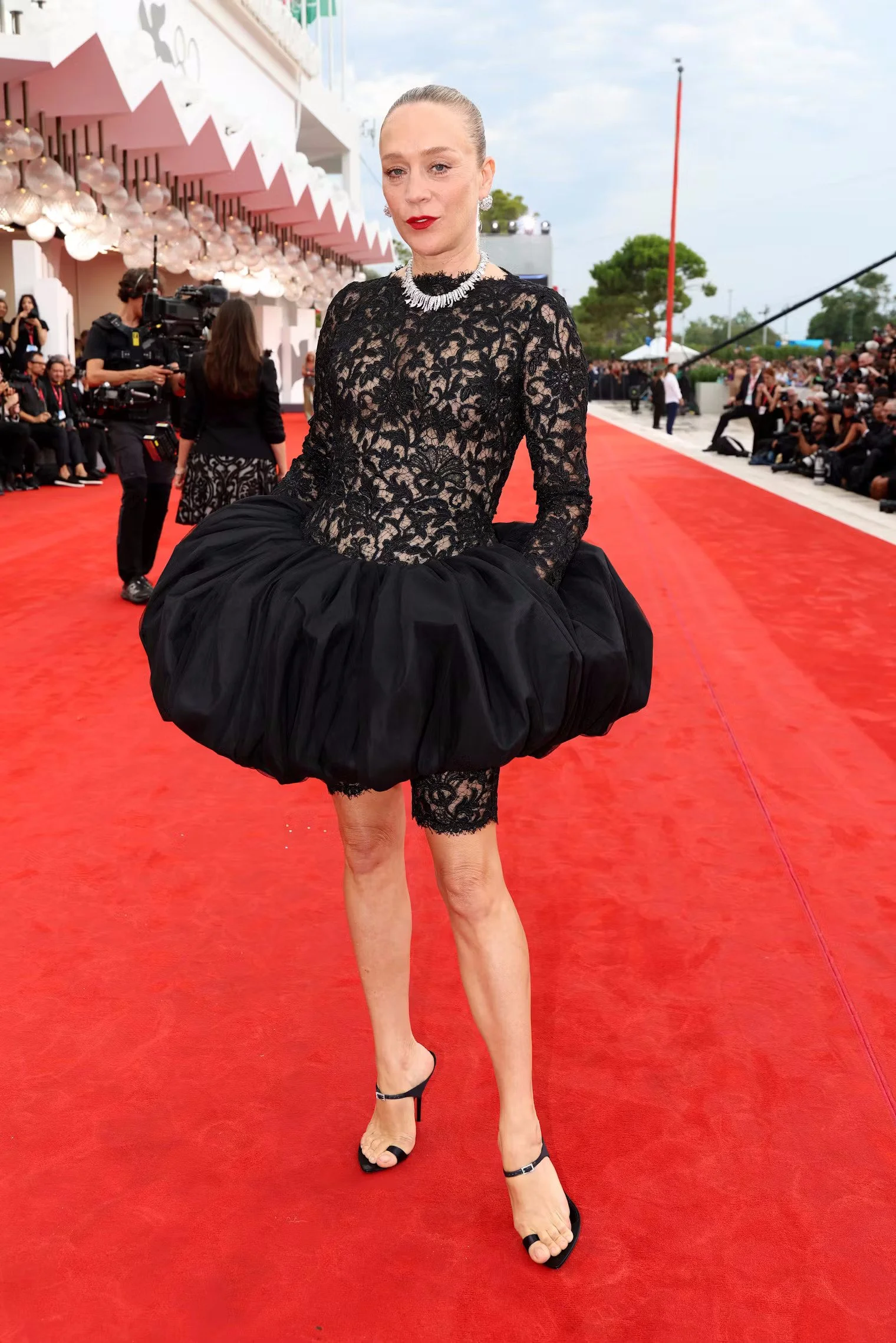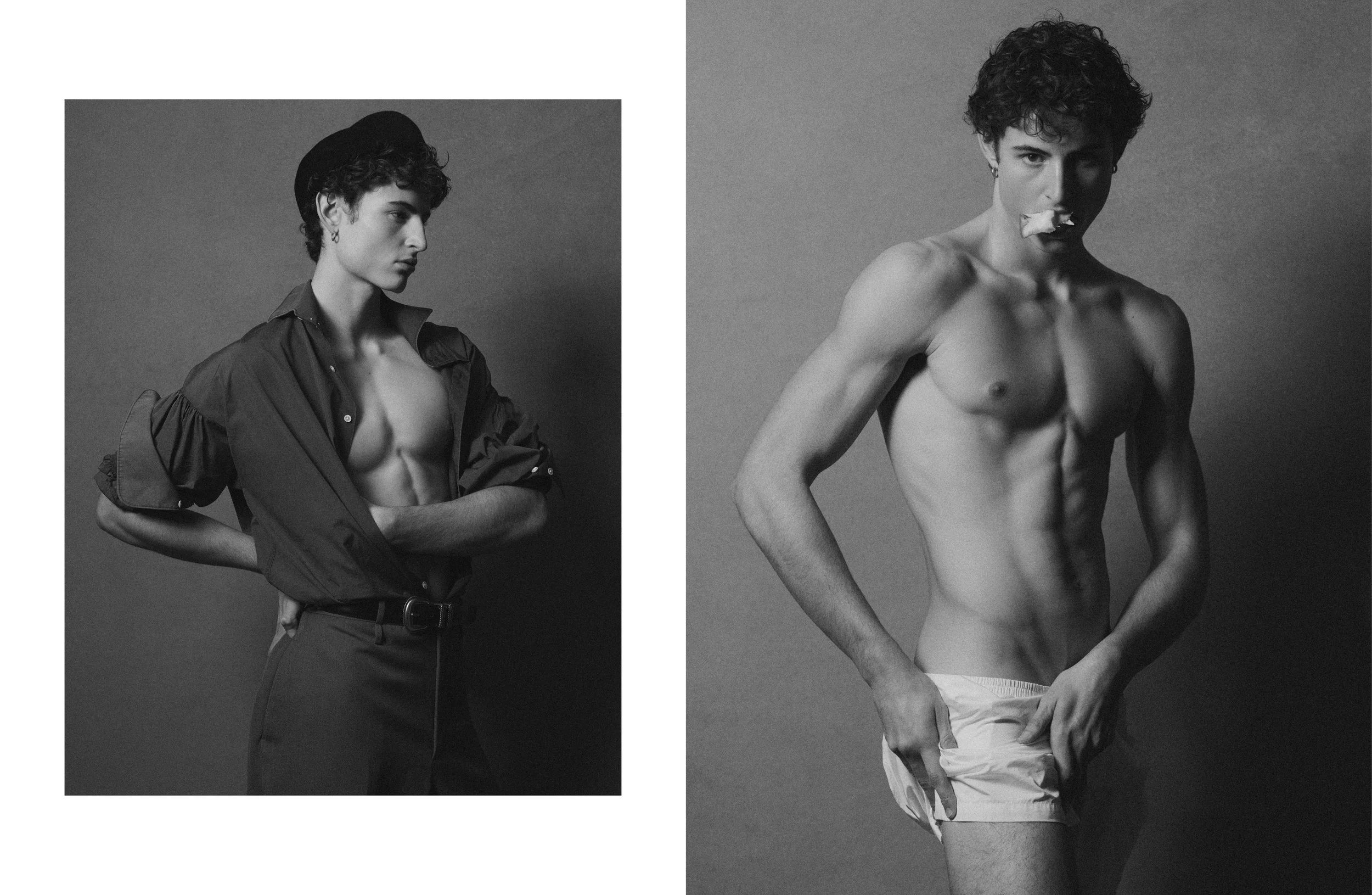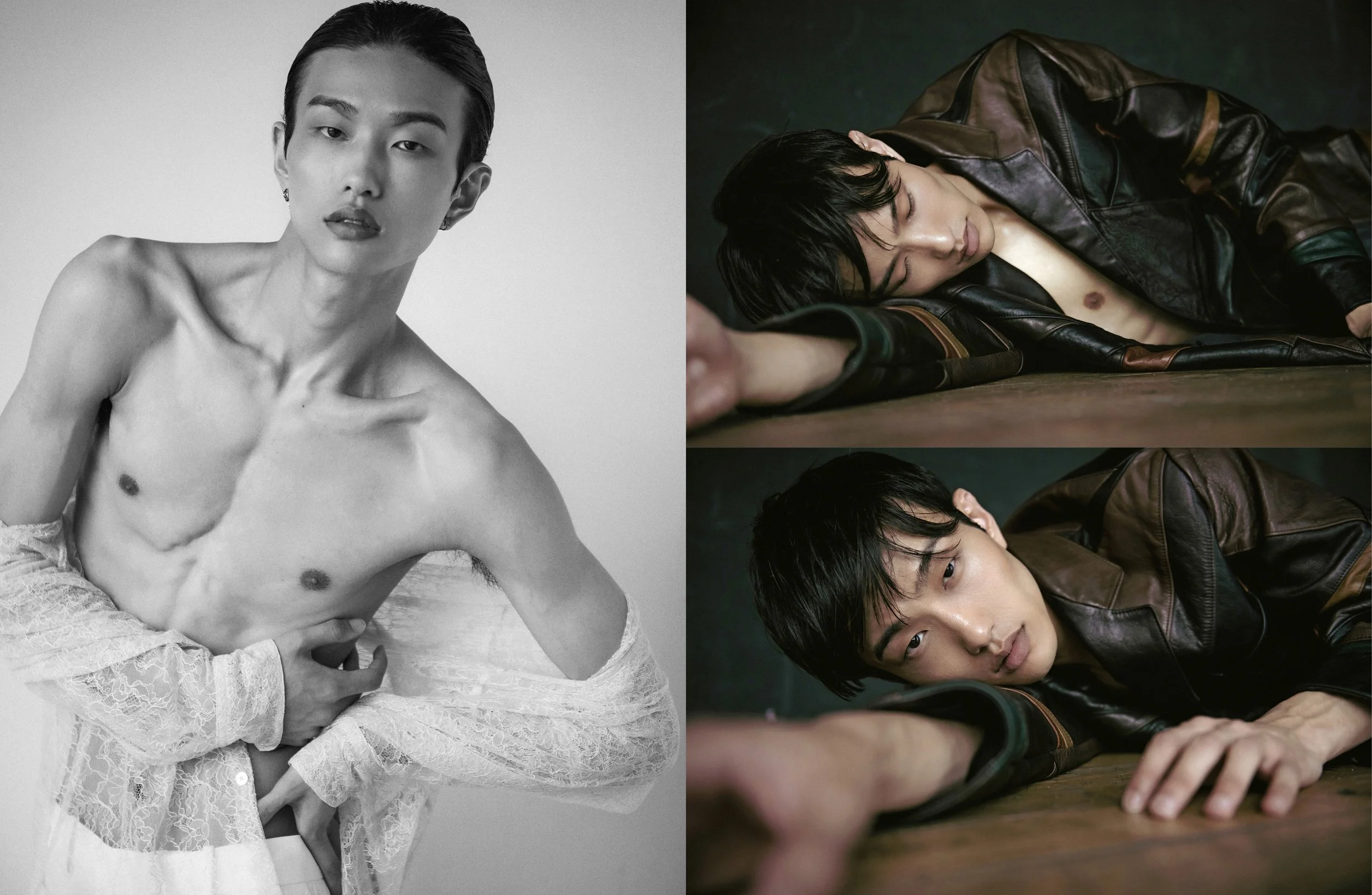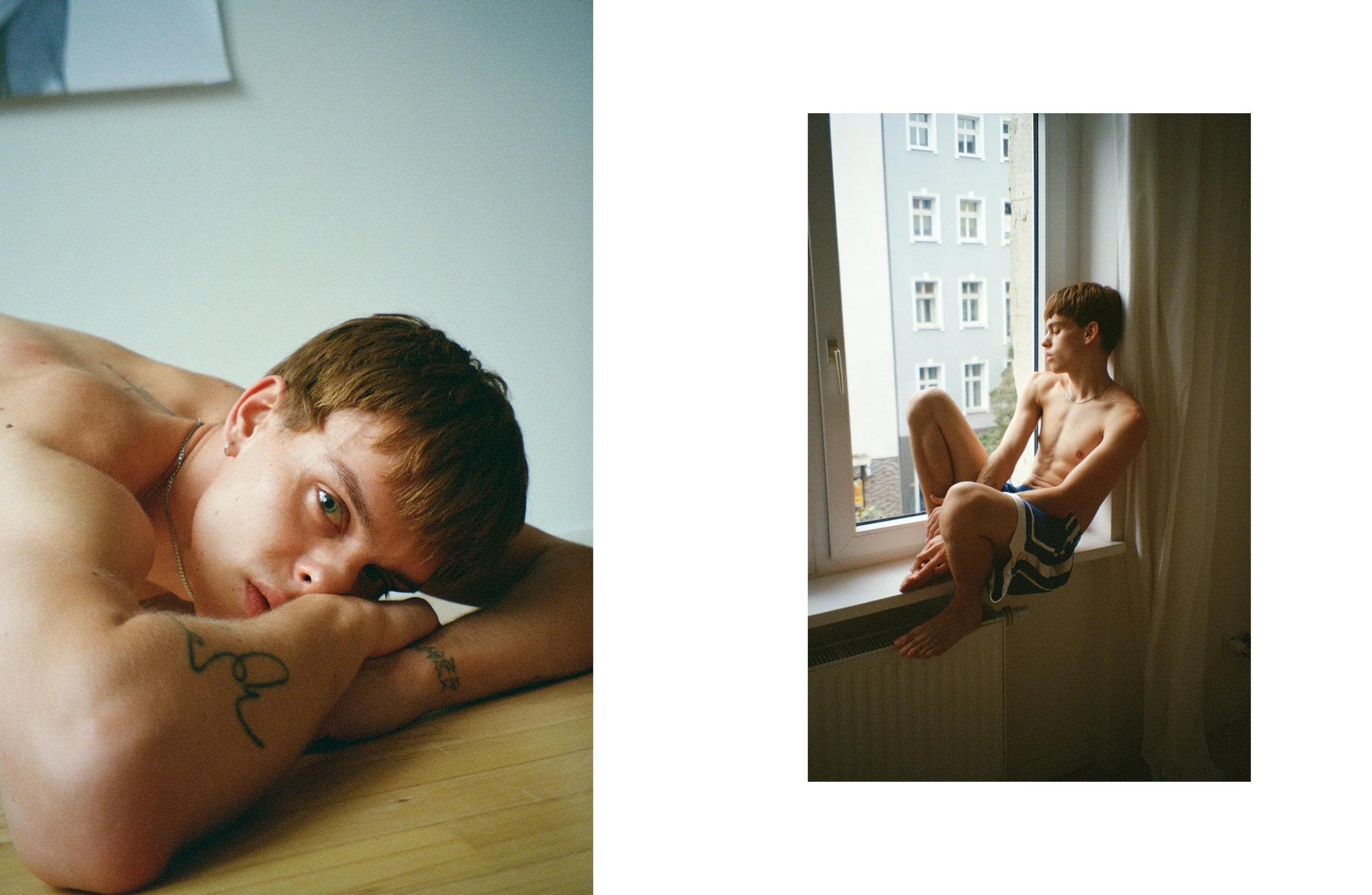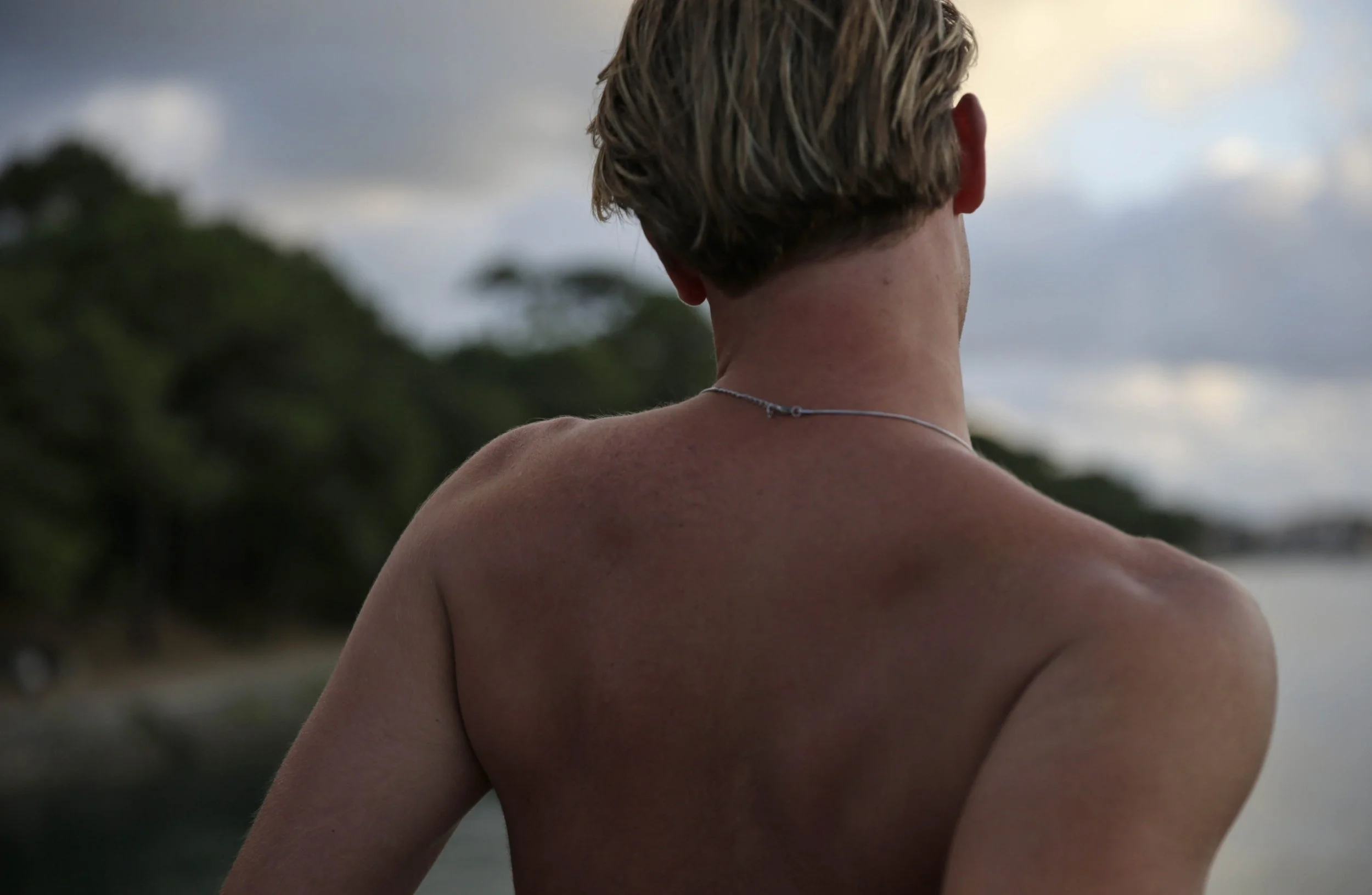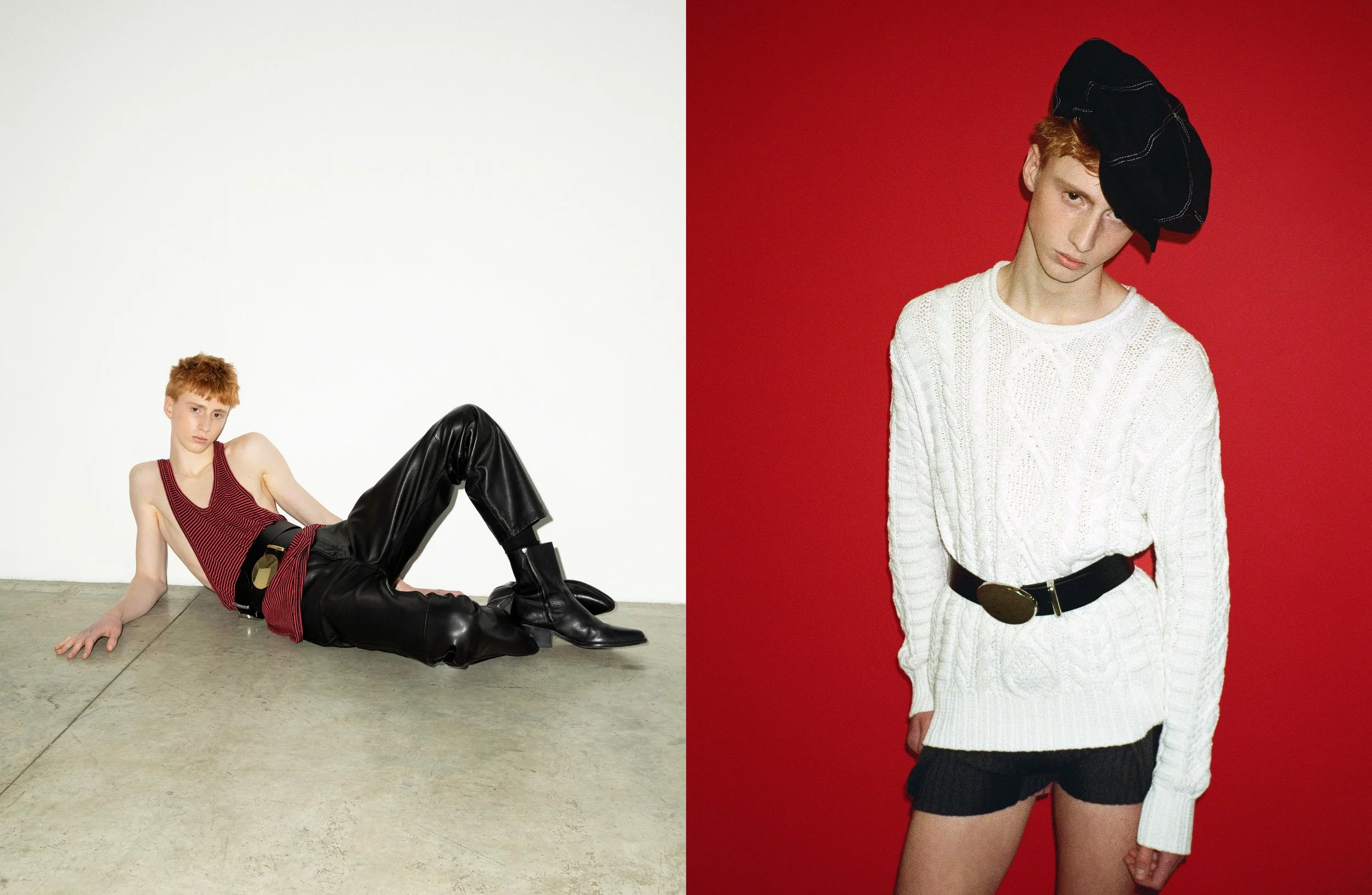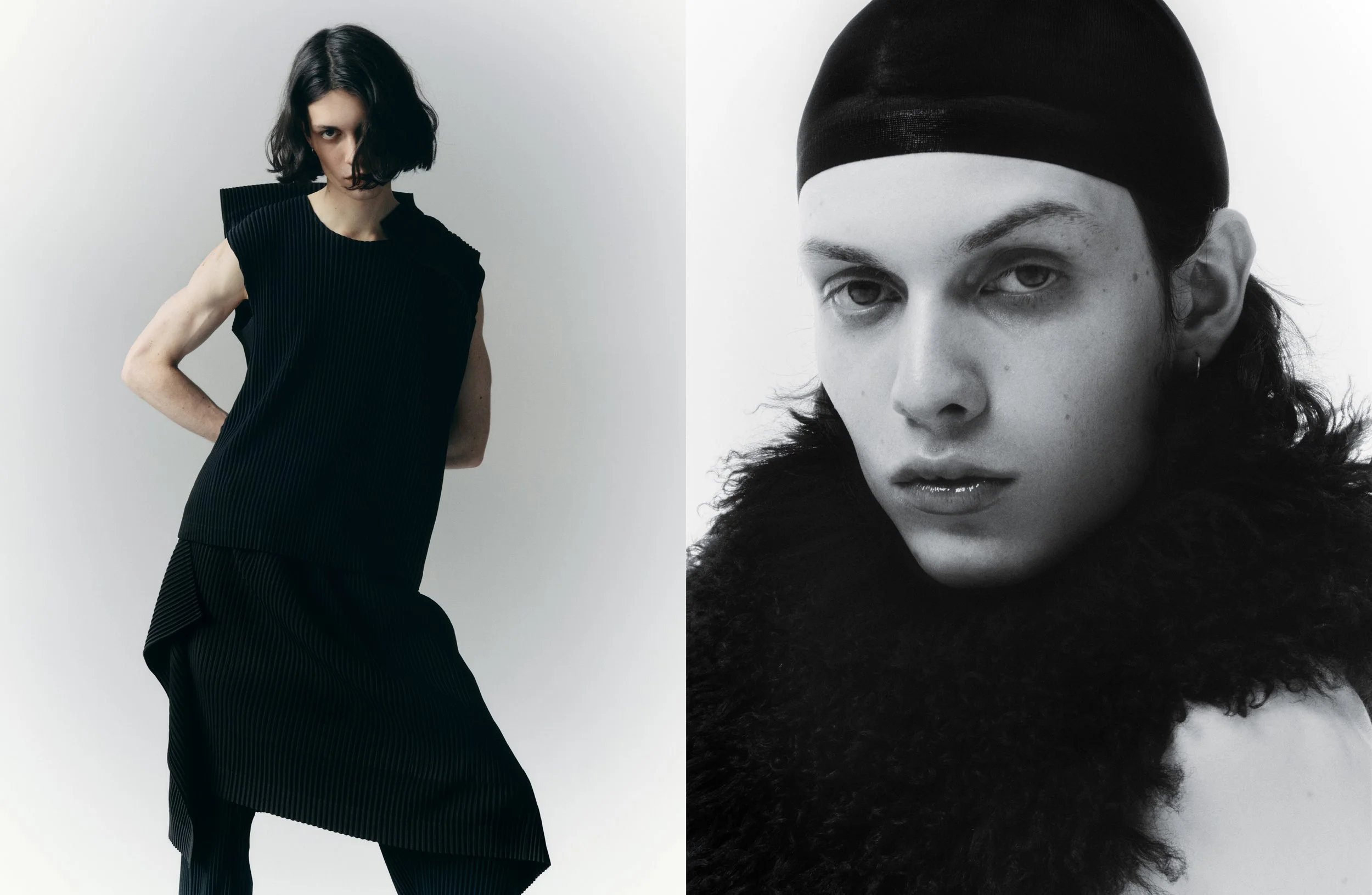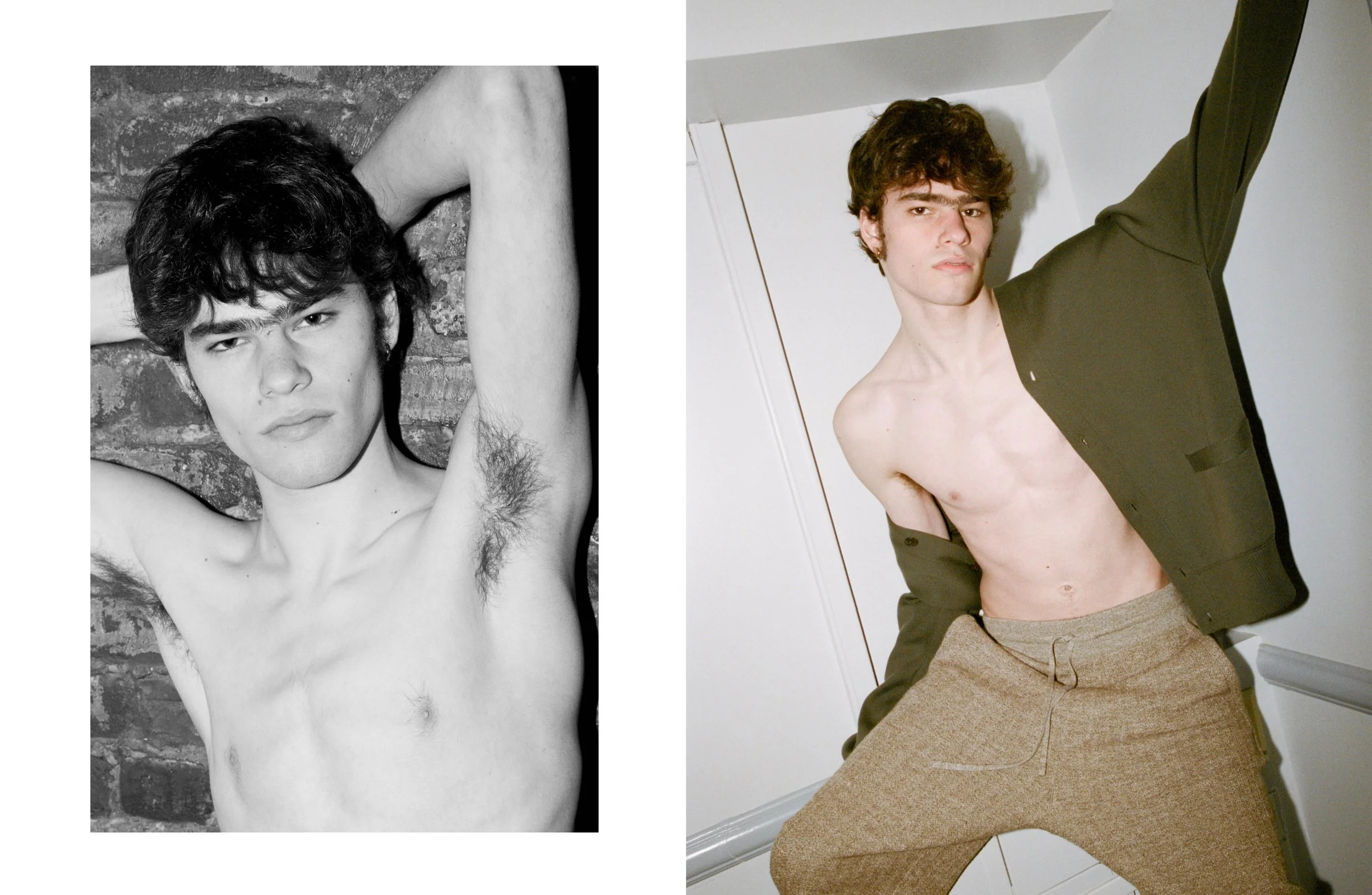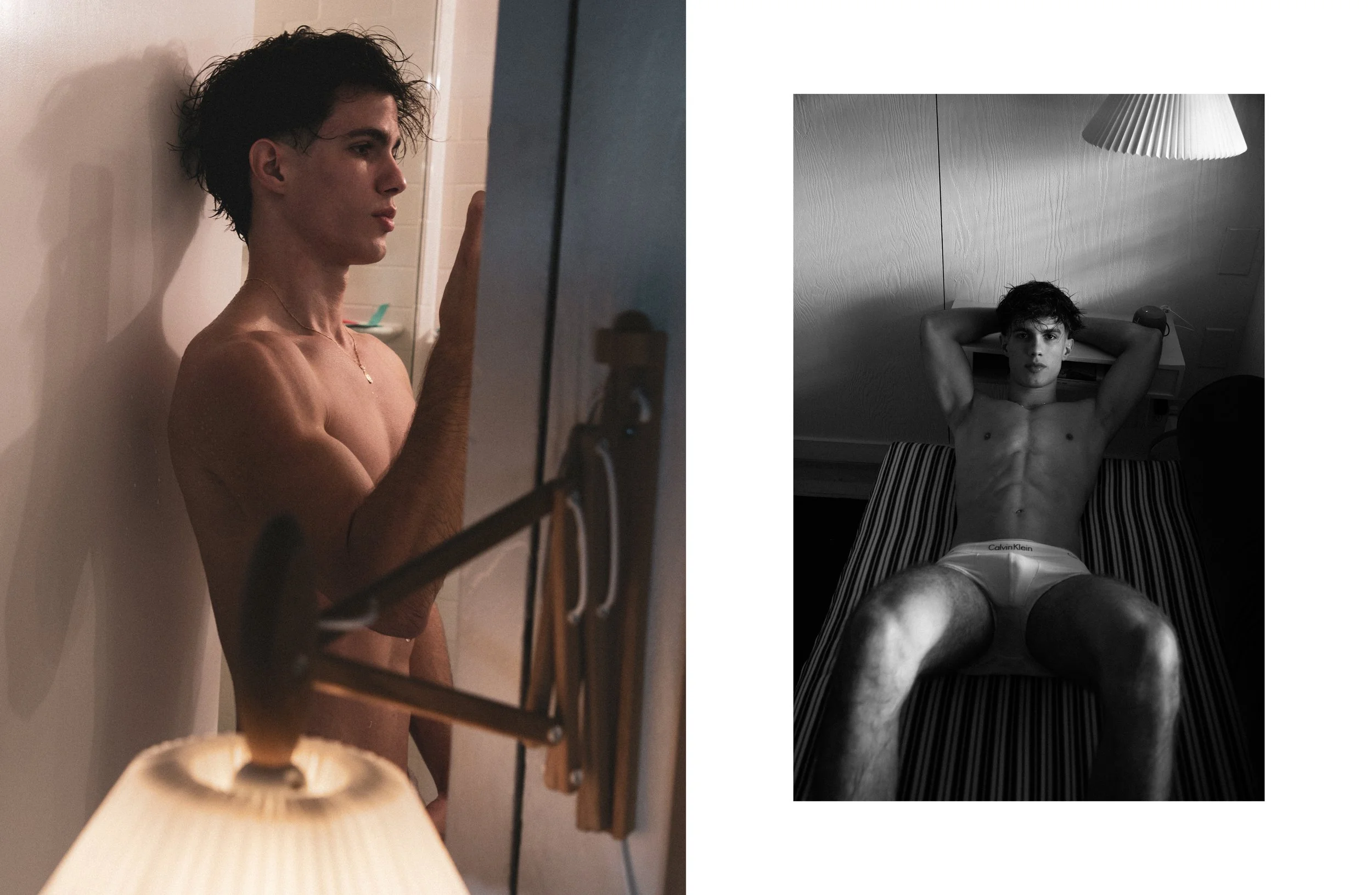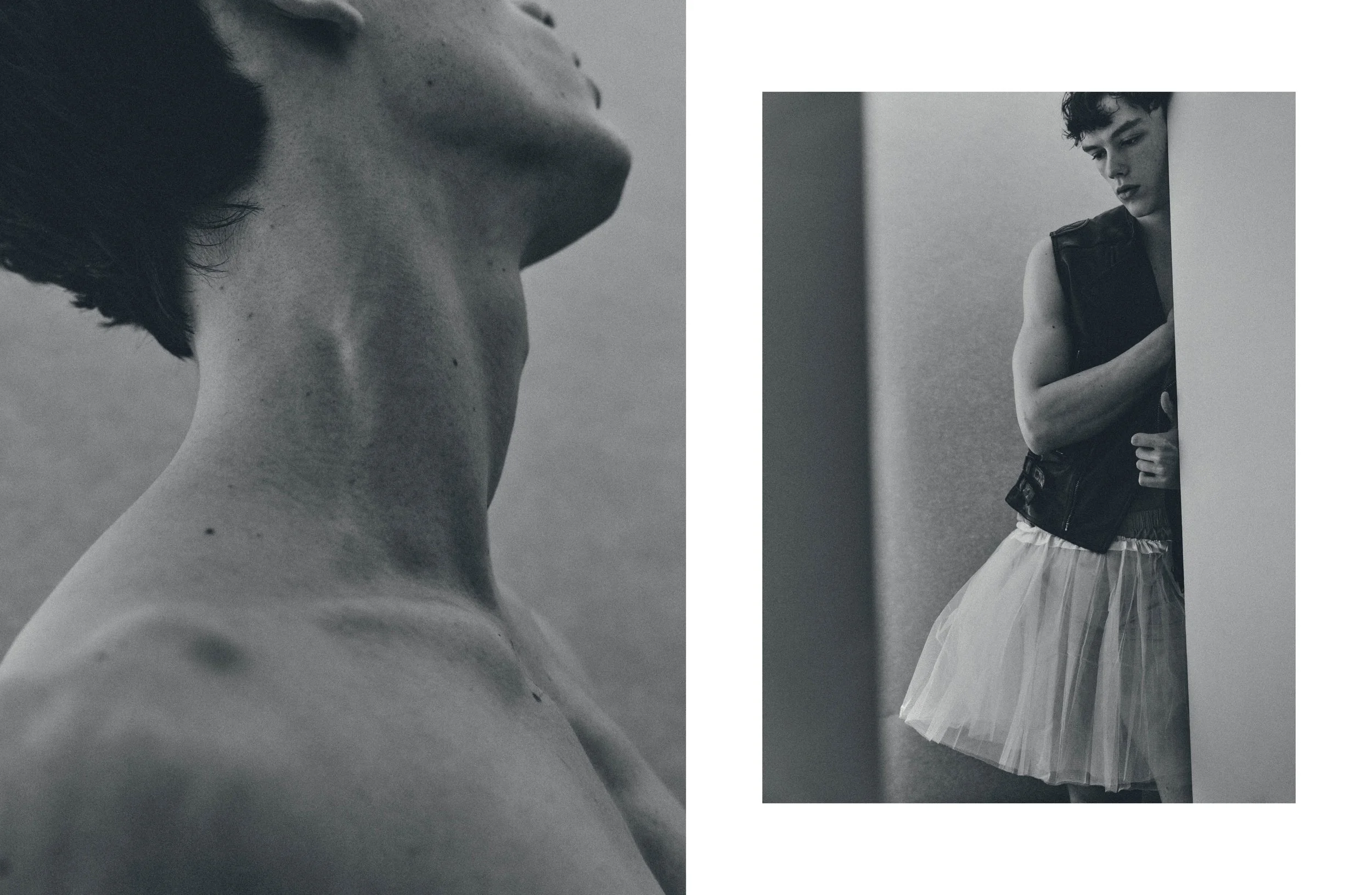A REVIEW OF PARIS FASHION WEEK FW20
Despite the spread of the coronavirus being the most talked-about subject in Paris, Fashion Week went on as planned, gathering press and buyers from all around the world. In difficult times, designers often turn to security as a key theme, but the clear message behind the Paris runways was empowerment and the strength of the female psyche. Instead of escaping reality, the best collections faced the cold hard truth while offering a way forward.
Saint Laurent by Anthony Vaccarello
That was the case with Anthony Vaccarello’s stellar show for the House of Saint Laurent. He focused on the strong shouldered blazer -a Saint Laurent trademark- and made every model look like a tough dominatrix by pairing their sharp jackets with latex leggings. Color was also a key story, giving a sense of hope and cheerfulness, from deep reds and intense blues to purple and fuchsia pink. Think Helmut Newton meets Belle de Jour and you’ll get the picture.
Saint Laurent by Anthony Vaccarello
Chanel
Virginie Viard was in a similar mood at Chanel, in the sense that she embraced colorful separates and subverted bourgeois classics to give them a new twist. Inspired by Claude Chabrol’s cinema -an ironic observer of the middle-class- and Anna Piaggi’s style in the early 1980s, the French designer delivered an upbeat and playful show where skirts were unzipped, dresses were loose-fitting and models walked hand in hand, underlining sisterhood and emancipation.
Chanel
Hermès
The 1980s were also on Nadège Vanhee-Cybulski’s mind and her strong collection paid homage to French designer Jean-Charles de Castelbajac. Outerwear was key, with gorgeous capes, quilted jackets and butter soft leather coats, one of the maison’s expertise. The designer opted for a curvier silhouette, too, and used bold primary colors, which gave the show high energy. No wonder ready-to-wear has been on the rise at Hermès, given the exquisite materials and fabrications used for its womenswear.
Hermès
Louise Trotter did a very good job at elevating Lacoste and make you forget its connections to streetwear and sports in general. Relaxed elegance was on the agenda, with sleeveless stripy sweaters, roomy outerwear, prim pleated skirts, and a gorgeous color block leather coat, which oozed luxury. The energy came from the designer’s color palette, ranging from luminous greens and bright pinks, to warm yellows and dynamic oranges.
Lacoste
Celine by Hedi Slimane
If Hedi Slimane presented his men’s and women’s together for the first time, he did not -however- stray away from the codes he established for the House. His obsession with rock-n-roll bohemians took us back to the 1970s when elegance was not about overt sexiness nor provocation. There were many items to fall in love with, from gorgeous leather boots and decadently embellished dresses to sharp slim suits and romantic capes.
Celine by Hedi Slimane
Kenzo
For his much anticipated debut at Kenzo, Felipe Oliveira Baptista was inspired by the same moment, when Kenzo Takada arrived in Paris for the first time and discovered French fashion. The collection was a clever mix of arty dresses and protective outerwear, which brought Anne-Marie Beretta and Claude Montana to mind. The designer used the emblematic tiger in unexpected ways, as well as cool camouflage for coats and separates. It was smart from him to avoid the sexy and focus on the cerebral instead, reconnecting with the maison’s Japanese soul.
Kenzo
Junya Watanabe
Both Comme des Garçons and Junya Watanabe sent out standout collections this season, which also underlined female power and confidence. While Rei Kawakubo is famously secretive about her inspirations, her show took shapes to new extremes while keeping an incredible sense of poetry. Watanabe was referencing the rebellious spirit of punk singer Debbie Harry, dedicating his collection to her. His models wore timeless, deconstructed tailoring while their skirts and dresses morphed into bags. Was this an ironic comment on luxury houses relying on accessories to meet their targets?
Comme des Garçons & Junya Watanabe
You will rarely see bags at a Rick Owens show, unless they are fully part of the designer’s narrative. He pursued his exploration of confident and ultra-modernist sci-fi glam, evoking the style of David Bowie and a certain fearlessness, which he has made his own. Towering platform boots, sexy slit dresses and voluminous coats with squared shoulders gave the Rick Owens girl an oddly elegant and alien vibe.
Rick Owens
Other collections depicting female power this season were Sacai, Y/Project, Valentino and Paco Rabanne, as well as Marine Serre, whose message was more upbeat than last season. While Dries Van Noten was in a party mood and was -you guessed it- inspired by the 1980s, Christian Wijnants’ serene show emphasized easy shapes and gorgeous knitwear.
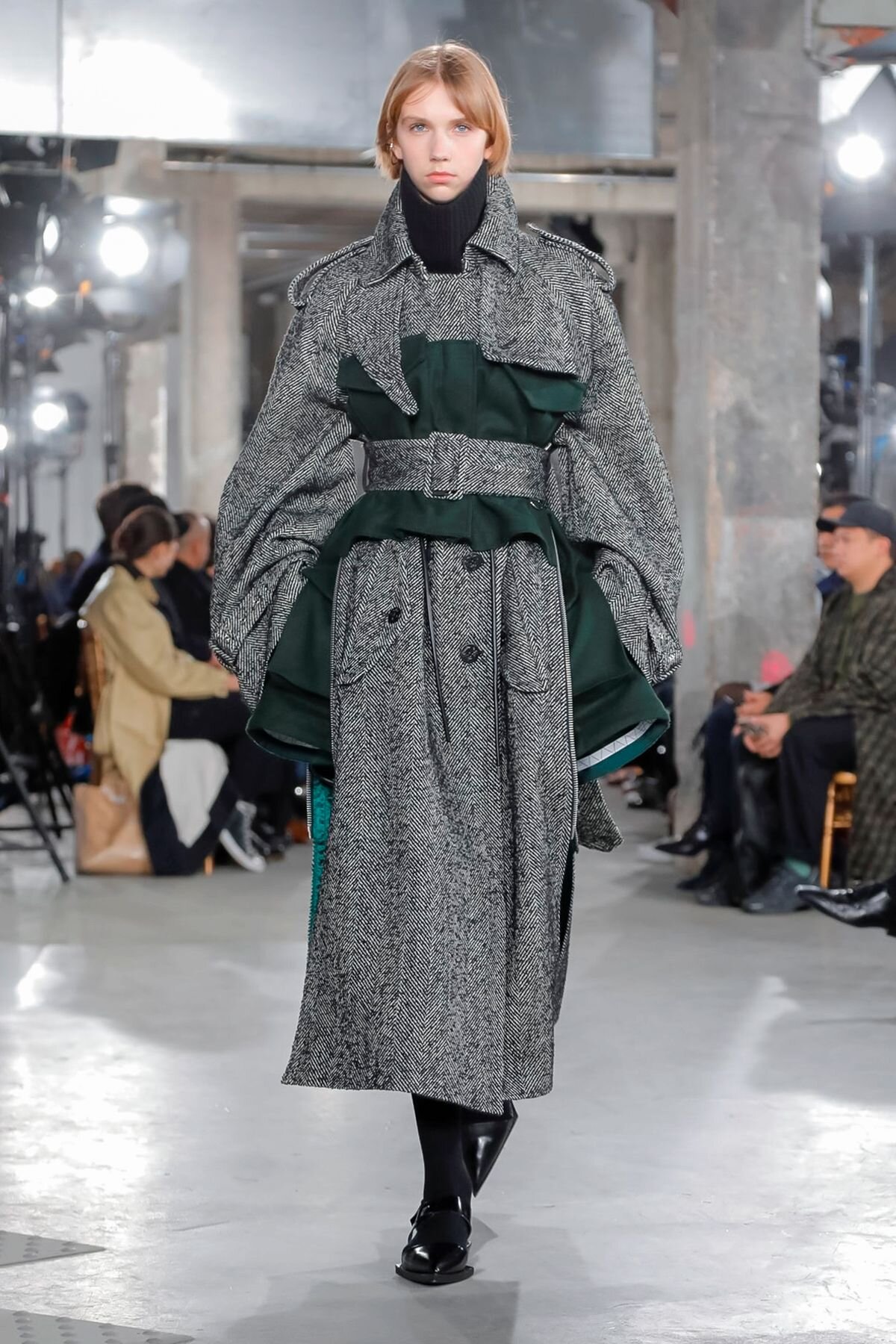
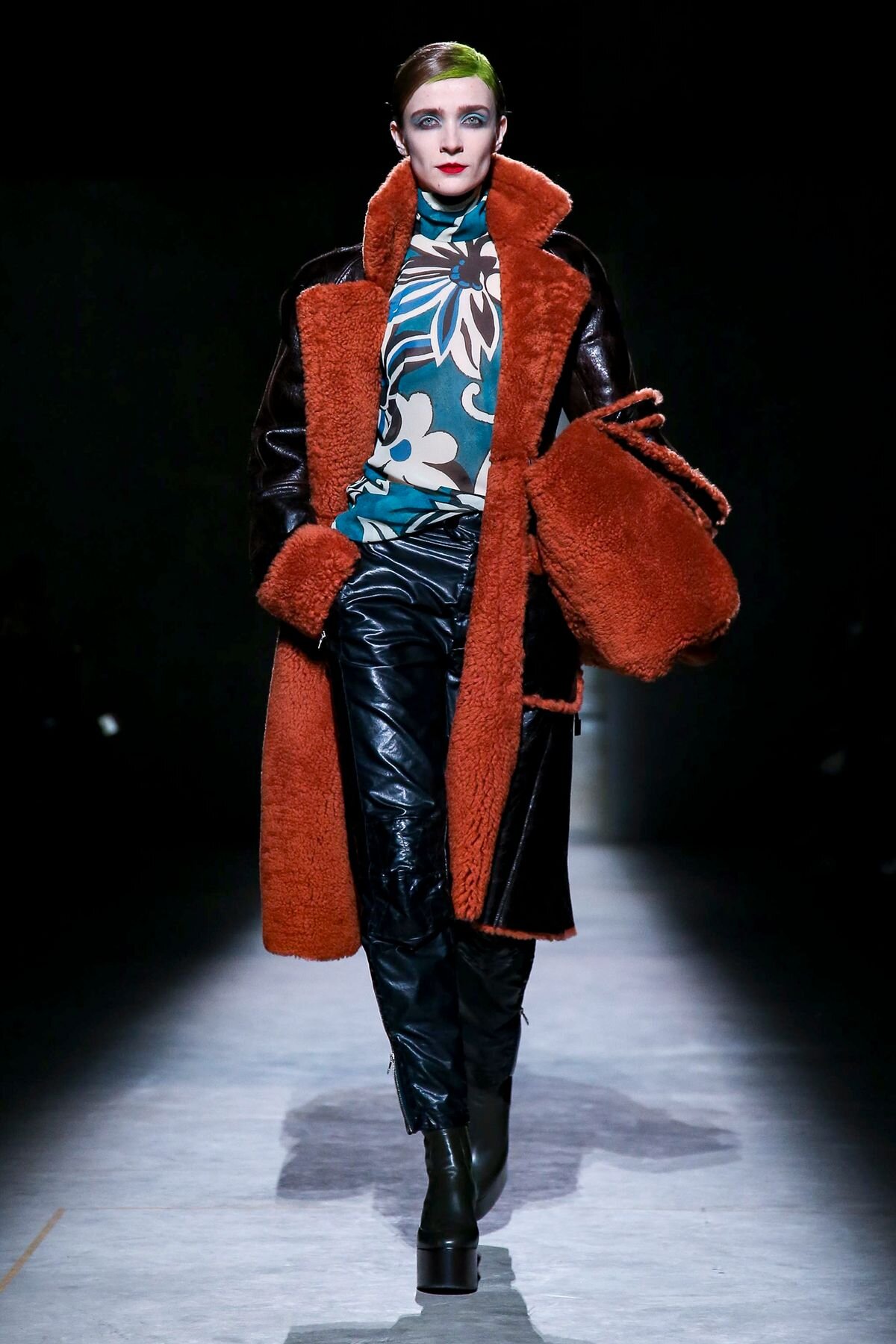
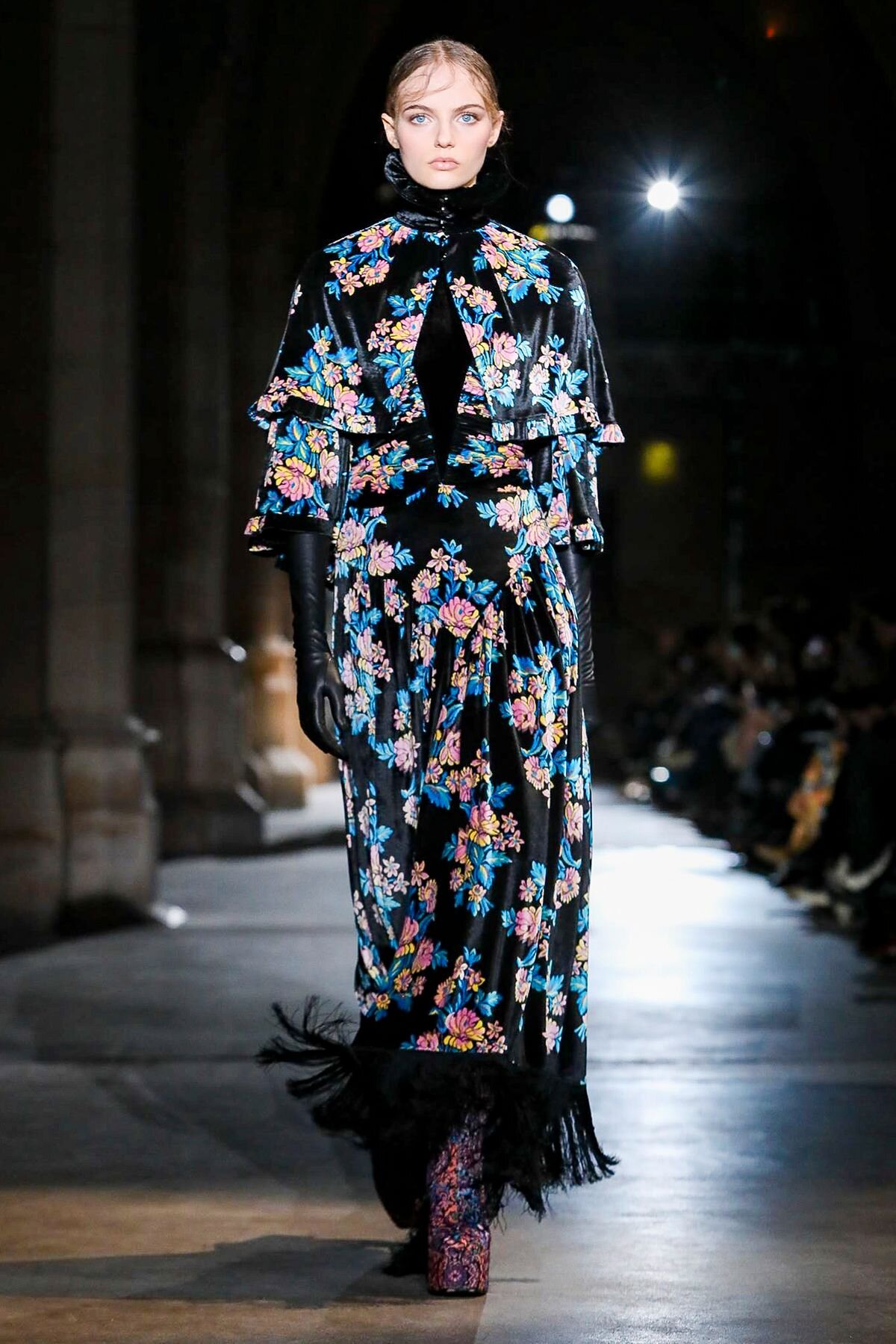

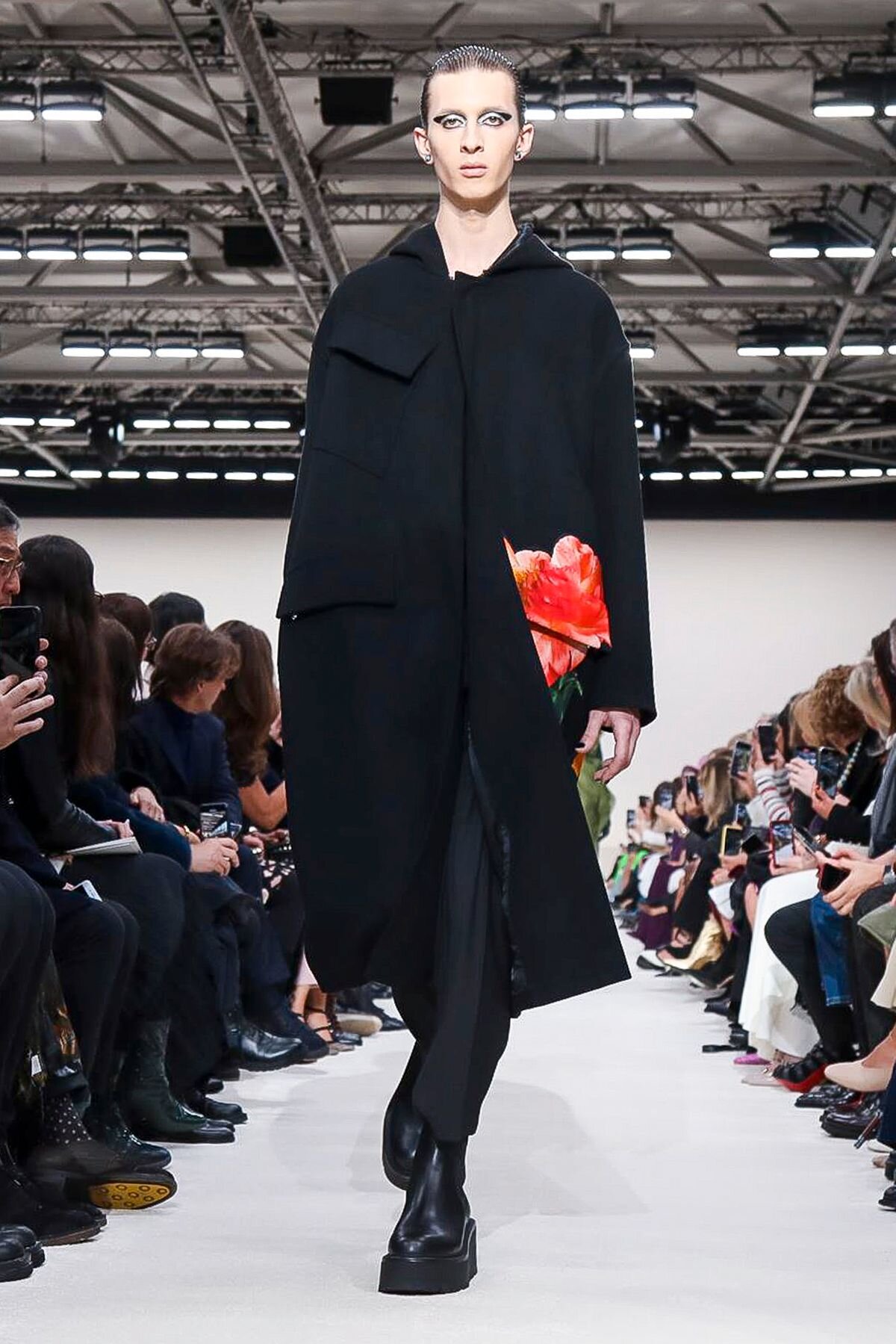
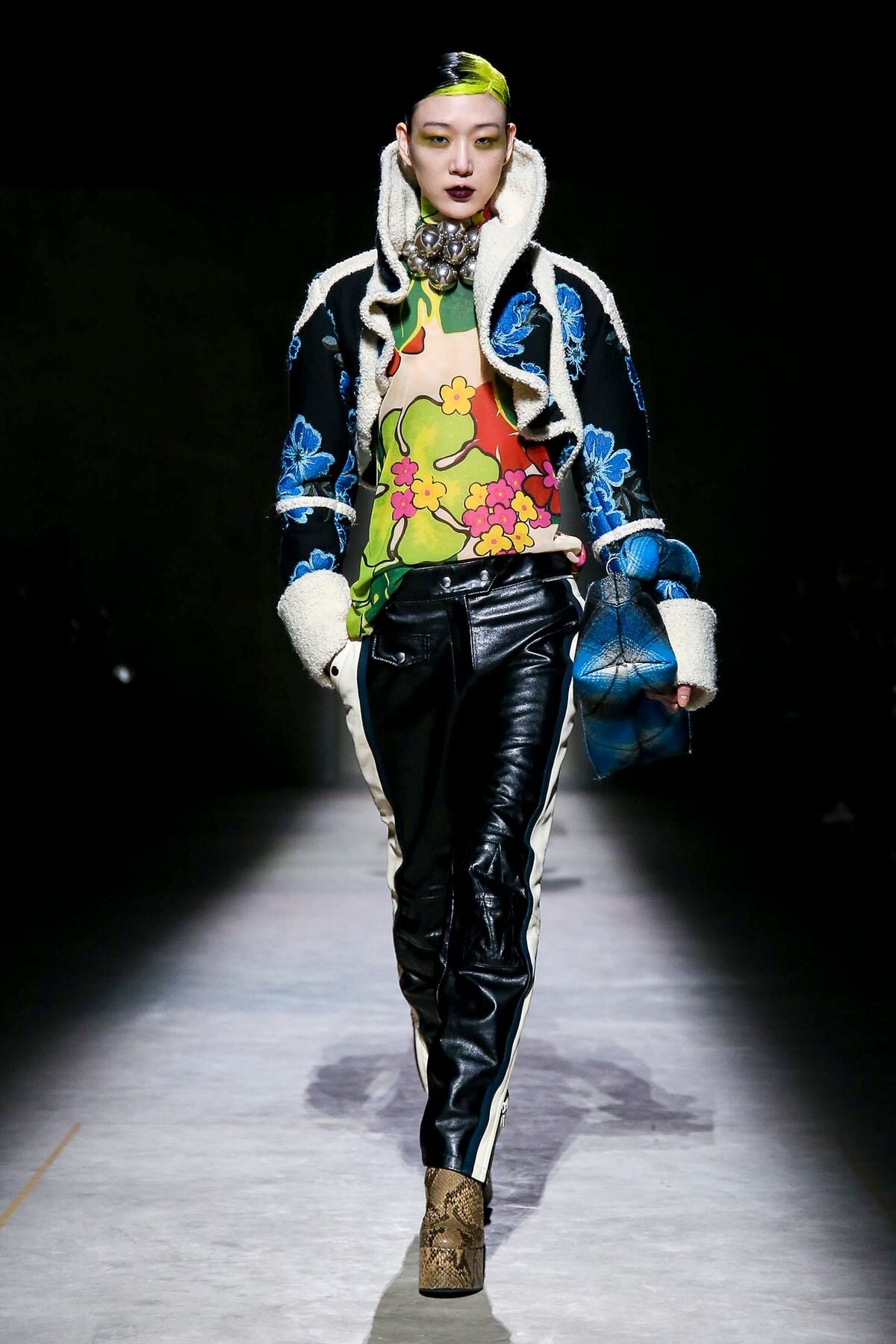
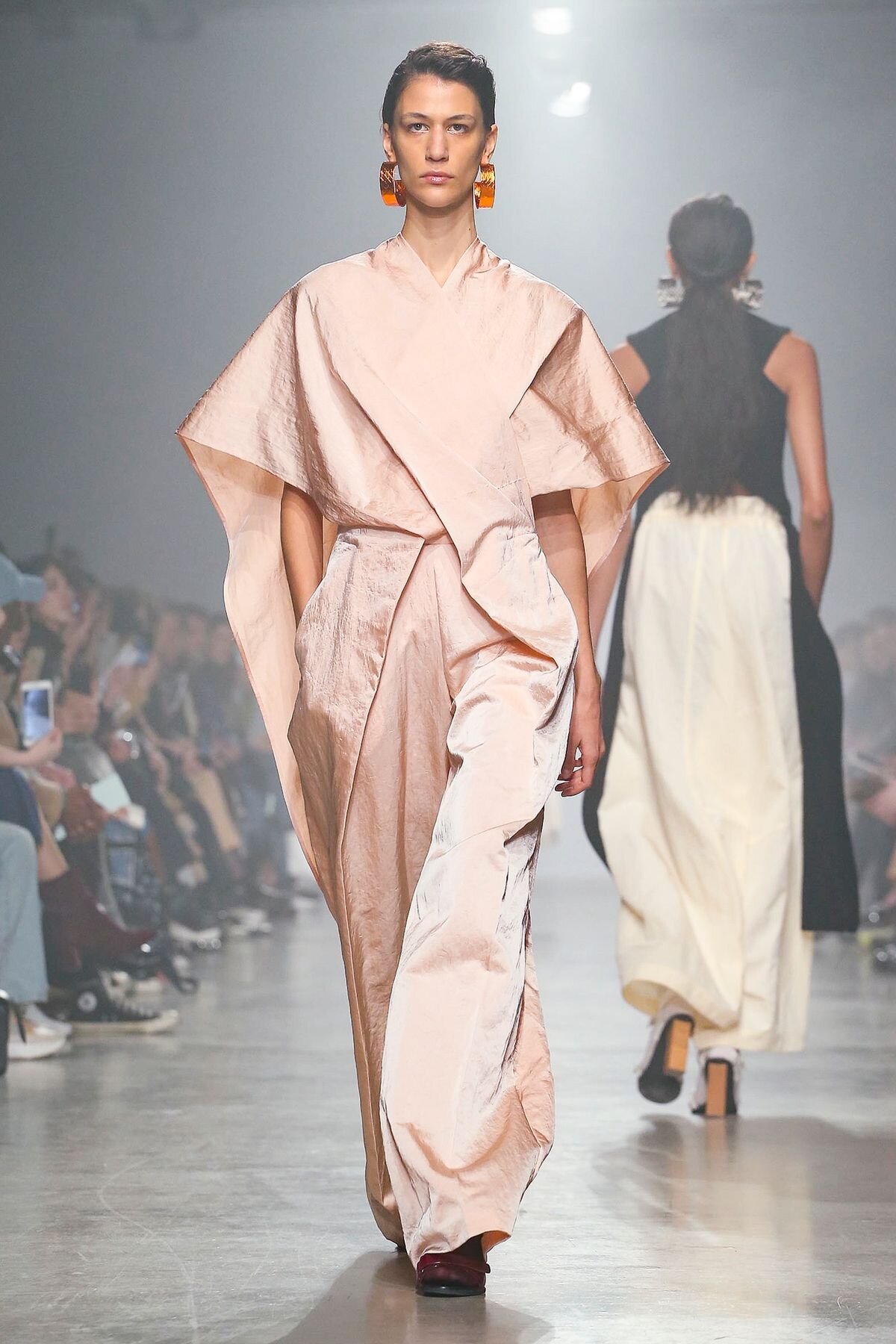
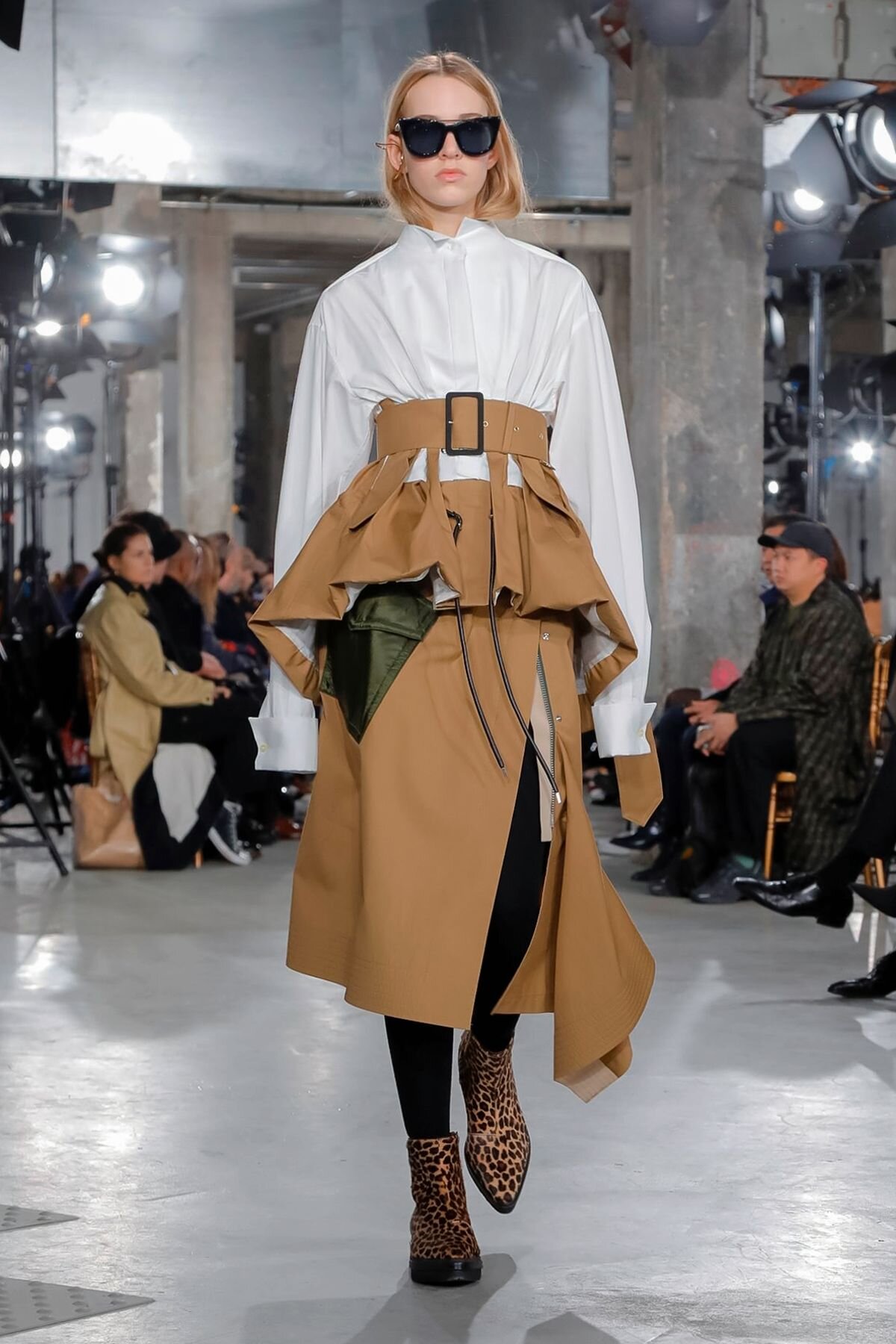


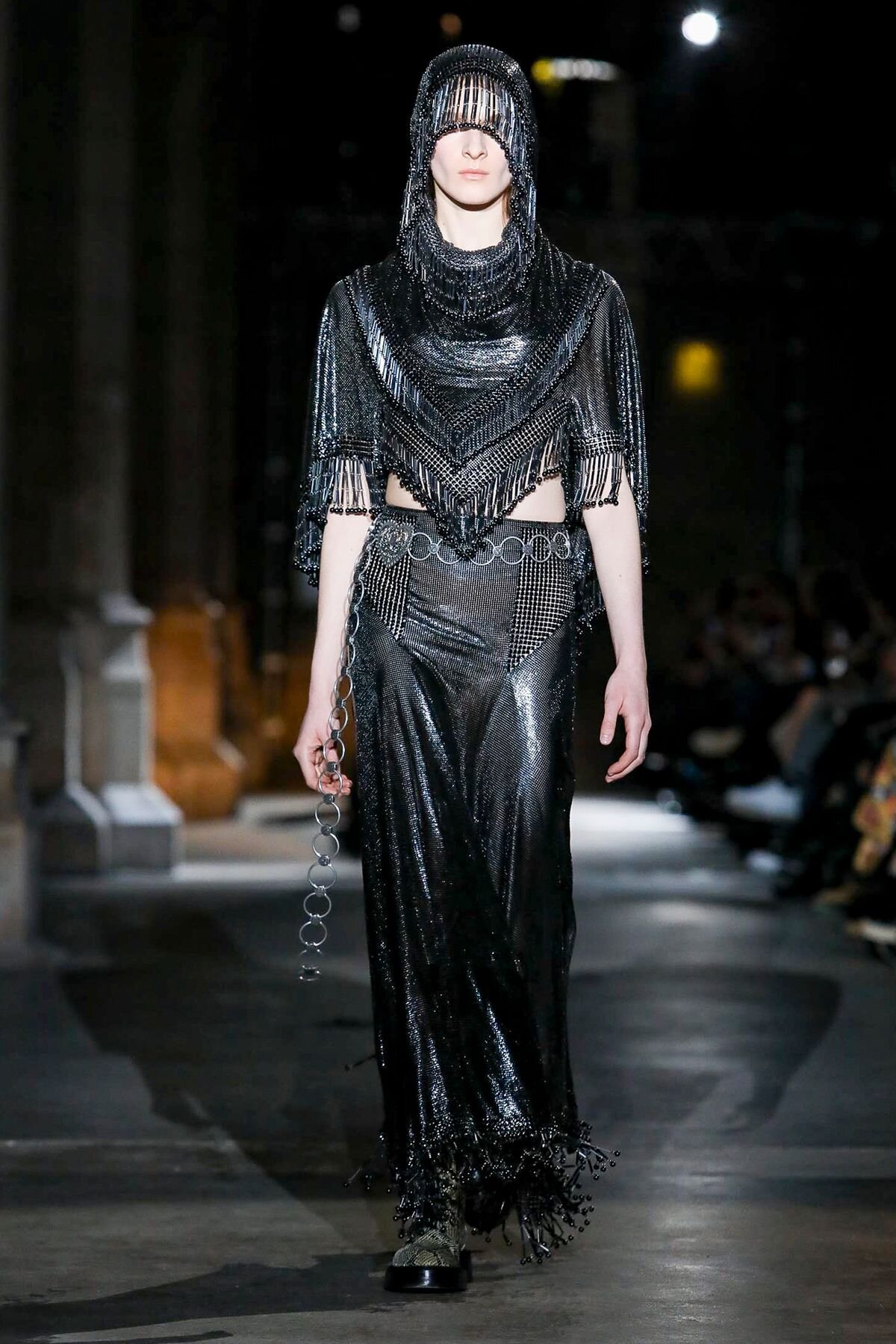
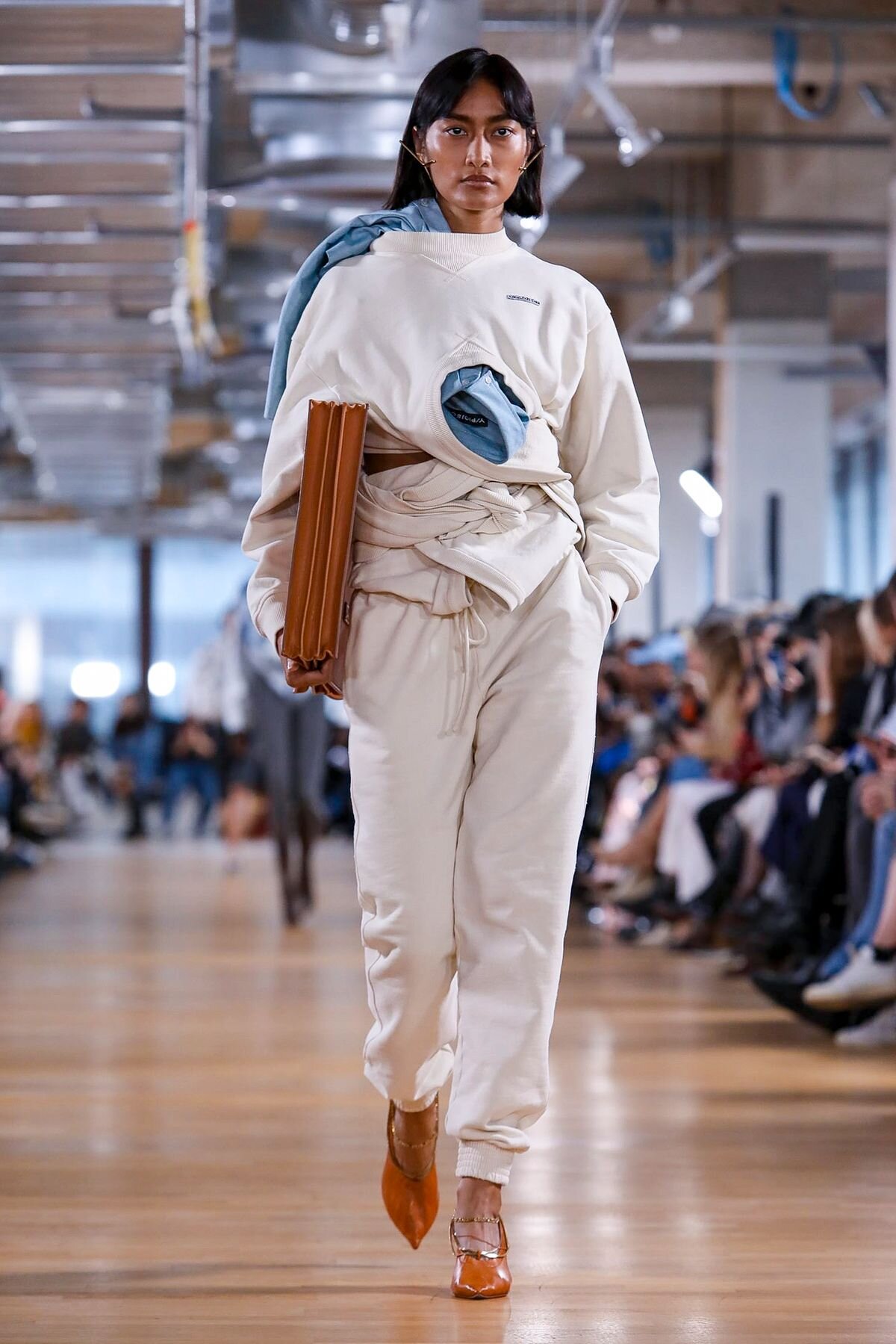
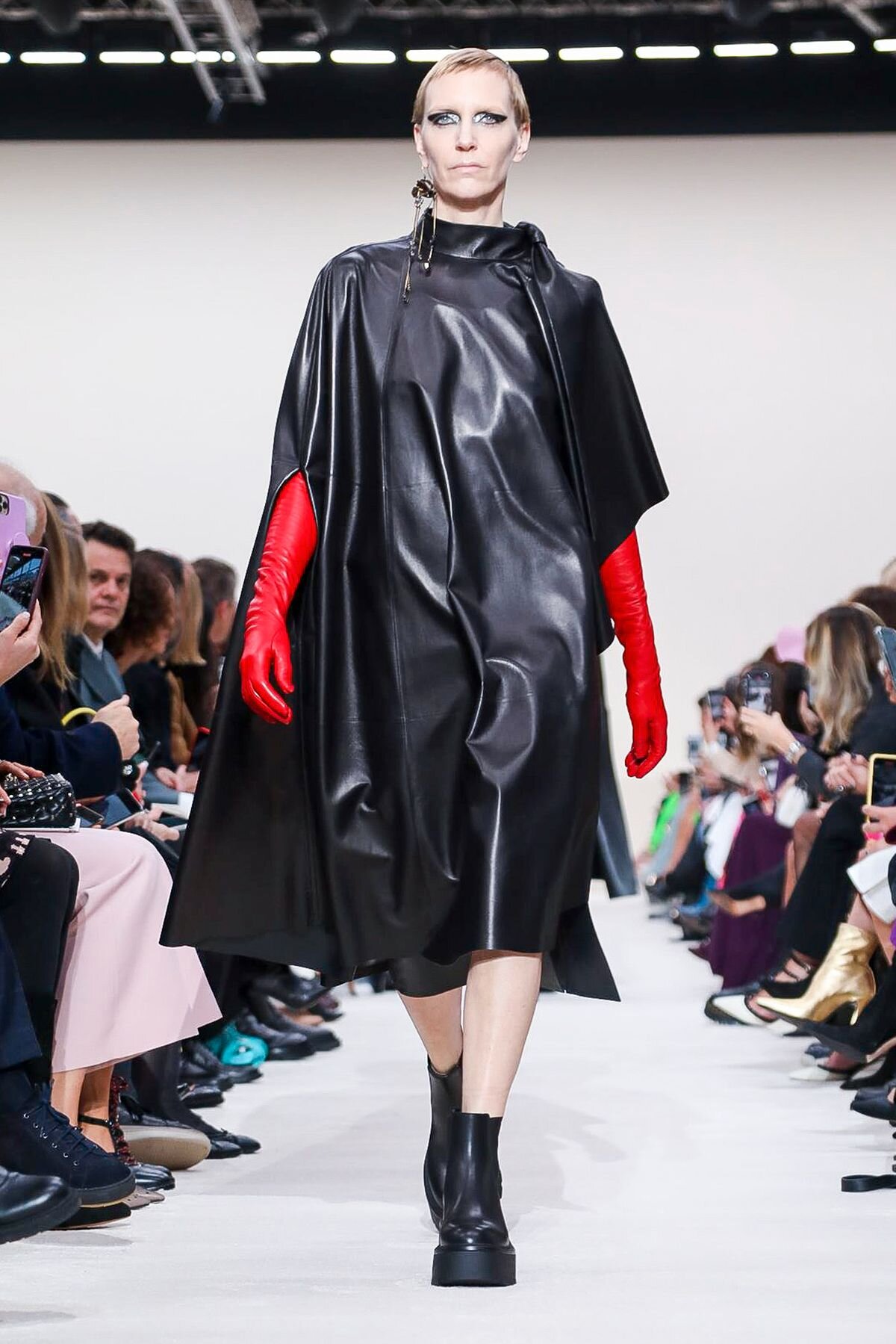
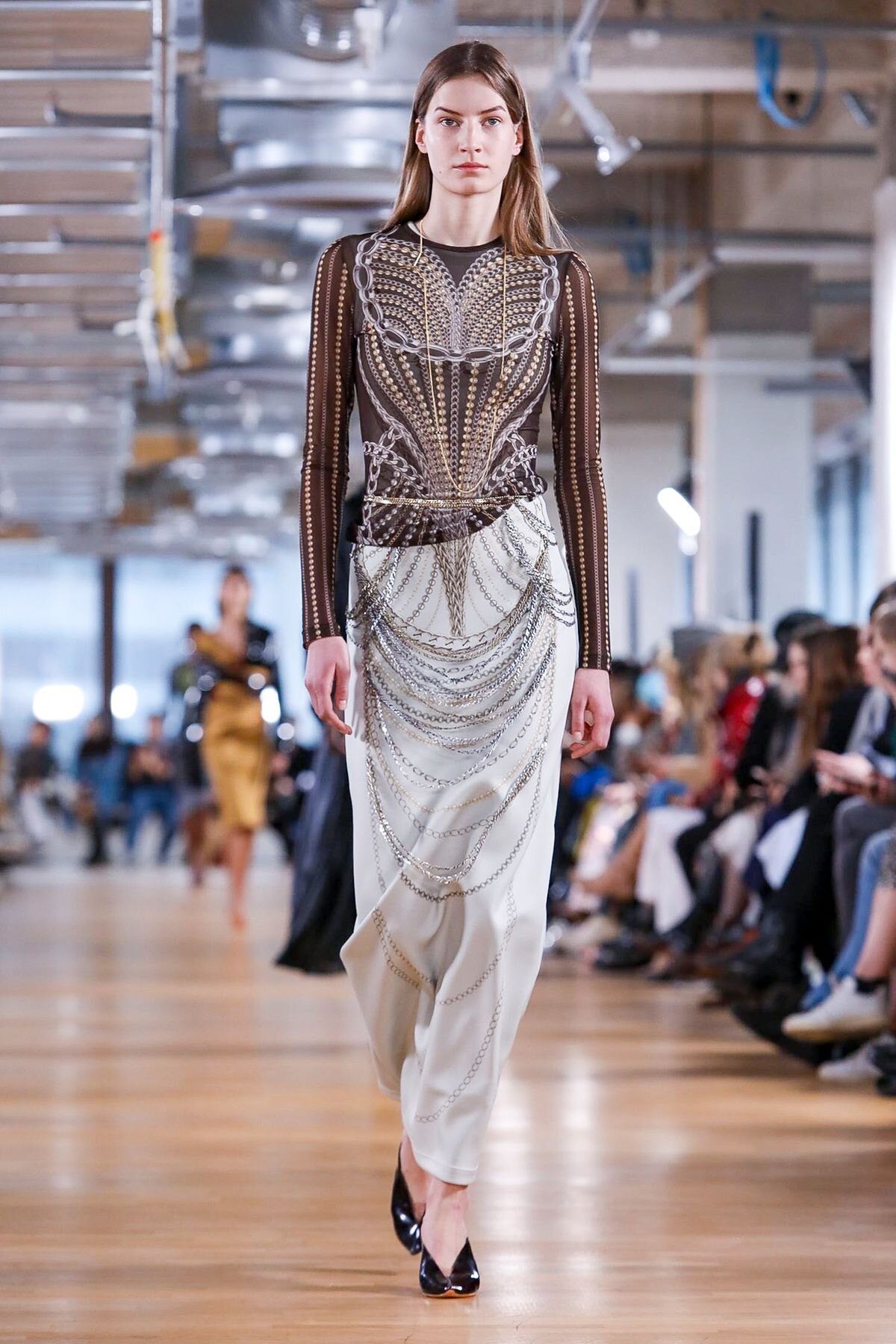
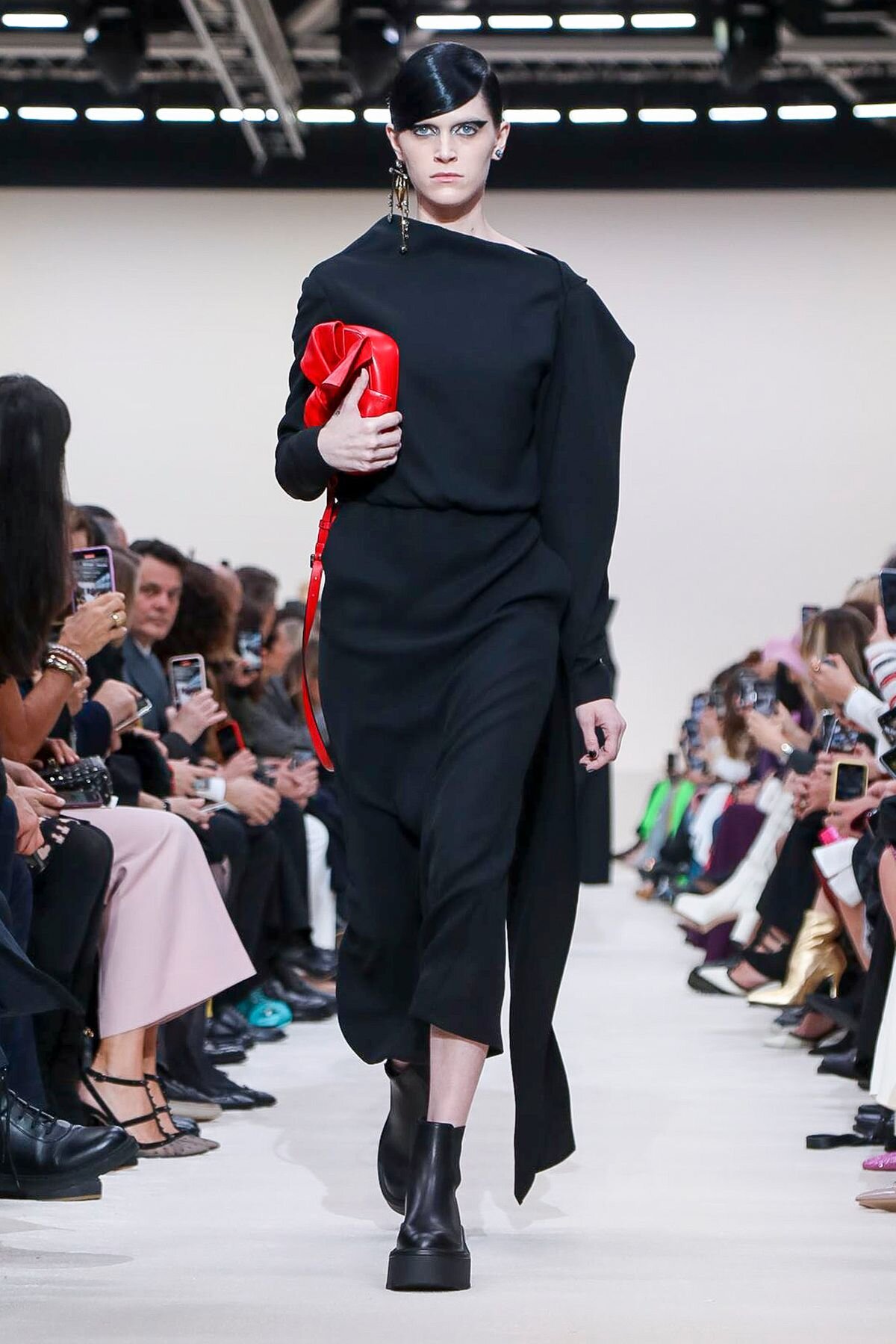
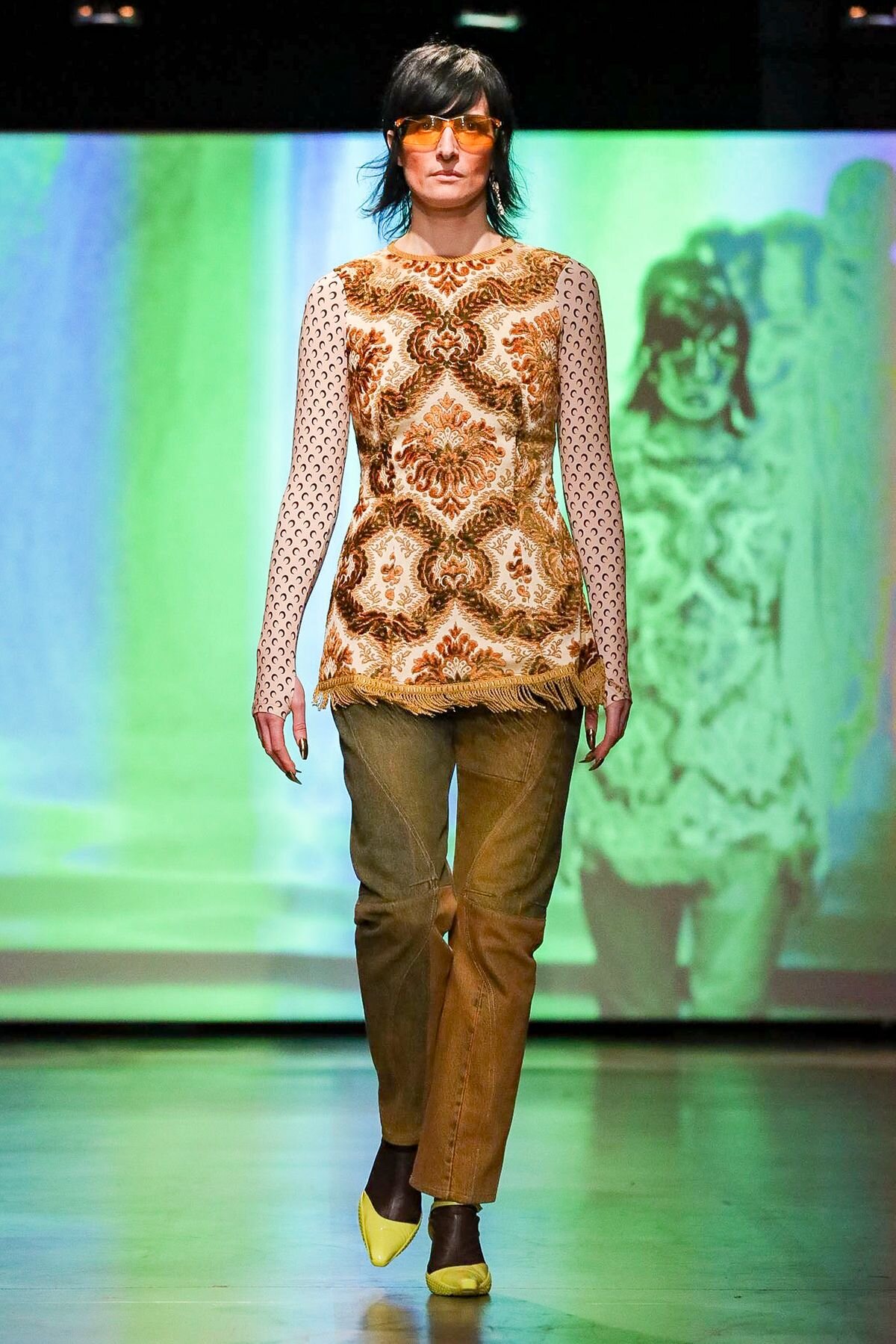
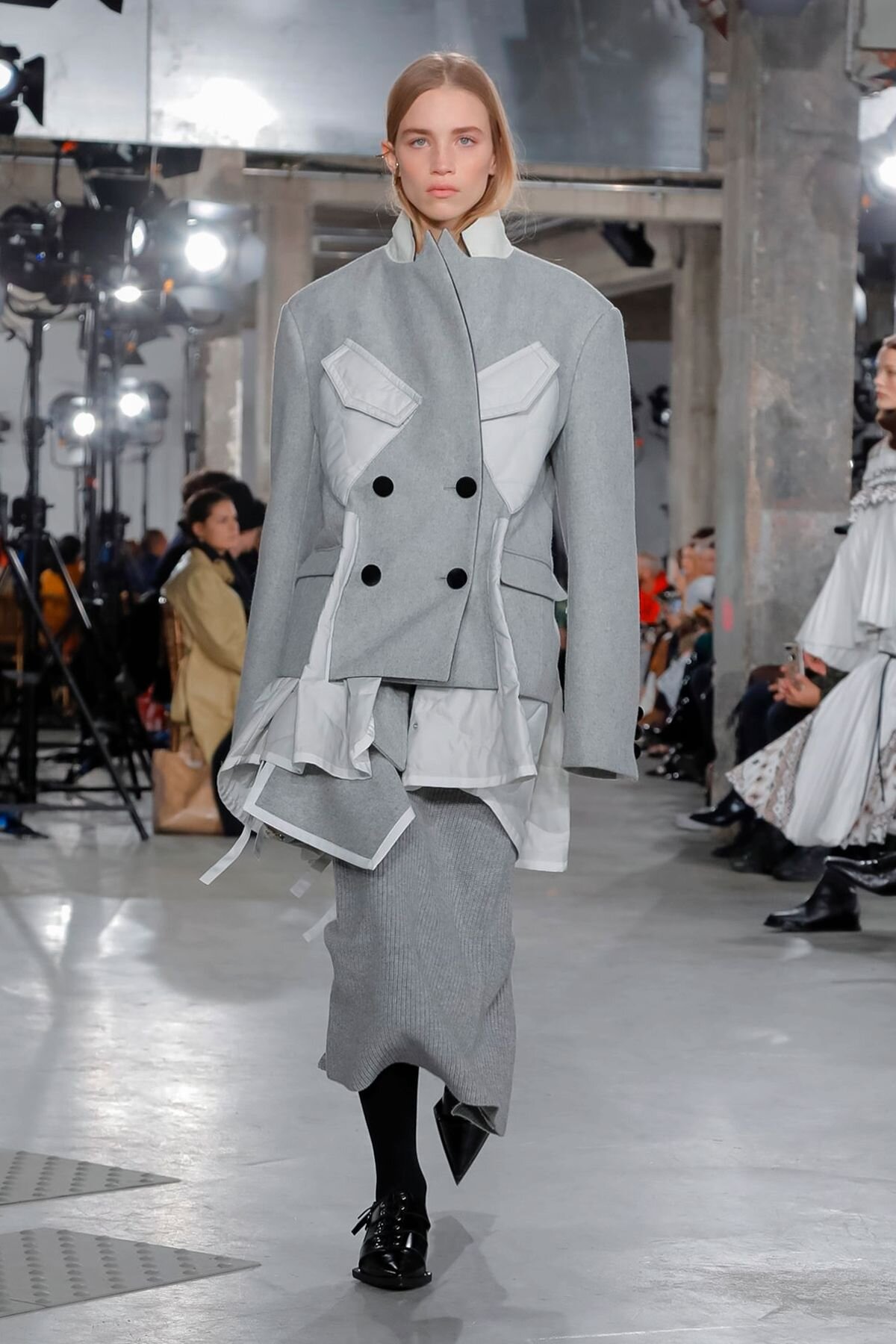
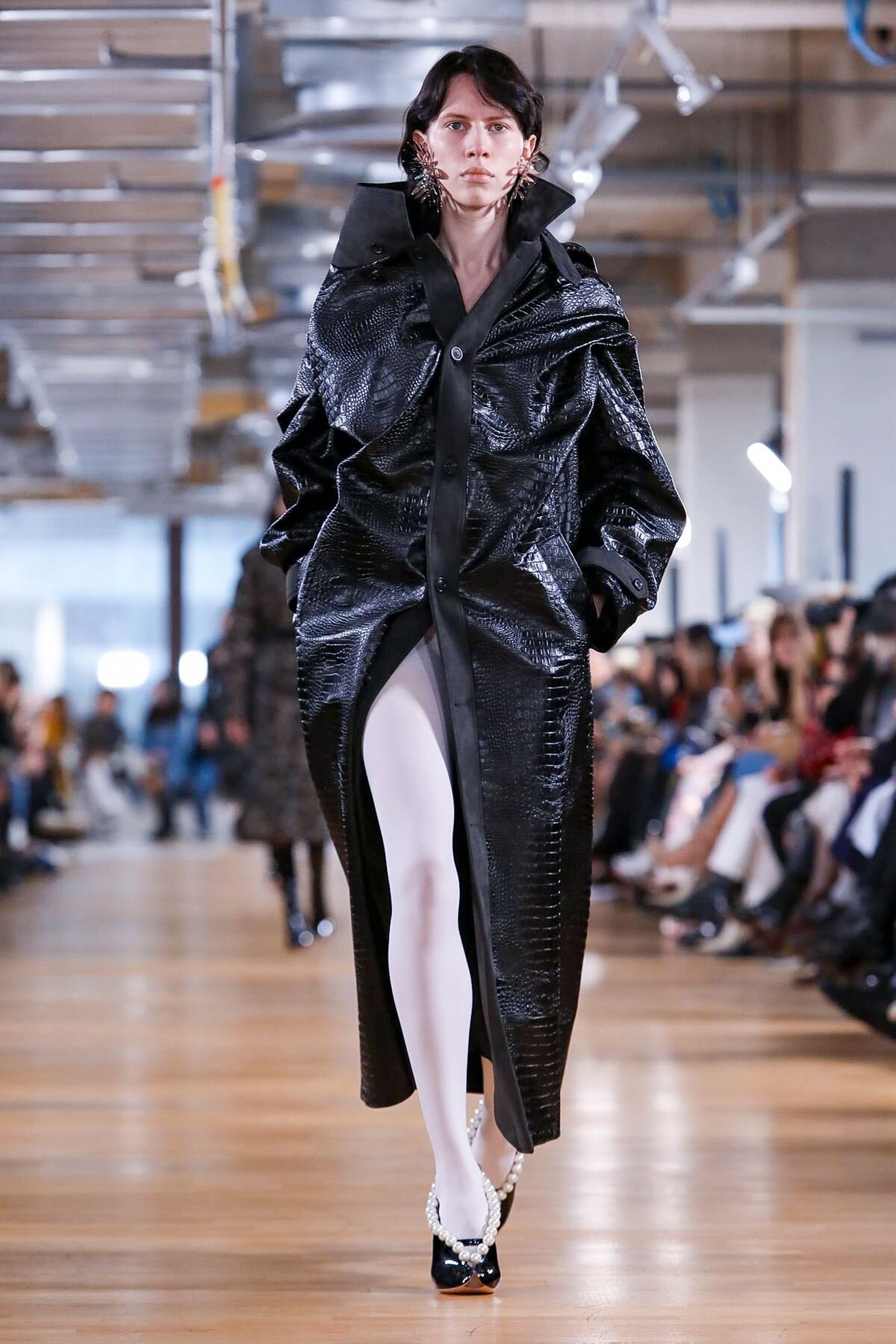
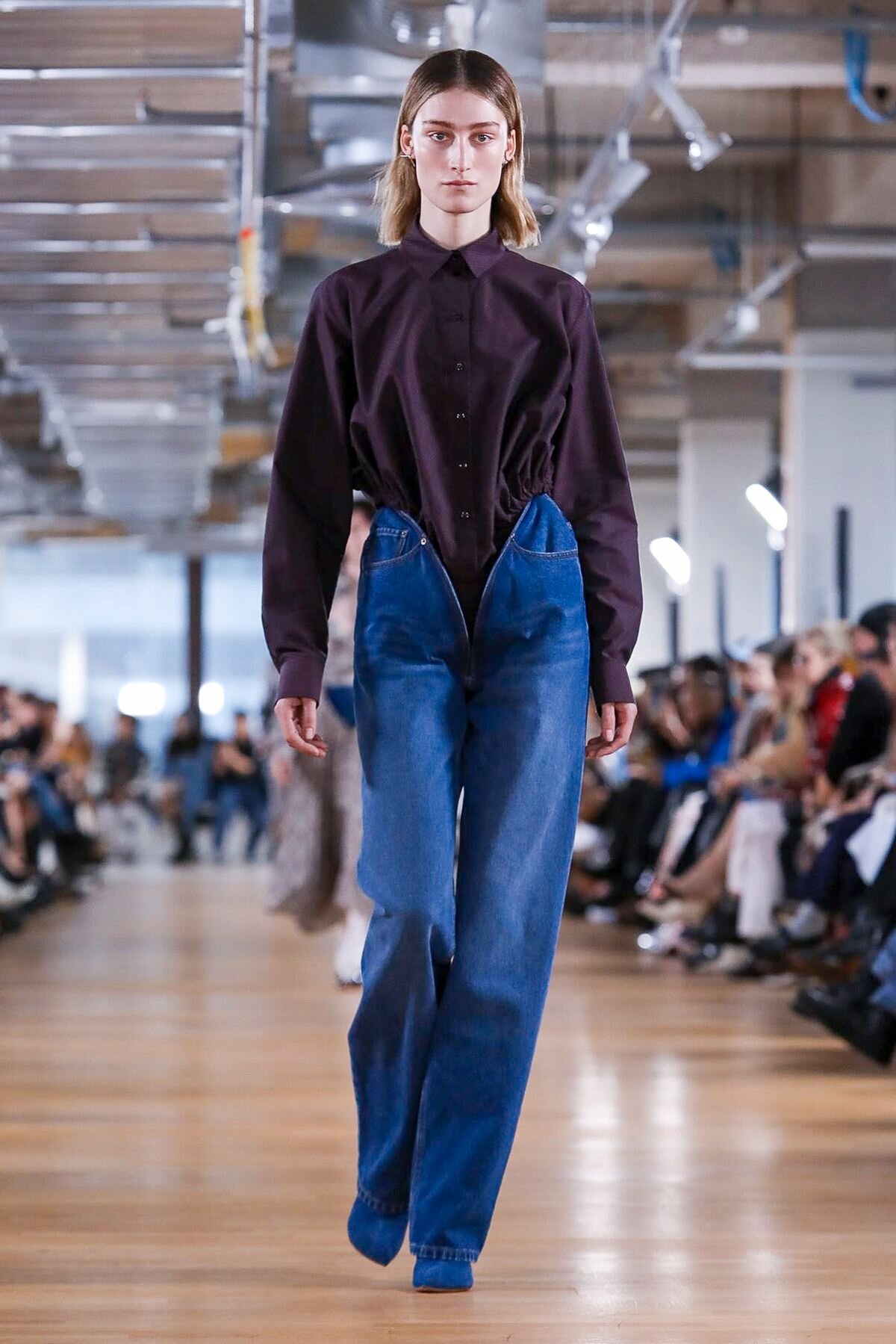
Protection was an important theme within Paris runways and Demna Gvasalia emphasized the shoulder at Balenciaga, having his models walk on water. A projection of a burning sky above them may have felt dystopian, it was nevertheless a collection full of desirable garments, perfect for facing the world outside.
Balenciaga
…
/ Words by Philippe Pourhashemi /

